

Why you should travel to Iran as an American (and what to expect)
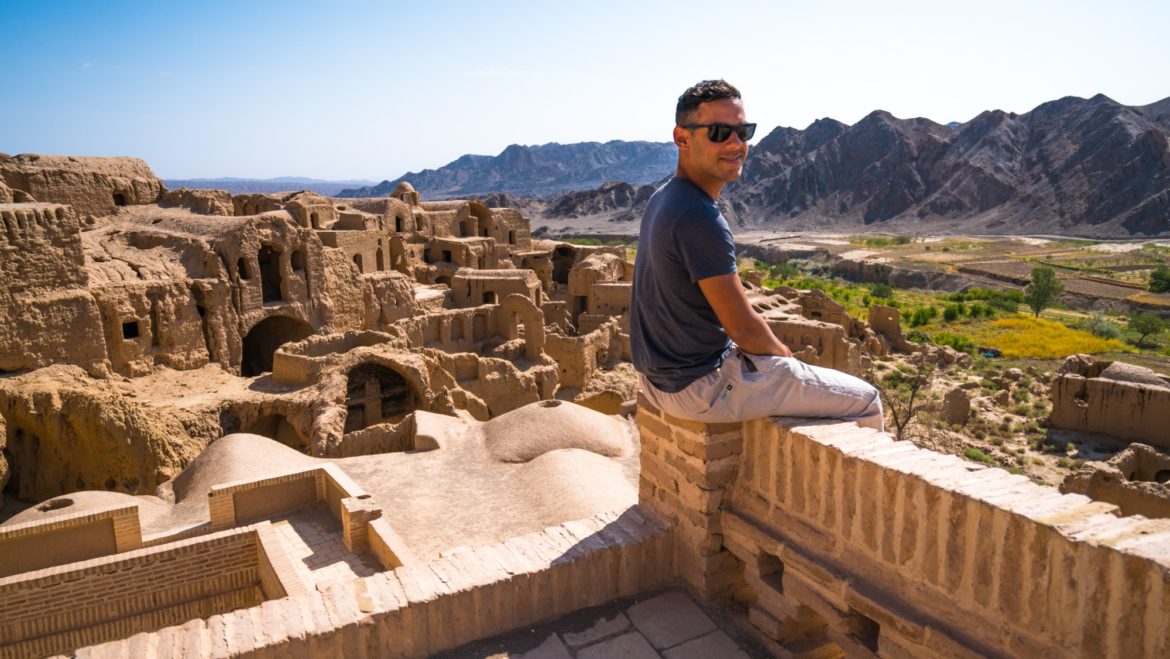
Packed with over 5,000 years of history, Iran is a destination everyone must experience at least once in their lifetime. From the ancient Persian Empire to the Zoroastrians temples, the countless mosques, and even the modern cities like Tehran, there is so much to see that one visit will not be enough.
After traveling to Iran on Intrepid Travel’s 14-day Iran Adventure trip, I shared my experience with many of my friends. Most of them replied with a similar response, “I’d love to go to Iran!”
This is a common response among travelers, yet not many actually plan a trip to the country due to misinformation, lack of information, or fear.
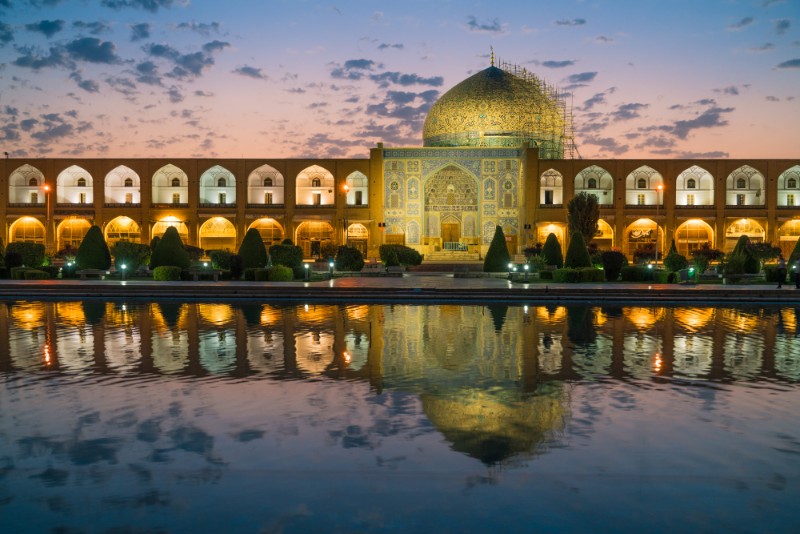
Sunrise at Naqsh-e Jahan Square, Esfahan
To encourage you to plan a trip to this wonderful destination, I’ll share with you a few reasons why you should travel to Iran as an American, debunk a few myths, and tell you what to expect there.
No, they don’t hate Americans
Contrary to what you see in the media, Iran is one of the friendliest and culturally-rich countries you’ll ever visit. And no, they do not hate Americans or any other Western nation. That’s just fear-mongering and it is far from reality.
READ MORE: 6 COMMON MISCONCEPTIONS ABOUT TRAVEL IN IRAN
When I arrived, I debated how open I wanted to be about my nationality. But as soon as I met Nadia, our Intrepid Travel guide, she put to rest any mild concerns I had about sharing openly that I’m American. No one has an issue with it.
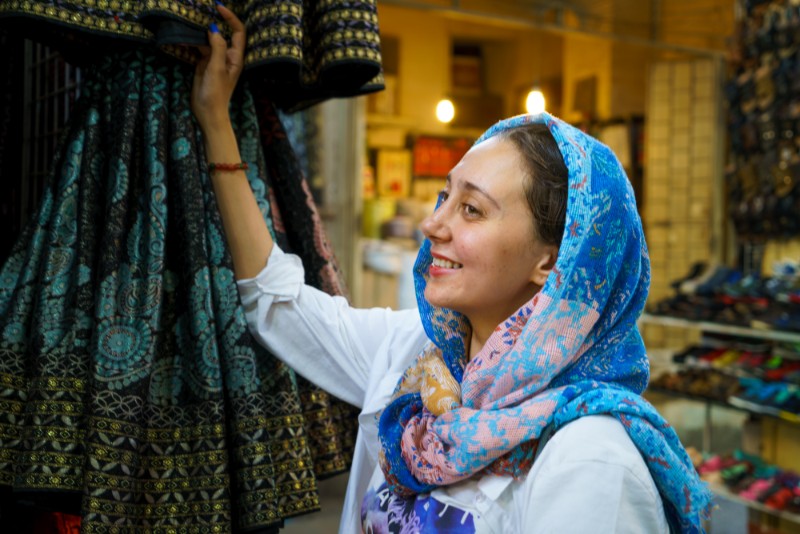
Intrepid leader, Nadia
MEET NADIA, THE INTREPID LEADER WHO WILL CHALLENGE YOUR PRECONCEIVED NOTIONS ABOUT IRAN
As we traveled the country, countless locals approached me and my other tour companions to chat with us. They were all curious to know about us, our life in our respective countries, and how we were enjoying Iran. On our part, we were just as curious to learn about them, so we fed each other’s curiosities over tea and casual chatting.
One of my favorite random encounters happened just before leaving Iran. I spent my last few hours in the country visiting the Azadi Tower, where I met a few early 20-something local guys. As soon as one of them learned I was American, he expressed with joy how much he’d love to visit the US and shared his vast knowledge of the country. In fact, he was wearing an American flag bandana.
Everywhere you go, you always feel that warm welcome Iranians are known for.
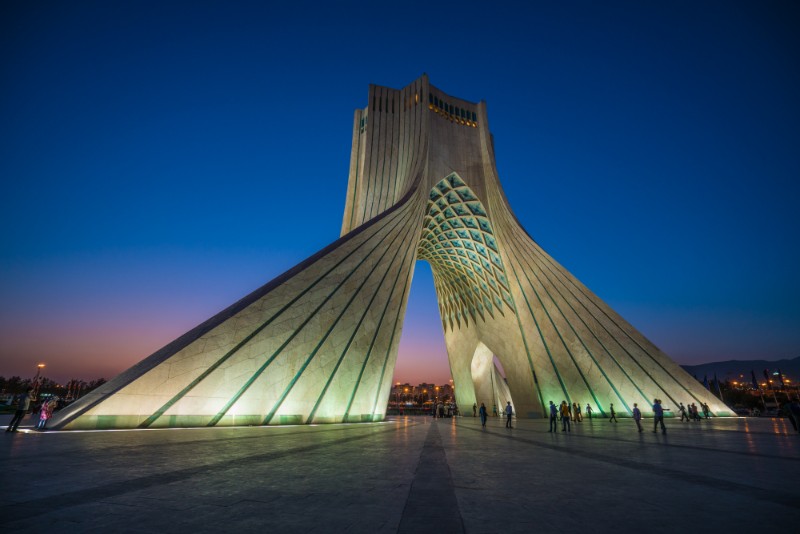
Azadi Tower in Tehran
The visa process is extensive, but worth it in the end
Yes, the visa process is more complicated than in many other countries, but it should not be a deterrent to visiting Iran. Due to the current political environment, Americans are having a tougher time to get their tourist visas approved, but still, it is possible to get them. Thankfully, Intrepid Travel helps you get your visa by guiding you every step of the way with their visa application form.
HERE’S EVERYTHING YOU NEED TO KNOW ABOUT THE VISA SITUATION
Once you get the visa, set foot in the country, and experience everything it has to offer, you’ll see that that the extra process was all worth it.
There’s so much history to be learned and experienced
As the host to one of the oldest civilizations in history, Iran has no lack of ancient ruins and historical sites. Everywhere you go, you’ll be surrounded in hundreds, if not thousands of years of history.
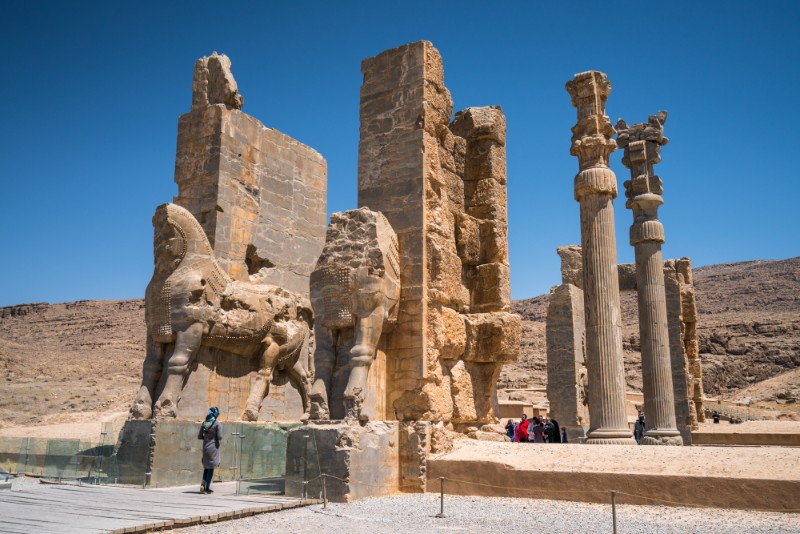
Gate of All Nations in Persepolis
From the Elamite Kingdoms, to the Persian Empire, Alexander the Great’s conquest, the Arab invasion, and even the 1979 revolution, each city you visit will show you a piece of the historical puzzle and how they played a part in the development of Iran as we know it, its neighboring countries, and even the rest of the world.
One of my favorite experiences on this trip was spending a night at the Zein-o-din Caravanserai. A caravanserai is an ancient fortress-like facility used by merchants traveling along the silk road around 450 years ago. They would spend the night there to rest, feed their camels, and trade goods before continuing their journey. Today, this one caravanserai is open for us to spend the night right where merchants used to sleep.
BROWSE INTREPID TRAVEL’S RANGE OF TRIPS TO IRAN
You’ll experience a positive culture shock
I think some of the best travel destinations are the ones that teach you something new through experiences, and Iran has no shortage of that. The level of culture shock in the country is significant, but in a positive way. You’ll see how, despite their current economic and political status, Iranians still welcome you with a smile and the warmest hospitality you could hope for.

You’ll be welcomed with an abundance of food, too!
You’ll see how women are proud of their trendy fashion, how their carpet artistry is among the finest in the world, how the nomadic culture is still alive, how their local markets are the center of activity, and how families gather at parks and squares to picnic at night until well past midnight (it can get too hot to picnic during the day).
You’ll also see how religion is deeply tied to their society and the many intricate details that make their culture unique. You’ll see all kinds of people, from the most conservative to the most liberal, and the beauty of all of them coexisting in one place.
SUBSCRIBE TO INTREPID’S NEWSLETTER FOR TRAVEL TIPS, STORIES, GIVEAWAYS & MORE
It’s good to be ambassadors of our country
As I mentioned previously, locals will talk to you and ask you about life in the US or your country. This is our opportunity to show them who we really are not only as a Western nation but also as humans. There is no better way to learn about a country than by talking firsthand with locals, the people who live and breathe their country every day. They will share with you their proudest moments, their struggles, and their desires.
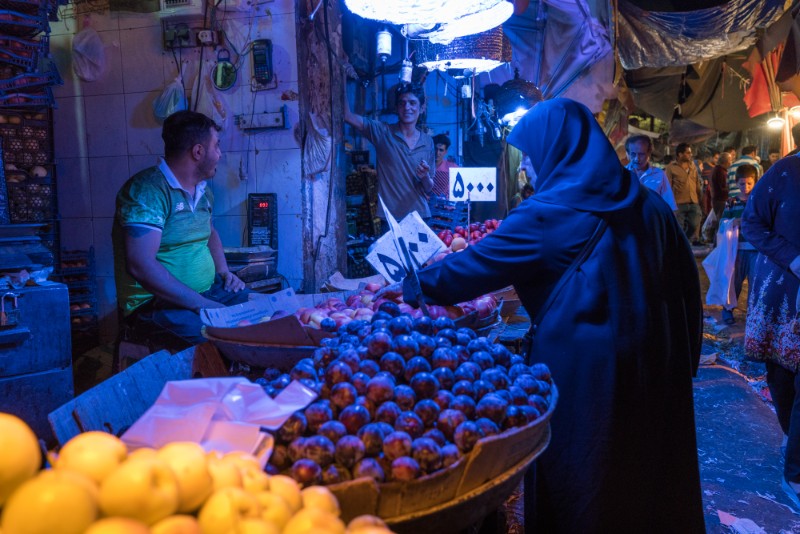
Locals in the vegetable market in Shiraz
Another fear-mongering myth is that Iran is not safe. But again, it is the opposite. Locals aren’t looking to harm, kidnap, or threaten Americans. I never felt in danger, not even when I walked on my own in the city of Esfahan past midnight.
Traveling solo is safe, but as Americans, you will be traveling on a tour (since it is required), so that’s even another safety layer.
TRAVEL STORY: “I’VE CYCLED THROUGH OVER 40 COUNTRIES; HERE’S WHY IRAN STANDS OUT”
There’s no alcohol, pork, and no American/Western chains
For good or for bad, alcohol has been banned in the country since the revolution in 1979. Pork isn’t found either, but this is more because of Islamic customs. American and Western chains are not found in the country due to economic sanctions and the complicated political relationship Iran has had with the Western world for decades now.
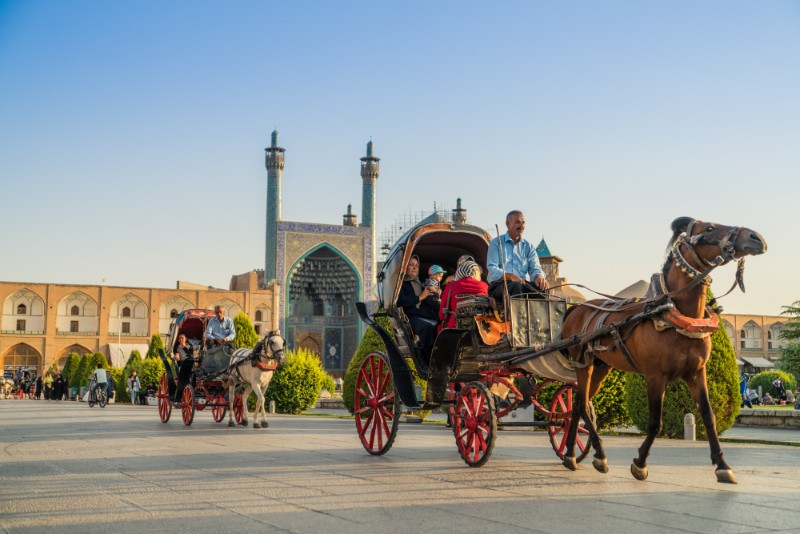
Esfahan – one of Iran’s many unique and compelling destinations
What you will find, though, are knock-off versions of popular fast foods like McFood, a different KFC, Burger Queen, and so on. It’s fun to see how they reinterpret and adopt the Western culture not only on their food but also on their fashion and entertainment too.
There is so much more to be discovered and experienced in Iran and no post will compare to the beauty of seeing it all firsthand. If you are as intrigued by the country as I was before I went there, I’ll tell you, it will impress you and possibly even surpass your expectations. At least, it surpassed mine.
Ready to visit this incredible destination for yourself? Check out Intrepid’s small group tours in Iran.
Further reading
- Travel to Iran: a 2019 visa update for US, UK and Canadian citizens
- Everything you need to know before visiting Iran
- Why you should visit Iran now, more than ever
- 5 unique experiences you shouldn’t miss in Iran
- What to wear in Iran: a packing guide
(All images courtesy of the writer, Norbert, and taken on Intrepid Travel’s Iran Adventure trip.)
Feeling inspired?

Norbert Figueroa
Norbert Figueroa is an architect from Puerto Rico who hit pause on his career in 2011 to travel the world long-term. So far he’s traveled to over 125 countries in hopes of achieving his goal of visiting all 195 UN-recognized countries. You can follow his adventures at globotreks.com and on Facebook and Instagram @globotreks.
You might also like
7 incredible hikes in denali national park, skip paris this summer and explore these 3..., the undeniable benefits of slow travel, why ninh binh and lan ha bay should..., over 20 years of the intrepid foundation: a..., everything you need to know about a night..., 5 places to escape the crowds in italy..., the 7 best places to go on a..., 10 surprising facts about ethiopia, from delhi to udaipur, here are the five..., galapagos or madagascar which unique destination should be....
- Travel Advisories |
- Contact Us |
- MyTravelGov |
Find U.S. Embassies & Consulates
Travel.state.gov, congressional liaison, special issuance agency, u.s. passports, international travel, intercountry adoption, international parental child abduction, records and authentications, popular links, travel advisories, mytravelgov, stay connected, legal resources, legal information, info for u.s. law enforcement, replace or certify documents.
Before You Go
Learn About Your Destination
While Abroad
Emergencies
Share this page:
Travel Advisory August 14, 2024
Iran - level 4: do not travel.
Reissued after periodic review with minor edits.
Do not travel to Iran due to the risk of terrorism, civil unrest, kidnapping, arbitrary arrest of U.S. citizens and wrongful detentions .
Country Summary: U.S. citizens should not travel to Iran for any reason.
Iranian authorities continue to unjustly detain and imprison U.S. nationals, particularly dual U.S.-Iranian nationals--including students, journalists, business travelers, and academics--on charges including espionage and posing a threat to national security. Iranian authorities routinely delay consular access to detained U.S. nationals and consistently deny consular access to dual U.S.-Iranian nationals.
Violent extremist groups, including U.S. government-designated terrorist organizations, operate in Iran. ISIS and affiliated groups have claimed responsibility for bombings and other attacks in Iran. The threat of terrorist activity persists, as does the risk of death or injury to bystanders.
The U.S. government does not have diplomatic or consular relations with the Islamic Republic of Iran. The U.S. government is unable to provide routine or emergency consular services to U.S. citizens in Iran.
Companies offering surrogacy services in Iran are misrepresenting the security situation in Iran and the risks of the unregulated surrogacy tourism industry. Private companies that arrange such visits and services put U.S. citizens in danger.
Due to the risks of operating civilian aircraft within or in the vicinity of Iran, the Federal Aviation Administration (FAA) has issued a Notice to Air Missions (NOTAM) and/or a Special Federal Aviation Regulation (SFAR). For more information U.S. citizens should consult the Federal Aviation Administration’s Prohibitions, Restrictions and Notices .
Read the country information page for additional information on travel to Iran.
If you are currently in Iran:
- Consider the risks involved in possessing dual U.S. Iranian nationality .
- Review your personal security plan and visit our website for Travel to High-Risk Areas .
- Draft a will and designate appropriate insurance beneficiaries and/or power of attorney.
- Discuss a plan with loved ones regarding care/custody of children, pets, property, belongings, non-liquid assets (collections, artwork, etc.), funeral wishes, etc.
- Establish your own personal security plan in coordination with your employer or host organization or consider consulting with a professional security organization.
- Leave DNA samples with your medical provider.
- Have a plan for departing Iran that does not rely on U.S. government assistance.
- Enroll in the Smart Traveler Enrollment Program (STEP) to receive Alerts and make it easier to locate you in an emergency.
- Follow the Department of State on Facebook and Twitter/X .
- Visit the CDC page for the latest Travel Health Information related to your travel.
- Prepare a contingency plan for emergency situations. Review the Traveler’s Checklist .
Embassy Messages
View Alerts and Messages Archive
Quick Facts
One page required for entry stamp
Yes, except for Kish Island
No proof of vaccination is required
Over €10,000
Over €5,000
Embassies and Consulates
Embassy of Switzerland – Foreign Interests Section
Pasdaran, Shahid Mousavi St. (Golestan 5 th) Corner of Paydarfard St., No. 55, Pasdaran Avenue Tehran, Iran Telephone: (98) (21) 2254-2178 and (98) (21) 2256-5273 Emergency Telephone: (41) (58) 465-3333 Fax: (98) (21) 2258-0432 Email: [email protected] Website: www.eda.admin.ch/tehranfi Virtual Embassy Tehran
All consular services require prior appointments which can be made by phone. The Foreign Interests Section can be reached by phone Sunday through Thursday between 7:45 a.m. and 3:00 p.m.
The Foreign Interests Section does not issue U.S. visas or accept visa applications. The Foreign Interests Section provides limited consular services to U.S. citizens in Tehran including:
- Registering U.S. citizens;
- Responding to inquiries concerning the welfare and whereabouts of U.S. citizens in Iran;
- Rendering assistance in times of distress or physical danger;
- Providing U.S. citizens with passport and Social Security card applications and other citizenship forms for processing at the U.S. Embassy in Bern, Switzerland;
- Performing notarial services;
- Taking provisional custody of the personal effects of deceased U.S. citizens; and
- Providing Social Security Administration assistance to retired U.S. citizens residing in Iran.
Destination Description
See the Department of State’s Fact Sheet on Iran for information on U.S.-Iran relations.
Entry, Exit and Visa Requirements
Before traveling to Iran, please consider the current Travel Advisory .
The Travel Advisory for Iran is Level 4, Do Not Travel. The Department of State recommends U.S. citizens do not travel to Iran due to the risk of terrorism, civil unrest, kidnapping and the arbitrary arrest of U.S. citizens. Exercise increased caution due to wrongful detentions.
Iranian authorities continue to wrongfully detain and imprison U.S. citizens, particularly U.S.-Iranian dual nationals, on charges including espionage and posing a threat to national security. Iranian authorities have also prevented the departure of U.S. citizens from Iran. U.S. citizens of Iranian origin should consider the risk of being targeted by authorities before planning travel to Iran. Iranian authorities routinely deny dual nationals access to the Foreign Interests Section of the Embassy of Switzerland in Tehran because they consider dual nationals to be solely Iranian citizens.
U.S. passports are valid for travel to Iran. However, U.S.-Iranian dual nationals must enter and exit Iran on Iranian passports. As indicated above, the Iranian government does not recognize dual nationality and will treat U.S.-Iranian dual nationals solely as Iranian citizens. Iranian authorities may consider some U.S. citizens – even those without Iranian passports who do not consider themselves to be Iranian – to be Iranian nationals.
U.S. government employees, including contractors, are strictly prohibited from traveling to Iran without prior authorization from the Department of State.
U.S.-Iranian dual nationals should obtain, in their Iranian passports, the necessary visas for the countries they will transit on their return trip to the United States so that if the U.S. passports are confiscated in Iran, they may depart Iran with their Iranian passports. These individuals can then apply for new U.S. passports in the country they are transiting.
U.S. citizens residing in Iran on permanent resident visas must obtain an exit permit each time they depart Iran, regardless of the period of stay. All Iranian passport holders are required to pay an exit tax. More specific information on Iranian passport and exit permit requirements may be obtained from the Iranian Interests Section of the Embassy of Pakistan in Washington, D.C.
The Iranian civil code states that women who marry Iranian men acquire Iranian nationality. If the marriage takes place in Iran, the woman’s U.S. passport may be confiscated by Iranian authorities. A woman must have the consent of her husband to leave Iran or, in his absence, consent from another suitable authority. The Foreign Interests Section of the Embassy of Switzerland in Tehran can provide only limited assistance if a U.S. citizen woman married to an Iranian man encounters difficulty in leaving Iran. In addition, if marriage to an Iranian citizen is not officially recognized by the Iranian government, the couple will be committing the crime of adultery if they travel together, the maximum penalty for which is death.
Please contact the Swiss Embassy or appropriate Iranian authorities for special circumstances cases involving divorce and custody rights in Iran.
The U.S. Department of State is unaware of any HIV/AIDS entry restrictions for visitors to Iran. If you intend to reside in Iran, you must submit to a blood test, which may include an HIV test, in order to apply for a residency permit. Permits will be refused if the HIV test is positive.
Find information on dual nationality , prevention of international child abduction , and customs regulations on our websites.
Safety and Security
As noted in the Travel Advisory for Iran, U.S. citizens visiting or residing in Iran face a significant threat of kidnapping or arrest and detention on spurious charges.
U.S. citizens who travel to Iran despite the Travel Advisory should exercise caution throughout the country, but especially in the southeastern region where foreigners have been victims of criminal gangs. U.S. citizens should avoid travel to areas within 100 kilometers of the border with Afghanistan, near the Iraq border, and generally anywhere east of the line from Bam and Bandar Abbas toward the Pakistani border.
Terrorism: In Iran, there is potential for death or injury because of terrorist attacks. Violent extremist groups, including U.S. government-designated terrorist organizations, operate in Iran. ISIS and affiliated groups have claimed responsibility for bombings and other attacks in Iran. The threat of terrorist activity persists, as does the risk of death or injury to bystanders. Additionally, Iran is a designated state-sponsor of terrorism.
For more information, see our Terrorism page.
Crime: Foreigners occasionally become victims of petty street crime, including robberies and bag-snatchings, in Iran. There have been reports of robberies by police impersonators, usually in civilian clothing. Insist on seeing the officer’s identity card and request the presence of a uniformed officer/marked patrol car. Travelers should take the following precautions:
- Do not surrender any documents or cash;
- Make a copy of your U.S. passport (biographical data page and the page with your Iranian visa) and keep it separate from your original passport;
- Do not carry large amounts of hard currency while on the streets;
- Keep important documents such as passports and valuables in hotel safes or other secure locations;
- Take pre-booked taxis, which are safer than those hailed from the street;
- Check with your hotel or tour guide for information on local scams; and
- Do not buy counterfeit or pirated goods, even if they are widely available. Not only are the bootlegs illegal in the United States, purchasing them may also violate local law.
Demonstrations occur sporadically. They may take place in response to political or economic issues, on politically significant holidays, and during international events. Past demonstrations have turned violent.
- As demonstrations can be unpredictable, avoid areas around protests and demonstrations.
- Check local media for updates and traffic advisories.
Iranian security personnel may at times place foreign visitors under surveillance. Hotel rooms, telephones, computers, fax machines, and other electronics may be monitored, and personal possessions in hotel rooms may be searched. The Iranian authorities may also confiscate cell phones, computers, and other devices. U.S. citizens should consider not taking electronic devices to Iran or deleting personal information from them beforehand.
Disaster Preparedness: Iran is prone to earthquakes, many of them severe. To learn more about the seismic regions of Iran, including the most recent earthquakes, please visit the U.S. Geological Survey website .
International Financial Scams: See the Department of State and the FBI pages for information.
Victims of Crime:
Report crimes to the local police by dialing 110 and contact the Embassy of Switzerland’s Foreign Interests Section at (98) (21) 2254-2178. Remember that local authorities are responsible for investigating and prosecuting the crime.
The local equivalent to the “911” emergency line in Iran is: 115 for ambulance service, 125 for fire, and 110 for police. English speakers, however, are generally unavailable.
See our webpage on help for U.S. victims of crime overseas .
The Department of State, through the Embassy of Switzerland’s Foreign Interests Section, can:
- Replace a stolen or lost passport;
- Help you find appropriate medical care;
- Assist you in reporting a crime to the police;
- Contact relatives or friends with your written consent;
- Explain the local criminal justice process in general terms;
- Provide a list of local attorneys;
- Provide our information on victim’s compensation programs in the United States; and
- Provide an emergency loan for repatriation to the United States.
Domestic Violence: U.S. citizen victims of domestic violence are encouraged to contact the Embassy of Switzerland’s Foreign Interests Section for assistance. U.S. citizens should note that the Foreign Interests Section may be able to provide limited assistance only and that Iranian law does not prohibit domestic violence.
Tourism: The tourism industry is unevenly regulated, and safety inspections for equipment and facilities do not commonly occur. Hazardous areas/activities are not always identified with appropriate signage, and staff may not be trained or certified either by the host government or by recognized authorities in the field. In the event of an injury, appropriate medical treatment is typically available only in/near major cities. First responders are generally unable to access areas outside of major cities and to provide urgent medical treatment. U.S. citizens are encouraged to purchase medical evacuation insurance. See our webpage for more information on insurance providers for overseas coverage .
Local Laws & Special Circumstances
Criminal Penalties: You are subject to local laws. If you violate local laws, even unknowingly, you may be expelled, arrested, or imprisoned. Long prison terms and solitary confinement are common as are punishments including execution, amputation, flogging, blinding, stoning, and fines. Individuals establishing a business or practicing a profession that requires additional permits or licensing should seek information from the competent local authorities, prior to practicing or operating a business.
Examples of local laws that you may be unfamiliar with include:
- Former Muslims who have converted to other religions, as well as persons who encourage Muslims to convert, are subject to arrest and possible execution;
- Drinking, possession of alcoholic beverages, and drugs are illegal. Penalties for possession, use, or trafficking in illegal drugs in Iran are severe and convicted offenders can expect long jail sentences and heavy fines. Iran executes many people each year on drug-related charges. Penalties for the possession, use, or smuggling of alcoholic beverages may include fines, jail time, or flogging;
- Men and women must adhere to the government-sanctioned dress code; this includes covered hair, arms, and legs for women. The government considers the failure to adhere to its dress code and public displays of affection to be crimes;
- Relations between non-Muslim men and Muslim women are illegal, as are adultery and sex outside of marriage, which are punishable by the death penalty;
- Data storage devices (e.g. DVDs, SD cards) depicting sexual relations and magazines showing unveiled women are forbidden;
- Photography near military and other government installations is strictly prohibited and could result in serious criminal charges, including espionage, which carries the death penalty;
- Importation of pork products is banned; and
- Insulting the government or Muslim faith is strictly forbidden, including on social media. Such violations of Iranian law may result in imprisonment.
Carry a copy of your U.S. passport (biodata page and page with Iranian visa) and some other form of identification with you at all times so that, if questioned by local officials, proof of U.S. citizenship is readily available.
If you are arrested while in Iran, request that the police and prison officials notify the Foreign Interests Section at the Embassy of Switzerland in Tehran immediately to ensure that the United States is aware of your circumstances. Under Iranian law, detainees may also request legal representation, although the authorities sometimes fail to allow timely access to attorneys.
Furthermore, some laws are also prosecutable in the United States, regardless of local law. For examples, see our website on crimes against minors abroad and the Department of Justice website.
Iran-U.S. Claims Tribunal: The Iranian government reportedly has the names of all individuals who filed claims against Iran at the Iran-U.S. Claims Tribunal at The Hague pursuant to the 1981 Algerian Accords. In addition, the Iranian government reportedly has compiled a list of the claimants who were awarded compensation in the Iran Claims Program administered by the Foreign Claims Settlement Commission. The Iranian government has allegedly been targeting award-holders who travel to Iran. Some former claimants have reported being questioned by Iranian authorities upon their entry into Iran as to the status of payment of their respective awards with a view to recouping the award money. The Iranian government has also reportedly threatened to prevent U.S. claimants who visit Iran from departing the country until they repay their award.
Dual Nationality: U.S. citizens who also possess Iranian citizenship are subject to laws that impose special obligations on citizens of Iran, such as military service or taxes. Iranian-citizen males aged 18-34 are required to perform military service, unless exempt. Young men who have turned 17 years of age will not be allowed to leave Iran without completing their military service.
Money: Non-Iranian credit cards and bank cards cannot be used in Iran. You will not be able to access U.S. or foreign bank accounts using ATMs in Iran. You can exchange U.S. dollars for rials, either at banks or with certified money changers. There is no Western Union or similar institution, and bank transfers are not possible. Due to economic sanctions on Iran, U.S. financial institutions have been known to block or freeze accounts accessed via the Internet from Iran.
Communication: Pre-paid overseas calling cards are available at most newsagents. The Internet is widely used in Iran. There are Internet cafes in most hotels; however, usage may be monitored. The Iranian government blocks access to many social media sites.
Sanctions: U.S. government economic sanctions prohibit most economic activity between U.S. citizens and Iran. The U.S. Department of Treasury’s Office of Foreign Assets Control (OFAC) has posted to its website frequently asked questions (FAQs) that provide guidance on U.S. sanctions related to Iran. For further information, consult OFAC’s Iran sanctions resource page or contact OFAC’s Compliance Programs Division at 202-622-2490 or obtain information via fax at 202-622-0077.
For information concerning licensing of imports or exports, contact OFAC’s Licensing Division at by phone at 202-622-2480 or fax at 202-622-1657.
Faith-Based Travelers: Freedom of religion, belief, or non-belief is not protected in Iran. See the following webpages for details:
- Faith-Based Travel Information
- International Religious Freedom Report – see country reports
- Human Rights Report – see country reports
- Hajj Fact Sheet for Travelers
- Best Practices for Volunteering Abroad
LGBTQI+ Travelers: Same-sex relationships in Iran are criminalized and are punishable by death, flogging, or a lesser punishment. LGBTQI+ individuals are often subject to violence and the law does not prohibit discrimination based on sexual orientation, gender identity or expression, or sex characteristics or recognize LGBTQI+ individuals, couples, or families.
See our LGBTQI+ Travel Information page and section 6 of our Human Rights report for further details.
Travelers with Disabilities: The law in Iran prohibits discrimination against persons with physical, sensory, intellectual or mental disabilities, and the law is enforced. Social acceptance of persons with disabilities in public is not as prevalent as in the United States. The most common types of accessibility may include accessible facilities and access to services. Expect accessibility to be limited in public transportation, lodging, communication/information, and general infrastructure.
Students: See our Students Abroad page and FBI travel tips .
Women Travelers: See our travel tips for Women Travelers .
Women in Iran lack certain basic rights such as the freedom to choose their style of dress and restrictions on freedoms of expression and assembly. Gender-based violence is more common in Iran than the U.S., especially in rural areas, and reports of this violence in recent years have steadily increased. “Honor killings” or other harmful practices involving mostly women killed by their male relatives in the name of preserving the family’s “honor” are known to occur. There are also reports of fathers or relatives forcing their female family members to enter a marriage against their will. Domestic violence remains a taboo subject in Iran, and Iranian law does not prohibit domestic violence. Hijab enforcement in Iran is becoming stricter. The Government has deployed Hijab enforcers in public to ensure compliance. Hijab defiance has led to assault, arrest and even death.
For emergency services in Iran, dial 115.
Ambulance services are
- Widely available but training and availability of emergency responders may be below U.S. standards;
- Not equipped with state-of-the-art medical equipment; and
- Injured or seriously ill travelers may prefer to take a taxi or private vehicle to the nearest major hospital rather than wait for an ambulance.
We do not pay medical bills. Be aware that U.S. Medicare does not apply overseas. Most hospitals and doctors overseas do not accept U.S. health insurance.
Medical Insurance: Make sure your health insurance plan provides coverage overseas. Most care providers overseas only accept cash payments. See our webpage for more information on insurance providers for overseas coverage . Visit the U.S. Centers for Disease Control and Prevention for more information on type of insurance you should consider before you travel overseas.
We strongly recommend supplemental insurance to cover medical evacuation.
Always carry your prescription medication in original packaging, along with your doctor’s prescription. Check with the Ministry of Health to ensure the medication is legal in Iran.
Basic medical care and medicine are available in the principal cities but may not be available in rural areas in Iran. Medical facilities do not meet U.S. standards and sometimes lack medicine and supplies.
Vaccinations: Be up-to-date on all vaccinations recommended by the U.S. Centers for Disease Control and Prevention.
Further health information:
- World Health Organization
- U.S. Centers for Disease Control and Prevention (CDC)
Assisted Reproductive Technology and Surrogacy
- Companies offering surrogacy services, an unregulated industry, are misrepresenting the security situation in Iran. Private companies that arrange such visits and services put U.S. citizens at risk.
- If you are considering traveling to Iran to have a child through use of assisted reproductive technology (ART) or surrogacy, please see our ART and Surrogacy Abroad webpage . Carefully consider the length of time needed to obtain a newborn’s required civil documents to avoid any unintended overstay of your visa.
Air Quality
- Air pollution is a significant problem in several major cities in Iran particularly in Ahvaz, Tehran, and Zabol. Consider the impact seasonal smog and heavy particulate pollution may have on you and consult your doctor before traveling if necessary.
- Infants, children, and teens;
- People over 65 years of age;
- People with lung disease such as asthma and chronic obstructive pulmonary disease (COPD), which includes chronic bronchitis and emphysema;
- People with heart disease or diabetes; and
- People who work or are active outdoors.
Water Scarcity: Iran has a water scarcity issue throughout the country, largely impacting rural communities. Iran is prone to significant droughts in the hot summer months. In cities outside of Tehran, water may be harder to obtain given the availability in those regions and larger water reserves servicing the capital. Tap water in Iran is relatively safe, however it is recommended to consume bottled water, which is regularly available.
Travel and Transportation
Road Conditions and Safety: While in Iran, you may encounter road conditions that differ significantly from those in the United States. Travelers in possession of International Driver’s Permits may drive in Iran, though the Foreign Interests Section in Iran does not recommend that tourists do so. Iran has a very high rate of traffic accidents, the second highest cause of mortality in the country. Drivers throughout Iran tend to ignore traffic lights, traffic signs, and lane markers. Urban streets are not well lit; it is therefore particularly dangerous to drive at night. Sidewalks in urban areas exist only on main roads and are usually obstructed by parked cars. In residential areas, few sidewalks exist. Drivers almost never yield to pedestrians at crosswalks. If you are involved in an accident, no matter how minor, do not leave the scene; wait until the police arrive to file a report.
Traffic Laws: Iranian authorities sometimes set up informal roadblocks, both in cities and on highways, often manned by young, inexperienced officers who are suspicious of foreigners. Carry identification with you and avoid getting into disputes.
See our Road Safety page for more information.
Aviation Safety Oversight: As there is no direct commercial air service to the United States by carriers registered in Iran, the U.S. Federal Aviation Administration (FAA) has not assessed the government of Iran’s Civil Aviation Authority for compliance with International Civil Aviation Organization (ICAO) aviation safety standards. Further information may be found on the FAA’s safety assessment page .
Maritime Travel: Mariners planning travel to Iran should check for U.S. maritime advisories and alerts . Information may also be posted to the U.S. Coast Guard homeport website, and the NGA broadcast warnings website.
Port Security: The Commandant of the Coast Guard has determined that effective anti-terrorism measures are not in place in Iranian ports and has imposed conditions of entry on vessels that arrive in U.S. ports having visited ports in Iran. Mariners and passengers traveling through the ports of Iran should exercise increased caution.
For additional travel information
- Enroll in the Smart Traveler Enrollment Program (STEP) to receive security messages and make it easier to locate you in an emergency.
- Call us in Washington, D.C. at 1-888-407-4747 (toll-free in the United States and Canada) or 1-202-501-4444 (from all other countries) from 8:00 a.m. to 8:00 p.m., Eastern Standard Time, Monday through Friday (except U.S. federal holidays).
- See the State Department’s travel website for the Worldwide Caution and Travel Advisories .
- Follow us on X (formerly known as "Twitter") and Facebook .
- See traveling safely abroad for useful travel tips.
Review information about International Parental Child Abduction in Iran . For additional IPCA-related information, please see the International Child Abduction Prevention and Return Act ( ICAPRA ) report.
Travel Advisory Levels
Assistance for u.s. citizens, learn about your destination, enroll in step.

Subscribe to get up-to-date safety and security information and help us reach you in an emergency abroad.
Recommended Web Browsers: Microsoft Edge or Google Chrome.
Make two copies of all of your travel documents in case of emergency, and leave one with a trusted friend or relative.
Afghanistan
Antigua and Barbuda
Bonaire, Sint Eustatius, and Saba
Bosnia and Herzegovina
British Virgin Islands
Burkina Faso
Burma (Myanmar)
Cayman Islands
Central African Republic
Cote d Ivoire
Czech Republic
Democratic Republic of the Congo
Dominican Republic
El Salvador
Equatorial Guinea
Eswatini (Swaziland)
Falkland Islands
France (includes Monaco)
French Guiana
French Polynesia
French West Indies
Guadeloupe, Martinique, Saint Martin, and Saint Barthélemy (French West Indies)
Guinea-Bissau
Isle of Man
Israel, The West Bank and Gaza
Liechtenstein
Marshall Islands
Netherlands
New Caledonia
New Zealand
North Korea (Democratic People's Republic of Korea)
Papua New Guinea
Philippines
Republic of North Macedonia
Republic of the Congo
Saint Kitts and Nevis
Saint Lucia
Saint Vincent and the Grenadines
Sao Tome and Principe
Saudi Arabia
Sierra Leone
Sint Maarten
Solomon Islands
South Africa
South Korea
South Sudan
Switzerland
The Bahamas
Timor-Leste
Trinidad and Tobago
Turkmenistan
Turks and Caicos Islands
United Arab Emirates
United Kingdom
Vatican City (Holy See)
External Link
You are about to leave travel.state.gov for an external website that is not maintained by the U.S. Department of State.
Links to external websites are provided as a convenience and should not be construed as an endorsement by the U.S. Department of State of the views or products contained therein. If you wish to remain on travel.state.gov, click the "cancel" message.
You are about to visit:

25 Things to Know Before You Visit Iran
- Last Updated: February 6, 2024
We’ve been all around the world, spent a lot of time in a lot of different countries, and if there’s one thing we can honestly tell you it’s that we’ve never felt as welcomed, fascinated and humbled as we did when we visited Iran.
Iran is such an incredible country to travel. The architecture will amaze you, the friendliness of the people will leave you speechless, the culture is fascinating and the landscapes are out of this world.
Iran is also very misunderstood, with many people believing whatever propaganda they hear on the media about how dangerous or difficult it is to travel there.
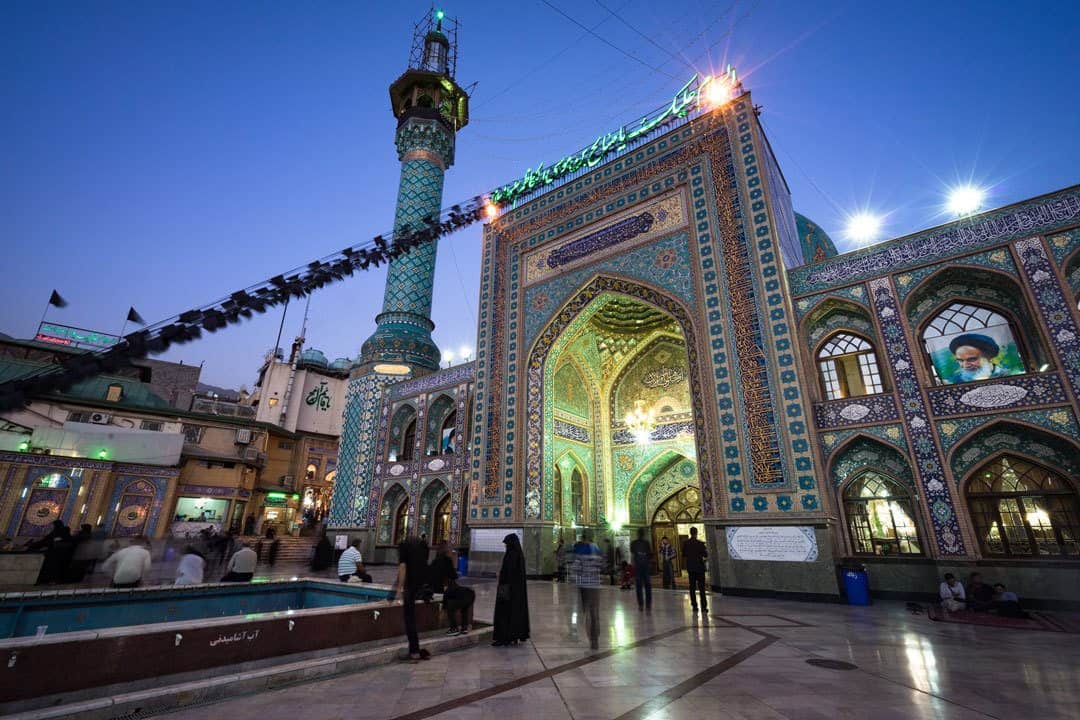
Table of Contents
Iran is Safe!
There’s a lot of customs to follow, you need a visa for iran, have a head scarf in your carry-on luggage before arrival, bring a phrase book or have google translate on your phone, bring a lot of cash, the currency has two names, bring comfortable footwear, research the food and don’t just eat kebabs, bring a backpack rather than a suitcase, draw up an itinerary, but keep it flexible, let your guard down and talk to locals, always ask the price before buying, book domestic flights with your accommodation or travel agent, team up with other travellers and share tours, be on time for your appointments, the traffic is horrible, you need a vpn to access some social media platforms, there is wifi, but be patient with it, pick up a local sim card, iran has its own uber called snapp, you can drink the tap water, good coffee is hard to find, there’s a female-only carriage on the metros, what to know before you visit iran.
The truth is travelling in Iran definitely has its quirks, and being an Islamic country means there’s a few things you need to know about the religion and culture before you go so you can show absolute respect.
Luckily these are easy enough to know before you go if you do a bit of research. We spent one month travelling around Iran and learnt so much during our time there.
To help put your mind at ease about travelling in this incredible country, here’s our list of the most important things to know before you visit Iran.
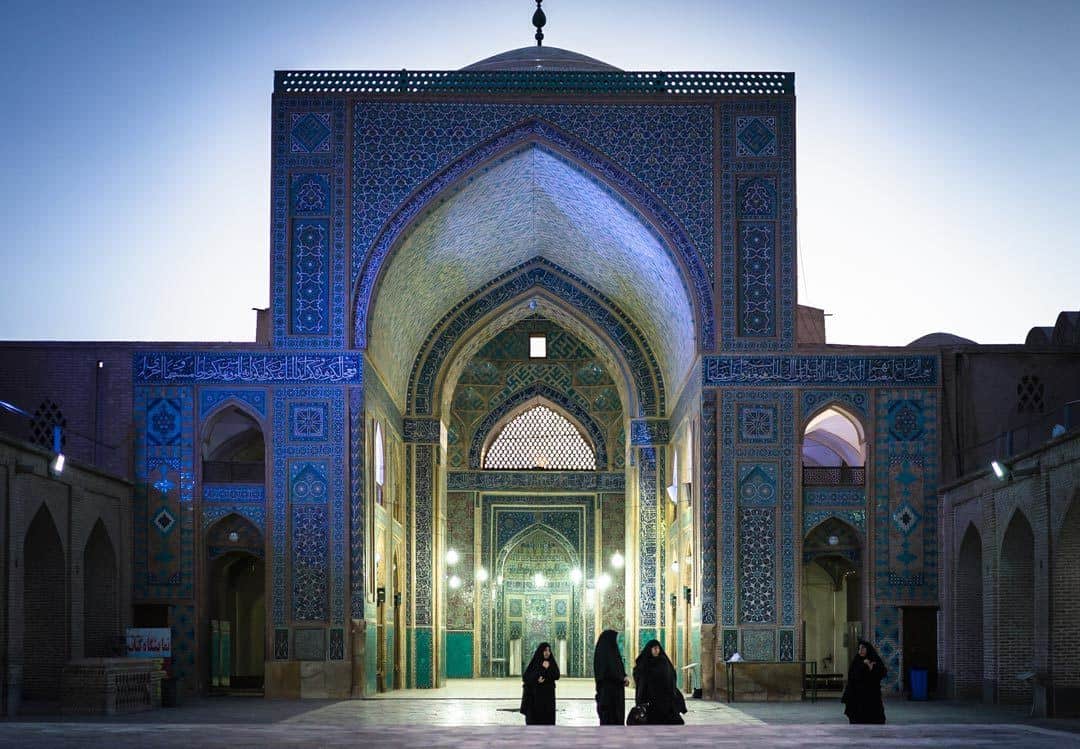
All of the mainstream media outlets portray Iran as an unsafe country, somewhere that you’ll be at risk if you visit.
The mainstream media is wrong.
We did not feel unsafe once through the whole 4 weeks of us backpacking independently in Iran.
We weren’t with a tour group, had no tour guides, don’t speak the local language, took public transport and taxis, wandered the streets on our own – basically everything you shouldn’t do if you’re in a dangerous country.
And guess what? Nothing bad happened to us at all!
The Iranian people are so friendly and helpful. They want you to have a great time and tell your friends so more people will come and visit.
We were walking around one morning on a quiet street when a car passed us and turned around. A group of young people stopped the car, came up to us, and asked if we were ok or if we needed help.
Once we told them we were just looking for a coffee they pulled out their phones and started showing us where the cafes were on a map.
They even offered us a ride, and said if the cafes were closed they had coffee at their home and would love to make us some.
This is just one example of dozens of interactions that happened to us when we were in Iran. Iranians love that tourists are coming to their country and travelling around.
The locals know what the media says about them and what a lot of the world thinks of their country, and the people just want to show that they are nice, generous people.
Theft against tourists is very rare and even the Religion Police (secret police) tend to leave tourists alone.
Just be careful around the bazaars and crowed places for pickpocketing. We didn’t have any issue and didn’t hear of any other travellers having problems, but this is common sense in any busy place in the world.
With all that being said, there is a large military and police presence in Iran. Do not photograph any military areas or government buildings, and stay away from any protests if you see them.
Obviously there are some areas of Iran that are no-go zones, such as the borders of Afghanistan, Pakistan and Iraq, so do your research and talk to locals if you’re thinking about going anywhere near them.
When you travel somewhere you want to take in everything about the country and its people, and that includes the culture and customs.
Iran has quite a few local customs that may take some getting used to, so it’s important to learn about them before you go so you don’t accidentally offend or disrespect anyone.
Some of the most common ones that throw tourists off are:
- Women must wear hijabs (headscarves) at all times in public. They must also wear loose-fitting clothes that don’t show their figure.
- Giving a thumbs-up sign is considered rude, similar to giving the middle finger in Western society.
- Men can wear short-sleeved shirts, but long pants must be worn at all times.
- Men and women who aren’t related shouldn’t touch either. That means no shaking hands or hugging someone of the opposite sex.
- If you are travelling with your significant other, avoid any public displays of affection.
- Always bring a gift if you are invited to someone’s house. Candy, pastries or flowers are fine.
Now we want to give a special mention to ta’arof – This is a hospitality trait where it’s customary for someone to refuse payment for a service, and is probably the most confusing thing for any tourist to get their head around.
Basically what happens is if you make a purchase (a souvenir, taxi ride, etc), the person may refuse your payment out of politeness. It is then up to you to insist despite their refusals that you want to pay. After two or three times they’ll then accept your money.
If they still keep refusing then perhaps you have just experienced some amazing Iranian hospitality! But chances are they’ll accept the payment once the process has been completed. Don’t worry, you’ll get the hang of it.
The locals are so lovely, that if you do something wrong someone will approach you and nicely let you know. For example, if you are a lady and your headscarf falls off without you knowing, a local will kindly let you know.
Don’t stress about getting your outfits beforehand as shopping in Iran is cheap. Just bring one headscarf and set of loose-fitting clothes, and buy more once you get there.
The culture is the best thing about visiting Iran, and after a few days, you’ll start to understand and fall in love with it just like we did.
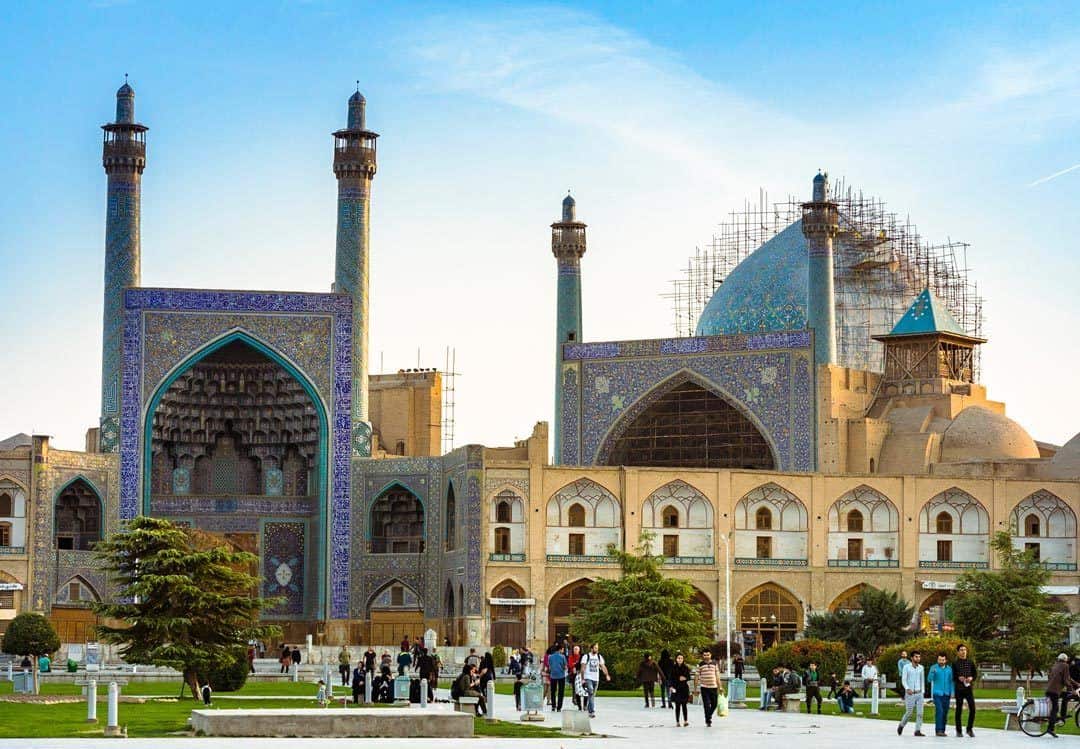
In order to visit Iran, you’re going to need to get a tourist visa. This used to be a very difficult process, but luckily things have gotten easier with the introduction of visa on arrivals in 2016
On the 14th February 2016, the Ministry of Iran announced that citizens of 180 countries can now apply for VOA of 30-days at most international airports, including Tehran, Shiraz, Mashad, Tabriz and Isfahan.
There’s an exception to this rule though, and if you are from Canada, the UK or the USA, we have some bad news for you…You can only visit Iran if you join a guided tour, so no chance of getting a VOA and travelling independently.
Your tour company will help organise your visa for you.
Check out our article on how to apply for a Visa On Arrival in Iran.
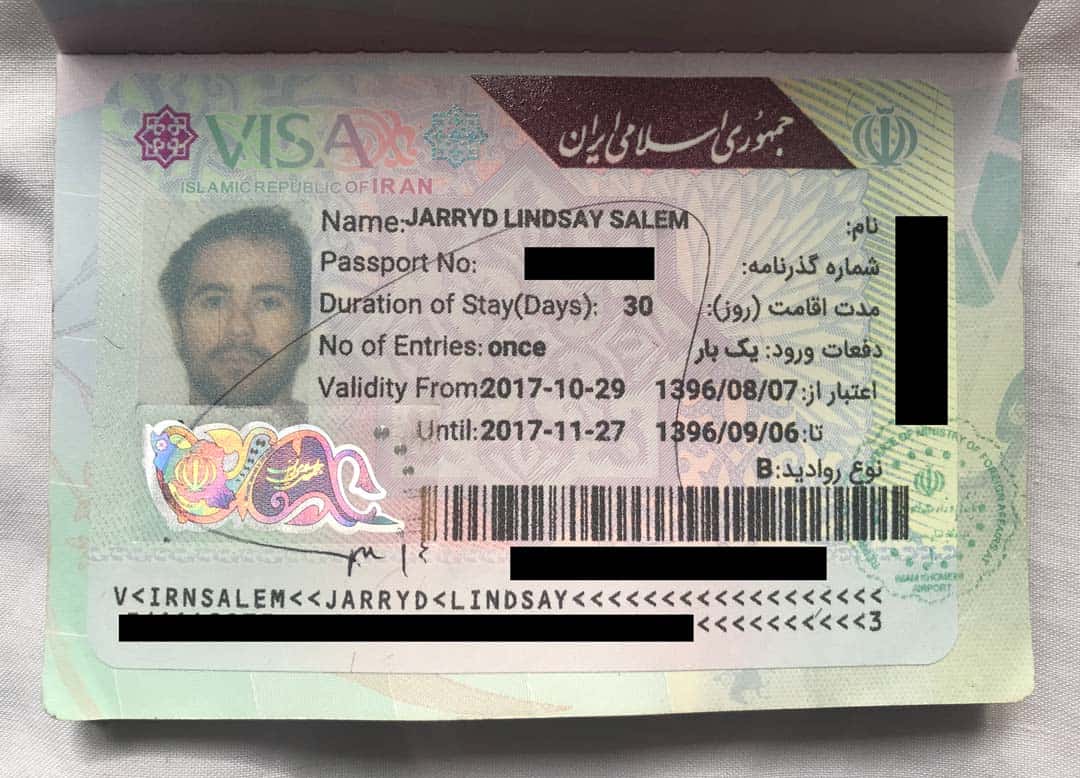
You Need to Dress Appropriately
This follows on from the customs section above, but in a bit more detail.
Iran is an Islamic country, and as such you need to follow the Islamic dress code. Here are some things to keep in mind.
Women need to cover their arms, legs and head. This including a Hijab, loose long length shirt with long sleeves and pants.
Leggings or tight jeans are ok as long as your top is long and covers your bottom. When wearing pants, you need to be covered down to your ankles.
The most common way to cover your head is with a scarf. The local women wear bright colours and are very stylish with their clothing, so don’t think you need to wear all black.
Black is still worn a lot but not so much among the younger generation.
You can wear sandals. Some guesthouses and hostels will allow you to take your headscarf off on their premises but do check first.
Men aren’t allowed to wear shorts in public, so bring long, lightweight pants as the best option. T-shirts are fine to wear in public. Men can wear sandals too.
If you do wear inappropriate clothing it’s not the end of the world, and besides some angry looks from some of the older generation, you’ll probably just end up having a friendly local let you know what’s best to wear.
In Tehran, the locals push the limits in terms of what they wear in public. At the end of 2017, an uprising occurred and supposedly women were no longer required to wear the Hijab in public in Tehran, but wait until you are in the country to find out for certain.
When you land at the airport, it is respectful to put a scarf straight on your head ladies. This will cause no trouble for you by locals or the officials at the airport.
Once you’re in the air on an international flight you’ll see most young ladies take their hijab as soon as the plane leaves the ground. Just follow what the locals do.
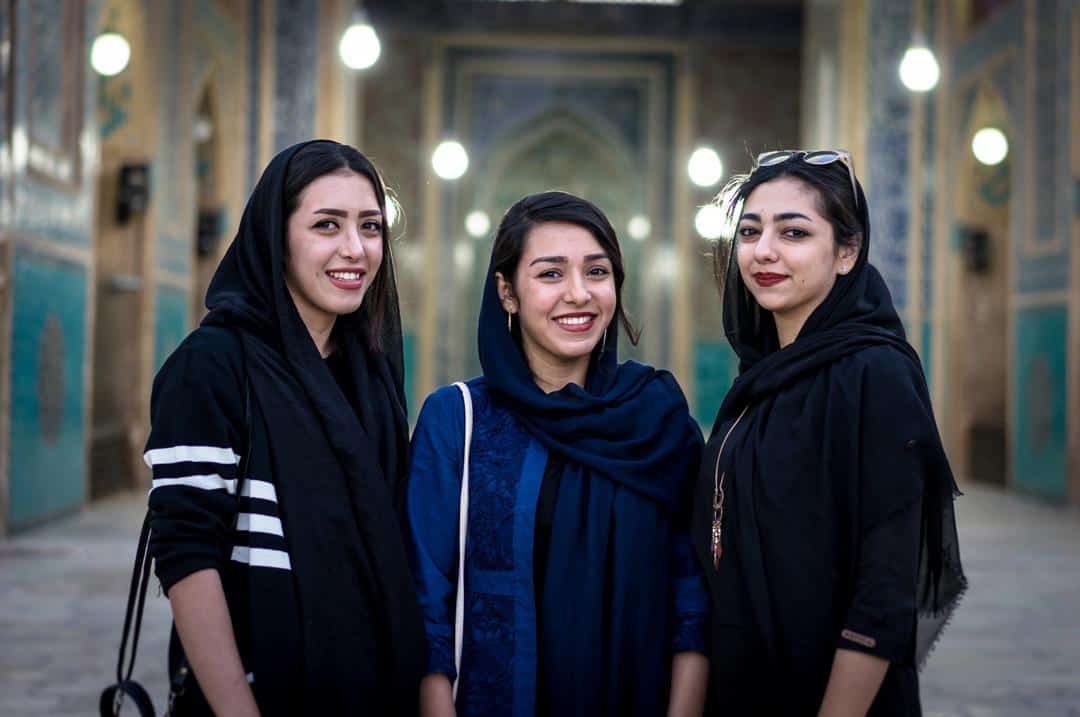
We were quite surprised to discover that a lot of Iranians could speak a little bit of English, but that wasn’t always the case, so do yourself a favour and bring along something that can help translate English to Persian.
We always travel with Google Translate and offline languages saved on our phones, but at times having a phrasebook is the best (and most social) way to interact with people who don’t speak any English.
Remember, you are in a country that doesn’t have English as an official language, so don’t be that rude tourist that gets upset if people aren’t understanding you.
Persian (Farsi) is difficult, and no locals expect you to learn much beyond hello and thank you while you are there, but do your best anyway as a few extra words will go a long way in showing respect.
Also don’t be surprised if you are constantly invited out for tea with people so they can practice their English. If the opportunity comes up, make time for it, as it’s an amazing experience for both the local and yourself.
Don’t forget your cash when visiting Iran, as none of the ATMs in the country accepts foreign credit or debit cards thanks to the embargo. So if you forget to bring all of your cash for your entire trip, you’re out of luck.
Figure out what your usual budget is for a trip ($50 a day, $100 a day, etc), then bring a bit extra just in case. USD is best for all around the country but Euros and British Pounds are also accepted in Tehran.
There’s two exchange rates in the country – official rate and black market rate – and the black market rate is of course much better.
We actually found an exchange booth at Tehran airport that gave pretty close to the black market rate, so we traded some cash there.
As a tip don’t exchange all of your foreign cash into Rials at once, because you’ll either get ripped off on the exchange rate back if you have any left over, or you’ll be unable to trade it outside of the country.
Also don’t be too concerned about travelling around with thousands of dollars in your backpacks. As we mentioned earlier theft is rare. Do keep your money stashed in different spots though just in case.
UPDATE: If you’d prefer not to carry all your cash with you, can actually pre-order a local Iranian debit card from the company, Mah Card . It works just like a normal debit card in your home country.
You order it on their website and they’ll deliver it to your hotel in Tehran when you arrive. They have an online system too where you can top up the funds if you’re running low.
Use the code ‘ NOMADASAURUS ‘ at check-out to get a 40% discount on the card when ordering. Instead of a 19 Euro issue fee, our code brings it down to 11 Euro.
“Toman or Rial?” Get used to asking that question, because if you don’t it could end up being a costly mistake.
The currency in Iran is officially known as the Rial, and is valued at roughly 30’000 IRL to USD$1. That’s a lot of zeros, so what the locals have started doing is dropping a zero and calling the new value a Toman.
1 Toman = 10 Rial
When you hear prices quoted in Tomans you need to add a zero on the end and pay the amount in Rials. It sounds confusing, but you’ll pick it up pretty quickly.
That’s why it’s important to always ask Toman or Rial, so you don’t accidentally pay too much on an item. Most vendors quote in Tomans anyway, so chances are if the price seems too good to be true, you need to multiply it by 10.
Rumour has it that Iran will officially introduce Toman as a currency in the coming years, but that hasn’t come into effect yet.
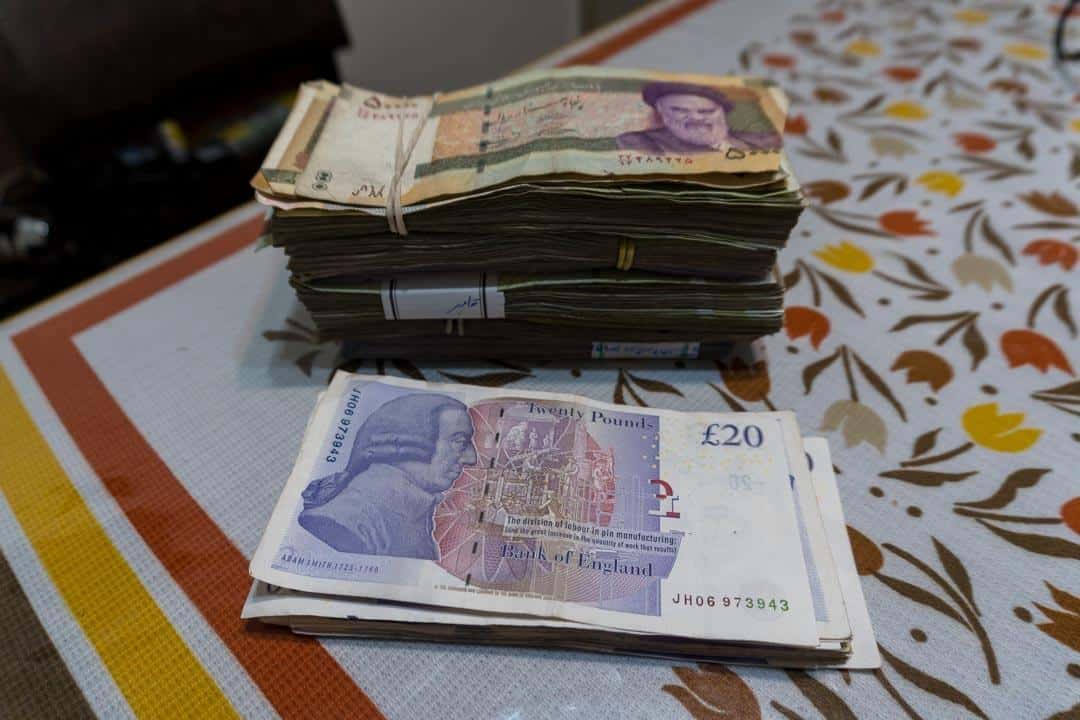
You are going to do a lot of walking in Iran, so bring comfortable footwear. The towns here are so amazing that you’ll probably end up walking at least 10km every day, so look after your feet.
These don’t necessarily have to be hiking boots (unless you’re planning on doing some treks). Just make sure you have some flat shoes that you can wear all day without a problem.
Don’t bring heels. You don’t need them, and you won’t wear them. We had a pair of hiking shoes each and a pair of sandals. That was perfect.
Persian food is varied and delicious, and there’s plenty of different styles to try, so be adventurous!
Most people travelling on a budget will end up eating falafel sandwiches when they’re in Iran because they are cheap ($1 !), filling and delicious, but there’s plenty more to Iranian cuisine then just kebabs.
We don’t consider ourselves to be foodies, but luckily we were travelling with our good friends Dan and John and they are all about culinary travel, so they had a huge list of food they wanted to try. And boy were we thankful they did!
They had looked up the different types of food they wanted to try, so we basically followed their advice and tried it all. Of course, it was super delicious too.
One particular dish we all loved was dizi. It’s quite confusing how to eat the first time, so we had the restaurant owner show us how to mix and grind all the ingredients. If she didn’t show us, we wouldn’t have a clue how to eat it.
If you are a vegetarian, there are food options but they can be limited. There is a lot of eggplant, lentil and chickpea dishes. There are simple salads and rice also.
Try to get away from the popular tourist areas as well, as the prices are going to be a lot higher than the average place.
Move away and you will be surprised how much the price drops, and the portions are larger. If you are passing a local restaurant and it is packed with locals, that is going to be a winner.
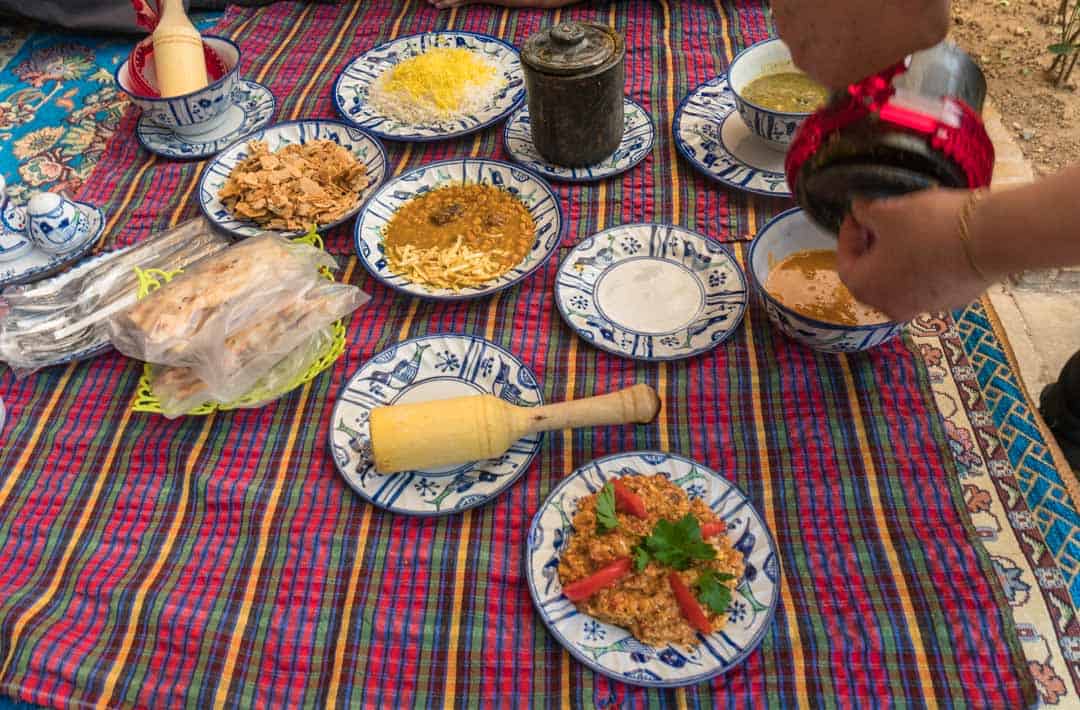
We always recommend people travel with a backpack rather than a suitcase, but this is especially useful when you visit Iran.
The road and paths are uneven, and wheeling a suitcase would be a nightmare. A lot of hotels don’t have lifts, so unless you’re feeling strong it’s going to be hard to carry your suitcase up a lot of flights of stairs.
Always choose a lightweight backpack that fits you perfectly for the best support.
There are also hybrid backpacks, that have harnesses and wheels on the bottom for the times where you just don’t want to carry it.
Unless you are on a whirlwind 7-day trip of the country we recommend you design an itinerary of what you want to see and do, but don’t book anything until you are in the country.
Iran is one of those countries that is best to research beforehand so you can make the most of your time and you don’t miss anything, but don’t be surprised if some places you end up liking more than others.
Be willing to change your plans if you get somewhere that you want to stay an extra day, or if you meet a backpacker that raves about one town you hadn’t considered before.
Don’t stress about booking buses, flights or trains before you arrive. Everything can be booked in-country, for a much cheaper price than you’ll find online.
By not locking in your travel plans, you can change and swap your itinerary easy enough.
Disclaimer: The one time that you may need to book everything ahead of time is during Nowruz, which is the Persian New Year. If you’re planning on travelling to Iran during this time (it happens around the spring equinox in March) you’ll find things are extremely busy with millions of locals travelling around the country to spend time with their families too.
Looking for somewhere else to check out when you visit Iran? Don’t miss our article on the best things to do in Shiraz!
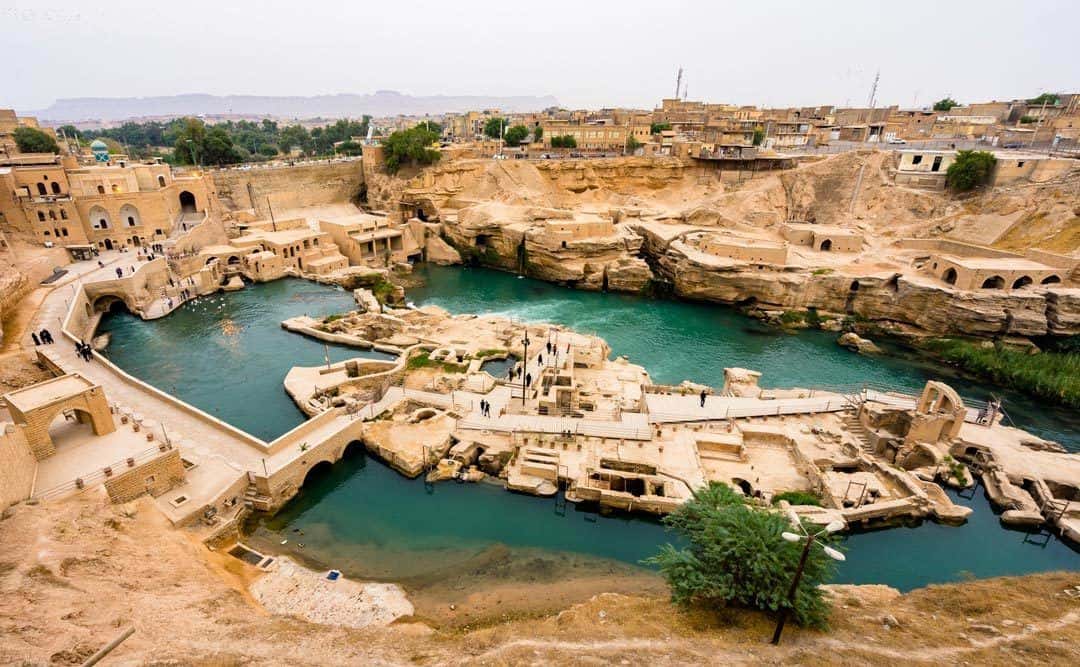
One of the best experiences you will have in Iran is spending time with all the friendly locals. And trust us, you’ll get plenty of opportunities if you are open to it.
The city squares are usually where locals will approach you to welcome you to their country, have a chat and practice their English.
Don’t shy away from this, even if you are a solo traveller. We found out so much information about Iran and how the locals live simply by chatting away.
Most people asked us questions about where we are from and were very happy to answer our questions. It was a true insight to Iran and we made some beautiful friends from it (many of whom we still keep in contact with).
Don’t be surprised if you get a lot of invitations to people’s homes as well, and this may be one of the few countries where we’d say hanging out with strangers is highly encouraged. The Couchsurfing scene is huge here too if you’re into that.
Do be wary of some people who will take you to an expensive tea house though. They are nice people, you will have great conversations, but they can be a little cheeky.
Also always look at the menu before you start ordering to make sure they haven’t taken you somewhere that has crazy prices.
Some will invite you out and try to sell carpets to you. If you are not interested just be firm and move on with the conversation.
We only had this happen to us once out of more than a dozen great experiences, and once we made it clear we weren’t buying a carpet we still had a great chat with him.
There is only one thing with all this – Expect to be stopped every few minutes by people wanting to chat! Make sure you’re mentally prepared when you go out around town to have a million friendly conversations.
You shouldn’t just do this in Iran, you should do this everywhere you travel, but it’s important to keep in mind.
In some countries, there are tourist prices and local prices. To be honest, we almost never felt ripped off here, but it did happen occasionally.
Before you buy anything, whether it’s a souvenir, a meal, a pot of tea, a tour, a taxi ride or whatever, ask to see the menu or how much it will cost to avoid any unpleasant surprises.
Get out of the tourist squares too. Chances are if you walk a couple of blocks outside of those popular areas, the prices will drop dramatically.
When buying survivors, ask the price at a few places, get the vibe from the person/place and then buy. Try your bartering skills, but don’t be offensive.
We always try to settle in the middle so both parties are happy. This is their business and they need the money more than you do.
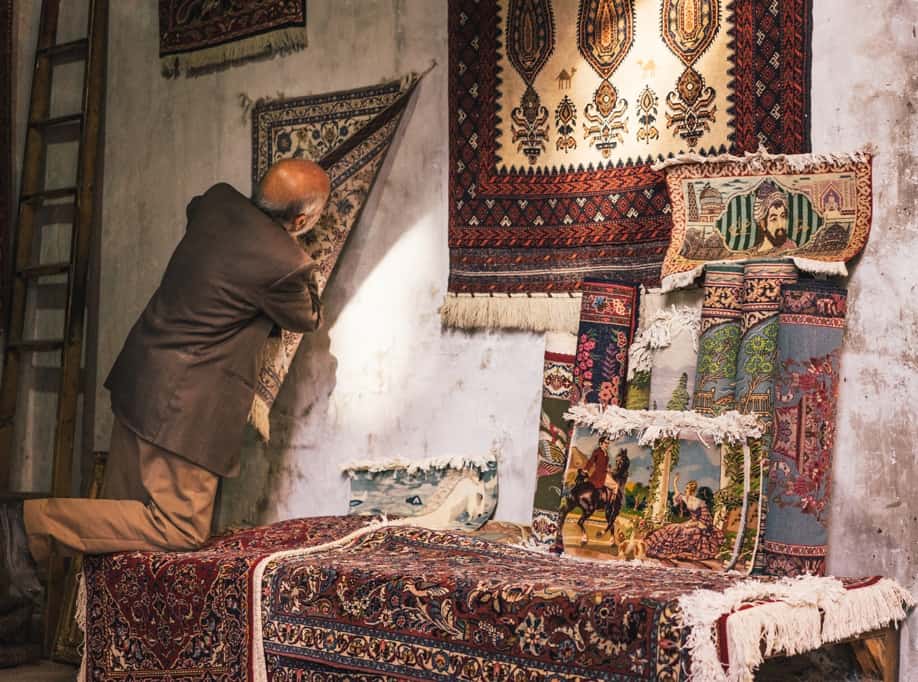
If you are flying domestic, book through an agent or your local guesthouse in the country. All the local airline pages are in Persian, and these are where the best deals are.
Online booking agencies like Skyscanner and Momondo will not bring up these flights. We were in the west near the Iraqi border and wanted to fly to Tehran. Our local guesthouse helped us out and we booked it for $50 USD including snack and bags.
They were charging $200 USD on one of those online booking agencies above. We never were questioned at the airport about the local price and everything went smoothly.
If you’re not travelling in a group of four, ask at your guesthouse or talk to other travellers to see if you can share the cost of a driver with them.
Sometimes hiring a driver between towns as private transport would work out to be the same price as 4 bus tickets. You get there faster and can stop when you like along the way.
This will save you money and you might even make some awesome friends out of it.
Iranians are very punctual. If you plan to leave for a tour at 8am be in reception at 7:45am, and the driver will most likely already be there.
Buses and trains also won’t wait for you if you aren’t there. The last thing you want to do is miss your tour because you slept in or hadn’t packed yet.
If you’re heading to the airport, bus or train station make sure you leave plenty of time in case of bad traffic.
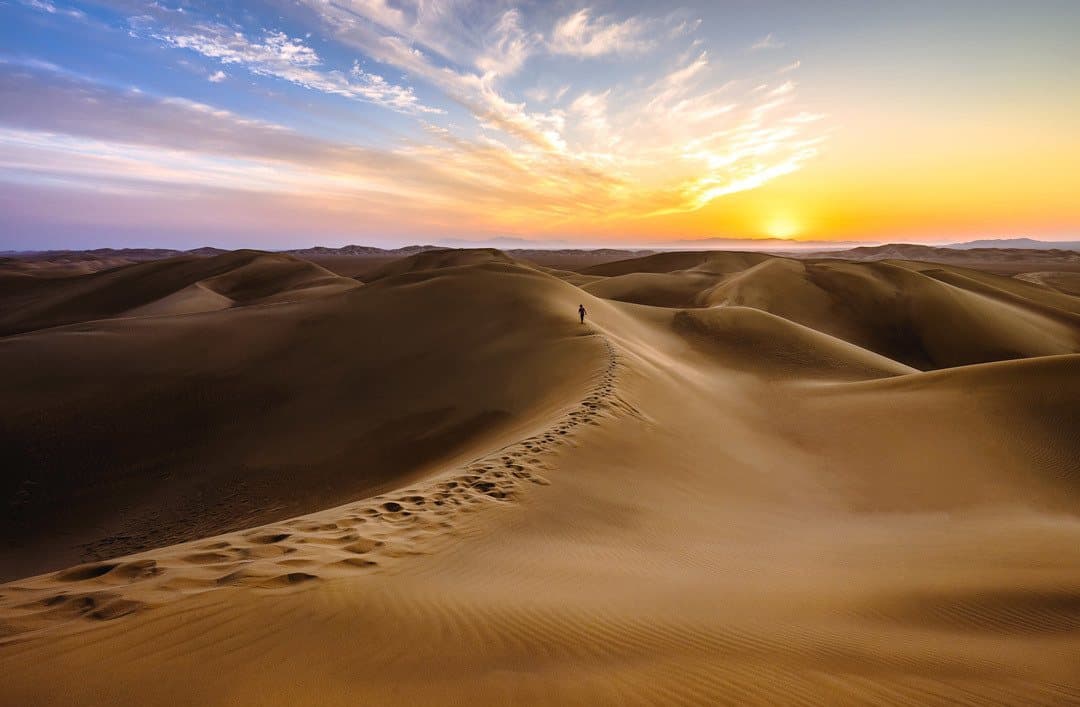
When we say horrible, we’re being polite. The traffic in Iran is actually insane.
If you’re exploring Tehran don’t be surprised if you have plenty of “Holy s**t!” moments as you go to cross the street or you get around in taxi.
It’s not that Iranians are bad drivers…they just don’t have a concept of space when driving around. In one way it’s almost as entertaining as it is scary.
No one is actively trying to run pedestrians down, but if you do try to run the gauntlet of crossing a busy road it’s best to wait for a local to join them on their hell-bent journey to the other side.
Some social media platforms are banned in Iran and you cannot access them without a VPN (Virtual Private Network).
You cannot access Facebook, Facebook Messenger, Twitter, YouTube or Pinterest. You can access Instagram , but the rest only with a VPN.
We used ExpressVPN and had no issues. Here is a link to get your first 30 days for free .
Make sure you download your VPN before you arrive in Iran, because a lot of the VPN sites are blocked by the government.
If you can, we also recommend having access to a few different VPNs, because every now and then one might be blocked in Iran.
ExpressVPN worked for us during our trip, but some people have reported that it didn’t work during their own trip. Last we heard it’s back up and running properly now though.
Most of the guesthouses we stayed at had free wifi, but don’t expect it to be fast.
Some hotels had wifi available in the rooms, while others were only in the reception area or dining rooms. It all depends on how upmarket your place is. In popular cities, tea and coffee houses had wifi also.
One thing to keep in mind though is that just because there is wifi at your hotel, be respectful on how much you use it.
There are no unlimited data plans in Iran, so the hotels have to pre-purchase data in small packets.
Please don’t be that person that streams Netflix or tries to download the new season of Game of Thrones, because all that will happen is you’ll end up using all the net for everybody else in the hotel, and cost the owner more money.
Yep, we met a guy that did just that in Varzaneh, and because it was a weekend it meant nobody in the hostel could get internet until Monday. Thanks, mate.
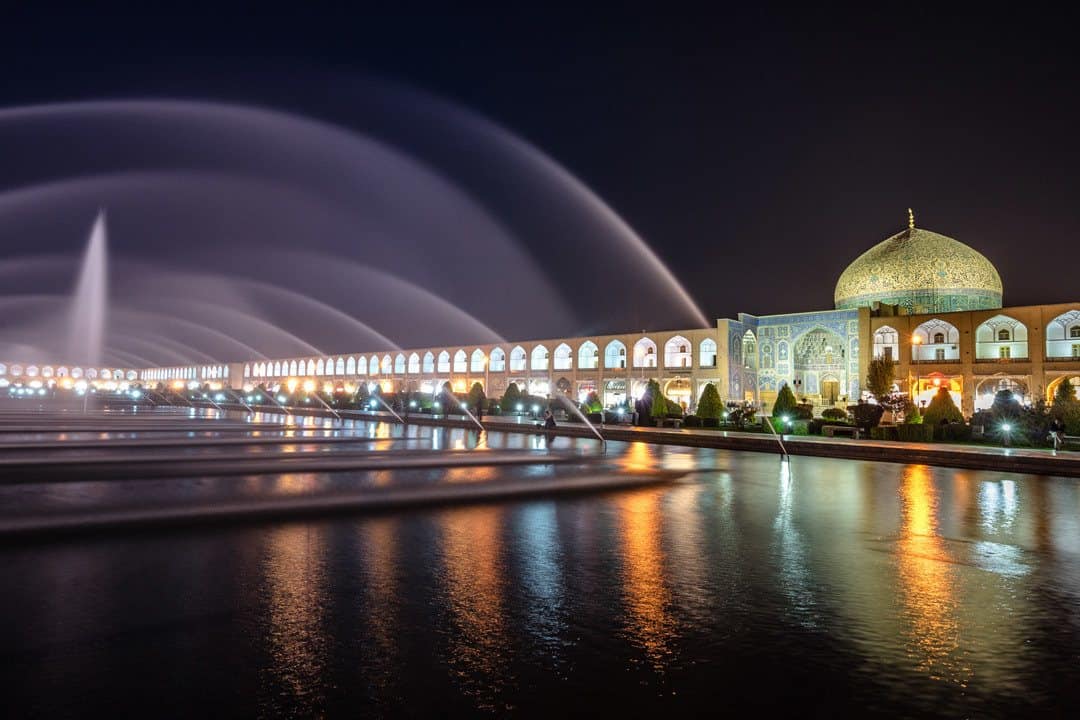
Despite what you may have been told, you can buy a local sim card in Iran as a foreigner, and it’s a great idea to do so.
This way you can call hotels to make bookings use WhatsApp and Snap (more on that below) on the go, and keep in touch with friends and family back home.
We bought up a sim card with the telecommunications company IranCel through our hostel in Tehran, however, they marked the price up by double.
We found out later that you can buy sim cards at the airport or at any store, so our suggestion is to do this yourself.
When going into the phone store bring your phrasebook or a local friend. You will not need to show any ID, just pay in cash, but it helps to have your passport with you just in case.
You can top up at little general stores that display the IranCel sign. They will do it all on your phone and charge a small fee for their time. Please don’t argue with that, it’s maybe 25c USD.
We were getting 5GB of data for about $10 USD.
There is an app in Iran called Snapp, and it is similar to Uber. It’s a rideshare app where drivers register and customers can order cars to get around town.
This was a lifesaver for us!
What makes Snapp so great is that a price is determined by the app and you pay in cash once you get to your destination. There’s no metre, so the driver will take the most direct way possible.
When you book it you’ll get the driver’s name, their car model and their registration number, so you know you’re getting in the right vehicle.
Yo drop a pin on a map for where you want to go, so there’s no need to try and explain it to the driver in case he doesn’t speak English (or your pronunciation is crap).
The other added benefit is you can rate the drivers afterwards, so they are more likely to be honest rather than a taxi driver.
The only thing is you cannot easily download it onto an iPhone, as Apple is an American company and does not support Iran. It doesn’t show up in the App Store.
If you go to the Snapp website you can download it to your Apple phone through a special link there. Downloading it on an Android phone is easy with no issues.

This one was a big surprise to us, but you can drink the tap water just about everywhere in Iran.
It’s totally safe to drink, even if you’re new to the country, so don’t worry about buying plastic water bottles everywhere you go.
Bring a reusable water bottle instead and simply fill up as you go.
Don’t drink river water tough if you are out hiking.
Iran is a nation of tea drinkers, so it’s no surprise that you’ll get delicious fresh tea for cheap (or free) just about everywhere.
But what about us coffee drinkers??
The bad news is that getting good coffee is very hard in Iran. Despite their close proximity to places like Turkey, the coffee culture phased out years ago and so now the best you’ll find is usually those horrible instant packets.
There is a silver lining though, and some entrepreneurial locals have discovered that coffee is basically the second greatest thing on earth (after a delicious IPA, which you also can’t get in Iran), and some Western-style coffee shops are popping up in major towns.
They’re not cheap, but when you need that caffeine hit in the morning it’s totally worth it.
When you catch the metro around Tehran or Esfahan, there are carriages designated just for women, which is great if you’re a solo female traveller.
These are basically sections that males aren’t allowed in to stop accidental touching of non-related mixed genders, but it also adds a sense of security for women taking public transport.
Occasionally if the mixed carriages are full you’ll see one or two men in the female ones, but they tend to stand next to the door away from everyone.
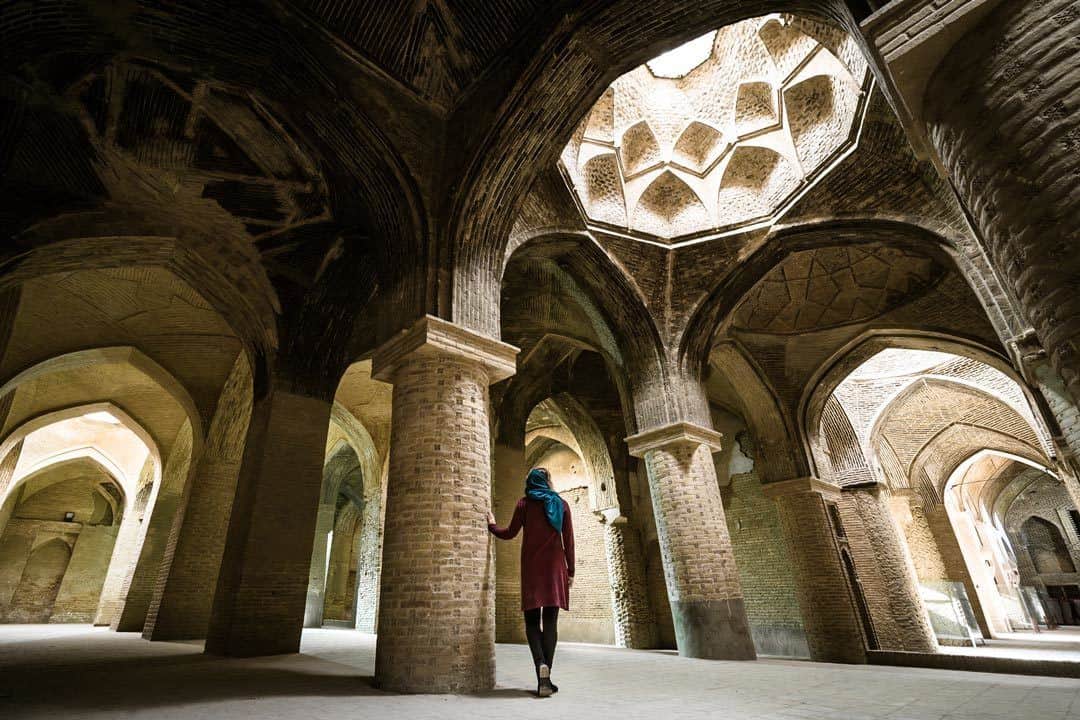
[box] Those were just some of the things you need to know before you visit Iran. Has the article helped you? Do you have anything else to add? Leave a comment below and let us know![/box]
Alesha and Jarryd
Hi, We’re Alesha and Jarryd!

We’ve been traveling the world together since 2008, searching for the planet’s best destinations and adventures.
Love Travel?
Sign up for our free weekly newsletter for the best travel tips, ideas and deals!
We respect your privacy. Unsubscribe at any time.
READ MORE...
GoPro HERO 13 Review – The Ultimate Camera Guide [2024]
GoPro HERO8 Black Review – Is it Worth Buying in 2024?
GoPro HERO 9 Review – Is it Still Worth it in 2024?
Related Posts
A day in kashgar – china’s eclectic uyghur city, searching for nirvana, happiness and simple pleasures, how a writing competition changed my life, 105 thoughts on “25 things to know before you visit iran”.
Hello friends, I read your comments and I wish I could say that I am happy that you think so naively about the Iranian regime, but the truth of Iran and its people is not what these friends say, and unfortunately the bitter truth is that all those media that They present this regime and the leaders of the Islamic Republic as terrorists and a bunch of dishonorable and inhuman people, they are telling the truth and only the oppressed people of Iran understand this! you can ask them. But for you tourist friends, yes, this country can be a paradise because your money is worth many times more than ours, and not you tourist friends, but the unfortunate people of this cursed country feel the pressure. Our only wish was to have normal rights and a normal life like you, but this regime stole that life from the people of Iran and blackened the lives of the people of this country. Hoping for a day when this terrorist regime, which has made the Middle East and the whole world insecure, will be destroyed and we Iranian people have good and sincere relations with the people of other countries of the world . That day we will have at least a normal life and the world will not recognize this country as a criminal terrorist country. Written by a 27 young Iranian.
hi I want to just say now ( 2023-15-11 ) that the US dollar is 510000 Rials and here is heaven for people of countries where the currency is the dollar and Iran just is Hell for local people thanks to the Iran government for this situation!!!!!!
Hi dear Alisha and Jerry My name is Raziyeh. As an Iranian, I wanted to express my sincere gratitude for your kind words and appreciation of our beautiful country. Contrary to media propaganda, Iran is safe, and Contrary to media statements, we are hospitable and genial people who do everything to ensure you have a fun time in Iran. Please do not believe the lies that social media tells about our country. We’ll be happy to see tourists and give information to them. I hope you revisit our country. Best regards, Raziyeh.
Hi everyone I’m from Iran. I’m happy that you liked your trip to Iran. Iran has a lot of museums and attractive places if you’ll come you should visit them. And we’ll be happy to see tourists and give informations to them.
Iran is an extremely lovely place to travel. Thank you for the trip advice. I adore your article.
For foreigners especially Westerners Iran is a very dangerous country. There is a high risk of being arrested on fake charges. Atleast 50 foreigners have been arrested recently and sentenced without a fair trail. The “friendly” citizens of Iran will not help you out unless you pay them witg Euro or Dollars…..
Well! I accidentally found this while surfing the net, and it’s a bit sad that each dollar is 450000 Rials… People are still friendly to tourists though, no matter how hard our lives are. I hope you visit our country again, after all these sad events, of course.
22 days later and its 510000. when will these evil leaders leave us alone
We are glad that you were satisfied with your trip.You pointed out great points like someone who has lived inside for years… Our people believed, but the government has crushed the people so much under the economic pressure that they have become a little unfair to each other. Be sure to use SNAP inside Iran.. Be sure to check the price before buying.. Our common currency is Toman and Rial is nominal. For example, now every 1 dollar is equivalent to 33000 Tomans.. To eat a pizza, you need 6 or 7 dollars.3 cents are required for 1.5 liter of taqriya water.. If you have an acquaintance in Iran, you can be much easier.. Don’t pay too much attention to the capital because it has very beautiful cities with a very old history. Thank you for choosing which country for your trip. Good luck
Thank you for the excellent information and for taking an interest in the lovely country. really nice tips for visiting Iran.
I’m glad you liked Iran. Unfortunately, due to the difficulty in managing economic affairs, the Iranian people suffer from the high cost of goods. Now each dollar is equivalent to 277,000 rials, which is really terrible, of course for our people! Of course, Iran is still full of beautiful places and amazing places! I hope you have good trips …❤
Hi guys I am Ava. I am from Iran/ Isfahan. If you want to come to Iran I would be happy to help you. I have a beautiful Iranian old house.
Can you please write about traveling in Iran at the moment. I would be traveling on a New Zealand passport. Thank you. Evan.
Iran holds many surprises for visitors; like the climate which can fluctuate greatly, depending on the area and time of year, dispelling the long-held myth that Iran is nothing more than a vast, sweltering desert. But Iran is a historical place and i like to visit this type of places that is why few days ago i read this type of article on another site it contain huge information. While some surprises are nice when travelling, it’s important to be as well prepared as possible.
Is $1000 for 7 days visiting 5 cities everything included except airline tickets a reasonable price? Please let me know what you think! Cities included are Tehran, Yazd, Esfahan, Shiraz, and the desert side with Caspian sea. Thanks,
Definitely if you stay at budget accommodation, take public buses as transport and not eat at fancy restaurants. Have a good trip
it’s very good
Indeed it is 🙂
I am Iranian. You described Iran very well. I am glad that you visited Iran
Thank you for your comment Masoud. We really enjoyed travelling around Iran. 🙂
Hi Thank you for your essay about Iran. As an Iranian I do hope you have good memories generally from Iran. No country is perfectly free of any trouble but please do not believe propaganda against Iran unless you travel to Iran and live with Iranian for a couple of weeks (at least) and then judge.
Hi there! I’m an Iranian, and i’m REALLY happy that you loved our country! I hope other tourists enjoy their travel to Iran, and I wanted to say, that Pinterest doesn’t need VPN! 🙂 And also about hijab, if you’re thinking that it’s gonna make you struggle, well, it definitely isn’t. I mean, it’s not such a big deal, and you’ll get used to it and continue enjoying! Anyways, hope you like our country
Reasons for a Group Visit to Iran Experienced travelers may want to look away. Guided tours can really be the best option for some travelers going abroad. Of course, they limit you a little and lose a little freedom. You will not have enough time to fall in love with a place and you will not have enough time to stay there, and other companions may not be with you. But no matter what the veterans might say, there are good reasons to tour for those who want to.
Salaam All, I’ve travelled extensively in the Middle East (Egypt, Palestine, Lybia, Qatar, Dubai, Saudi Arabia, Iran and India. My wife, daughter and myself went on holiday to Iran in 2012 and 2015 (for my 60th birthday). An Iranian couple came to sing happy bithday to me in farsi. It was an inexplicable experience, no crime on the street, no fighting, very, very safe, people very friendly and warm, food and confectionary very good, not expensive to shop but hotel accommodation could be expensive, public transport (bus and metro rail) very good and effecient, metro stations very clean and very easy for foreigners to use. Although we were based in Northern Tehran (Eliheyah), we once drove by luxury coach to Ishfahan to spend one week there (2012), the other trip we flew to Shiraz to spend one week there (2015). I fell in love with this country, it’s absolutely beautiful. In Tehran, we even went in the cable cars on the Azborg mountains. O, I just cannot stop raving about IRAN. I’ll visit there anytime. Please don’t believe the media with their negative reports, go see for yourself and discover this amazing country. Salaam from Riedwaan Salie (Cape Town, South Africa.
That is so nice. What a great birthday trip. We are so glad you had a wonderful time with you family. We found the country very welcoming and friendly also. Thank you for your comment. 🙂
Your itinerary was perfect! I hope you come back again very soon! I heard now you should ask for visa only from agencies. Also now for your money matters you can use a local debit card like Daricpay to charge and transfer money online
We hope to visit again one day. Take care
Hi Im am an iranian person and your information was totally correct about iran I am very glad to see you were anjoyed traveling to iran If you come to iran again you can visit other cities like shiraz,Tabriz,Isfahan,Hamedan they are as beautiful as Tehran
Thank you so much for your comment. 🙂
Hi all, I have been 2 weeks in Iran the last month, my friends and I were travelling the west part of this huge country touring the famous cities and recommended places over the countryside. I could never thought how beautiful were every little point that we stopped by: landscapes, restaurants, seacoast, food… persian landmarks will remind forever in my mind. As we were travelling by car we trusted (company removed, you can message below if interested), a notorious iranian company which offers a wide variety of car for rent. The service was excelent and they provided us whatever we need in order to make our trip easer. I would definetely recommend this company If you are thinking about renting a car to shuttle from a place to another, they are serious and reliable. Thanks persian people and the company for making our dreamt trip happen!!
We love Iran!!!!
Sounds like you had a great trip. We are so glad so had a great time.
Hi Alesha and Jarryd, Thank you for the useful info and your interest in my beautiful country. I’m Zahra Mazaheri an English – Farsi translator. I would be more than happy to help the tourist to Iran in having a pleasant journey.
Glad you liked our article. All the best
Iran is a wonderful country for all nations to visit. Whether you’re interested in going to cultural and historical places, try local food, shopping, or visiting new people, the country is one of the best places for all of these.
Thank you for your comment. It is a magnificent country
thanks so much for your tips, and i want to add this there is something that we call it “Taarof” This is a polite exchange that takes place in all aspects of life in Iran, in shops, in streets, in businesses, at homes. Simply stated, it is a form of one person making an offering and the other, refusing it. This ritual may repeat itself several times before the individuals finally determine whether the offer and refusal are real or simply polite. Be very careful how and with whom you taarof so that it does not interfere with your stay. Use common sense as to when to do it and when not to.
Thank you so much for this. After travelling the country for 3 weeks, we only experienced this once in Tehran on the outskirts of the city, We ate locally, bought locally, stayed locally, bought a lot of items on the street but only experienced it once. We were shocked. We had read about it and was waiting every time but it never came. Maybe if you are a foreigner they don’t do it as much. Thank you the explanation.
I really appreciate for your thoughts on this topic. Thanks for sharing this information with us.
Hi Alesha and Jarryd, this was so helpful. We’re off to Iran in a couple of weeks and great to get some tips re luggage, local currency cards and communication options. thanks david
Hi David, We are so happy the article was helpful. You will have a great time in Iran. Do not over pack. Woman have to be covered. Loose clothing is a must and a long top/dress is best as it covers the figure. Her arms and legs have to be covered. Sandels can be wore. A hijab is a must so bring scarfs. For the men, your arms do not have to be covered. Do bring pants as you need it for mosques. Our advice is to bring zip off pants. They are great. We did not use local currency cards. We bought all our cash in euros and exchanged it in Tehran on day 1. We did it with our guesthouse. They gave us a great rate. As for communication, do download Farsi offline before you go so communication can be easier. Surprisingly a lot of people do speak broken English. have a great trip.
Hi guys. Im so glad you had a good time over here. I believe Iran is the most misunderstood nation (thanks to media!) and articles like this may help people see Iran for what it is. One thing i need to point out is the currency exchange rate. the rate of 30,000 to 1 USD is no longer valid. 1 USD would be exchanged to about 110,000 rials now (11,000 Toman). Hope to see you back here soon! cheers
i promise to passengers ( our guess ❤) that we can make nice memory for you , and hope you enjoy that
Hi guys, great article! Just wanted to suggest that you include information about the Pocket WiFi and Travel Debit card services offered by MahCard (www.mahcard.com) as well… We travelled from Amsterdam to Iran during January this year and we used both services from MahCard and they really made our trip much easier…
Thank you for your tip Lotte. We have never heard of these guy. Definitely would be helpful. We strongly encourage travellers to do their on research on companies and make their own judgements. All the best
Hello! Very useful info about Iran. I am preparing a trip with car from UAE to ROMANI so it will be Bandar Abbas to Turkey Border. Any info and advices are welcomme! Thx
Hi Als, not too sure about that border. We flew in to Tehran. All the best.
Hello Dear Guys, I’m really glad to find your blog. It’s really interesting to me. I should say thank you to you for giving this good information about my country to people. It would be our honor to be host in your next travels to Iran.
I have been to a lot countries. I have been to super cold areas like Norway and have lived in the snowy Switzerland, and have also been to warm countries such as Bali, Sri Lanka, etc… What I love about Iran is that whenever and in whatever season you go, there are always 4 seasons. The southern part (Persian Gulf) is known for its golden beaches and hot climates, other areas such as Shemshak, Darbandsar, etc… are known for their snow and mountains. I recommend going to ski resorts in winter, and as a person who has lived in Switzerland I can tell that they are better. At the same time where you find snow in Iran, you can also travel to the other side where there are hot deserts. I recommend you go to these desert areas with a local tour called RONATURE, which is an ecofriendly tour and provides vegan and vegetarian food, furthermore supports locals and the environment. The Persian Gulf is unimaginably beautiful. Qeshm island in the south is probably the most beautiful place in the world, unfortunately there are not many photos of this island online because not many people know about it yet, but I do recommend taking diving courses there. The water park in Kish island is the best I’ve ever seen, much better than the ones in Dubai. I could go on for forever but you go to Iran once and experience all the four seasons. You get snowy mountains and sunny beaches. You go skiing and after a short flight you are tanning on the beach. This is a miracle and not something other countries dont have to offer. I can say nothing more but to recommend this marvellous country. Do not listen to the media, Iran is safer than Europe and Im not even slightly exaggerating.
Thank you for helping people to travel to Iran, I believe everyone should visit Iran beyond the media portrayal.
We totally agree with you Vahid. Never listen to the media about a destination, we don’t. We really enjoyed our time in Iran and encourage people to experience this country for themselves. 🙂
Sorry, I won’t support Iran. The government is evil. They imprison and torture their own citizens and they execute gay people. How can you support a government like that? Oh, and if you have an Israeli stamp on your passport, they won’t let you in. That’s ok with you?
We don’t support the government, we support the people of the country, who are among the friendliest, most genuine and hospitable people we have ever encountered. If we were to boycott countries with corrupt and evil governments, we’d start with the US.
I recently moved to Iran, as I am Iranian-American (well, now mainly just Iranian). I really appreciate all of the sweet and insightful comments and your wonderful website. Since the last time I lived here I was a child and have only visited every few years, when I arrived I was definitely feeling like a Persian that came back from a lost time warp of sorts, and had to learn the deeper levels of what you all already thoughtfully mentioned like tarof and the culture. Iran is a BEAUTIFUL & AMAZING country and I am lucky to be here. Just to let people know, everything I read here is true and helpful. 🙂 Even riding a bus from Iran into Armenia (to access my american bank for my final paycheck), I started out feeling slightly awkward as the 99% Persian only passenger peers around me were playing cute little games with each other laughing, with LOTS of incredible Persian music… I started getting many happy flashbacks of American-Iranian dance parties… but this was the REAL thing! Within minutes I joined in after being invited to clap my hands and a few girls were doing little hand dances in their seats… within about 10 minutes half the people on the bus were all SINGING together, it was precious. I felt like I was home, with my (native) Iranian people, and I got little happy tears in my eyes. YOU CANNOT FIND THESE MOMENTS IN AMERICA or EUROPE where nearly everyone around you surrounds you with welcoming bright eyes all at the same time. It’s like they are making you part of their family. I recommend visiting Iran for ANYONE… You will see that Iranians are good hearted and loving, even with all the sanctions. Give them a genuine smile, and you will get 100 smiles back, with tea and poetry. 😀
What a beautiful moment. That is great you are going back to your roots. We hear you. Iranians are good hearted and so generous. It is a beautiful country. Have a great time and hope you settle in quickly. All the best
Thanks for visiting my country. Hope tourism breaks all the wall of this global village.
We hope so too. It is a beautiful country with many beautiful people. We loved our time there
Thank you so much for this amazing article! I am going to visit Iran, but just for one week, so I need to take everything that I can from this short trip. I didn’t know that I need a VPN, that is a surprise! I have Surfshark subscription. Maybe you know how it works in Iran?
Not too sure if it will work or not. We used VPN Express and had no issues. There are free VPNs if you get suck and find yours does not work. Have a great trip.
So disappointing to learn that Canada is not one of the countries included on the Visa on Arrival program…I really want to spend a week in Tehran but it looks as though that won’t be possible. That’s really too bad 🙁
I know. It is a little more of a hassle but worth it. I know Canadians, UK and USA citizens have to go on a tour but there are many great tours within the country. If you want a tour that is not a tour, check out Yomadic. He’s tours are informative but relaxed and have great reviews. All the best.
I was 10 days in Iran (Teerah, Esfahan, Yazd and Siraz) and … is a great country, good food, culture and fantastic people. Thank you Iran!
Glad you had a wonderful time Vitor. 🙂
hi im ghazal from kermanshah iran! a offer all to come here and feel how friendly people are
Yourwellcom
I’m sorry for this government rule.
Your welcome. I hope you back soon in my country.
hello,im shahzad from iran. thank you so much for your excelent content about Iran. all of the sentences are true about my country and u knew it very well.im so happy that you had good times here. As the other iranian people said,now 1 USD is equal with 141,000 Rials :).so Iran is a very cheap country for tourists,too:). come to my country and enjoy,it would be your best trip with no debt:)
Hi Shahzad, We had a wonderful time there. Thank you for the update with the exchange rate. We recommend all travellers to visit Iran. 🙂
Thanks for this guys! I am super excited leaving for Tehran on Monday I booked a small tour as I felt anxious about travelling independently first time ever in Iran. If I like it -and I am sure I will – I shall go back. I was advised to take a day travel backpack and a medium sized wheely which I hope to fill up with things bought locally. Of course I shall take essentials. Is a long skirt allowed? It might be cooler than trousers. What do you think?
Hi Alex, I hope you are having a wonderful trip, That great you booked a small tour. Sometimes it is the best way to see the country and learn about the people and culture. There is so many great souvenirs to buy. Unfortunately my bag wasn’t big enough. 🙂 Absolutely a long shirt is allowed but not a tight body fitting one. Long sleeve and maxi dresses are perfect. Trousers are great just make sure you top is loose and long past your bottom. Have a great trip.
Wow, Thanks for this. I’am glad, that I found your page. I’ll travel in october alone to isfahan. I’m already so excited
That’s amazing. You will have a great time. The Iranians are so friendly and welcoming. There is so much to do there. Here is a video we made about Isfahan if you want to check it out. https://youtu.be/XDYJ44CutT4
Great points!
Regarding bringing a load of cash though, I found a solution. In my last trip to Iran, I got a DaricPay card. It made everything easier!
Thank you for your suggestion and information. Glad that worked for you. We still recommend visitors to take cash as not everywhere will accept cards.
Hello everyone. This is Ali, an Iranian. This page is a good guidance; LIKE ! Iran is a country of different climates and has very beautiful historical monuments and natural areas. Contrary to propaganda, Iran is safe and a good choice for travel. Come to Iran and have nice time here.
Thank you Ali. 🙂
This is great ! Thank you! I’m preparing to go there in June and your article answered a lot of questions! I will come back to it just to remember everything. Thanks again.
Glad the article could help. Have a wonderful trip Joanna.
Great i read your experiences you had great fun in Iran. Everyone should need to aware about your guidelines before visit.
Hi Eric, thank you. We had a great time in Iran. Definitely everyone should read up on the guidelines, not just what we have written but from other also. It is important to do your research before travelling to a country. 🙂
Hey, great article on Iran tourism. What should I plan in terms of budget, if I want to plan a 7-day trip to Iran and cover major tourist/historical destination.
How would you rate food for just vegetarians. Thanks!
We budgeted $80 USD a day for a couple. We came home with a little bit of money but we rather have more than less as there is no ATMs that work for foreigners. As for vegetarian food, there are many options.
This is awesome article, I’ve read a ton of articles online these past couple of months as I’m traveling to Iran in May. I’ve already bought a NordVPN subscription regarding the social media access, I hope it will work fine too, saw some recommendations for it too. Other than that I really cannot wait for the trip, so I keep reading about it. Thanks 🙂
Awesome Steve. Have a great time. The people there are so friendly. It is an amazing country.
hi steve, i recommend, first travel to iran then try free vpn then buy subscription.because some vpn in iran dose not work. instagram and what up don’t need vpn.have a nice trip!
Hi I am very pleased to be pleased with your trip to Iran I hope that one day we will be able to travel to other countries as well These days, people in my country are very sad.
Hi Mostafa, thank you for your message. We did enjoy visiting your country but did hear this from many locals. We hope that one day it all changes and travel will be a lot easier for Iranians. We saw nothing but friendly and welcoming people. The most friendliest country we have visited. We hope happiness comes soon.
Glad to hear that you had good trip in Iran guys. However things get worse and now 110,000 rials = 1 USD which is good for tourists. Lol.
Thanks for that Mohammad. Not good for the locals. We thought it was cheap when we visited last year. Sorry to hear that
I glad to read this site My country has very beautiful natural scenery and tourism, as well as very caring and kind people… I hope to see you in my city, Isfahan, the city of culture and art, and we can spend good times together^_^ I hope that there will always be in all countries, including my country
Hello I am Iranian I am very pleased that you have been satisfied with traveling to Iran I wish you success
Thank you for stopping by. We loved travelling Iran. The people were so welcoming and we had a lot of great chats with many. We are looking forward to returning one day.
You were ok travelling without a guide? Is it easy to travel around without one? And is it possible to hire guides to specific places, such as Persefone of some mosque? My wife and I are planning to visit Iran on April or October? What’d say? Thanks a lot.
Absolutely. We met so many local people and had so much fun. It is an easy country to get around in. Their transport system within the cities were easy and great. Their bus system across the country was comfortable and faster than the train. You can hire guides at main attractions as you go. The hotels can help with that also. Have a great trip.
If you are from the USA, Canada or UK you need to go on a tour.
Hi We are older Australians and are wanting to go to Iran. We usually plan our holiday booking accommodation and transport before we go so are a little hesitate going without anything booked. We have not been on a tour before and they don’t appeal to us.
Thank you so much for this valuable information. My mother and I are trying to book an organized trip with Intrepid Travel. They told us that we were not allowed to be out and about without the accompaniment of a male. Which they say we would have to stay in our hotel during our free time unless we go with a male. Have you heard of this before?
I am Mehdi and I am from, Shiraz Iran. I welcome your arrival to Iran in advance. Staying you in your hotel during your free time in Iran is not right. You can go out without a male. I can help you if you have any question. please don’t hesitate to ask me. you can contact me at [email protected] . I hope you have a nice trip in Iran. Regards; Mehdi
Hi Cathy, that is so strange they would tell you this. That is wrong on Intrepid Travel to tell you this and if they are concerned about this for their guests they should provide tours for you free of charge as staying in the hotel room is not a very good experience at all. I hope you wrote to them to express your disappointment with this.
As Mehdi said above, that is not right. When we were travelling throughout Iran there were many woman travelling on their own that out and about by them selves. We did not hear of any issues. Obviously have your wits about yourself. The people of Iran are so friendly. The friendliest we have come across in our travels. I hope you got to experience this and see a lot of the beautiful country.
Hi Cathy, I’m an Iranian person, this is not right, you can go out without a male. Iran is full of friendly people and I’m sure you will enjoy your time and this would be one of the most unforgettable trips.
Hello kathy I’m very surprised by your talk I am from Iran and I assure you that it is not
Hey guys! This is one of the *very* few articles about Iran that I completely agree with. Oh, apart from one sentence: “Iranians are very punctual”… I actually laughed out loud. You must have got lucky. In any case, I’m glad you enjoyed your time, and hope we cross paths one day.
(also, feel free to edit this out: the photo of Alesha at Friday mosque in Yazd is actually Friday mosque in Esfahan)
Thanks so much Nate! Glad the piece got the seal of approval from the Iran expert himself! And I guess we did get super lucky with the locals being punctual. For the whole month we were there we were never left waiting. Will count our lucky stars, and make a note that perhaps it’s not always the case.
And thanks for the correction on the Friday mosque! Have amended it now. Happy travels mate.
Hi dears! I’m an iranian girl & I love my country… Actually my father is a tour guide & I’ve heared such lovely words from so many tourists… they mostly say they had heard many bad things about iran and they have experienced the bests when they came here… I’m so glad to here such nice words by many travelers and i really appreciate you cause you ‘re telling the truth about my amazing country!!!! I love you all dears!!
Leave a comment Cancel reply
Save my name, email, and website in this browser for the next time I comment.

Search Smartraveller

Latest update
We continue to advise:
Do not travel to Iran as there's a high risk you could be arbitrarily detained or arrested.
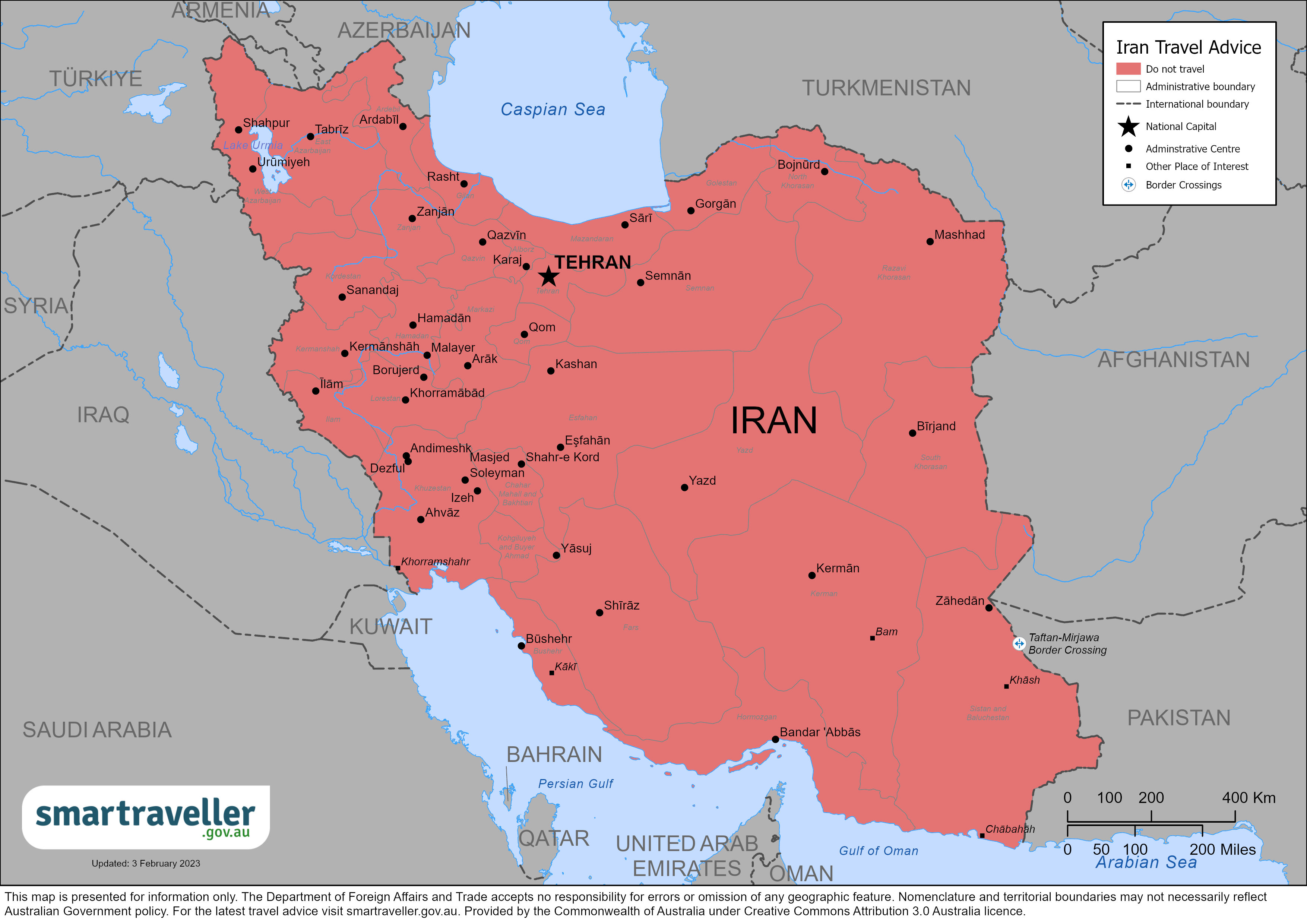
Iran (PDF 927.2 KB)
The Middle East (PDF 1.45 MB)
Local emergency contacts
Fire and rescue services, medical emergencies.
Call 115 or go direct to the hospital.
Mountaineers can also contact the Red Crescent on 112 for help.
Call 110 or visit the nearest police station.
Advice levels
Do not travel to Iran.
Do not travel to Iran as there's a high risk you could be arbitrarily detained or arrested.
- Terrorist attacks could happen anywhere in Iran, including Tehran or other locations frequented by foreigners and tourists. They could occur at any time with little or no warning. Avoid possible targets and areas with a low level of security. Possible targets for attacks include embassies, hotels, places of worship, tourist sites, government interests, military parades and locations, Western businesses and other interests. Take official warnings seriously.
- An increased threat of military and terrorist attacks against Israel and Israeli interests across the region and ongoing military action in the Occupied Palestinian Territories could lead to increased tensions in other locations in the Middle East.
- Regional tensions are high, and the security environment could deteriorate with little or no notice. In an attack or other armed conflict, you should follow the advice of local authorities. See our general advice on protecting your safety ( There’s an armed conflict ).
- Increased tensions in the Middle East may result in airspace closures, flight cancellations and diversions and other travel disruptions.
- Dependants of Australian officials in Iran have been offered voluntary departure to return to Australia.
- Demonstrations and protests are expected. Small, localised protests continue in parts of Iran. Previously, security forces' response to protests has been severe, and many protesters and bystanders have been injured, killed or detained. There has been an increase in the number of foreign nationals arrested during previous protests. Avoid all demonstrations and protests.
- Australians, including dual nationals, should strongly consider leaving Iran as soon as possible. Foreigners in Iran, including Australians, are at a high risk of arbitrary detention or arrest. Foreign and dual nationals have been detained without due process of law. Iran does not recognise dual nationality. Our ability to provide consular support to dual Australian-Iranian nationals is extremely limited. We can't guarantee access to consular services or legal representation if you're detained or arrested.
- There are ongoing disruptions to telecommunications services, including mobile internet access.
- Regional tensions are high and could escalate rapidly. There is ongoing hostility between Iran and Israel, and military tensions between Iran, the US and other countries in the Middle East. The Iran-Iraq, Iran-Afghanistan, and Iran-Pakistan border areas are extremely dangerous.
- Regional and international politics can trigger protests. These may target Western or UN diplomatic missions. Avoid vigils, marches, demonstrations and large public gatherings, as they can turn violent without warning.
- Kidnapping for ransom can occur. Foreign nationals have also been the target of kidnapping. Terrorist groups, drug traffickers, smugglers and bandits are active in the Afghanistan and Pakistan border areas. They often clash violently with security forces. Bombings and shootings occur. Be alert to your surroundings, especially at night. Outside these areas, the level of violent crime is low.
- Women can face unwanted attention and harassment. If you're a woman, take care when travelling alone, particularly at night.
Full travel advice: Safety
- Outbreaks of insect borne diseases such as malaria, tick-borne encephalitis and leishmaniasis occur. Use insect and mosquito repellent.
- HIV/AIDS is a risk. Take precautions if you engage in high-risk activities.
- Waterborne, foodborne, parasitic and other infectious diseases occur. These include cholera, typhoid and hepatitis. Drink only boiled or bottled water. Avoid raw or undercooked food.
- Significant air pollution occurs in major cities. Sandstorms and dust storms happen often. Get medical advice if you have allergies or breathing difficulties.
Full travel advice: Health
- Don't use, carry or import illegal drugs. Punishments for drug offences are severe. They include the death penalty.
- Get professional advice if you're involved in local legal proceedings. In particular, seek advice on matters of family law, such as divorce, child custody and child support.
- Same-sex relations are illegal for both men and women. Penalties include corporal punishment and death.
- Iran has strict codes of dress and behaviour. Women are required by law to wear a headscarf and loose-fitting clothing covering their arms and legs. Men face fewer clothing restrictions but should avoid shorts and sleeveless t-shirts. Close contact between unmarried men and women is illegal, as is being in a de facto relationship. This is particularly the case for interactions between Muslims and non-Muslims. It's against the law to behave in a way that offends Islam, such as encouraging a Muslim to convert.
- Be careful when taking photos. It's illegal to photograph military or government sites, critical civil infrastructure and public protests. It's illegal to use drones without authorisation.
- Iran has strict importation laws. You can't import alcohol, pornography, pork products or short-wave radios. It's also illegal to import printed or recorded Western materials, including religious material. You'll need to get permission to bring in certain types of electronic equipment, such as satellite phones, GPS trackers and walkie-talkies.
Full travel advice: Local laws
- We advise Australians not to travel to Iran. If you're in Iran, you should strongly consider leaving as soon as possible. If despite our advice you travel to Iran, you'll need a visa to enter and you'll need to get it before you travel. Contact your nearest Iranian embassy for details.
- Airlines may cancel or reduce their operations into and out of Iran at short notice.
- Some countries have restrictions on travellers coming out of Iran.
- If your passport contains Israeli stamps or visas, Iranian authorities will refuse your entry.
- If you overstay your visa in Iran for any reason, even one beyond your control, you'll incur a fine. The Australian Government cannot pay this fine for you. You must also apply for an exit visa. You can get more information on Iranian visa and exit permit requirements from the Iranian Ministry of Foreign Affairs and the Bureau for Aliens and Foreign Immigrant Affairs.
- Most Australian travel insurance policies won't cover you for travel to Iran. You'll need a specialised policy.
- The local currency is the Iranian Rial (IRR). Declare any foreign currency you have when you arrive in Iran or authorities may confiscate it when you leave. You can exchange major currencies in all big cities. You can't use international credit or bank cards. You can't transfer money using commercial banks or money transfer companies. Bring enough cash in Euros or US Dollars to cover your stay.
Full travel advice: Travel
Local contacts
- The Consular Services Charter details what the Australian Government can and can't do to help you overseas.
- For consular assistance, contact the Australian Embassy in Tehran . The Embassy's working week is from Sunday to Thursday.
- Our ability to provide consular support to dual Australian-Iranian nationals is extremely limited.
Full travel advice: Local contacts
Full advice
Security situation.
Regional tensions are high, and the security situation could deteriorate quickly with little or no notice. This may also result in airspace closures, flight cancellations, flight diversions, and other travel disruptions.
The security situation in Iran remains volatile. Tensions in the region are high and may escalate further, due to ongoing hostility between Iran and Israel, and military tensions between Iran, the US, and other countries in the Middle East.
If despite our advice you go to Iran, or decide to stay there, monitor media for possible threats and take extra precautions for your safety:
- keep a low profile.
- keep in contact with family and friends
- don't travel alone or at night
- check routes before you travel
- don't put your travel or other plans on social media
- work with only reliable, registered and authorised organisations and travel agencies
- don't carry large amounts of cash
Airlines may cancel or reduce their operations to and from Iran at short notice. If tensions escalate, your options to leave may be limited. The Australian Government may not be able to assist with your departure. Check the latest flight status with your airline or travel provider and make arrangements in case you can’t leave. Share those plans with family and friends.
Iranian authorities are active in and closely monitor border areas with Iraq, Afghanistan and Pakistan. The security situation within 10km of the Iran-Iraq border is extremely dangerous.
Do not visit military or nuclear sites; these are not always clearly marked. Follow the advice of local authorities and monitor the media.
Civil unrest and political tension
Political developments in the region and local political tensions can trigger protests, demonstrations and vigils with little notice. Public protests and events that draw large groups of people can potentially turn violent.
Australian embassy staff and their families in Tehran have been advised to monitor their surroundings and avoid protest areas.
Some airlines may cancel flights at short notice in response to security developments - check with your airline.
In late 2022 and early 2023, there were widespread protests across many cities and towns in Iran. Previously, security forces' response to protests has been severe, and many protesters and bystanders have been injured, killed or detained. During past protest periods, there have been increases in the number of foreign nationals arrested. You should avoid all protest activity.
Iranians sometimes protest against some Western and Middle East embassies and UN missions.
To protect yourself during periods of unrest:
- avoid demonstrations, protests, large crowds and vigils
- do not photograph demonstrations, protests, large crowds or vigils
- monitor media for possible threats
- plan activities to avoid disruption on national or commemorative days
- follow the advice of local authorities
- share your itinerary with family and friends and keep in close contact so they know where you are.
Be prepared to change your plans in case of disruptions.
If civil unrest disrupts transport, ask your airline, travel agent or insurer for help.
More information:
- Demonstrations and civil unrest
Risk of arbitrary detention or arrest
Travellers in Iran, including Australians, are at a high risk of arbitrary detention or arrest. A number of Australians, including dual nationals, have been detained in Iran without due process of law.
There's been an increase in the number of foreign nationals being arrested or detained in Iran.
You may be at greater risk of detention if authorities are suspicious of your activities or background. You could attract the attention of authorities if you:
- study or do other academic activity
- travel outside tourist areas
- are near crowds, demonstrations or sensitive sites
- take photos, except in major tourist sites
- have contact with Iranians who are of interest to authorities
- behave or express views perceived as anti-Iranian, anti-Iranian Government, or that could cause religious offence
- are affiliated with, or have links to, Iranian opposition or other political groups.
Iran does not recognise dual nationality. If you're a dual Australian-Iranian national and are detained in Iran, our ability to provide consular support is extremely limited.
The Australian Government may not be notified if you're detained. We can't guarantee consular access to any Australian detained or arrested. We also can't guarantee access to legal representation.
If you're in Iran, you should leave immediately.
- Advice for dual nationals
- Fact sheet: Arrested or jailed overseas
A terrorist attack could happen anywhere in Iran at any time, including in Tehran.
In January 2024, at least 84 people were killed and more than 200 wounded in suicide bombing attacks in Kerman, southern Iran, carried out by Islamic State Khorasan Province (ISKP).
On 26 October 2022, a terrorist attack on the Shah Cheragh Shrine in Shiraz killed at least 14 people and injured 40 others.
Possible targets for attacks include:
- places of worship
- tourist sites
- government interests
- military parades and locations
- Western businesses and other interests
To stay safe from terrorist risks:
- be alert to possible threats throughout the country
- avoid places where there is a low level of security and possible target areas
- monitor the media for new threats
- report suspicious activity or items to police
- take official warnings seriously
- follow the instructions of local authorities
If there's an attack:
- leave the area as soon as it's safe
- avoid the affected area in case of secondary attacks
Terrorism is a threat worldwide.
Kidnapping for ransom is a risk in Iran. Foreign nationals have been targeted. The kidnapping risk is heightened in the border areas with Afghanistan and Pakistan, including in the area east of Bam, Jask, and the Sistan and Baluchestan provinces. Terrorists, drug traffickers, smugglers and bandits are active in these regions.
Kidnapping happens with political, ideological and criminal motives.
To reduce the risk of being kidnapped:
- always be alert to your personal security and surroundings
- get professional security advice for travel in locations with a heightened kidnap risk
- check your accommodation has appropriate security measures
- vary your movements and don't set patterns
- avoid isolated locations, particularly when travelling alone
- notify family or friends of planned travel and share your location
- avoid talking about your money or business affairs
- use ATMs in public places and during daylight hours
- avoid giving personal details to strangers online or over the phone
The Australian Government's longstanding policy is that it doesn't make payments or concessions to kidnappers.
Ransom payments to kidnappers have funded further terrorist attacks and criminal activity. Paying a ransom to terrorist groups will likely break Australian counter-terrorism financing laws.
Violent crime
The level of violent crime in Iran is generally low, but petty crime is increasing due to the worsening economic situation.
Terrorists, drug traffickers, smugglers and bandits are active in the border areas near Afghanistan and Pakistan. This includes:
- Sistan and Baluchestan province
- east of the city of Bam in Kerman province
Violent incidents often occur in these areas, such as:
- clashes between security forces and smugglers
Travel at night in these areas is particularly dangerous.
Be alert to your surroundings, especially at night. Don't draw unwanted attention to yourself.
Petty crime
There have been increasing reports of thieves in passing vehicles and on motor bikes snatching bags from pedestrians, home break-ins and robberies.
Women can face unwanted attention and harassment. Women should take care travelling alone, particularly at night.
Scams and fraud
Men may approach foreigners and claim to be plain-clothes police. They say they're looking for foreign drug dealers and ask to see wallets and ID.
If this happens, it could be a scam . Ask a uniformed police officer for help.
Cyber security
You may be at risk of cyber-based threats during overseas travel to any country. Digital identity theft is a growing concern. Your devices and personal data can be compromised, especially if you’re connecting to Wi-Fi, using or connecting to shared or public computers, or to Bluetooth.
Social media can also be risky in destinations where there are social or political tensions, or laws that may seem unreasonable by Australian standards. Travellers have been arrested for things they have said on social media. Don't comment on local or political events on your social media.
Cyber security when travelling overseas
Climate and natural disasters
Earthquakes and severe weather occur in Iran.
If a natural disaster happens:
- secure your passport in a safe, waterproof location
- monitor local media
- follow the advice of local authorities
- keep in contact with your friends and family
Earthquakes
Iran is in an active seismic zone and experiences frequent earthquakes . There have been several major earthquakes in recent years.
Aftershocks often follow a major earthquake. They can cause further damage to already weakened structures.
Register with the Global Disaster Alert and Coordination System to receive alerts on major disasters.
Severe weather
Iran experiences extremely high temperatures.
The temperature in some areas can reach over 50˚C in July and August, the hottest months of the year.
Some regions have heavy snowfall during winter.
Sandstorms and dust storms occur regularly.
Flash flooding can occur, particularly in Spring.
Travel insurance
If despite our advice you plan to travel to Iran, you'll need a specialised travel insurance policy that covers travel to high-risk destinations. Most Australian policies won't cover you for travel to Iran. Check that Iran is not excluded from your cover because of sanctions or its travel advice level of 'do not travel'.
Your policy needs to cover all overseas medical costs, including medical evacuation. If you're not insured, you may have to pay many thousands of dollars up-front for medical care. The Australian Government won't pay for any costs or organise evacuation.
If you can't get or afford travel insurance , you should not travel. This applies to everyone, no matter how healthy and fit you are.
- what activities and care your policy covers
- that your insurance covers you for the whole time you'll be away
Physical and mental health
Consider your physical and mental health before you travel, especially if you have an existing medical condition.
See your doctor or travel clinic to:
- have a basic health check-up
- ask if your travel plans may affect your health
- plan any vaccinations you need
Do this at least 8 weeks before you leave.
If you have immediate concerns for your welfare or the welfare of another Australian, call the 24-hour Consular Emergency Centre on +61 2 6261 3305 or contact your nearest Australian Embassy, High Commission or Consulate to discuss counselling hotlines and services available in your location.
- General health advice
- Healthy holiday tips (Healthdirect Australia)
Medications
Not all medication available over the counter or by prescription in Australia is available in other countries. Some may even be considered illegal or a controlled substance, even if prescribed by an Australian doctor.
Some specialised medicines are in short supply in Iran.
If you plan to bring medication, check if it's legal in Iran. Take enough legal medicine for your trip.
Carry a copy of your prescription or a letter from your doctor stating:
- what the medicine is
- your required dosage
- that it's for personal use
Health risks
Medical evacuation may be difficult.
Insect-borne diseases
Malaria is endemic outside the major towns in Iran's south and west.
Other insect-borne diseases are common, including:
- leishmaniasis
- tick-borne encephalitis
Ticks are most active in spring, summer and autumn.
To protect yourself from disease:
- ensure your accommodation is insect-proof
- use insect repellent
- wear long, loose, light-coloured clothing
- consider taking medicine to prevent malaria
Get medical advice if you have a fever, muscle pain, rash or severe headache.
Infectious diseases
HIV/AIDS is a risk.
Take precautions if you engage in activities that may expose you to the virus.
Other health risks
Waterborne, foodborne, parasitic and other infectious diseases occur, such as:
- tuberculosis
Serious outbreaks sometimes occur.
To protect yourself from illness:
- drink boiled water or bottled water with sealed lids
- avoid ice cubes
- avoid raw and undercooked food, such as salads
Get medical help if you have a fever or diarrhoea.
Air pollution
Significant air pollution occurs in major cities. Sandstorms and dust storms occur regularly.
Get medical advice if you have allergies or breathing difficulties.
Medical care
Medical facilities.
The standard of medical facilities varies. Facilities in remote areas are extremely limited.
If you become seriously ill or injured, you'll need to be evacuated to a place with better facilities, such as London or Dubai. Medical evacuation can be very expensive and may not be possible.
Medical tourism
Medical tourism including for cosmetic operations is common in Iran. The standard of medical service providers can vary. If you're considering getting medical treatment in Iran, you should research and choose your medical service providers carefully. Serious post-surgery complications and deaths have occurred.
You should discuss your plans with your Australian doctor or specialist before committing to getting procedures done in Iran.
You're subject to all local laws and penalties, including those that may appear harsh by Australian standards. Research local laws before travelling.
If you're arrested or jailed, the Australian Government will do what it can to help you under our Consular Services Charter . But we can't get you out of trouble or out of jail.
Iran does not recognise dual nationality. If you're an Australian citizen with Iranian nationality, our ability to provide consular assistance is extremely limited.
The Australian Government may not be notified if you're detained. We can't guarantee consular access to any Australian detained or arrested. We also can't guarantee access to legal representation of your choice.
Penalties for importing and possessing drugs are severe and include the death penalty.
Authorities have executed foreigners for drug-related offences in recent years.
Carrying or using drugs
Get professional advice if you're involved in local legal proceedings. In particular, seek advice on matters of family law, such as:
- child custody
- child support
Know your rights and responsibilities.
Penalties for serious offences include death and corporal punishment. Same-sex relations are considered serious offences.
These activities are illegal in Iran:
- homosexual acts for both men and women
- close contact between unmarried men and women
- being in a de facto relationship
- failing to meet the legal dress code
- importing alcohol, pornography, pork products or short-wave radios
- importing printed or recorded Western material, including those with a religious theme
Local authorities consider domestic violence to be a private family matter. Iranian law does not prohibit domestic violence.
Advice for LGBTQIA+ travellers
Dress and behaviour
Iran has strict Islamic codes of dress and behaviour.
It's illegal to behave in a way considered to offend Islam. For example, you must not encourage Muslims to convert to another religion.
In public women are required by law to wear:
- loose-fitting clothing to cover arms and legs
- a long coat
- a headscarf
If you fail to follow these dress requirements, you may be detained, fined or denied access to government and other services.
In public men should not wear shorts or sleeveless T-shirts.
Photography
You cannot photograph sensitive sites or events, including:
- military and nuclear sites
- government buildings and installations
- critical civil infrastructure
- public demonstrations
Electronic equipment
It's illegal to use drones without authorisation.
You will need permission to bring in a range of electronic equipment, including:
- satellite phones
- GPS trackers
- walkie-talkies
Unauthorised use may result in arrest or detention. Tracking software installed on mobile phones, tablets or other computer equipment may attract the attention of authorities.
For advice, contact your nearest Iranian embassy or consulate .
Australian laws
Some Australian criminal laws still apply when you're overseas. If you break these laws, you may face prosecution in Australia.
Staying within the law and respecting customs
Dual citizenship
Iran doesn't recognise dual nationality.
If you're a dual national, you may be at greater risk of arbitrary arrest or detention. Our ability to provide consular assistance is extremely limited.
If you're arrested or detained, it's highly unlikely the Government of Iran would:
- allow us to give you consular services
- notify the Australian Embassy that you've been arrested or detained.
Under Iranian law, Iranian dual nationals must enter and exit Iran on their Iranian passport. Iranian immigration officials routinely confiscate the foreign and Iranian passports of dual nationals. D ual nationals will not be able to depart Iran without their Iranian passport.
If you're an Australian-Iranian dual national, authorities may not allow you to leave Iran if:
- you're male and you haven't completed military service
- you're female and you don't have permission from your husband or a senior male relative to leave Iran
- you're male and have not paid back the dowry to your wife after divorce
We advise you not to travel to Iran if you are dual Australian-US or Australian-Israeli citizen, in line with those countries' advice to their citizens. For other nationalities, you should check with the relevant country’s travel advice for advice about your risks.
- Dual nationals
- US travel advice for Iran
- UK Government travel advice for Iran
Local customs
The Islamic holy month of Ramadan is observed in Iran. Respect religious and cultural customs and laws during this time.
During Ramadan, eating, drinking and smoking may be illegal in public during the day. If you're not fasting, avoid these activities around people who are. Seek local advice to avoid offence.
Explore our Ramadan page to learn more, including dates for Ramadan.
Visas and border measures
Every country or territory decides who can enter or leave through its borders. For specific information about the evidence you'll need to enter a foreign destination, check with the nearest embassy, consulate or immigration department of the destination you're entering.
Visitor visa
If despite our advice you decide to travel to Iran, you'll need a visa to enter. You must apply for a visa before you travel. Contact Iranian embassy in Australia to apply.
Entry and exit conditions can change at short notice. Contact the embassy of Iran for details about visas, currency, customs and other travel requirements.
The Government of Iran issues Iranian visas. The Australian Embassy can't intervene in visa matters, including visas on arrival.
If you overstay your visa in Iran for any reason, even one beyond your control, you'll incur a fine. The Australian Government cannot pay this fine for you. You must also apply for an exit visa. You can get more information on Iranian visa and exit permit requirements from the Ministry of Foreign Affairs and the Bureau for Aliens and Foreign Immigrant Affairs.
- Embassies and Consulates of Iran
Other formalities
If your passport has evidence you've travelled to Israel, such as an Israeli exit or entry stamp, authorities will refuse you entry to Iran.
Strict import restrictions apply.
If you're a dual national, you may not be able to leave Iran unless you meet certain conditions.
Some countries won't let you enter unless your passport is valid for 6 months after you plan to leave that country. This can apply even if you're just transiting or stopping over.
Some foreign governments and airlines apply the rule inconsistently. Travellers can receive conflicting advice from different sources.
You can end up stranded if your passport isn't valid for more than 6 months.
The Australian Government does not set these rules. Check your passport's expiry date before you travel. If you're not sure it'll be valid for long enough, consider getting a new passport .
Lost or stolen passport
Your passport is a valuable document. It's attractive to people who may try to use your identity to commit crimes.
Some people may try to trick you into giving them your passport. Always keep it in a safe place.
If your passport is lost or stolen, tell the Australian Government as soon as possible.
- In Australia, contact the Australian Passport Information Service .
- If you're overseas, contact the nearest Australian embassy or consulate .
Passport with ‘X’ gender identifier
Although Australian passports comply with international standards for sex and gender, we can’t guarantee that a passport showing 'X' in the sex field will be accepted for entry or transit by another country. Contact the nearest embassy, high commission or consulate of your destination before you arrive at the border to confirm if authorities will accept passports with 'X' gender markers.
- LGBTQIA+ travellers
The local currency is the Iranian Rial (IRR).
Declare any foreign currency you have when you arrive in Iran. If you don't, authorities may confiscate it when you leave.
You can change major foreign currencies in all major cities. However, recent government action has made it harder to change money in exchange bureaus.
You can't use international credit or bank cards.
You can't transfer funds into Iran using:
- the commercial banking system
- a money transfer company
Bring enough cash in Euros or US Dollars to cover your stay.
Local travel
Driving permit.
To drive in Iran you need both:
- a valid Australian driver's licence
- an International Driving Permit (IDP)
Get an IDP before leaving Australia.
Road travel
Iran has one of the highest rates of road accidents in the world.
You're more likely to die in a motor vehicle accident in Iran than in Australia. Road accidents are a common cause of death and injury.
Hazards include bad roads and poor driving standards.
If you plan to drive:
- check you have enough insurance cover
- ensure you understand local traffic laws and practices
- don't drink and drive
Pedestrians should exercise extreme caution when crossing roads, as traffic can be very congested and road-users unpredictable or undisciplined.
Driving or riding
Motorcycles
Check if your travel insurance policy covers you for using a motorbike, quad bike or similar vehicle.
Always wear a helmet.
Only use registered taxis and limousines. Book them through your hotel.
Public transport
Iran is serviced by extensive bus and rail options. Road conditions and road safety vary across the country. Rail services are more limited and slower. Public transport in the main cities is often very crowded.
The Gulf has many areas with security issues and territorial disputes. Authorities may inspect, detain and arrest vessels. Foreigners navigating Iranian waters have been arrested and detained.
Piracy occurs in the Gulf.
Check the International Maritime Bureau's piracy report .
The International Civil Aviation Organisation (ICAO) hasn't audited air safety authorities in Iran.
The EU has operational restrictions in place for some of Iran Air's fleet. The airline hasn't met the EU's international safety standards.
Ageing planes on many of Iran's domestic air services create serious safety concerns.
DFAT doesn't provide information on the safety of individual commercial airlines or flight paths.
Check Iran's air safety profile with the Aviation Safety Network .
Emergencies
Depending on what you need, contact your:
- family and friends
- travel agent
- insurance provider
English speakers are generally not available.
Always get a police report when you report a crime.
Your insurer should have a 24-hour emergency number.
Consular contacts
Read the Consular Services Charter for what the Australian Government can and can't do to help you overseas.
For consular assistance, contact the Australian Embassy in Tehran.
Australian Embassy
No.11, Yekta Street Bahar Street, Shahid Fallahi Street Valie Asr Avenue Tehran, Iran
Phone: +98 21 7206 8666 Fax: +98 21 7206 8777 Website: iran.embassy.gov.au Facebook: Australia in Iran Instagram: @AustraliaInIran
The Embassy's working week is from Sunday to Thursday.
Check the Embassy website for details about opening hours, scheduled Embassy holidays and any temporary closures.
24-hour Consular Emergency Centre
In a consular emergency, if you can't contact an embassy, call the 24-hour Consular Emergency Centre on:
+61 2 6261 3305 from overseas
1300 555 135 in Australia

Travelling to Iran?
Sign up to get the latest travel advice updates..
Be the first to know official government advice when travelling.
- Skip to main content
- Skip to "About this site"
Language selection
Search travel.gc.ca.
Help us to improve our website. Take our survey !
COVID-19: travel health notice for all travellers
Iran travel advice
Latest updates: Editorial change
Last updated: August 7, 2024 15:39 ET
On this page
Safety and security, entry and exit requirements, laws and culture, natural disasters and climate, iran - avoid all travel.
You should leave by commercial means if you can do so safely. Our ability to provide consular services in Iran is extremely limited.
Back to top
In the context of recent developments between Canada and Iran, Iranian authorities could take retaliatory measures that could pose a risk to the safety and security of Canadians, including Canadian-Iranians.
Canadians in Iran are likely to be subject to increased surveillance by Iranian authorities for activities and behaviours that would be considered innocuous in Canada, including:
- taking photographs in public places
- travelling to remote areas not usually frequented by tourists
- interacting with the local population
Keep a low profile and don’t share your personal information with strangers.
There is no resident Canadian government office in Iran. The ability of Canadian officials to provide consular assistance is extremely limited.
Demonstrations
Political demonstrations and gatherings may occur.
Large-scale and violent protests took place across Iran in the Fall of 2022 following the strict enforcement of the hijab law by the Iranian authorities. Security forces strongly repressed demonstrators resulting in numerous arrests, injuries and casualties. In some cases, arrested individuals were sentenced to death for charges arising from their participation in the demonstrations.
The situation remains highly volatile and could escalate without notice. Even peaceful demonstrations can turn violent at any time. Security forces could use excessive and lethal force to disperse crowds. They can also lead to disruptions to traffic and public transportation. Disruptions to telecommunications services, including mobile internet access, may occur during large-scale demonstrations.
- Avoid areas where demonstrations and large gatherings are taking place
- Monitor local and international media for information on ongoing demonstrations
Mass gatherings (large-scale events)
Border areas
Pakistan and afghanistan.
Bandits in border areas with Afghanistan and Pakistan are usually involved in drug trafficking and use kidnapping to secure the release of group members from prison.
Sistan-Baluchistan, which borders Pakistan, is regularly affected by ethnic conflicts and is also a known route for smugglers. Foreign nationals have been the target of kidnappings.
Terrorist attacks may also occur in this province.
If you decide to travel overland to Pakistan and Afghanistan despite this warning:
- travel only on main roads
- travel in organized groups
- avoid travel after dark
The province of Khuzestan borders Iraq. It is regularly affected by ethnic conflicts. Foreign nationals have been the target of kidnappings.
Border with Iraq is usually closed. It can be opened on a case-by-case basis to allow the passage of certain foreigners or to give refugees access to containment camps located on the Iranian side of the border.
Azerbaijan and Turkmenistan
The borders with Azerbaijan and Turkmenistan are open only to citizens of those countries.
Foreigners travelling in the vicinity of these sensitive borders often attract the attention of local security forces, which can result in short periods of detention.
There is an increased threat of attacks against Western interests and of terrorist attacks in general. The security situation could worsen rapidly and with little warning.
Attacks have targeted:
- foreign interests
- Iranian military and government establishments
- tourist attractions and popular public places
- nightclubs and entertainment venues
- public transportation
Further attacks may occur, and terrorists may also target:
- crowded places
- places with high pedestrian traffic where foreigners may gather
- commercial establishments
- local government offices
- public transit stations
- busy streets
- places of worship
Exercise a high degree of caution at all times.
Kidnapping for ransom can occur, especially in Baluchistan and in the border areas with Afghanistan and Pakistan. Foreign nationals have also been the target of kidnapping.
Use varied and unpredictable routes and schedules when moving from one place to another.
Petty crime
Petty crime, such as pickpocketing and purse snatching, occurs. Violent crime affects both Iranians and foreigners.
Thieves often target four-wheel-drive vehicles.
Plainclothes individuals may pose as police officers and ask to see foreign currency and passports. If you are approached, you should politely decline to cooperate but offer to go to the nearest police station.
- Avoid showing signs of affluence, such as flashy jewellery
- Ensure personal belongings, including your passports and other travel documents, are secure at all times
- Carry a photocopy of your passport’s identification page at all times and leave a photocopy with a relative
- Don’t surrender any documents or cash
- Stay in touch with family and friends, especially if you’re travelling alone
- Avoid walking after dark
Women's safety
Women may be subject to some forms of harassment and verbal abuse. Gender-based violence is common in Iran.
Some Canadian and Canadian-Iranian women have been stranded in Iran or mistreated by an Iranian husband or a male relative. Local authorities consider domestic violence to be a private matter and rarely discuss it in public.
Women and children require the permission of the husband, or an Iranian male head of household, to obtain a passport or travel document. They also require permission to leave the country.
The dress code is strictly enforced in Iran. Women must wear a headscarf and a long jacket that covers the arms and upper legs while in public.
Advice for women travellers
Road safety
Road conditions and road safety can vary greatly throughout the country, and city streets are poorly lit. The highway system is relatively well developed.
Trucks run mostly at night, often without headlights. Motorists are reckless and don’t respect traffic laws. They almost never give way to pedestrians at designated crossing points. Parked cars may obstruct sidewalks on main roads in urban areas. Sidewalks are rare in residential areas.
Expect roadblocks and checkpoints.
- Avoid travelling at night
- Consider hiring a personal driver who’s familiar with local conditions
- If you are involved in an accident, remain at the scene until authorities arrive
Public transportation
Most taxis don’t have meters. Drivers often overcharge foreigners.
- Only hire official taxis from agencies or hotel-based companies
- Take pre-booked official taxis, which are safer than those hailed from the street
- Negotiate fares in advance, or insist that the driver use the meter
- Never enter a cab if it already has one or more passengers
- Note the licence plate number and name of the driver when you travel
- Immediately communicate this information to family or friends
Railway transport
Trains are comfortable and punctual, but service is limited and slow.
Iran and the United Arab Emirates both claim sovereignty over the islands in the Gulf and the military patrols the waters. Foreigners navigating Iranian waters have been arrested and detained. In September 2019, Iranian authorities specifically called for the seizure of Canadian assets and vessels.
Exercise caution if travelling by sea, including for recreational purposes, particularly around the disputed islands of Abu Musa and Tunb.
We do not make assessments on the compliance of foreign domestic airlines with international safety standards.
Information about foreign domestic airlines
Every country or territory decides who can enter or exit through its borders. The Government of Canada cannot intervene on your behalf if you do not meet your destination’s entry or exit requirements.
We have obtained the information on this page from the Iranian authorities. It can, however, change at any time.
Verify this information with the Foreign Representatives in Canada .
Canadians can verify this information with the Interests Section of the Islamic Republic of Iran of the Embassy of Pakistan in Washington, D.C.
- Interests Section of the Islamic Republic of Iran – Embassy of Pakistan in Washington, D.C.
Entry requirements vary depending on the type of passport you use for travel.
Before you travel, check with your transportation company about passport requirements. Its rules on passport validity may be more stringent than the country’s entry rules.
Regular Canadian passport
Your passport must be valid for at least 6 months beyond the date you expect to leave Iran.
Passport for official travel
Different entry rules may apply.
Official travel
Passport with “X” gender identifier
While the Government of Canada issues passports with an “X” gender identifier, it cannot guarantee your entry or transit through other countries. You might face entry restrictions in countries that do not recognize the “X” gender identifier. Before you leave, check with the closest foreign representative for your destination.
Other travel documents
Different entry rules may apply when travelling with a temporary passport or an emergency travel document. Before you leave, check with the closest foreign representative for your destination.
Useful links
- Foreign Representatives in Canada
- Canadian passports
Tourist visa: required Business visa: required Student visa: required Pilgrimage visa: required Press visa: required Transit visa: required
Overstaying your visa period may lead to detention, imprisonment and fines. You will be required to remain in Iran until the situation has been resolved.
- E-Visa Portal – Ministry of Foreign Affairs of the Government of Iran
Transit pass
If you enter Iran with a transit pass issued by an Iranian embassy or consulate abroad, you may have to obtain an Iranian passport to exit the country.
Regional travel
Canadians have been denied entry into Iran because their passports bore an Israeli visa, an Israeli border stamp or an Egyptian or Jordanian border stamp issued by an office bordering Israel. Such a stamp would indicate the traveller entered from Israel.
- Children and travel
Learn more about travelling with children .
Yellow fever
Learn about potential entry requirements related to yellow fever (vaccines section).
Relevant Travel Health Notices
- Global Measles Notice - 13 March, 2024
- COVID-19 and International Travel - 13 March, 2024
This section contains information on possible health risks and restrictions regularly found or ongoing in the destination. Follow this advice to lower your risk of becoming ill while travelling. Not all risks are listed below.
Consult a health care professional or visit a travel health clinic preferably 6 weeks before you travel to get personalized health advice and recommendations.
Routine vaccines
Be sure that your routine vaccinations , as per your province or territory , are up-to-date before travelling, regardless of your destination.
Some of these vaccinations include measles-mumps-rubella (MMR), diphtheria, tetanus, pertussis, polio, varicella (chickenpox), influenza and others.
Pre-travel vaccines and medications
You may be at risk for preventable diseases while travelling in this destination. Talk to a travel health professional about which medications or vaccines may be right for you, based on your destination and itinerary.
Yellow fever is a disease caused by a flavivirus from the bite of an infected mosquito.
Travellers get vaccinated either because it is required to enter a country or because it is recommended for their protection.
- There is no risk of yellow fever in this country.
Country Entry Requirement*
- Proof of vaccination is required if you are coming from or have transited through an airport of a country where yellow fever occurs.
Recommendation
- Vaccination is not recommended.
- Discuss travel plans, activities, and destinations with a health care professional.
- Contact a designated Yellow Fever Vaccination Centre well in advance of your trip to arrange for vaccination.
About Yellow Fever
Yellow Fever Vaccination Centres in Canada * It is important to note that country entry requirements may not reflect your risk of yellow fever at your destination. It is recommended that you contact the nearest diplomatic or consular office of the destination(s) you will be visiting to verify any additional entry requirements.
There is a risk of hepatitis A in this destination. It is a disease of the liver. People can get hepatitis A if they ingest contaminated food or water, eat foods prepared by an infectious person, or if they have close physical contact (such as oral-anal sex) with an infectious person, although casual contact among people does not spread the virus.
Practise safe food and water precautions and wash your hands often. Vaccination is recommended for all travellers to areas where hepatitis A is present.
Measles is a highly contagious viral disease. It can spread quickly from person to person by direct contact and through droplets in the air.
Anyone who is not protected against measles is at risk of being infected with it when travelling internationally.
Regardless of where you are going, talk to a health care professional before travelling to make sure you are fully protected against measles.
Hepatitis B is a risk in every destination. It is a viral liver disease that is easily transmitted from one person to another through exposure to blood and body fluids containing the hepatitis B virus. Travellers who may be exposed to blood or other bodily fluids (e.g., through sexual contact, medical treatment, sharing needles, tattooing, acupuncture or occupational exposure) are at higher risk of getting hepatitis B.
Hepatitis B vaccination is recommended for all travellers. Prevent hepatitis B infection by practicing safe sex, only using new and sterile drug equipment, and only getting tattoos and piercings in settings that follow public health regulations and standards.
Coronavirus disease (COVID-19) is an infectious viral disease. It can spread from person to person by direct contact and through droplets in the air.
It is recommended that all eligible travellers complete a COVID-19 vaccine series along with any additional recommended doses in Canada before travelling. Evidence shows that vaccines are very effective at preventing severe illness, hospitalization and death from COVID-19. While vaccination provides better protection against serious illness, you may still be at risk of infection from the virus that causes COVID-19. Anyone who has not completed a vaccine series is at increased risk of being infected with the virus that causes COVID-19 and is at greater risk for severe disease when travelling internationally.
Before travelling, verify your destination’s COVID-19 vaccination entry/exit requirements. Regardless of where you are going, talk to a health care professional before travelling to make sure you are adequately protected against COVID-19.
The best way to protect yourself from seasonal influenza (flu) is to get vaccinated every year. Get the flu shot at least 2 weeks before travelling.
The flu occurs worldwide.
- In the Northern Hemisphere, the flu season usually runs from November to April.
- In the Southern Hemisphere, the flu season usually runs between April and October.
- In the tropics, there is flu activity year round.
The flu vaccine available in one hemisphere may only offer partial protection against the flu in the other hemisphere.
The flu virus spreads from person to person when they cough or sneeze or by touching objects and surfaces that have been contaminated with the virus. Clean your hands often and wear a mask if you have a fever or respiratory symptoms.
In this destination, rabies is commonly carried by dogs and some wildlife, including bats. Rabies is a deadly disease that spreads to humans primarily through bites or scratches from an infected animal. While travelling, take precautions , including keeping your distance from animals (including free-roaming dogs), and closely supervising children.
If you are bitten or scratched by a dog or other animal while travelling, immediately wash the wound with soap and clean water and see a health care professional. In this destination, rabies treatment may be limited or may not be available, therefore you may need to return to Canada for treatment.
Before travel, discuss rabies vaccination with a health care professional. It may be recommended for travellers who are at high risk of exposure (e.g., occupational risk such as veterinarians and wildlife workers, children, adventure travellers and spelunkers, and others in close contact with animals).
Malaria is a serious and sometimes fatal disease that is caused by parasites spread through the bites of mosquitoes. There is a risk of malaria in certain areas and/or during a certain time of year in this destination.
Antimalarial medication may be recommended depending on your itinerary and the time of year you are travelling. Consult a health care professional or visit a travel health clinic before travelling to discuss your options. It is recommended to do this 6 weeks before travel, however, it is still a good idea any time before leaving. Protect yourself from mosquito bites at all times: • Cover your skin and use an approved insect repellent on uncovered skin. • Exclude mosquitoes from your living area with screening and/or closed, well-sealed doors and windows. • Use insecticide-treated bed nets if mosquitoes cannot be excluded from your living area. • Wear permethrin-treated clothing. If you develop symptoms similar to malaria when you are travelling or up to a year after you return home, see a health care professional immediately. Tell them where you have been travelling or living.
Safe food and water precautions
Many illnesses can be caused by eating food or drinking beverages contaminated by bacteria, parasites, toxins, or viruses, or by swimming or bathing in contaminated water.
- Learn more about food and water precautions to take to avoid getting sick by visiting our eat and drink safely abroad page. Remember: Boil it, cook it, peel it, or leave it!
- Avoid getting water into your eyes, mouth or nose when swimming or participating in activities in freshwater (streams, canals, lakes), particularly after flooding or heavy rain. Water may look clean but could still be polluted or contaminated.
- Avoid inhaling or swallowing water while bathing, showering, or swimming in pools or hot tubs.
Cholera is a risk in parts of this country. Most travellers are at very low risk.
To protect against cholera, all travellers should practise safe food and water precautions .
Travellers at higher risk of getting cholera include those:
- visiting, working or living in areas with limited access to safe food, water and proper sanitation
- visiting areas where outbreaks are occurring
Vaccination may be recommended for high-risk travellers, and should be discussed with a health care professional.
Travellers' diarrhea is the most common illness affecting travellers. It is spread from eating or drinking contaminated food or water.
Risk of developing travellers' diarrhea increases when travelling in regions with poor standards of hygiene and sanitation. Practise safe food and water precautions.
The most important treatment for travellers' diarrhea is rehydration (drinking lots of fluids). Carry oral rehydration salts when travelling.
Typhoid is a bacterial infection spread by contaminated food or water. Risk is higher among children, travellers going to rural areas, travellers visiting friends and relatives or those travelling for a long period of time.
Travellers visiting regions with a risk of typhoid, especially those exposed to places with poor sanitation, should speak to a health care professional about vaccination.
Insect bite prevention
Many diseases are spread by the bites of infected insects such as mosquitoes, ticks, fleas or flies. When travelling to areas where infected insects may be present:
- Use insect repellent (bug spray) on exposed skin
- Cover up with light-coloured, loose clothes made of tightly woven materials such as nylon or polyester
- Minimize exposure to insects
- Use mosquito netting when sleeping outdoors or in buildings that are not fully enclosed
To learn more about how you can reduce your risk of infection and disease caused by bites, both at home and abroad, visit our insect bite prevention page.
Find out what types of insects are present where you’re travelling, when they’re most active, and the symptoms of the diseases they spread.
There is a risk of chikungunya in this country. The level of risk may vary by:
The virus that causes chikungunya is spread through the bite of an infected mosquito. It can cause fever and pain in the joints. In some cases, the joint pain can be severe and last for months or years.
Protect yourself from mosquito bites at all times.
Learn more:
Insect bite and pest prevention Chikungunya
Crimean-Congo haemorrhagic fever is a viral disease that can cause fever, pain and bleeding under the skin. In some cases, it can be fatal. It spreads to humans through contact with infected animal blood or tissues, or from the bite of an infected tick. Risk is generally low for most travellers. Celebrations which include the slaughtering of animals and contact with their blood and/ or tissues may increase the risk of exposure to the virus.
Protect yourself from tick bites and wear gloves or other protective clothing if you are in contact with the blood and tissues of animals, particularly livestock. There is no vaccine available for Crimean-Congo haemorrhagic fever.
- In this country, risk of dengue is sporadic. It is a viral disease spread to humans by mosquito bites.
- Dengue can cause flu-like symptoms. In some cases, it can lead to severe dengue, which can be fatal.
- The level of risk of dengue changes seasonally, and varies from year to year. The level of risk also varies between regions in a country and can depend on the elevation in the region.
- Mosquitoes carrying dengue typically bite during the daytime, particularly around sunrise and sunset.
- Protect yourself from mosquito bites . There is no vaccine or medication that protects against dengue fever.
Cutaneous and mucosal leishmaniasis causes skin sores and ulcers. It is caused by a parasite spread through the bite of a female sandfly.
Risk is generally low for most travellers. Protect yourself from sandfly bites, which typically occur after sunset in rural and forested areas and in some urban centres. There is no vaccine or medication to protect against leishmaniasis.
Animal precautions
Some infections, such as rabies and influenza, can be shared between humans and animals. Certain types of activities may increase your chance of contact with animals, such as travelling in rural or forested areas, camping, hiking, and visiting wet markets (places where live animals are slaughtered and sold) or caves.
Travellers are cautioned to avoid contact with animals, including dogs, livestock (pigs, cows), monkeys, snakes, rodents, birds, and bats, and to avoid eating undercooked wild game.
Closely supervise children, as they are more likely to come in contact with animals.
Cases of Middle East respiratory syndrome (MERS) have been reported in this destination. The risk to travellers is low; MERS is primarily spread through contact with camels or camel-based products (raw milk, meat, urine). It can also spread through close contact, such as when caring for an infected person.
Avoid contact with animals (especially camels), camel-based products, and wash your hands frequently.
Prevention of Middle East respiratory syndrome (MERS)
MERS symptoms range from mild and flu-like to more severe pneumonia-like symptoms, and can result in death.
There is no vaccine or medication that protects against MERS.
Person-to-person infections
Stay home if you’re sick and practise proper cough and sneeze etiquette , which includes coughing or sneezing into a tissue or the bend of your arm, not your hand. Reduce your risk of colds, the flu and other illnesses by:
- washing your hands often
- avoiding or limiting the amount of time spent in closed spaces, crowded places, or at large-scale events (concerts, sporting events, rallies)
- avoiding close physical contact with people who may be showing symptoms of illness
Sexually transmitted infections (STIs) , HIV , and mpox are spread through blood and bodily fluids; use condoms, practise safe sex, and limit your number of sexual partners. Check with your local public health authority pre-travel to determine your eligibility for mpox vaccine.
Air quality
Air pollution can be severe in major cities. It may affect people suffering from respiratory ailments.
During periods of high pollution:
- consult your doctor before traveling to see if the situation could affect you
- limit your activities outdoors
- monitor local media
- follow the instructions of local authorities
Medical services and facilities
Good health care is limited in availability. Quality of care varies greatly throughout the country.
Make sure you get travel insurance that includes coverage for medical evacuation and hospital stays.
Health and safety outside Canada
Keep in Mind...
The decision to travel is the sole responsibility of the traveller. The traveller is also responsible for his or her own personal safety.
Be prepared. Do not expect medical services to be the same as in Canada. Pack a travel health kit , especially if you will be travelling away from major city centres.
You must abide by local laws.
Learn about what you should do and how we can help if you are arrested or detained abroad .
Iran is under international and Canadian sanctions . While these sanctions don’t prohibit travel to Iran, they could be relevant to your travel.
Legal system
The Iranian legal system differs from the one in Canada.
You may be held for lengthy periods without access to legal counsel or consular officials if you are suspected of or witness to offences.
Penalties for possession, use or trafficking of illegal drugs and alcohol are severe. Convicted offenders can expect severe penalties, including the death penalty.
Drugs, alcohol and travel
Iran is an Islamic theocratic republic. A conservative interpretation of Islamic practices and beliefs is closely adhered to in the country’s customs, laws, and regulations.
Islamic law is strictly enforced. Breach of public morality, non-compliance with dress-code and making disparaging remarks about Islam, the clergy and religious symbols, including on social networks, are considered serious offences. They are punished severely.
Former Muslims who have converted to other religions have been subject to arrest and prosecution.
- Respect local traditions, customs, laws and religion at all times
- Be aware of your actions and behaviour
In 2024, the lunar month of Ramadan is expected to begin on or around March 10.
In public, between sunrise and sunset, refrain from:
Dress and behaviour
Iranian customs, laws and regulations reflect the conservative interpretation of traditional and Islamic practices and beliefs adhered to by the Iranian authorities.
To avoid offending local sensitivities:
- dress conservatively
- behave discreetly
- respect religious and social traditions
Shorts are considered inappropriate attire for both men and women.
Women should carry a headscarf to cover their head at all times while travelling in Iran.
There are reports indicating that the police are using surveillance cameras to identify and monitor women who don’t wear the hijab in public places, as required by Iranian law. Employers and owners of businesses such as stores, restaurants, cafés and shopping malls face closure and prosecution if they don’t enforce the hijab law.
If you promote unveiling while you are in Iran, you could face criminal charges.
Women who fail to comply with the law may face:
- arrest and detention
- jail sentences
- restricted access to public institutions such as hospitals, schools, airports and other social services.
- restricted access to mobile phones and Internet
Intimate and extramarital relations
Public displays of affection between two people of the opposite sex, especially between a non-Muslim man and a Muslim woman, is not well socially accepted.
If you engage in extramarital relationships, you may be subject to severe penalties, including the death penalty.
Canadian women who register their marriage with the Iranian authorities automatically become Iranian citizens. They are treated as such by Iranian law.
Marriage between an Iranian and a foreigner is subject to the rules of conduct and Islamic laws. As such, an Iranian husband may prevent his wife and children from leaving Iran, even if they are of foreign nationality.
Marriage Overseas
Iranian and Canadian family law systems are significantly different.
Iran doesn’t automatically recognize the orders of Canadian courts in matters of family law.
A Canadian divorce certificate is not automatically recognized in Iran.
You must get the Canadian divorce certificate authenticated by a Canadian Embassy prior to have it sanctioned by an Iranian Court for it to be recognized under Iranian law.
If an Iranian court doesn’t sanction your divorce, and you return to Iran as a woman, your ex-husband may request the Iranian authorities to confiscate your passport. As a husband, authorities may not allow you to leave Iran if you have not paid the dowry to your wife after divorce.
Children custody
Iran isn’t a signatory to The Hague Convention on the Civil Aspects of International Child Abduction.
Children of a male Iranian national, including Canadian-Iranian citizens, are in the sole custody of their father. They require their father’s permission to leave Iran.
To avoid any difficulties in Iran, consult a Canadian and an Iranian lawyer before travelling. If you're involved in local legal proceedings such as divorce or custody, seek legal advice regarding your rights and responsibilities.
International Child Abduction
The Hague Convention on the Civil Aspects of International Child Abduction is an international treaty. It can help parents with the return of children who have been removed to or retained in certain countries in violation of custody rights. It does not apply between Canada and Iran.
If your child was wrongfully taken to, or is being held in Iran by an abducting parent:
- act as quickly as you can
- consult a lawyer in Canada and in Iran to explore all the legal options for the return of your child
- report the situation to the nearest Canadian government office abroad or to the Vulnerable Children's Consular Unit at Global Affairs Canada by calling the Emergency Watch and Response Centre
If your child was removed from a country other than Canada, consult a lawyer to determine if The Hague Convention applies.
Be aware that Canadian consular officials cannot interfere in private legal matters or in another country's judicial affairs.
- International Child Abductions: A guide for affected parents
- Canadian embassies and consulates by destination
- Request emergency assistance
2SLGBTQI+ persons
Iranian law criminalizes sexual acts and relationships between persons of the same sex.
2SLGBTQI+ persons could also be discriminated against or detained based on their sexual orientation, gender identity, gender expression, or sex characteristics.
If you are convicted, you could face corporal punishment, imprisonment or the death penalty.
2SLGBTQI+ persons should carefully consider the risks of travelling to Iran.
Travel and your sexual orientation, gender identity, gender expression and sex characteristics
Dual citizenship
Iran doesn’t legally recognize dual citizenship.
If local authorities consider you a citizen of Iran, they may refuse to grant you access to Canadian consular services. This will prevent us from providing you with those services.
If you're a Canadian-Iranian citizen, you must enter and exit Iran using your Iranian passport. You may also not be able to leave Iran unless you meet certain conditions.
Canadians, particularly dual Canadian-Iranian citizens, are at risk of:
- being arbitrarily questioned, arrested or detained
- having their passport confiscated
Canadian-Iranian dual citizens should carefully consider the risks of travelling to Iran.
Dual citizens
Mandatory military service
Military service is mandatory for male Iranian citizens aged 18 to 34, unless exempt. This also applies to dual Canadian-Iranian citizens, even those born in Canada.
If you are a Canadian-Iranian citizen older than 17 years, and planning to visit Iran, check your military service obligation prior to your travel. You may not be allowed to leave Iran without first having completed your military service.
Communications and political activities
Communications are closely scrutinized by local authorities. You may face severe consequences if you discuss, share or publish information on the political situation or criticize the regime in place, including on social media.
Photography
It is prohibited to photograph (including with drones);
- government buildings
- security forces, military and police installations and vehicles
- public buildings, including airports, ports, bridges, embassies and power plants
Such sites are not always well identified. In doubt, seek permission, or refrain from taking the photo.
Always ask permission before taking photographs of local residents.
All luggage may be subject to search upon arrival and departure.
Customs officials may screen your electronic device.
Prohibited items
Possession of prohibited items is forbidden and may result in detention and or imprisonment. Such items include:
- Magazines and DVDs with sexual or explicit content
- Satellite dishes
- Western CDs and film
Pork Products
It’s prohibited to import and consume pork-based products.
The workweek runs from Sunday to Thursday.
You must carry an International Driving Permit.
International Driving Permit
The currency in Iran is the Iranian rial (IRR).
The economy is exclusively cash-based. Credit cards aren’t accepted in Iran. ATMs exist only for local banking, for the use of Iranians. Due to international sanctions, it’s not possible to transfer funds to Iran using commercial banking system or money transfer company.
- Bring sufficient cash, preferably in U.S. dollars or euros
- Note that U.S. banknotes used must be in crisp condition
Seismic activity
Iran is located in an active seismic zone. Earthquakes occur.
Severe weather
Dust storms.
The weather is very dry and hot from May to October. Dust storms and sand storms may occur during the summer months.
Sand-laden winds can blow at high speeds for days, creating difficult driving conditions. Poor visibility can also affect flights. These storms can also cause respiratory problems, which can be fatal in some individuals.
If a dust storm is occurring:
- stay indoors
- keep windows closed
- be prepared to change your travel plans on short notice, including cutting short or cancelling your trip
- monitor local media for up-to-date information on the situation
Rainy season
The rainy season extends from November to March. During the rainy season, flooding, including flash flooding, can occur.
Seasonal flooding can hamper overland travel and reduce the provision of essential services. Roads may become impassable, due to mudslides and landslides. Bridges, buildings and infrastructure may be damaged.
- Monitor local media for the latest updates, including those on road conditions
- Stay away from flooded areas
- Monitor local news and weather reports
- Follow the instructions of local authorities
Tornadoes, cyclones, hurricanes, typhoons and monsoons
Local services
In case of emergency, dial:
- police: 110
- medical assistance: 115
- firefighters: 125 / 123
Consular assistance
There is no resident Canadian government office in Iran. The Embassy of Canada to Türkiye in Ankara has consular responsibility for Iran.
Azerbaijan, Georgia. Offering consular services to Canadians in Iran.
For emergency consular assistance, call the Embassy of Canada to Türkiye in Ankara and follow the instructions. At any time, you may also contact the Emergency Watch and Response Centre in Ottawa.
The decision to travel is your choice and you are responsible for your personal safety abroad. We take the safety and security of Canadians abroad very seriously and provide credible and timely information in our Travel Advice to enable you to make well-informed decisions regarding your travel abroad.
The content on this page is provided for information only. While we make every effort to give you correct information, it is provided on an "as is" basis without warranty of any kind, expressed or implied. The Government of Canada does not assume responsibility and will not be liable for any damages in connection to the information provided.
If you need consular assistance while abroad, we will make every effort to help you. However, there may be constraints that will limit the ability of the Government of Canada to provide services.
Learn more about consular services .
Risk Levels
take normal security precautions.
Take similar precautions to those you would take in Canada.
Exercise a high degree of caution
There are certain safety and security concerns or the situation could change quickly. Be very cautious at all times, monitor local media and follow the instructions of local authorities.
IMPORTANT: The two levels below are official Government of Canada Travel Advisories and are issued when the safety and security of Canadians travelling or living in the country or region may be at risk.
Avoid non-essential travel
Your safety and security could be at risk. You should think about your need to travel to this country, territory or region based on family or business requirements, knowledge of or familiarity with the region, and other factors. If you are already there, think about whether you really need to be there. If you do not need to be there, you should think about leaving.
Avoid all travel
You should not travel to this country, territory or region. Your personal safety and security are at great risk. If you are already there, you should think about leaving if it is safe to do so.

Getty Images/Lonely Planet Images
Hugging the lower slopes of the magnificent, snowcapped Alborz Mountains, Tehran is Iran’s most secular and liberal city. Spend time here – as you should – and you'll soon realise that the city is so much more than a chaotic jumble of concrete and crazy traffic blanketed by a miasma of air pollution. This is the nation's dynamic beating heart and the place to get a handle on modern Iran and what its future will likely be.
Attractions
Must-see attractions.
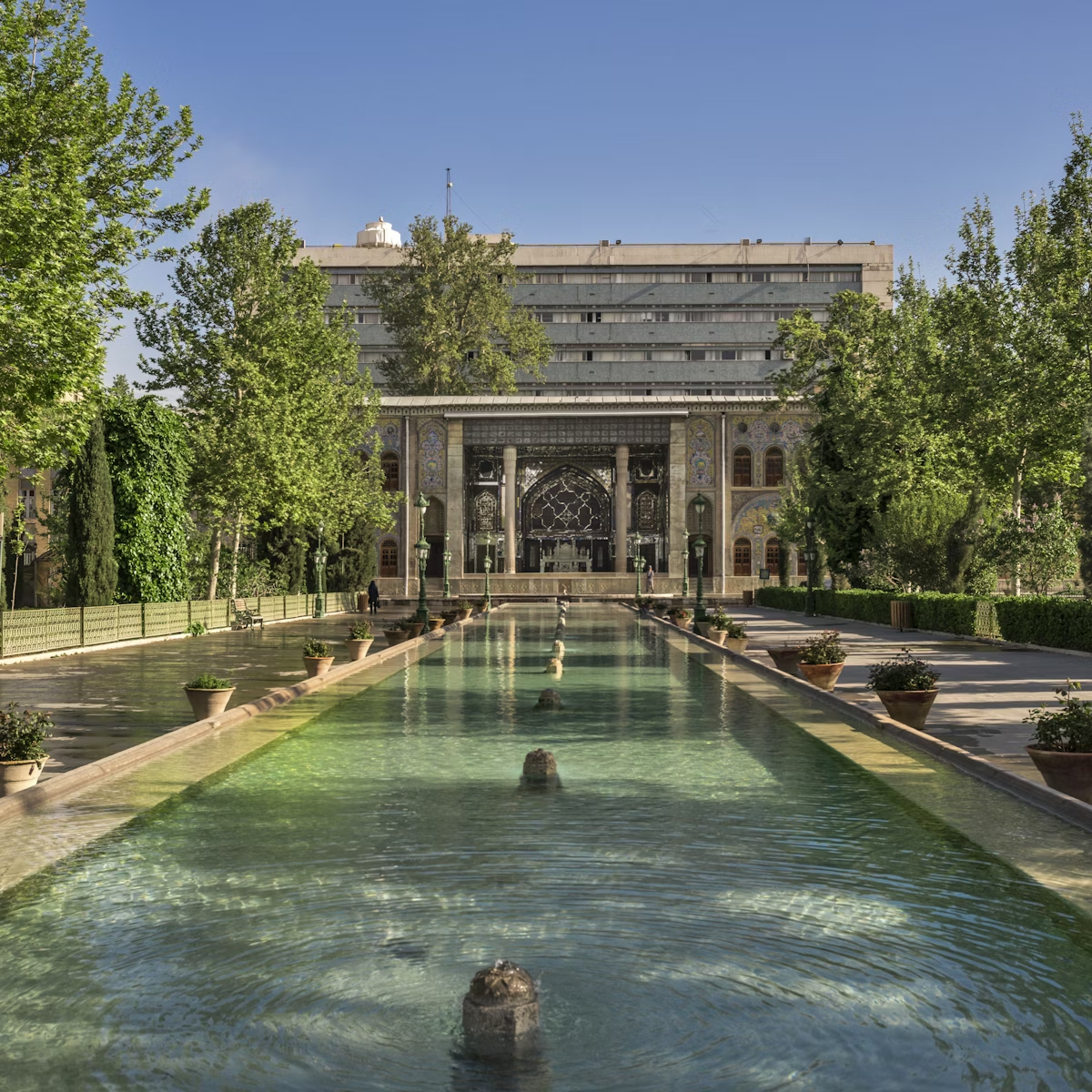
Golestan Palace
The glories and excesses of the Qajar rulers are played out across this complex of grand buildings decorated with beautifully painted tiles and set around…

Sa’d Abad Museum Complex
Sprawling across the foothills of Darband, this estate was a summer home to royals since the Qajar dynasty, although it was the Pahlavis who expanded it…

Grand Bazaar
The maze of bustling alleys and the bazaris (shopkeepers) that fill them make this a fascinating, if somewhat daunting, place to explore. Despite being…
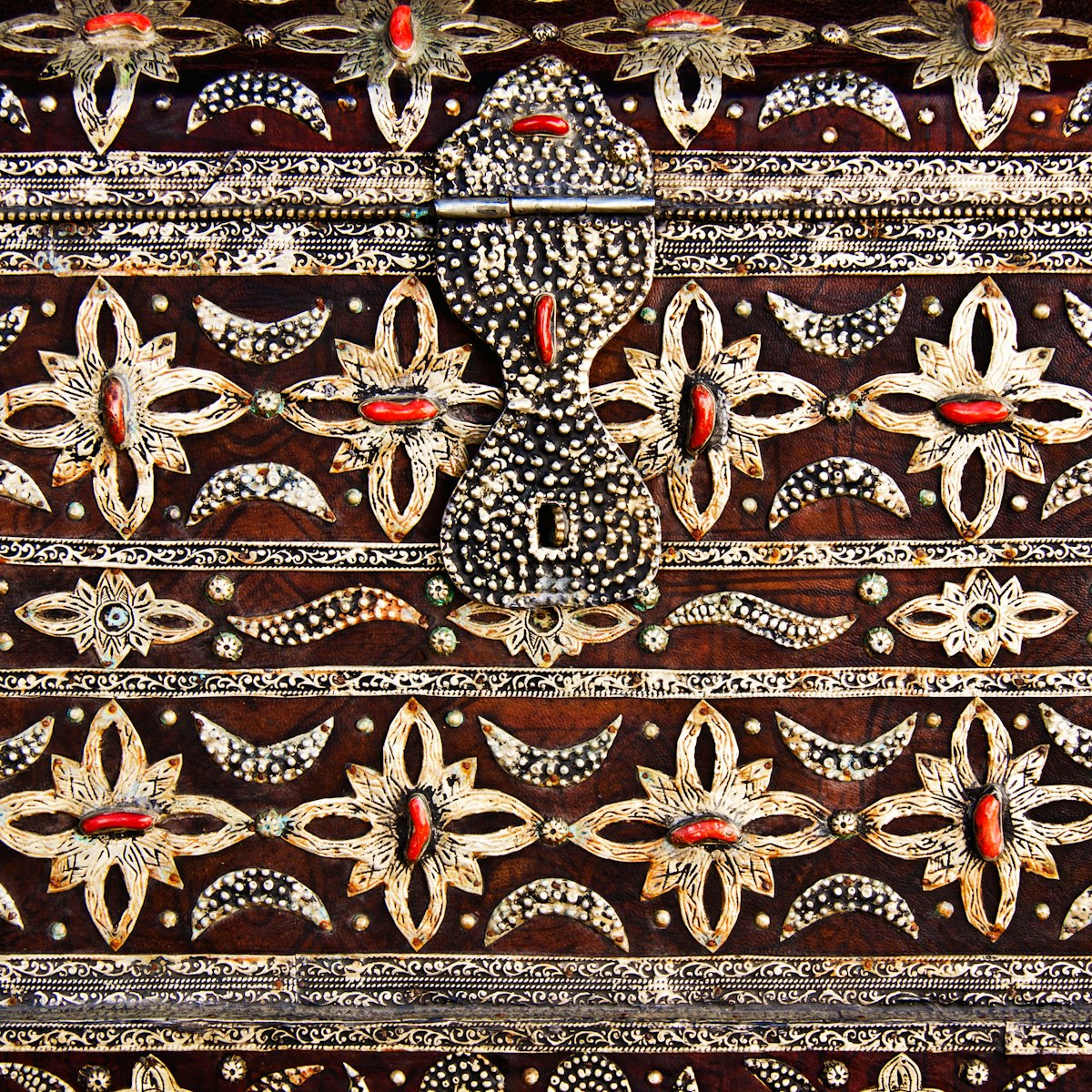
Treasury of National Jewels
Owned by the Central Bank and accessed through its front doors, the cavernous vault that houses what is commonly known as the ‘Jewels Museum’ is not to be…

Niyavaran Cultural-Historic Complex
In the Alborz foothills is the palace where Shah Mohammad Reza Pahlavi and his family spent most of the last 10 years of royal rule. It’s set in 5…

Iran Holy Defense Museum
This epic-scale museum, on a landscaped site of 21 hectares, is dedicated to the Iran–Iraq War, a bloody eight-year conflict that claimed a million lives…

Azadi Tower (Borj-e Azadi)
The inverted-Y-shaped Azadi Tower, built in 1971 to commemorate the 2500th anniversary of the first Persian empire, is one of Tehran's visual icons…

Islamic Museum
Next door to the National Museum, and part of the same complex, this museum offers a stunning collection of arts and antiquities from throughout the…
Latest stories from Tehran

Jan 13, 2020 • 3 min read
The pictures and videos coming out of Iran of the crash of the Boeing 737 operating flight PS752 bound for Kyiv are horrific.

Aug 11, 2018 • 2 min read

Oct 10, 2017 • 5 min read
in partnership with getyourguide
Book popular activities in Tehran

Tehran Travel Guide
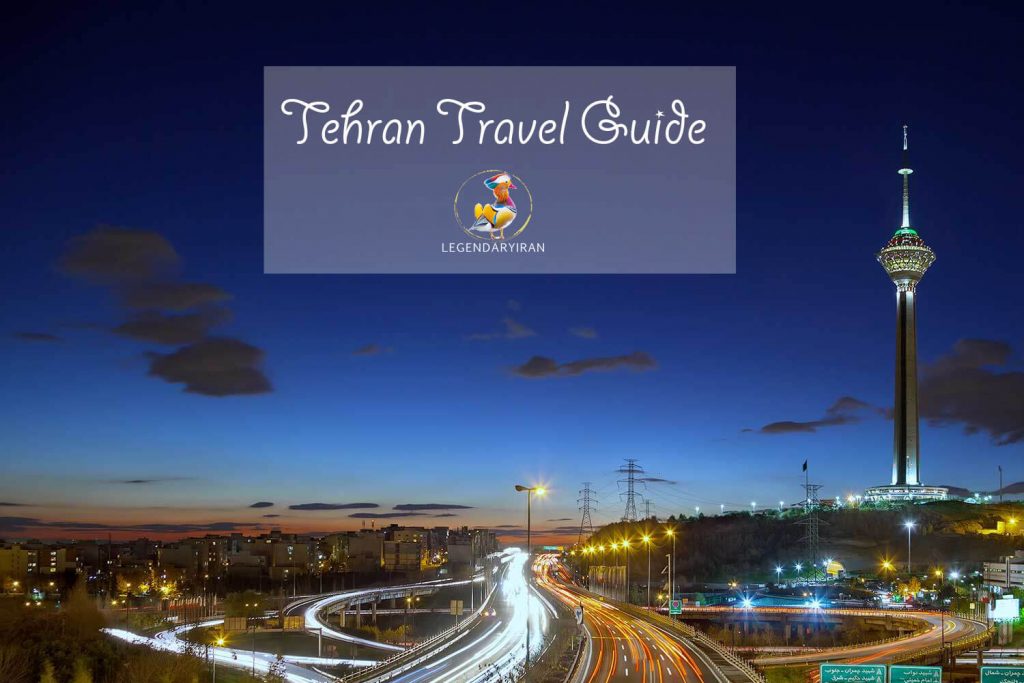
Welcome to Tehran , the modern capital of Iran. Here is an ultimate Tehran travel guide where you can find all essential information about how to travel to Tehran and what to do in this must-see Iran destination.
Tehran at a Glance
Tehran Parts
Can be divided into two parts: luxurious and modern north; poorer south
Capital of Iran
The capital of Iran situated in north-central Iran, at the foothills of the Alborz mountain range
Tehran Population
The largest city in Iran and the home to over 14 million inhabitants
Shopping Malls
Famous for its old and modern shopping centres
Clogged with traffic
Ski Resorts
Houses several international ski resorts
Famous for its numerous museums and palaces
Tehran Altitude
With the altitude of about 1200m above sea level
Tehran Antiquity
Its first settlement dates back to over 7,000 years ago
Where is Tehran?
Tehran is Iran Capital as well as Tehran Province Capital that is located in north-central Iran and the vicinity of Damavand, the highest mountain of Iran. It is noteworthy that the land distance between Tehran and Chaloos at the Caspian Sea coast is about 155 km.
Tehran History
Getting information about the destination’s history, especially a historic destination like Iran, is essential for every tourist. Hence, in this Tehran Travel Guide, we present a brief introduction to Tehran History.
Evidence from excavations indicates that the first settlement of Tehran dates back to over 7,000 years ago. The present-day Tehran was built on the remains of the prominent Median city of Rhages (Rey). Afterward, in 1778, Agha Mohammed Khan, the Qajar King, chose Tehran as the capital of Iran, and the growth of this city was started. As a result, Tehran houses many historical monuments and modern attractions and hosts many tourists from all over the world.
Interestingly, Tehran’s sister cities include Manila in the Philippines, Seoul in South Korea, and Minsk in Belarus.
Where to Stay in Tehran?
How to get to tehran.
As Tehran is the capital of Iran, there are several ways to get to Tehran. Hence, in this Tehran Travel Guide, we introduce you to different ways to travel to Tehran.
You can enter Tehran through Imam Khomeini International Airport. This airport covers several international flights from different countries and foreign cities such as Turkey, Dubai, Doha, Baghdad, Kuwait, Baku, Georgia, Malaysia, Al Najaf, several cities in Europe, and more. Moreover, the foreign airlines which have flights to Tehran International Airport are Qatar Airways, Turkish Airline, Emirates, Air Arabia, Austrian Airline, Fly Dubai, Azerbaijan Airline, Atlas Global, Oman Air, etc. Please mention that with these airlines, you can have connection flights from Tehran to all over the world and vice versa.
Note that Tehran Imam Khomeini International Airport, located about 50 km south of Tehran, provides convenient access to the city’s important parts and downtown. Accordingly, you can use the metro or a taxi to reach the airport. Also, there are buses between Imam Khomeini International Airport and Mehrabad domestic airport.
On the other hand, Mehrabad Airport, the Tehran domestic airport, is located about 52 km from Imam Khomeini International Airport. There are many domestic flights between Tehran and other cities in Iran every day. Among these flight paths, the routes from Tehran to Isfahan, Mashhad, Shiraz, Tabriz, Kerman, Qeshm Island, Kish Island, Bandar Abbas, Ahvaz, and Rasht are highly demanded by tourists.
Finally, as Mehrabad Airport is located in Tehran, near Azadi Tower, which provides convenient access to all parts of the city.
Travel to Tehran by Plane
The most economical way to travel to Tehran is using a bus. You can get to Tehran from anywhere in Iran on a bus. However, although riding a train is the safest option, many passengers choose the bus because it is faster, and there are plenty of VIP buses from different parts of Iran to Tehran.
Accordingly, there are several bus terminals in Tehran include Beihaqi Bus Terminal, South Bus Terminal (Terminal-e Jonoob), East Bus Terminal (Terminal-e Shargh), and West Bus Terminal (Terminal-e Gharb). There are plenty of buses that arrive in/depart these bus terminals from/to different cities of Iran from early in the morning until midnight.
Moreover, West Bus Terminal (Terminal-e Gharb), along with domestic destinations, covers foreign destinations such as Istanbul, Ankara, Baku, Yerevan, Batumi, and more.
Travel toTehran by Bus
You can travel to Tehran from numerous Iran cities by train in different classes from the standard class to a 5-star one. The Tehran train also covers the routes to Qom, Mashhad, Isfahan, Shiraz, Yazd, Tabriz, Ahvaz, etc.
Finally, Tehran railway station is located at the southernmost point of the city and under the best possible conditions, you can reach the city center in about 30 minutes by taxi.
Travel to Tehran By Train
Main motorways and highways connect Tehran to all parts of Iran. So, many passengers choose to travel in a private car as its schedule is flexible and is faster and more convenient than bus and train.
Travel to Tehran By Car
What do you know about tehran attractions, how to move around tehran.
Although most Tehran points of interest are in the city old district, the information about transportation in Tehran is essential for every tourist. Hence, in this Tehran Travel Guide, we introduce you to different ways to move around Tehran. In any case, you can rent a private car with a driver, use taxis or public transports such as buses or the metro.
Get around Tehran in Taxi
You can use an internet Taxi called Snapp and TAPSI. These kinds of Taxis work like Uber. You can download the application on your phone and easily take an internet taxi within a few minutes wherever you are. Also, you can pay the taxi fee in cash (Rials). On the other hand, another option is to get a taxi through a “telephone taxi agency.” These taxis will get you to the destination and also wait for you whenever you want. To get this kind of taxi, you can ask your hotel reception or your Iranian friend to do it for you.
Get around Tehran in Metro
There are also metro lines in Tehran, which take you to most parts of the city and Imam Khomeini International Airport.
Get around Tehran in Bus
Although the bus system covers all parts of Tehran, the bus stations are sometimes confusing for a foreign traveler. However, you can get complete information about your destination station and the bus that you should get from the locals and use this kind of transportation. Also, you can use the Bus Rapid Transit System (BRT) in most parts of Tehran. Notably, there are separate men’s and ladies’ sections on each bus.
Get around Tehran in Private Car with Driver
Although renting a private car with a driver is the most expensive option to get around Tehran, it is the fastest and most convenient choice. Besides, you can rent a car with a driver for one day to go to the tourist attractions that are located around Tehran. Finally, the expense of renting a private sedan car with a driver per day starts about 3000000 rials.
What to Eat in Tehran?
Where to eat in tehran best restaurants in tehran.
In recent years, visiting restaurants and tasting different foods have become one of the most attractive activities during a trip. It is interesting to know that this issue has been taken very seriously in Iran and you can find excellent and even international restaurants in the cities of this country. However, you are in Iran for a short time, and it is better to go for the best options in this limited time.
Accordingly, selecting a good restaurant in Tehran, where there are restaurants on every corner, is very difficult. So, if you want to taste delicious and quality food in the best restaurants in Tehran during your trip, join us in this Tehran travel guide.
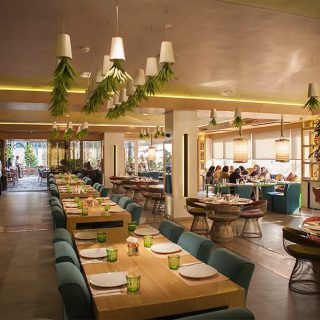
Kubaba Restaurant
Kubaba Restaurant, located on Jordan Street in Tehran, offers various dishes in a very stylish space. You can even try Lebanese and Afghan dishes at this restaurant. Among the dishes, we offer Falafel, Samosas, Alexander Effendi, Afghan pulao, eggplant moussaka, and eggplant stew (Khoresht-e Bademjan).
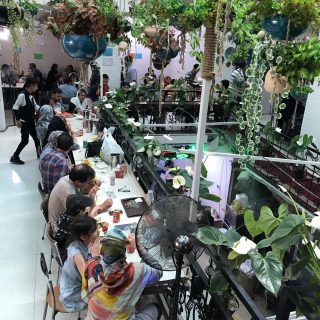
Moslem Restaurant
One of the most famous restaurants in Tehran is Moslem Restaurant, located in Tehran Grand Bazaar. In this restaurant, traditional Iranian food is served in an intimate atmosphere. Other good restaurants in Tehran Grand Bazaar include Shamshiri Restaurant and Sharaf Al-Islami Restaurant.
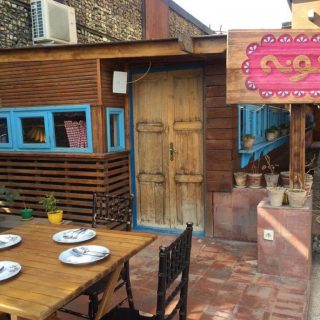
Khooneh Restaurant
Khooneh Restaurant, located at Jahan Koodak crossroads, is on the list of the most famous restaurants in Tehran. There is a warm atmosphere in this restaurant that you feel at home while eating there. ََAlso, They throw carpets on the floor, set a lovely table and serve the traditional food in the old plates
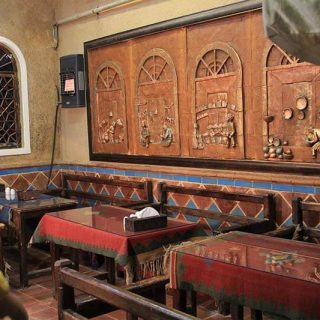
Morshed Restaurant
Morshed Restaurant in Tajrish is another famous restaurant in Tehran that serves delicious kebabs. If you like restaurants with a traditional atmosphere and the best quality Iranian food, Morshed Restaurant can be your best choice.
WhatsApp us
Two Day Tehran Itinerary + 13 Things To Do In Tehran
Updated June 2024, Two Day Tehran Itinerary + 13 Things To Do In Tehran was originally published in May 2020
Tehran in many ways feels like a capital city in all the right ways. The juxtaposition of the chaotic traffic and bustle on the streets against the laid back Persian chaikhana culture, done up women with their headscarves teetering on the very back of their head passing a woman in a black chador, clutching the fabric tightly below her chin, brilliant museums and art galleries versus the propaganda art pieces painted on the streets.
Tehran is a pretty modern city, when compared to the remainder of Iran, but in many ways it still has an old-meets-new feel to it as tradition and 21st century seem to collide here.
The small handful of independent travelers I met gave Tehran a pass, just using it as a place to catch a night of sleep after flying and then continuing on to Central Iran’s historical gems.
I, personally have a thing for these not-so-loved capitals. Tashkent , Dushanbe , Bishkek , Cairo – give me weeks in them and I still rustle up plenty of things to keep myself entertained and occupied, though I know most of you are on limited time off and are trying to make the most of those precious days on your trip.
I knew as soon as I had arrived in Iran I would be back again and again, so getting to Tehran and running out of energy wasn’t the end for me, I know there will be more opportunities.
I did Iran backward. Most people seem to enter the country via Tehran and start their adventure from there. I had a different trajectory, wrapping up a tour I co-lead to Afghanistan and crossing the border from Herat to Mashhad.
With that said, by the time I made it to Tehran I was running out of time on my visa, and I was running out of steam. In the last few years, I haven’t really been traveling to new countries, and being that Iran was the first new place I really delved into more recently, I was like a kid in a candy shop.
Needless to say, I still saw a lot in Tehran but with that said, I only had two days to dedicate to it and I didn’t want to rush myself too much. So based on my two day Iran itinerary, here are the best things to do in Iran in two days. For further planning of your trip to Iran, I recommend grabbing a copy of Bradt’s Iran guidebook .
Planning your trip to Iran? Check out my Iran itinerary for 1-4 weeks
Day 2: Revolution, Propaganda & History
A two day tehran itinerary, day 1: palaces, mosques & bazaars, golestan palace.
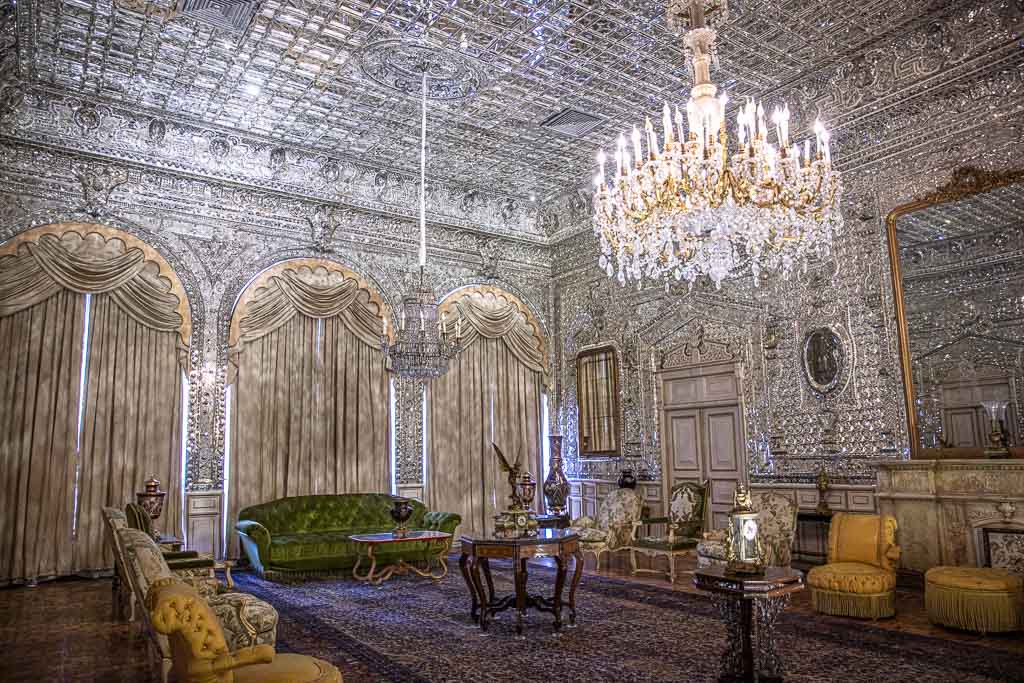
Golestan Palace is one of the oldest attractions in Tehran, dating back to the Qajar era. It served as the royal complex consisting of numerous intricately tiled buildings set around a garden.
Note that there are entrance fees to the different areas of the palace. I opted to only visit the main halls, which include the Hall of Mirrors and the Negar Khana (Iranian Art Gallery). There are 9 other museums to visit aside from the main halls, which cost 300,0000 IRR | 20,000 IRR (foreigner|Iranian) each to enter.
Golestan Palace Admission + Main Halls: 500,000 IRR for foreigners | 250,000 IRR for Iranians
Metro Stop: Panjdah e Khordad
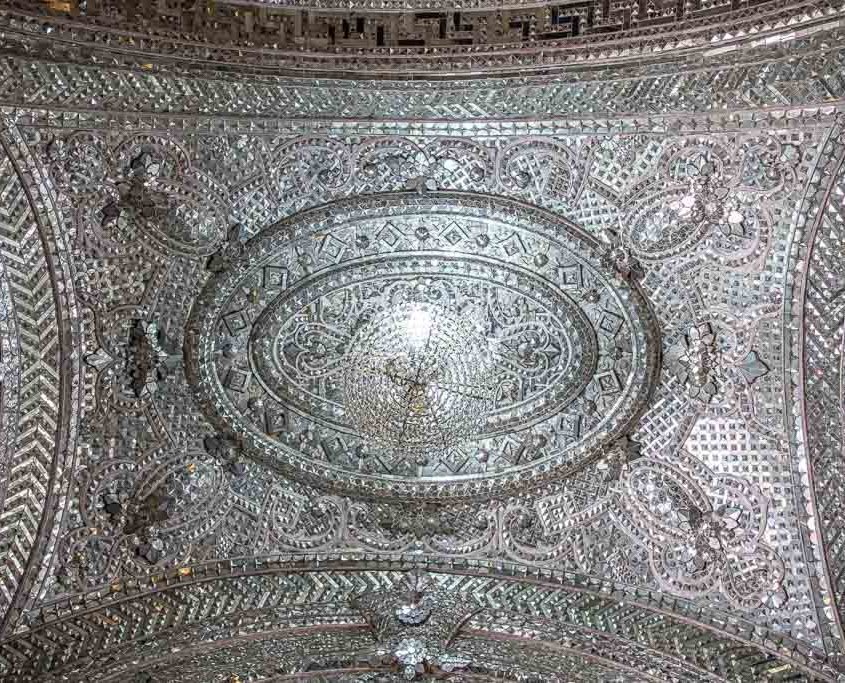
Check out my city guides to Kashan , Esfahan , & Shiraz to plan your trip to Iran
The Grand Bazaar

I have a habit of turning up to places that are almost never closed, on a day they’re closed. This was the case when I went across the street from Golestan Palace into the Tehran Grand Bazaar, everything was shut.
I never tracked down why exactly it was shut (it wasn’t a holiday or anything from what I’m aware), but I did get to peek in at a section on my way to Imam Khomeini Mosque, and I’d say it’s definitely worth a whirl around.
Imam Mosque & Zeid Shrine
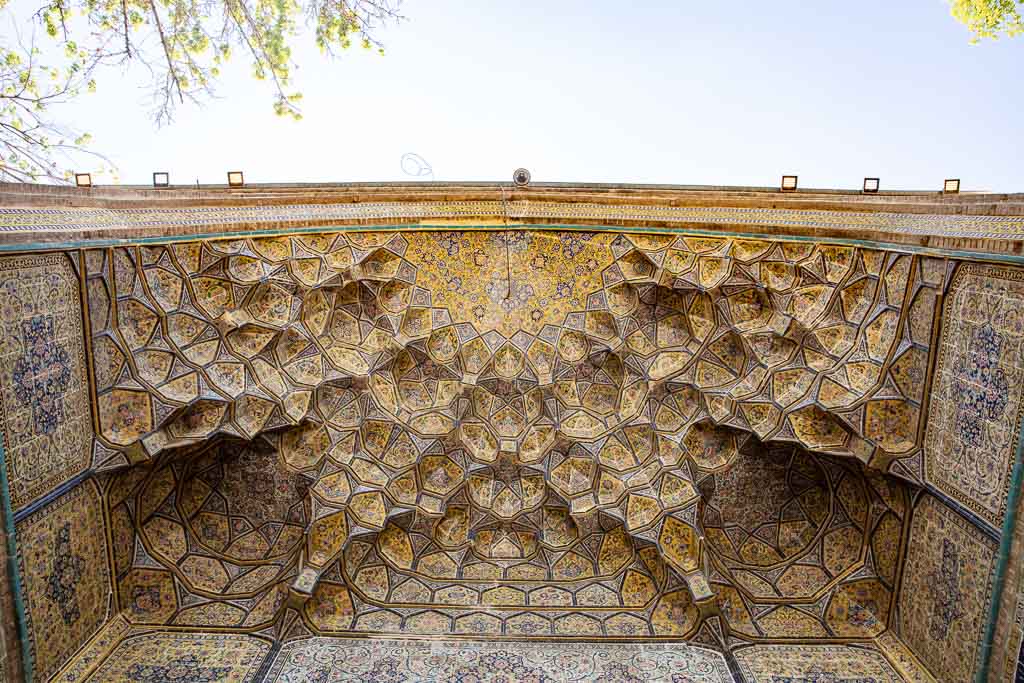
In the northern corner of the Tehran Grand Bazaar is Imam Mosque and Imamzadeh Zeid.
Imam Mosque was called Shah mosque until the 1979 Revolution, and you may still hear it referred to as such. Imamzadeh Zeid is a shrine to a descendant of the Prophet Mohammed.
Don’t know where to start with the visa process? Check out my guide to getting an Iranian visa
Talaghani Park
Talaghani Park is the perfect place to head around lunchtime. The park includes the beautifully sculpted Tabiat Bridge, the Holy Defense Museum, and a large food court aside from its greenery and walk through a small forest on a hill.
Metro Stop: Shahid Haghani
Holy Defense Museum
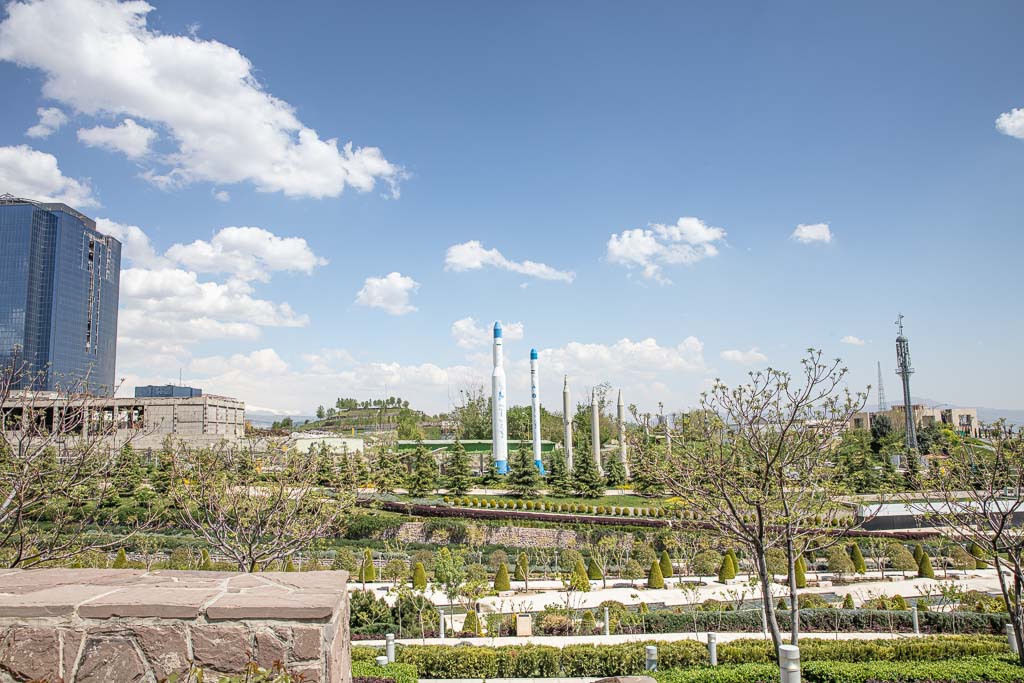
The Holy Defense Museum is dedicated to the 8 year long Iran-Iraq War, as well as the Iranian Revolution. The museum does a great job of explaining the conflict in detail.
Entrance: 200,000 IRR for foreigners | 30,000 IRR for Iranians
Heading northwest after Tehran? Check out my Tabriz Travel Guide
Khorramshahr Mosque

This is a replica of the Khorramshahr Central Mosque in the inland port city of Khorramshahr. The city was besieged during the war, seeing parts of its mosque become dilapidated due to the fighting.
The replica is quite beautiful, located just outside the Shahid Haghani Metro Station.
Wanna see Iran’s otherworldly landscapes? Check out my guides to the rainbow island of Hormuz and to Shiraz’s pink salt Maharloo Lake
Tabiat Bridge

This double-decker bridge designed by Leila Araghian connects Talaghani Park and Abo-Atesh Park on opposite sides of Modarres Expressway, with epic views of the Alborz Mountains to the north of Tehran.
Azadi Tower
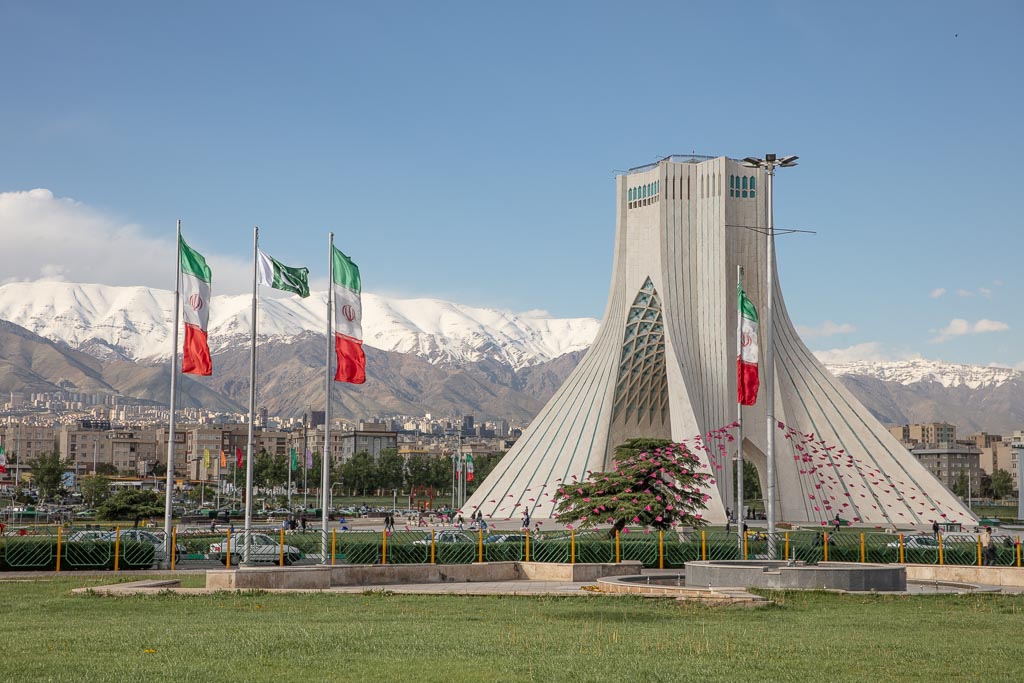
In a clash of tradition meets modern- Azadi Tower gleams over Azadi Square in an opulent manner.
Built in 1971 to commemorate the 2,500th anniversary of the Persian Empire, 8000 pieces of white marble adorn the 45 meter high tower, incorporating an iwan-style arch.
For me anyways, Azadi Tower had always been a symbol I associated with Iran after learning about the 1979 Revolution that resulted in the overthrow of the Pahlavi Dynasty and takeover by the Ayatollah Ruhollah Khomeini in my world history class in high school (that was the same year of the 9/11 attacks which spurred our instructor to teach the history of Central Asia and the Middle East in hopes for us to better understand the history of the regions and how that shaped the strained relations between them and the US, rather than teaching the typical European-Centric Britishified version of world history that was typically taught for that class). I remember seeing the Azadi Tower in the distance of several images of protests.
The trickiest part about visiting the Azadi Tower is walking across the busy roundabout around it. The metro and bus station are outside of the roundabout, so you’ll need to cross several lanes of traffic in order to reach it.
Iranian traffic can be bonkers, so use caution when crossing. If you’re new to Iran, look for locals crossing and cross with them- they usually know what they’re doing. You can enter the tower for a fee and climb or take the elevator to the top. Inside are a gallery and a cafe.
Metro Stop: Maydon e Azadi
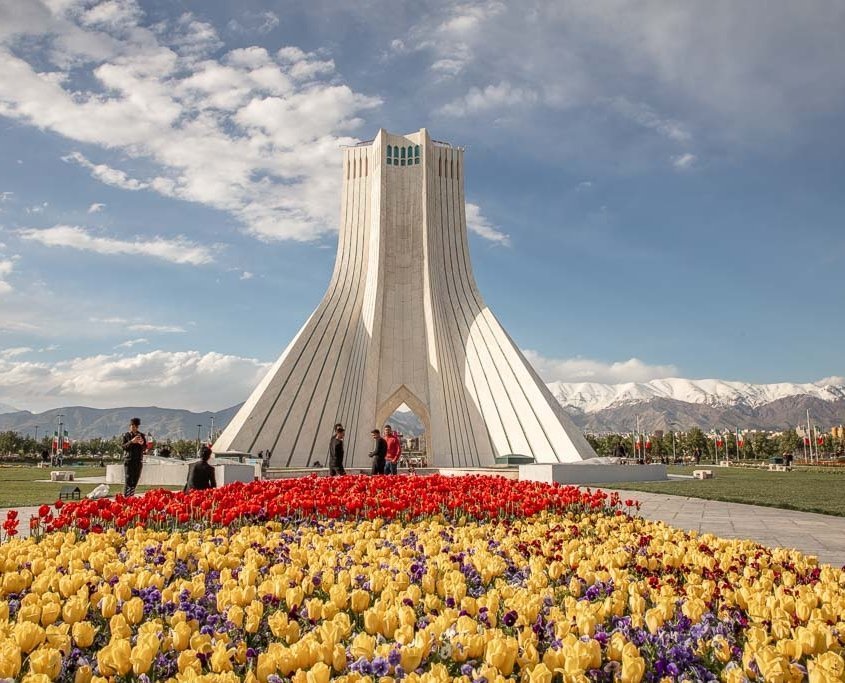
Plan an epic two day trip to Yazd

US Den Of Espionage
At the height of the 1979 Revolution, students stormed the US Embassy, holding 52 diplomats hostage for 444 days. The site of the former embassy now serves as an anti-America museum highlighting the spying that went on at the embassy.
The front of the former embassy grounds houses a large garden now called the Museum Garden of Anti Arrogance , which was used as a training center for the Revolutionary Guard.
Several anti-America murals decorate the walls around the garden that were commissioned by the Iranian government. In the summer of 2019, the original murals were painted over and with new ones.
I personally found the museum fascinating as well as the murals, both old and new.
Metro Stop: Talaghani
Propaganda Murals
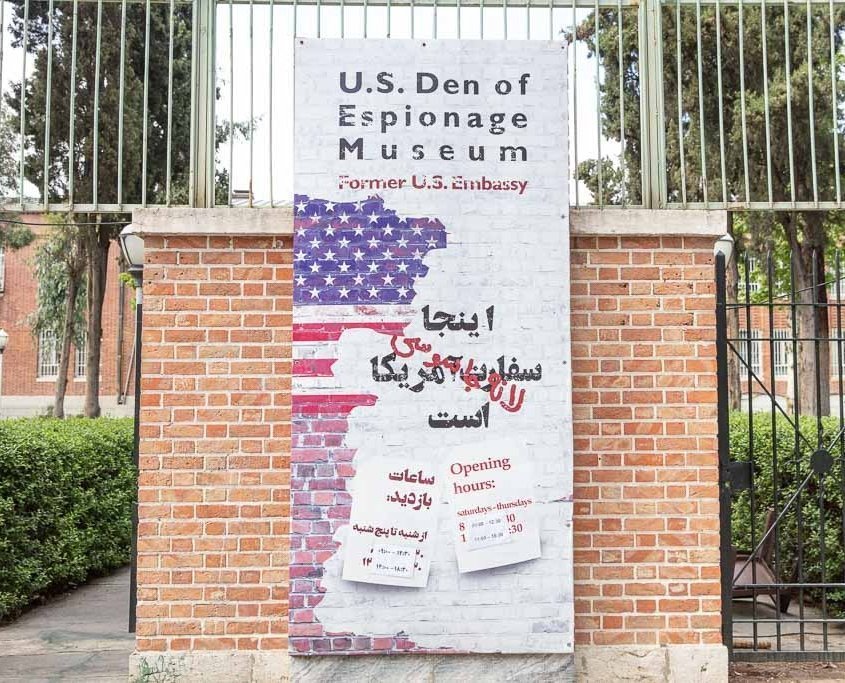
The outside walls of the former US Embassy, as well as many of the brick walls that line Talaghani Street feature anti-America and anti-Israel propaganda.
I did read that in November 2019 (7 months are my visit) that the government commissioned new murals to be painted over some of the original ones. These murals still depict anti-American sentiments but point toward a weaker America riddled by its own problems, different to the portrayal of the US in the old murals. Click here to read an article and see images of the new murals.
The one mural I knew most well prior to my visit to Tehran was the Stars & Stripes Mural, painted on a building on Karim Khan Boulevard, a few blocks up from the former US Embassy. The mural is one of the most photographed propaganda pieces in Tehran, featuring an American flag with skulls in liu of the stars, stars of red fading into bombs, and the statement “Down with the USA” printed across it.
Metro Stop: Shohada ye Haftom e Tir
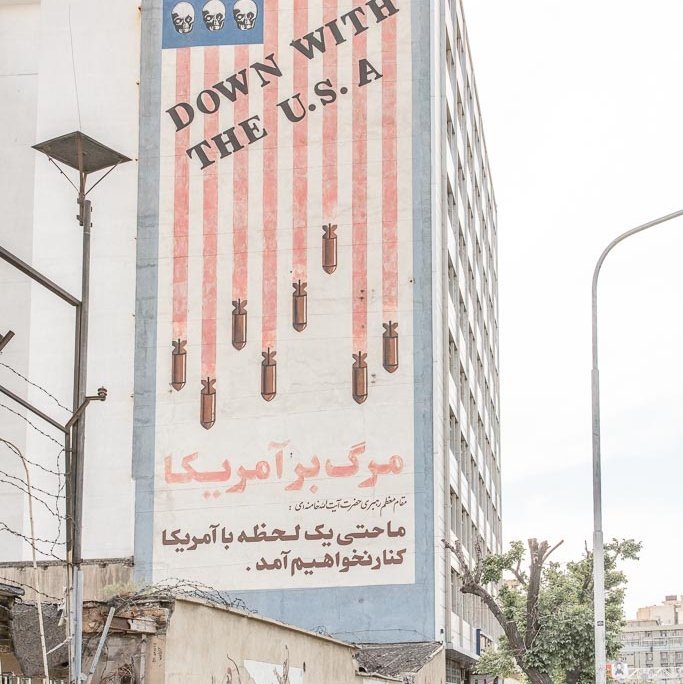
National Jewels Museum
Truth be told, I didn’t visit the Treasury of National Jewels myself, but after hearing people back at my hostel talking about it, I really wished I had, so I added it to the list anyway. Rulers from the Safavid, Qajar, and Pahlavi wore heaps of jewels and decorated much of their belongings in the. The Jewel Museum houses several of these pieces.
Metro Stop: Sa’di
Heading to the northwest next? Check out my quick guide to Kandovan
National Museum Of Iran
Iran has a long and fascinating history, so if you want to get down on some Iranian history, the National Museum of Iran is the place to visit.
Entrance: 500,000 IRR for foreigners | 50,000 IRR for Iranians
Metro Stop: Imam Khomeini
Tajrish Bazaar & Saleh Shrine

I don’t know how they compare as the Tehran Grand Bazaar was closed when I visited, but I quite liked the Tajrish Bazaar, located on the northern fringes of Tehran.
You can find just about anything wandering the maze-like alleys of the bazaar. Don’t miss the Saleh Shrine located within Tajrush Bazaar too.
Metro Stop: Tajrish
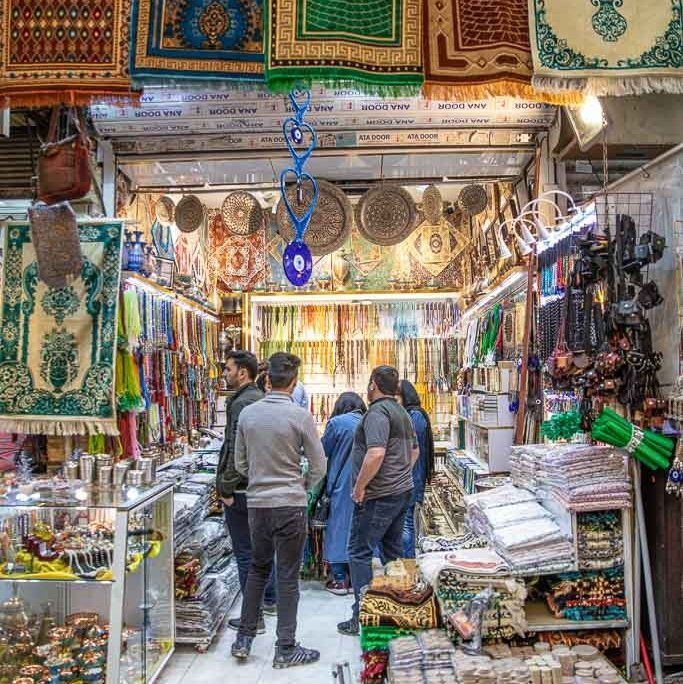
Where To Stay In Tehran
I personally stayed at the Tehran Heritage Hostel and definitely recommend it for those sticking to a smaller budget. The rooms are clean and nice, the staff is extremely helpful, and the included breakfast is phenomenal. It’s centrally located, and just a few minutes walk from Baharestan Metro Station.
Tehran Heritage Hostel
HI Tehran Hostel
Tehran Grand Hotel
Ferdowsi International Grand Hotel
Hanna Boutique Hotel
So, how much does it cost to backpack across Iran? Find out here
Getting Around In Tehran
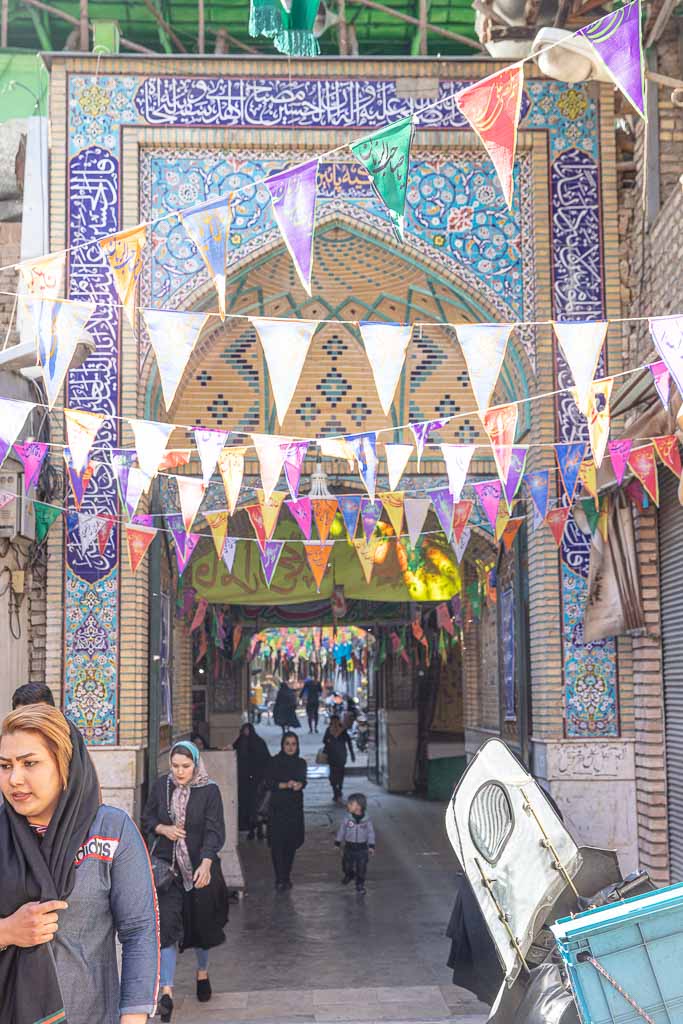
Metro: Getting around in Tehran was quite easy in my opinion. I entirely got around the city by metro. A metro ticket costs 12,000 IRR for a single trip, or you can purchase an electronic card for 50,000 IRR and load credit on to them at machines using cash (these work for public buses too).
There are currently five metro lines in Tehran, so getting around using it is quite efficient. Metro trains run from 5:30 am to 11:00 pm.
Note that there are ‘women only’ cars on the train, so if you’re a solo female you may feel more comfortable here. The women-only cars are clearly marked.
Snapp: Snapp is essentially Iran’s version of Uber. Unfortunately due to my iPhone being registered in the US, when I downloaded the app it would not open and give me message saying that due to sanctions I couldn’t use it.
I did find it easy enough to just ask someone to order me a Snapp and then pay cash to the driver at the end of the ride.
Taxi: There are heaps of taxis in Tehran as well, which can be easily hailed off the street, or you can have your accommodation or restaurant call one for you. Taxis in Iran don’t have meters, so you’ll need to negotiate a price. In general in my travels in Iran, I found that drivers generally quoted very close, if not the same prices that locals had told me or were in my guidebook.
Going at it alone? Check out my Solo Female Guide to Iran
Getting In & Out of Tehran
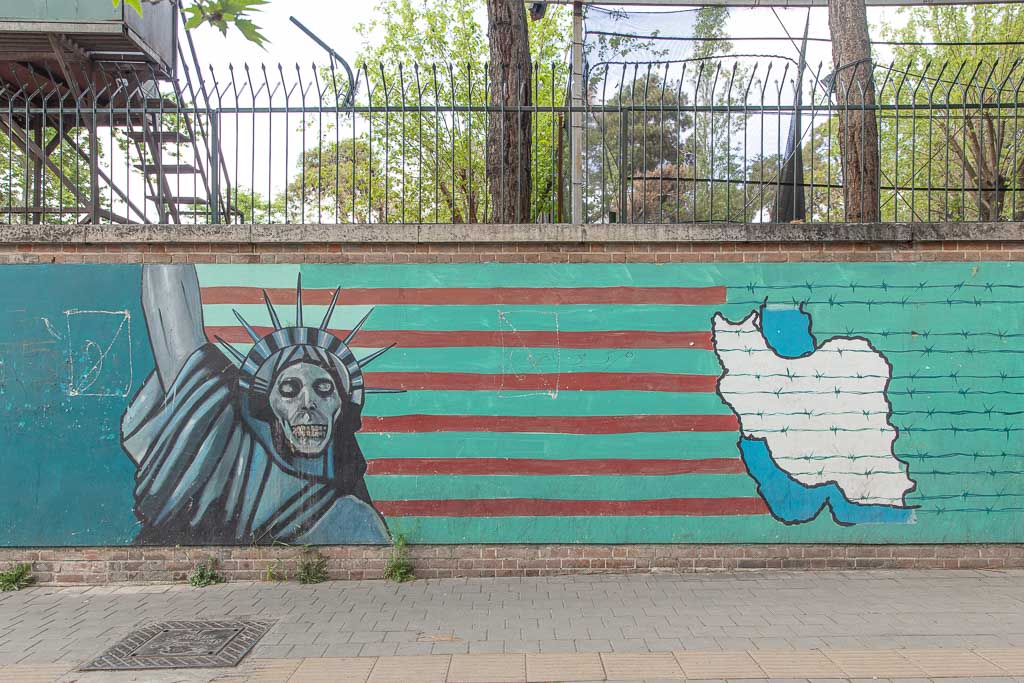
Getting in and out of Tehran is a breeze with buses connecting just about everywhere in the country. There are also two international airports serving Tehran. Imam Khomeini International Airport about 35 kilometers south of the city, and Mehrabad International Airport on the western outskirts of Tehran.
If you are planning to fly between destinations in Iran, click here to book your tickets . You can easily purchase bus tickets once you arrive in Iran to most destinations, but if you like the peace of mind of having tickets purchased and settled in advance, click here to order your bus tickets in Iran .
Have Any Questions About This Two Day Tehran Itinerary?
Ask your Itan travel questions in the comments section below.
Need Travel Insurance For Iran?
Start shopping plans over at 1stQuest as most other travel insurance providers will not cover travel in Iran .
More Posts from Iran:
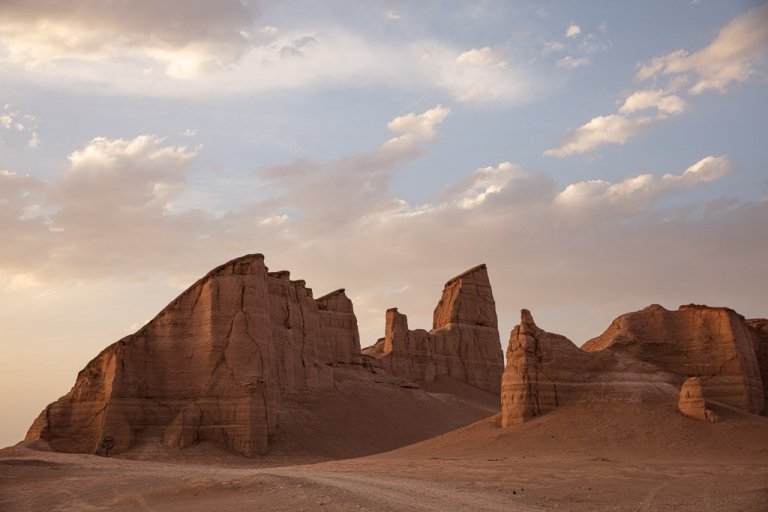
A Day Trip To The Kaluts Desert In Iran
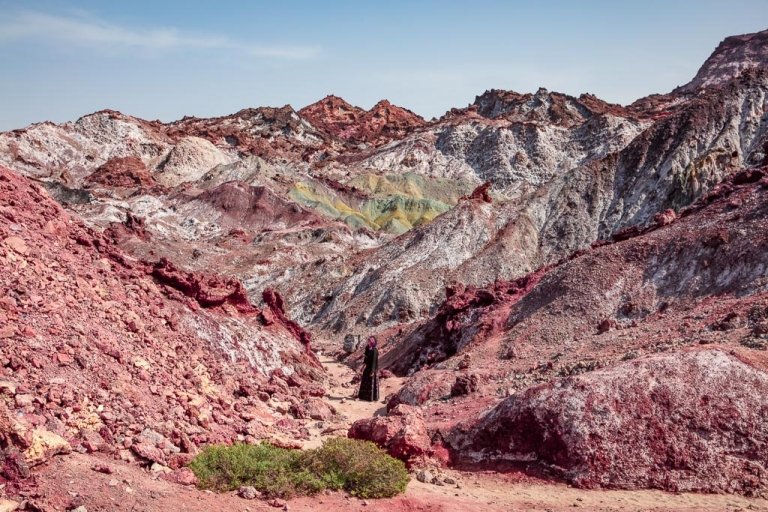
Solo Female Travel In Iran

Kashan Travel Guide + 5 Things To Do In Kashan

How To Get To Kandovan, Iran
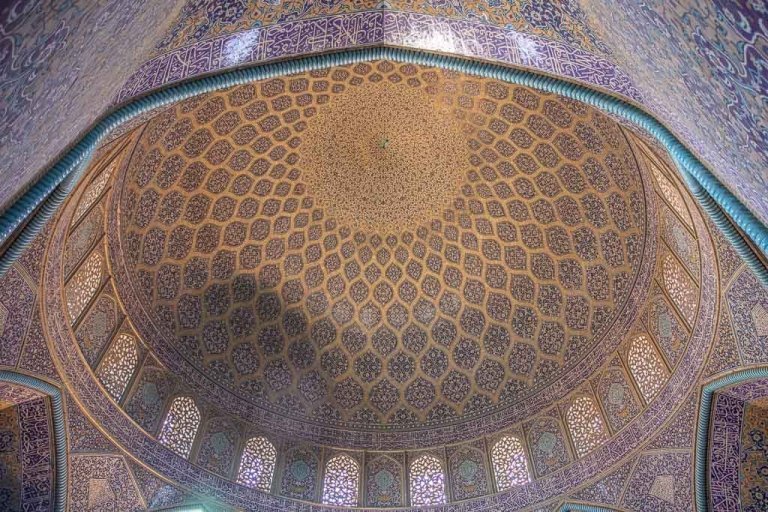
How to Get an Iran Visa on a US Passport

Iran-Iraq Border Crossing Report At Tamarchin/Haji Omaran
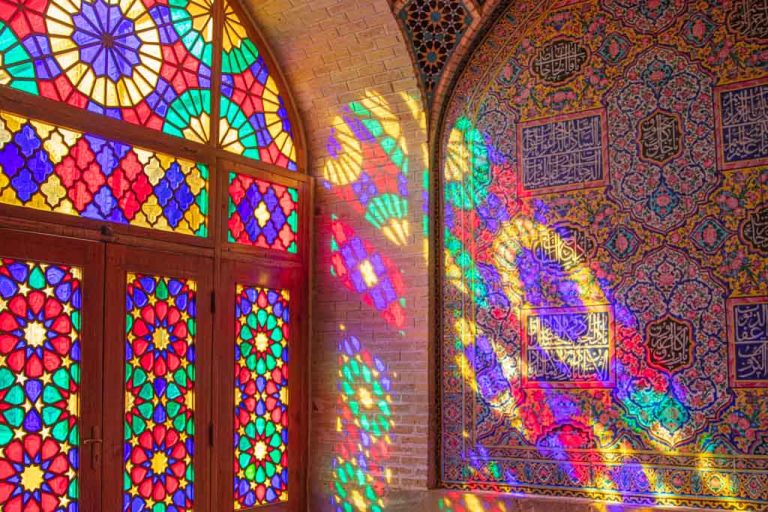
Shiraz Travel Guide + 17 Things To Do In Shiraz
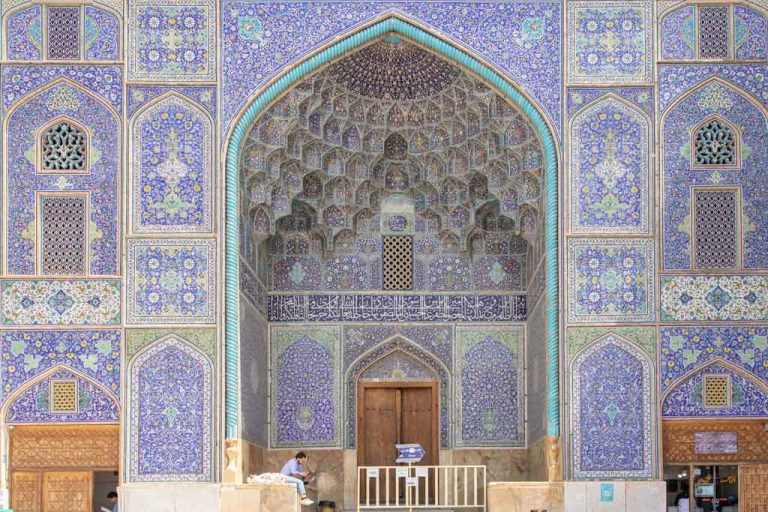
Esfahan Travel Guide + 19 Things To Do In Esfahan
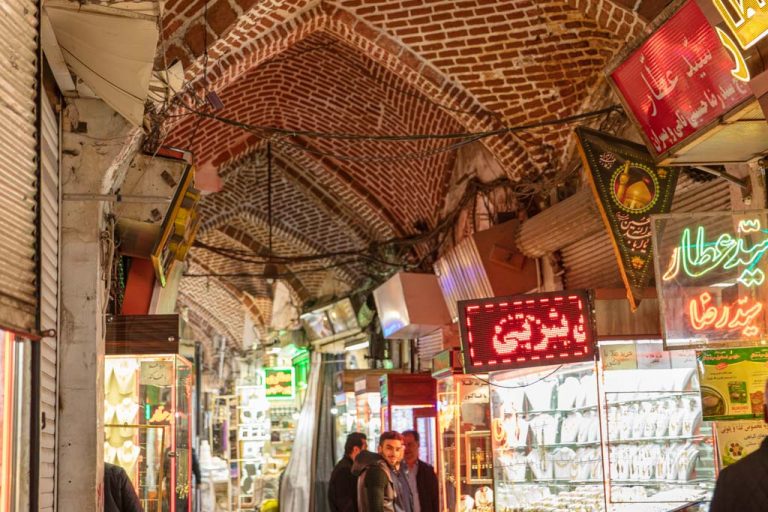
Tabriz Travel Guide + 9 Things To Do In Tabriz, Iran
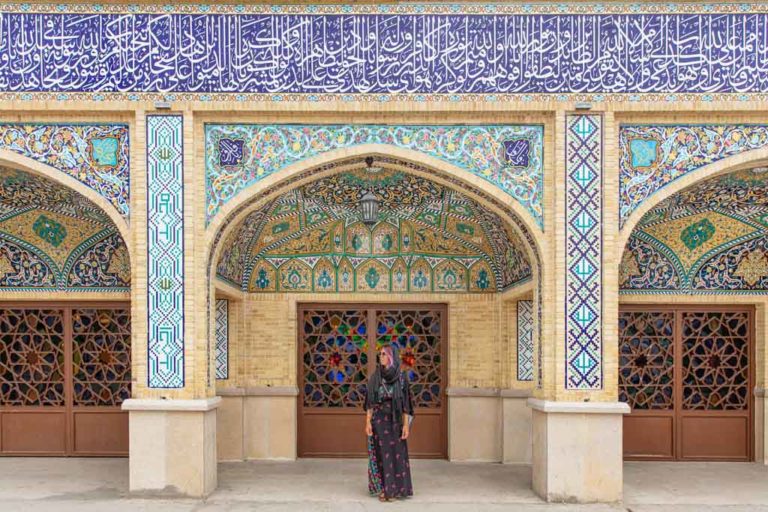
Iran Itinerary For Independent Travelers
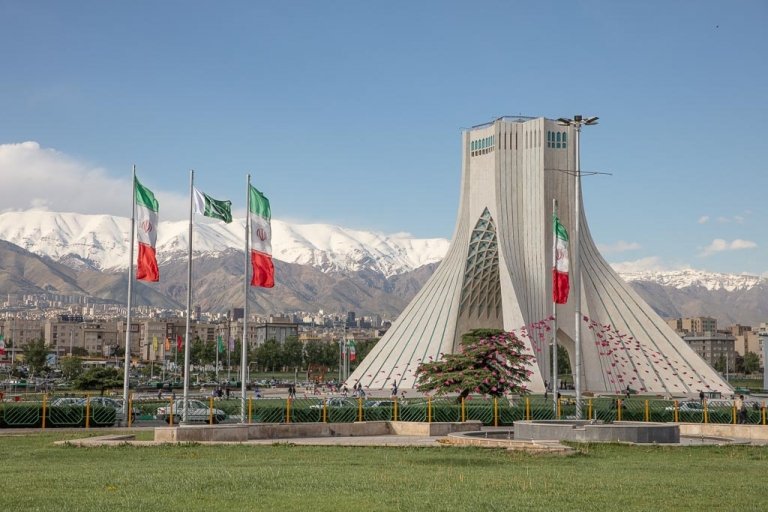
How Much Does It Cost To Backpack In Iran?

How To Have An Epic Two Days In Yazd, Iran
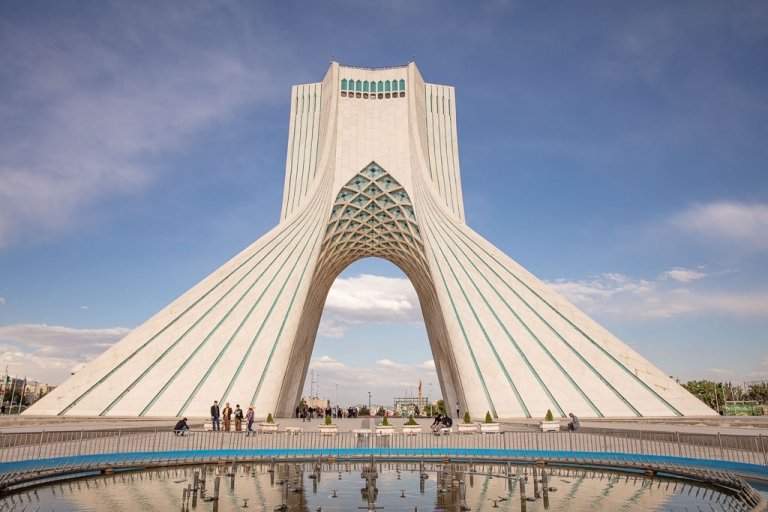
Afghanistan-Iran Border Crossing At Islam Qala/Dogharoun
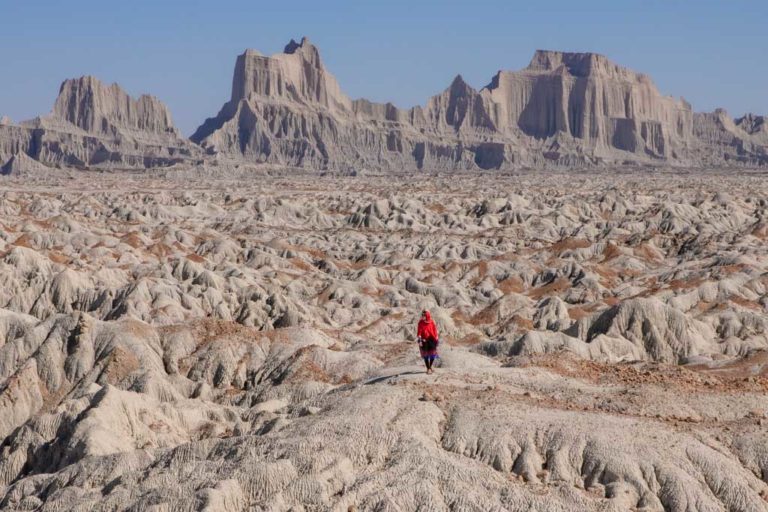
A Sistan & Balochistan Travel Guide, Iran
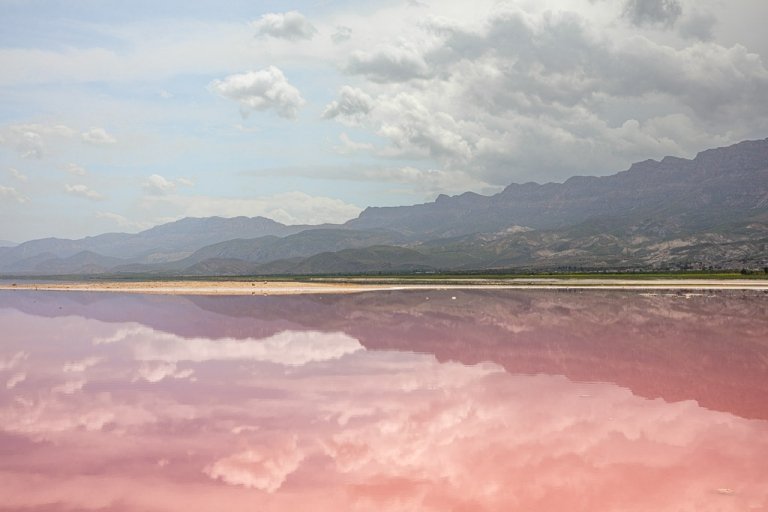

Visiting Shiraz’s Pink Lake: Maharloo Lake, Iran
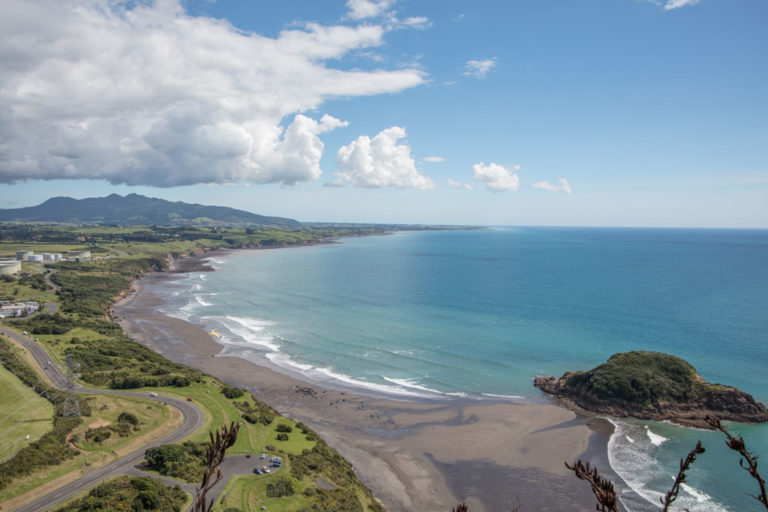
The Best Road Trips In The World
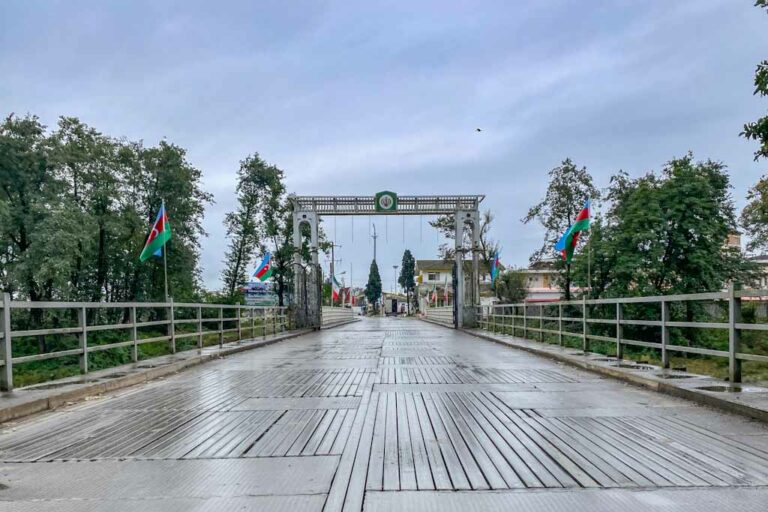
Crossing the Azerbaijan-Iran Border at Astara

How To Get An Iranian Visa In 2024
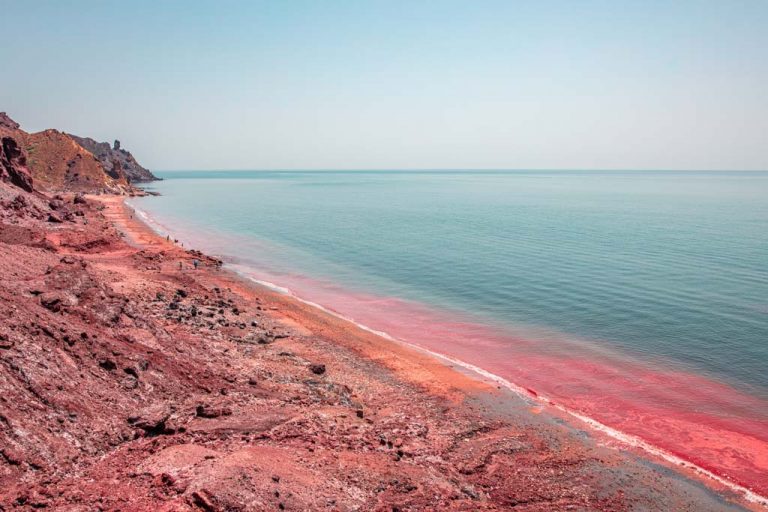
Hormuz Island: A Guide To Iran’s Rainbow Island
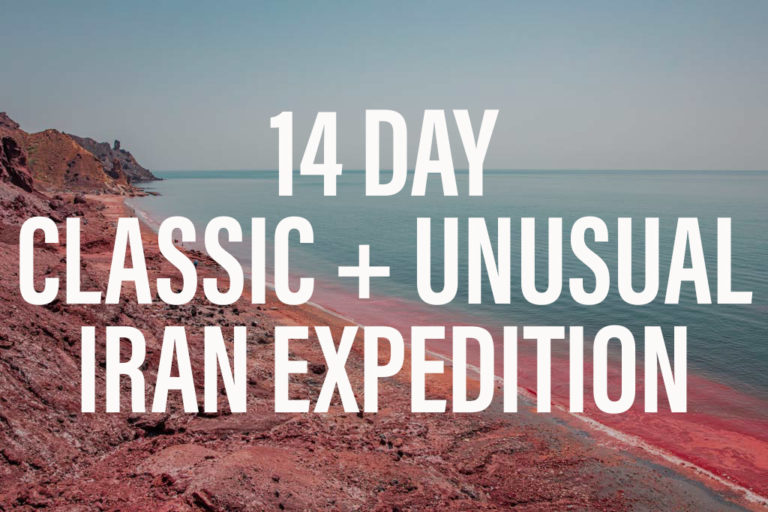
14 Day Classic Iran + Hormuzgan Expedition
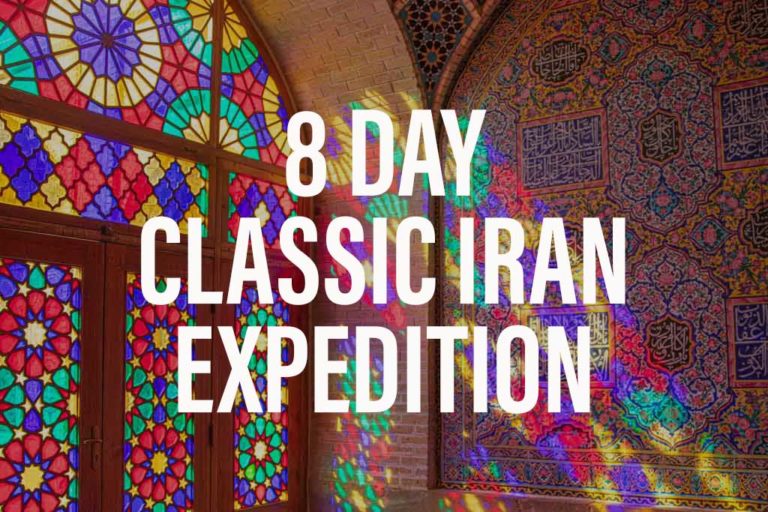
8 Day Classic Iran Central Cities Expedition
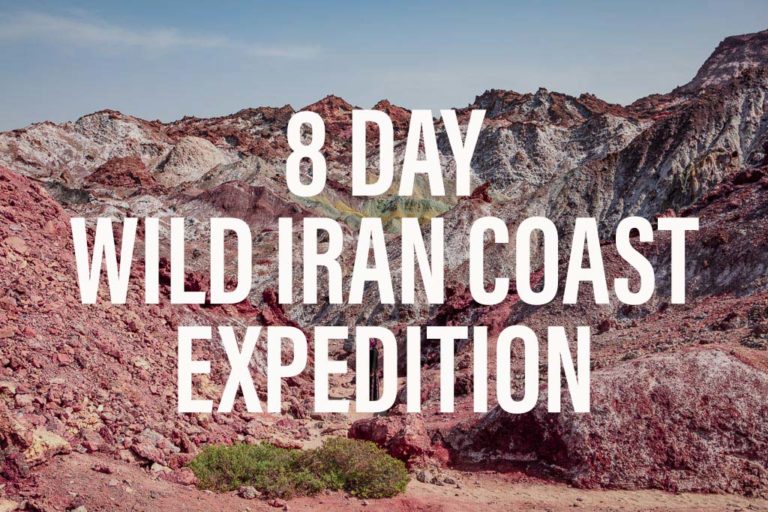
8 Day Wild Iran Hormuzgan Coast Expedition
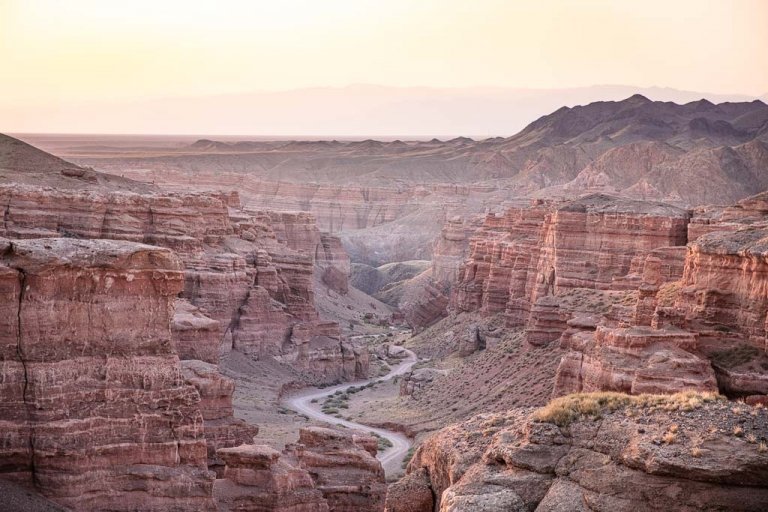
10 Off The Beaten Path Destinations For 2021
Leave a comment cancel reply.
Your email address will not be published. Required fields are marked *
Notify me of followup comments via e-mail. You can also subscribe without commenting.
This site uses Akismet to reduce spam. Learn how your comment data is processed .
Cookies on GOV.UK
We use some essential cookies to make this website work.
We’d like to set additional cookies to understand how you use GOV.UK, remember your settings and improve government services.
We also use cookies set by other sites to help us deliver content from their services.
You have accepted additional cookies. You can change your cookie settings at any time.
You have rejected additional cookies. You can change your cookie settings at any time.
Entry requirements
This information is for people travelling on a full ‘British citizen’ passport from the UK who choose to travel against FCDO advice. It is based on the UK government’s understanding of Iran’s current rules for the most common types of travel.
The authorities in Iran set and enforce entry rules. If you’re not sure how these requirements apply to you, contact the Iranian Embassy in the UK .
You are at risk of arrest, detention and a death sentence if you travel to Iran.
British nationals are at increased risk of questioning and detention by the Iranian authorities. See Safety and security .
COVID-19 rules
There are no COVID-19 testing or vaccination requirements for travellers entering Iran.
Passport validity requirements
If you choose to enter Iran against FCDO advice, your passport must have an ‘expiry date’ at least 6 months after the date you arrive. It’s not possible to apply for a British passport from Iran.
Check with your travel provider that your passport and other travel documents meet requirements. Renew your passport if you need to.
You will be denied entry if you do not have a valid travel document or try to use a passport that has been reported lost or stolen.
Dual nationality
Iran does not recognise dual nationality. If you are a dual national, the Iranian authorities will consider you to be an Iranian national. They are highly unlikely to accept any requests made by the UK government on your behalf.
All Iranian nationals must enter and leave Iran using an Iranian passport. If you want to travel to the UK from Iran, you may also need to prove to the Iranian authorities that you have the right to enter the UK. You must be able to produce your British passport or a valid UK visa in your Iranian passport on request. You may face increased scrutiny, questioning or detention because of your connection to the UK.
Recent media reports suggest Iran is willing to detain people who have been visiting relatives inside Iran. Having travelled to and from Iran previously without issue does not guarantee your safety. See Safety and security for more information about the risks British nationals face in Iran.
Being considered an Iranian national
Even if you do not consider yourself Iranian, the Iranian authorities may see you as an Iranian national. For example, if your father is Iranian, or if you’re married to an Iranian man.
Previous travel to Israel
If your passport has stamps from Israel or other countries’ border crossing points with Israel, you may be refused entry to Iran.
Overseas British passport applications
You cannot apply for a British passport from Iran.
You can apply in a neighbouring country . Choose from the list of countries and follow the application process for that country.
For help with your passport application, contact HM Passport Office .
Visa requirements
You must have a visa to visit Iran unless you hold an Iranian passport.
Check the expiry date of your visa before travelling. If you overstay your visa, you may have to stay in Iran until this is resolved and you may be detained.
If you’re travelling through an Iranian airport, check visa requirements with your airline and the Iranian Embassy in the UK .
Applying for a visa
If you choose to travel to Iran against FCDO advice, apply for a visa well in advance of your travel. The application process for an Iranian visa can be long and unpredictable.
If you want to travel to Iran with a British passport, the Iranian Embassy has told FCDO you must either apply as part of an organised tour or have a sponsor in Iran to get a visa. Check with the Iranian Embassy in the UK for more information.
Your passport must be valid for at least 6 months from the date you submit your visa application.
Women and girls aged 10 or over should wear a headscarf in their visa application photos.
Some British nationals have had problems getting visas from private online visa agencies.
Vaccine requirements
To enter Iran, you must have certificates to prove you’ve had:
a yellow fever vaccination if you’re coming from a country listed as a transmission risk
a polio vaccine if you’re coming from a polio-affected country
For full details about medical entry requirements and recommended vaccinations, see TravelHealthPro’s Iran guide .
Customs rules
There are strict rules about goods that you can take into or out of Iran. You must declare anything that may be prohibited or subject to tax or duty.
Pork products
Importing pork products is illegal.
Children travelling without a male parent
In Iran, a female parent travelling with her children must have the father’s permission, usually verbal, to take them out of Iran. Iranian immigration authorities will usually assume you have permission unless the father has petitioned the court, or the court has ruled to prevent the children travelling. For more information, contact the Iranian Embassy in the UK .
Kish Island
To enter Kish Island, you must arrange your visit through an Iranian travel agency. The agency must:
- inform the Iranian Ministry of Foreign Affairs about your visit at least 2 weeks before you travel
- have received confirmation that a visa will be issued on arrival
The nearest Iranian embassy or consulate can give you advice and a list of registered travel agents.
You must also have a hotel reservation before you travel. Your guide must:
- pass a copy of the hotel reservation confirmation to the immigration office at Kish Airport at least 48 hours before you arrive
- meet you at the airport when you arrive
Travellers have occasionally been denied entry to Kish without explanation. If you’re denied entry, follow the advice of your airline or travel agent.
Related content
Is this page useful.
- Yes this page is useful
- No this page is not useful
Help us improve GOV.UK
Don’t include personal or financial information like your National Insurance number or credit card details.
To help us improve GOV.UK, we’d like to know more about your visit today. Please fill in this survey (opens in a new tab) .

Borders Of Adventure
Leading Culture and Adventure Travel Blog by Becki Enright. Looking at the world with a different angle to change perceptions of misunderstood places, for the best in travel.
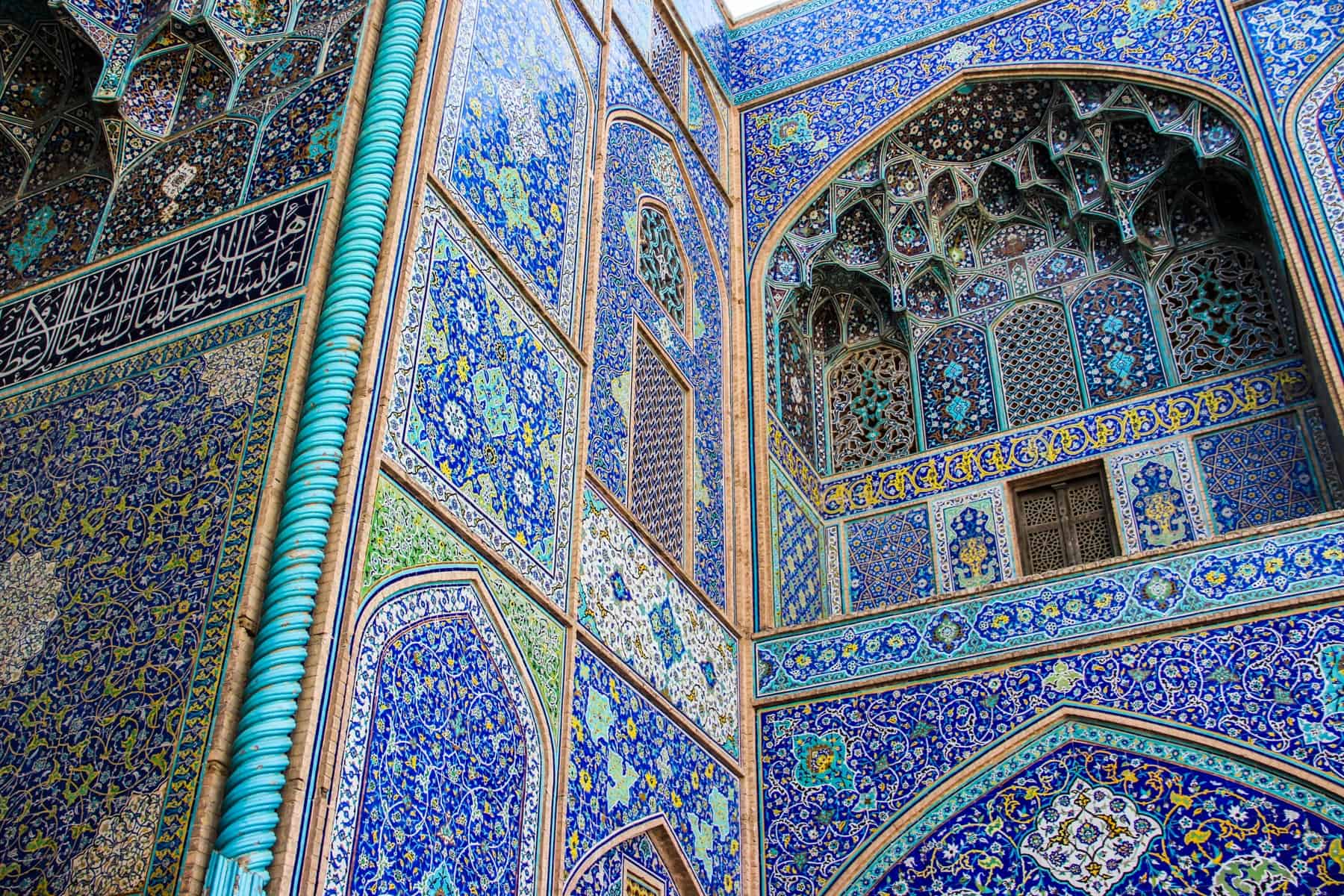
Iran , Misunderstood Destinations
This Is How to Travel to Iran – Everything You Need to Know
Disclaimer: This post contains affiliate links to handpicked partners, including tours, gear and booking sites. If you click through or buy something via one of them, I may receive a small commission. This is at no extra cost to you and allows this site to keep running.
Many travel to Iran to experience the delights of the ancient Persian Empire yet are unaware of the limitations faced by the rules and regulations of what is now the strict Islamic Republic.
As travel warnings persist and diplomatic relations with other countries continue with varying degrees of existence, many are confused about how to go about entering Iran and travelling in Iran safely, efficiently, and within the boundaries set by the current regime.
However, an Iran trip doesn’t have to be difficult at all – tourism is growing as relations develop; hatred of the western world is not as rife as the media likes you to think, and travel in the country is safe. Ancient Persia is within easy grasp, most notably in the central region where key sites have been maintained and the infrastructure linking them is growing, and tourists are not subjected to as heavily enforced rules as the locals.
With enough pre-planning and prior research, you can easily avoid the limitations and stresses of travelling in what is perceived as a closed and tricky country to traverse.
Use this checklist and list of tips for when you visit Iran as a comprehensive guide to help get you started. This Iran travel guide shows you how and is constantly revised with the help of an authorised tour guide on the ground in Tehran, alongside access to regular Iran tourism updates via tourism business partners.
Travel Warning: Due to the volatile security in the region and the recent developments in April 2024, check your government and official advisories before visiting Iran.
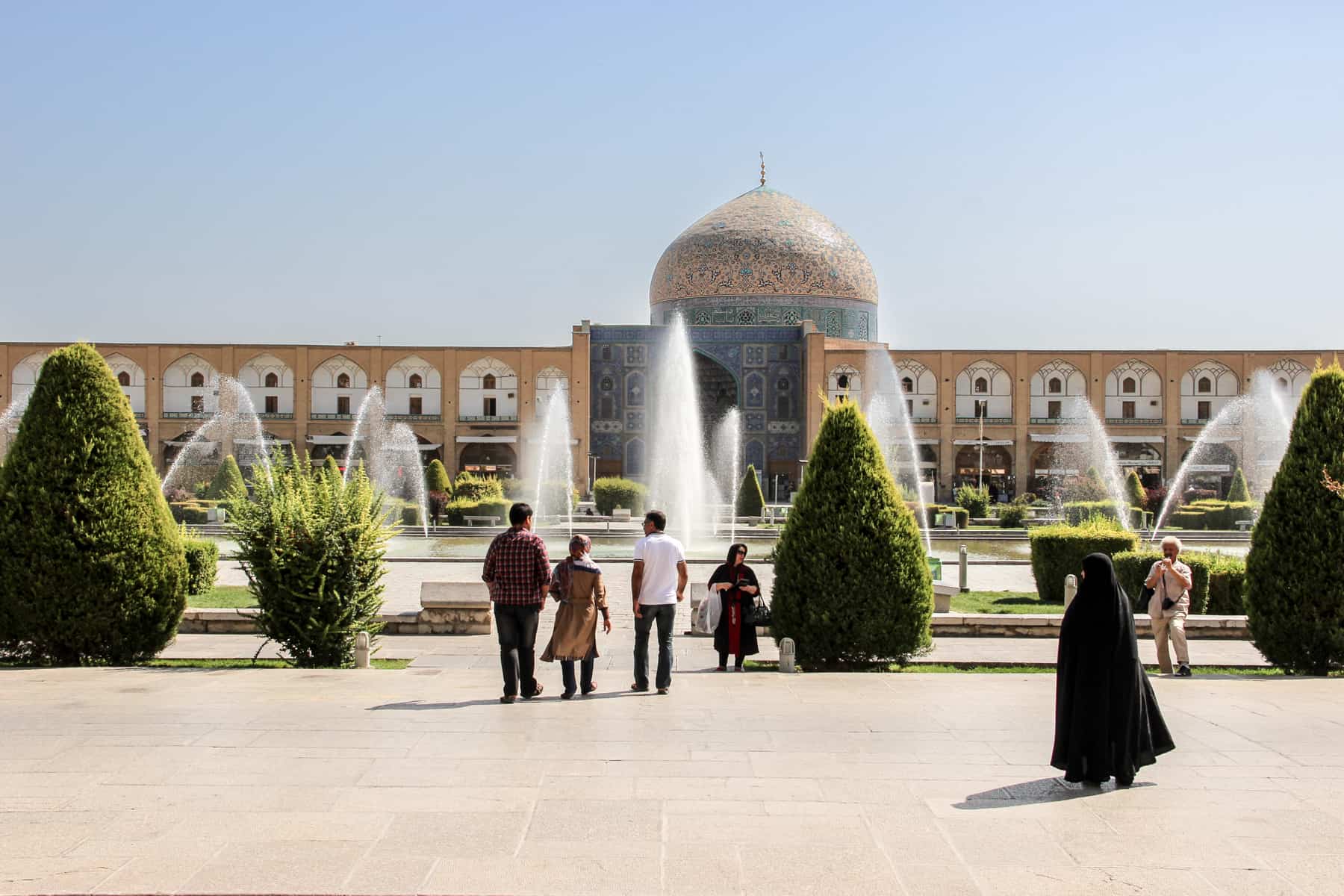
Check Before you Visit Iran
Persia and iran – are they the same, how to get an iran visa on arrival – 180 countries, cost of visas for iran and cost for visa on arrival in iran, you must have travel insurance for an iran visa application, iran tourist visa and authorisation code costs, iran visa timings with authorisation code, proof of travel to israel, current diplomatic relations, nationality restrictions – americans traveling to iran, nationality restrictions – british and canadians travelling to iran, nationality restrictions – israelis travelling to iran, booking the best iran tour, private guided tours of iran, travelling independently in iran, couchsurfing in iran, solo female travel in iran, when is the best time to visit iran, unesco world heritage sites in iran, what should i pack for iran, you are safe in iran, and iranian people are very welcoming, is it safe to travel to iran right now, rules in iran, is iran an arab country, currency in iran – two names, one currency, credit and debit cards in iran, inner-city transport, intercity transport, separate men’s and women’s carriages on iran public transport, pre-register with your country’s foreign office, which sim cards to use in iran, which vpn to use in iran, finding traditional food amongst the fast food, drinking in iran, etiquette in iran, understand the concept of ‘persian time’, read more on the history of iran and iran travel, want to travel iran – pin it.
Inbound bookings for Iran usually change when something has severed particular diplomatic ties, which then reverberates to tourism apprehension and a halt to tourism altogether. Always check the news and the political landscape before travelling to Iran to see if you (and your nationality/country) are affected by visas and entry to Iran. It’s always a matter of time and patiently waiting to see how the political landscape plays out following these events. Here are some of the more recent ones.
On 3rd January 2020, it was announced that the Iranian Major-General Qasem Soleimani was killed in a US airstrike, with Iran calling for ‘severe revenge’. While the outcome is not yet known, this does ignite fears of a conflict in the Middle East , and it pays to be more aware of travel warnings at this time. American citizens, in particular, may face more restrictions.
Following the Ukrainian Airlines plane crash near Tehran, several flights routes to Iran have been cancelled following the news that the Ukrainian jet was ‘unintentionally’ shot down . If you have any Iran travel planned, check your airline to see if the service is still running.
The arrest of the UK Ambassador to Iran in Tehran as part of government protests have further sparked an international row between the two countries. UK travellers should be on alert for developments.
Both Iran and Persia are used interchangeably about the country and also while you are on the ground. Reference to Persia is more so in the context of the history and legacy of the ancient kingdom of the Persian Empire; Iran is about the modern-day Islamic Republic of Iran in the Middle East.
READ MORE: Best Places to Visit in Iran to See Ancient Persia
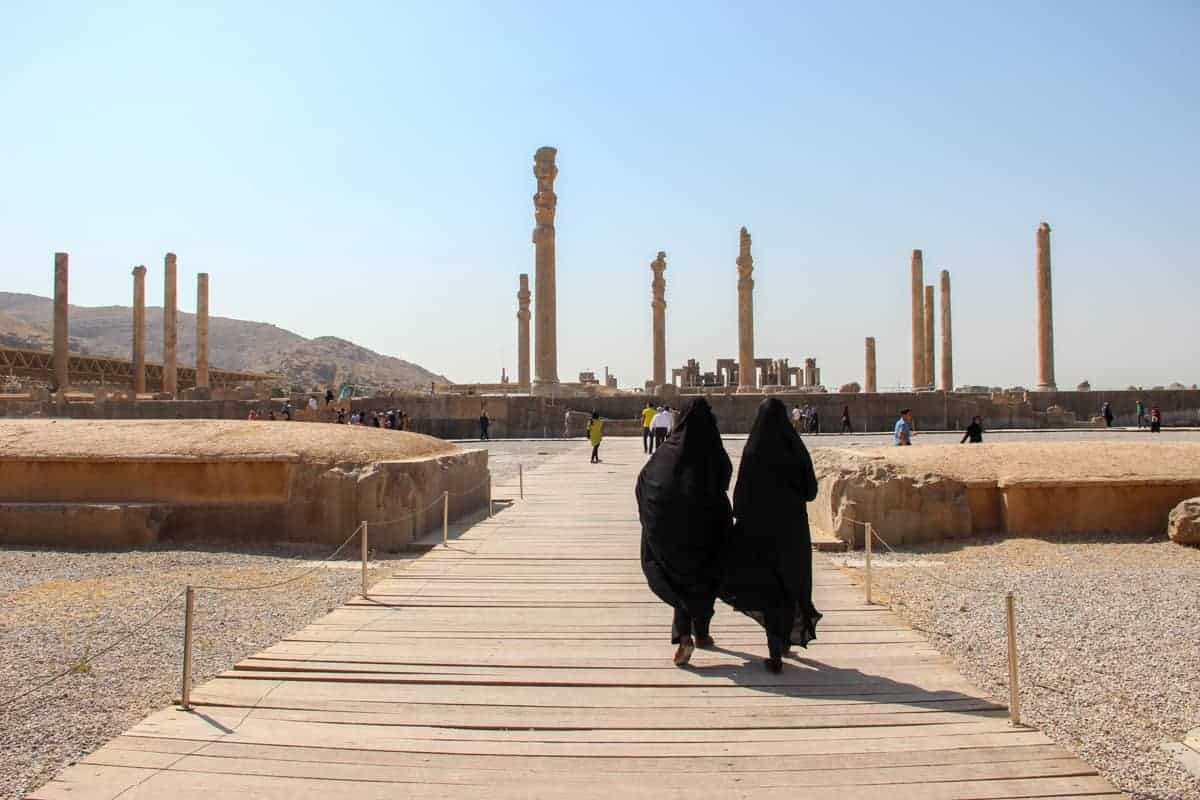
You’ll stumble between modern-day cities and the sights of ancient Persia, like the Persepolis, on any Iran trip.
Can Everyone Travel to Iran? Iran Visas and Authorisation Codes
Getting a visa for Iran is quite possibly the most stressful and challenging part of your entire trip. You first need to know if you are eligible and what limitations you may face.
For countries like the UK, which have strained and little to no diplomatic relations with Iran, you may find that you cannot even get an Iran visa in your country because there is no Iranian embassy. British travel to Iran means a little more legwork, where you may also have to travel elsewhere, like Dublin or Paris for example, to obtain the visa since there is no Iran embassy in the UK.
Most airlines flying to Iran will not allow you on a flight unless you show you have an Iran visa, but you can get a visa on arrival. However, sanctions have been lifted, most notably in 2016, with up to 900 Iran visas daily on average granted on arrival, according to the Office of Foreign Affairs. Tourism numbers annually have increased year on year, with 5.2 million foreign visitors entering Iran in 2015, in comparison to 4.7 million in 2013.
On the 14th February 2016, the Ministry of Iran announced that airports could issue 30-day visas for Iran, for nationals of 180 countries.
Non-eligible nationalities for Iran Visa On Arrival:
Afghanistan, Bangladesh, Canada, Colombia, India, Iraq, Jordan, Pakistan, Somalia, USA, UK
A 30-day Tourist Visa Upon Arrival, for those of eligible nationality , can be obtained at the following Iran airports:
IKA: Tehran Imam Khomeini Airport THR: Tehran Mehrabad Airport MHD: Mashad Airport SYZ: Shiraz Airport TBZ: Tabriz Airport ISF: Isfahan Airport
Follow the signs that say ‘Visa on Arrival’ where you will be asked questions about your trip to Iran and asked to present:
- Details about your confirmed first night’s accommodation in Iran, including the address and phone number (you may also be asked about your travel plans on-going).
- Proof of a confirmed return flight ticket.
- A copy of your travel insurance policy document and policy number.
- Those people I met who were granted an Iran tourist visa on arrival as part of the tour were given a special letter from the company that they could present to both the airline and passport control on arrival.
You can be waiting up to 30 minutes before your visa is granted and you can proceed to immigration. You will need:
- A passport with at least six months validity
- Two passport photos, in which women should be wearing a headscarf
- The completed visa form. You can also fill out the form online before arrival in Iran, from which you will receive a visa application reference number, print it off and take it with you.
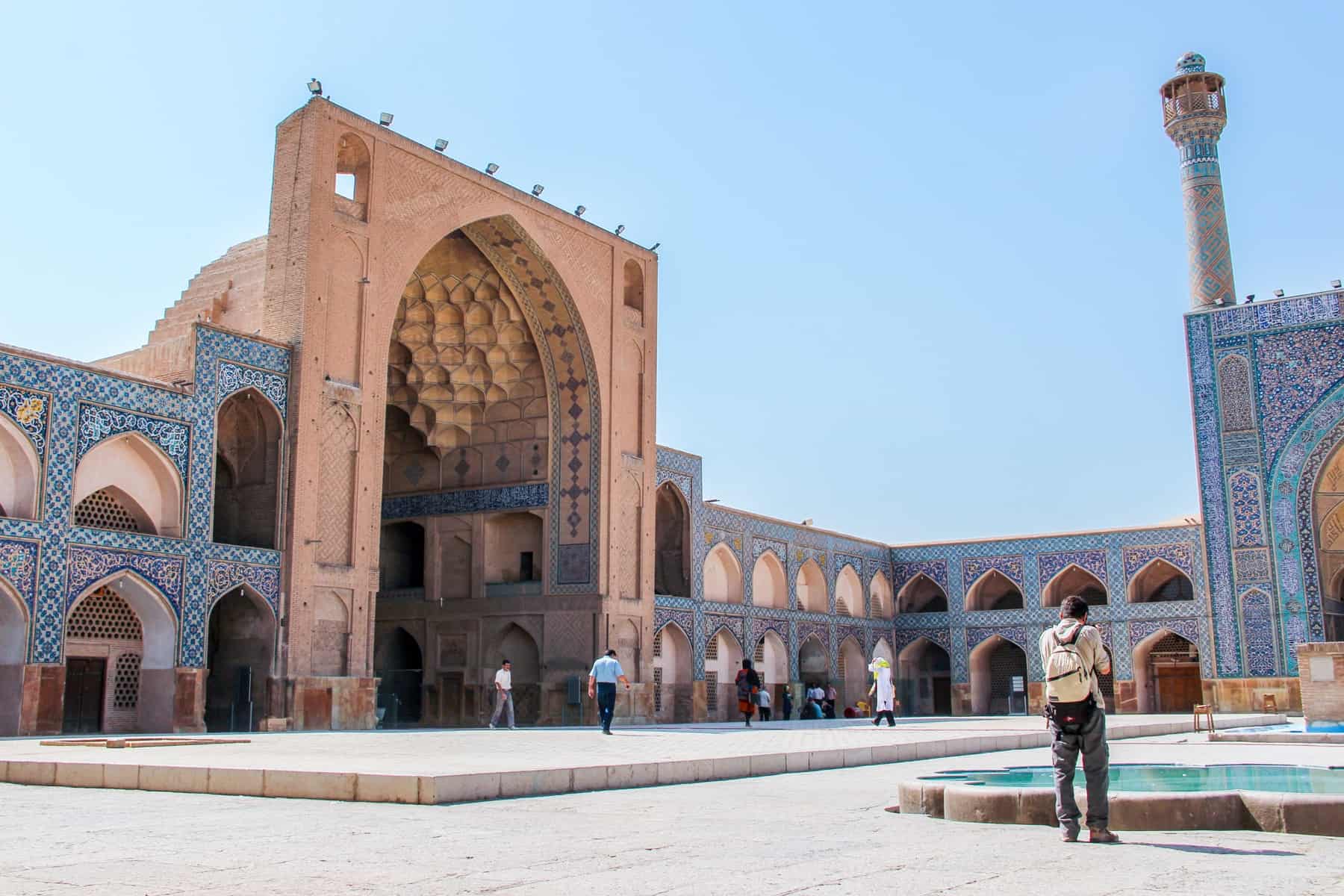
One of the many beautiful places in Iran to visit – The UNESCO World Heritage site of The Great Mosque (Masjid-e Jameh) of Isfahan.
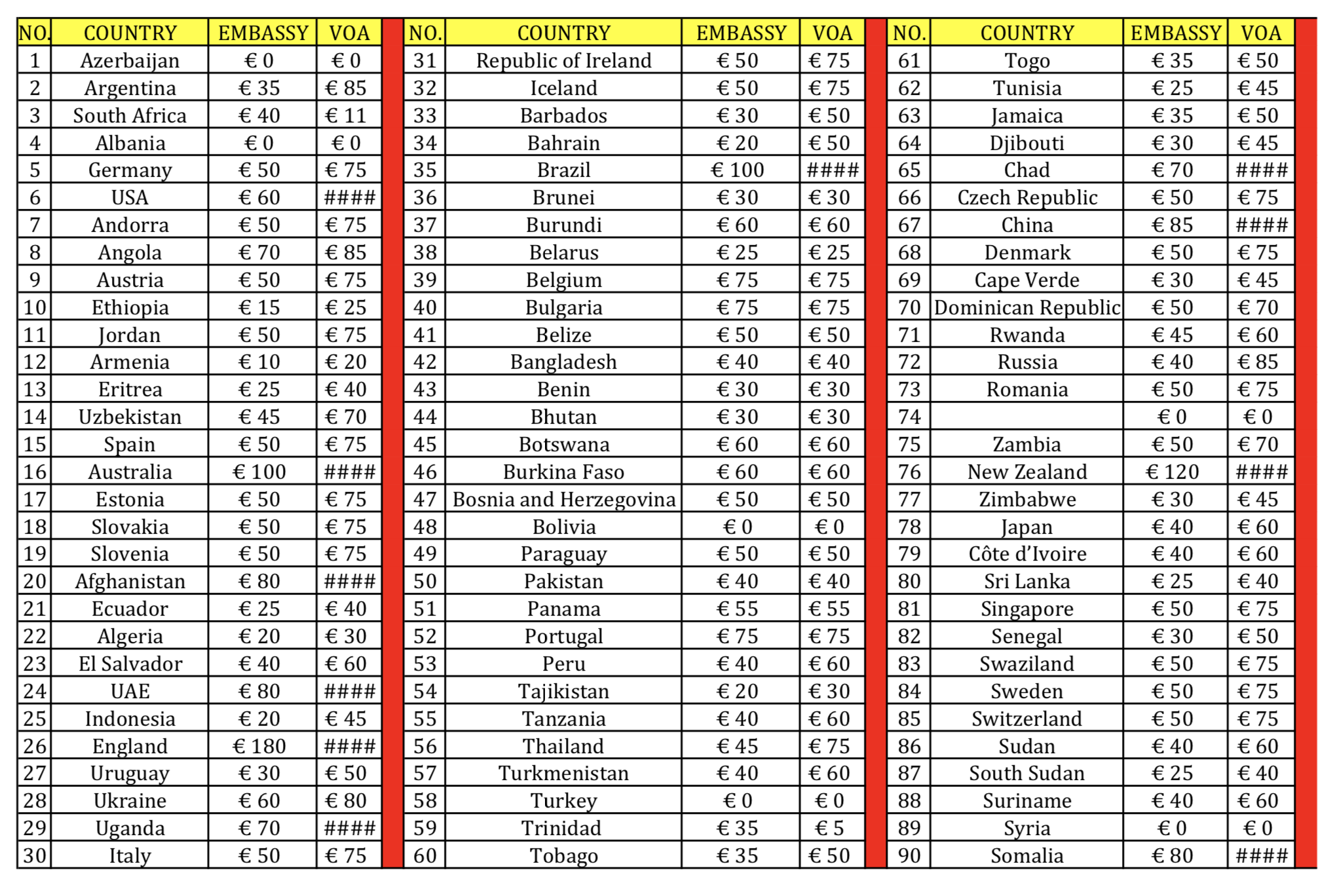
The costs for a visa in Iran and visa on arrival in Iran – each country is different.
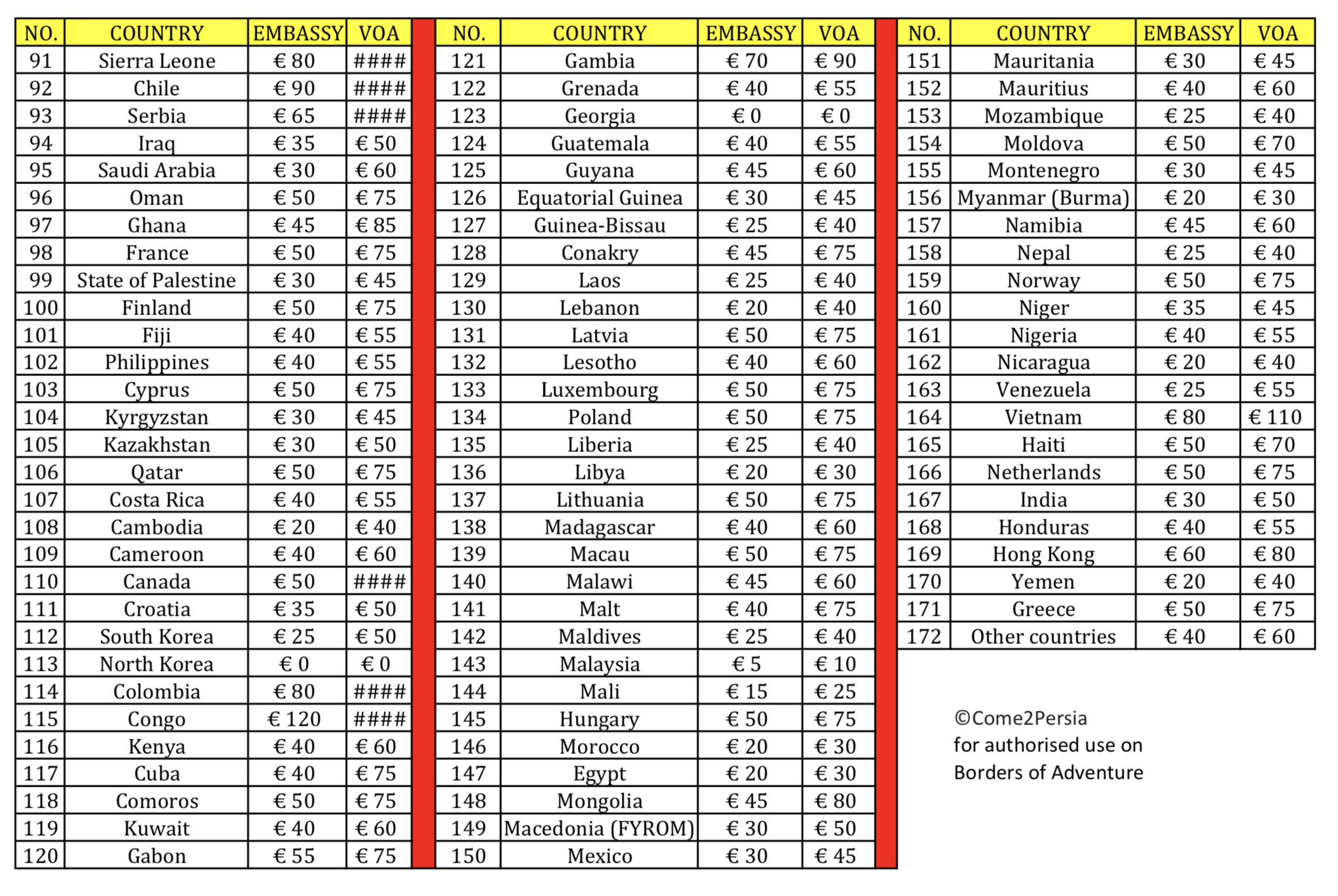
Iran Travel insurance is a requirement to obtain your visa for Iran. Without proof of purchase and printed documentation, you cannot pick up your visa from the embassy or secure your visa on arrival at the airport.
Aside from it being a stupid idea not to have travel insurance coverage, check that your current policy (or the one you are thinking of getting) covers Iran. Some do not provide travel insurance for Iran or only cover limited regions of the country and activities.
Getting Your Iran Authorisation Code – Non-Eligible Nationalities
For those not eligible for a visa on arrival, and those wanting to apply for a visa for peace of mind before they arrive, you have to apply for an Authorisation Code. EVERYONE has to have one of these, which will determine if you are granted an application for a visa.
- For those who HAVE to travel in a group (see below), this code will generally be processed by your tour company.
- For everyone else, you can use 1stQuest which offers essential travel services for Iran travel. Otherwise, source an Iranian travel agency local to you at the time of planning or seek direction from the embassy you wish to get a visa from about where to apply for it.
- When applying for the authorisation code, you will need to specify which embassy you will be processing your visa at – a pain for those travelling around with no solid plans. Once the code is released, you cannot change the embassy choice. It’s wise to choose an embassy in a city you are likely to fly to Iran from (see also timings below).
Authorisation codes (if not booking with tour) come with an administration cost of around 35 Euro, which is dependent on the agency you are working with. There is no set price for an Iran Tourist Visa since it is determined by nationality and where you process your visa.
I paid €180 for mine in Tbilisi, Georgia and a British guy on my tour paid a little more to process his in Paris. The Australians in my tour group paid differing amounts between €50-€100, as did the Germans. There’s no hard and fast rule – it’s more about luck.
If all that wasn’t enough, it is highly likely that
1. Your authorisation code will take WEEKS to process
2. It will most likely arrive with only a matter of DAYS to spare before your planned arrival in Iran or tour start date.
This means that before any trip to Iran, especially when travelling on a tour, you will be rushing to the embassy in the hope of getting your authorisation code for Iran processed quickly. You may have to pay extra for fast-tracking and organise your flight ticket to Iran very last minute. This doesn’t always guarantee the best price and the idea of getting a cheap ticket to Iran has to be pushed aside.
DON’T book your flights to Iran or any travel arrangements until you know your Iran visa will be processed. Many people travel to Turkey beforehand to process their visas and fly to Iran from there, using the country as a cost-effective flight or train route for entry.
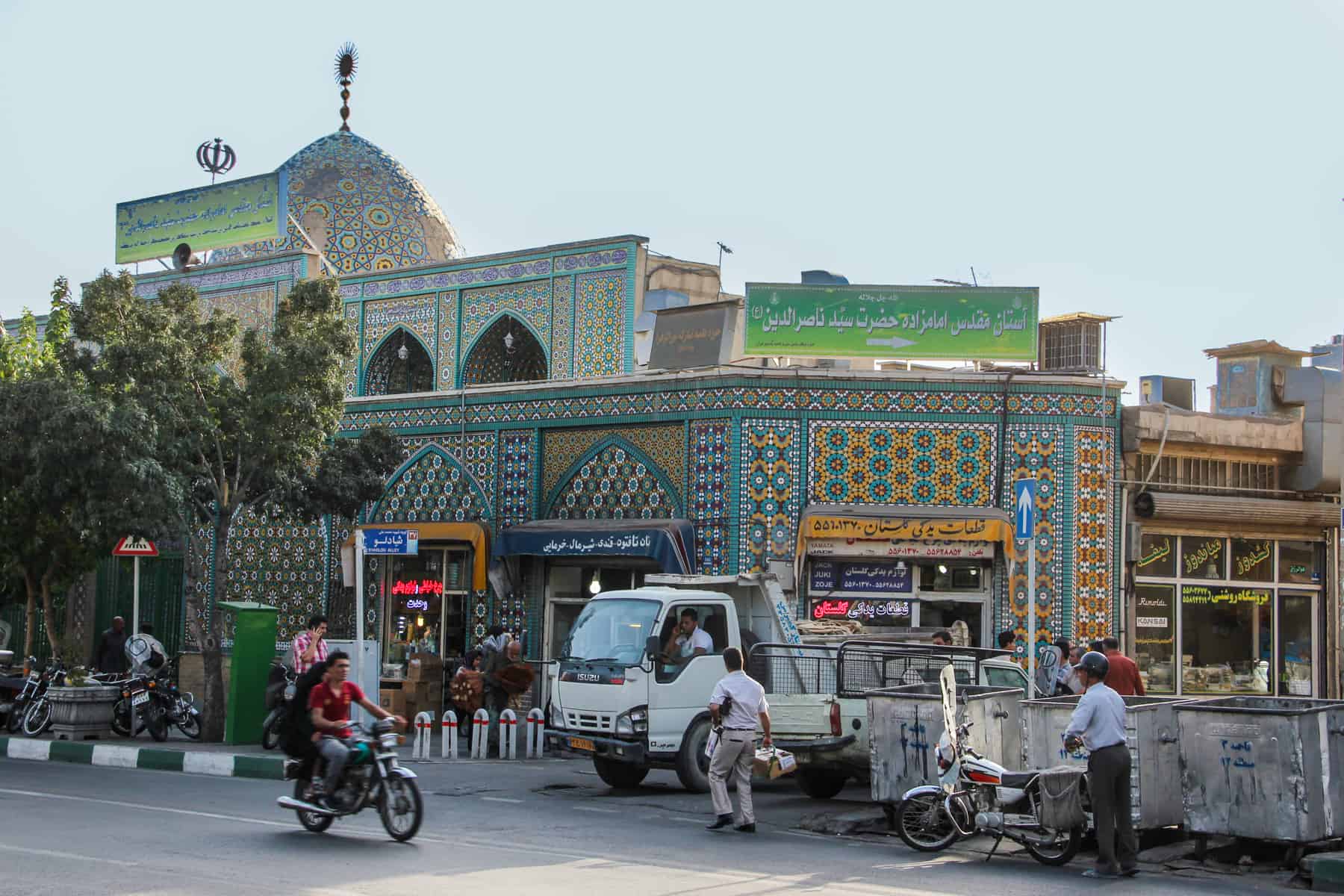
Everybody needs to get an Authorisation Code before travelling in Iran.
Refusal of Entry to Iran
The main reason for Iranian visa refusal is when there is proof you have travelled to Israel and the government’s paranoia based on your career (think journalists, media workers and similar).
Iran tourism issues are not linear, and while anything can happen at any time that would affect a particular nationality entry, the majority of the problems are political-based and beyond our control. Diplomatic relations and any political actions for/against Iran based on historical or current affairs at the time of applying may affect your refusal of entry into the country, or an Iran travel ban put in place.
On 4th January 2020, it was announced that the Iranian Major-General Qasem Soleimani was killed in a US airstrike, with Iran calling for ‘severe revenge’. While the outcome is not yet known, this does ignite fears of a conflict in the Middle East , and it pays to be more aware of travel warnings at this time.
On 6th October 2019, it was reported that the two Australians imprisoned in Iran for flying a drone were freed in a political swap. It is suggested that strained relations between the UK and Iran after Britain seized an Iranian oil tanker in Gibraltar are inciting such political moves to detain people breaking the rules.
On 29th August 2018, France informed diplomats to postpone all but non-essential travel to Iran after a foiled bomb plot near Paris. The following day, Iran dismissed such restrictions , proving that it is best to stay aware of any sudden changes.
Solo Travel in Iran vs Tours in Iran
One of the biggest questions I hear is: Can US citizens / Americans travel to Iran? They absolutely can, but because of the long-standing history of coups, espionage, nuclear sanctions and everything else in between (outside of the control of the average American citizen unconnected to the historical actions of their government), all US passport holders are only allowed into Iran if part of Iran tour packages (or with a tour guide).
Despite restrictions, it is safe for Americans to travel to Iran, so don’t be put off by the bureaucracy needed to get there. US travel tips to Iran focus on this red tape. For example, it still stands that Americans must also be escorted from the airport to the hotel, and cannot make their arrangements. This all has to be pre-organised pick-up (a simple addition via the tour company) so do check this before you leave.
READ MORE: Inside The Den of Espionage – Former US Embassy in Tehran Turned Museum
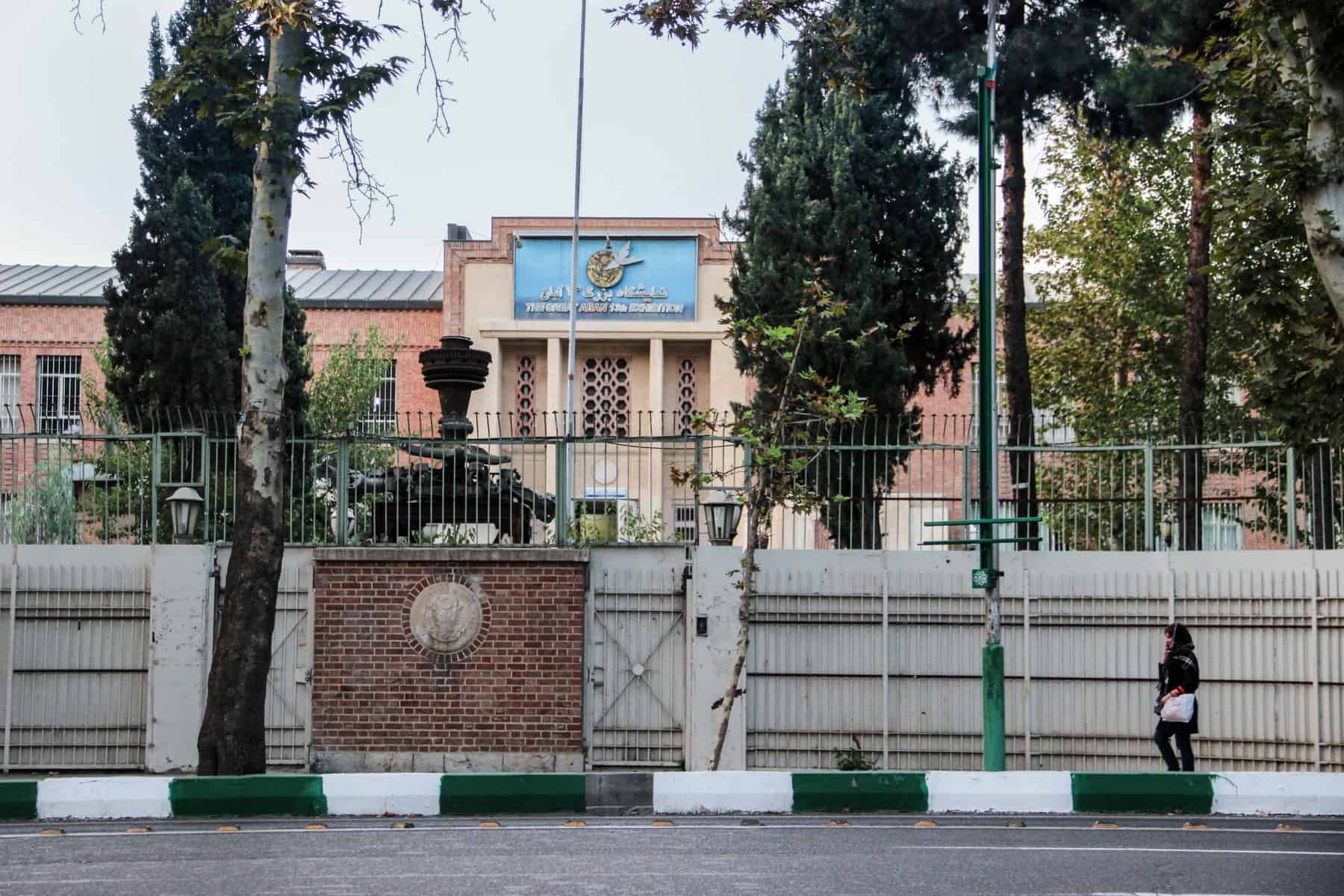
The former US Embassy in Tehran, Iran
As of February 2014, British and Canadian citizens going to Iran became subjected to the same ‘tour only’ sanction (official Iran tour operator or private Iran guide). As a result, your visa is usually only granted for the exact number of days of your tour, with a couple of days on either side if you list this as part of the arrival and departure options.
British passports holders should also pay attention to Foreign Office updates following strained relations between the two countries after the oil tanker seizure, as listed above in ‘Current Diplomatic Relations’.
Unfortunately, Israeli citizens cannot enter Iran at all, and this is unlikely to change anytime soon.
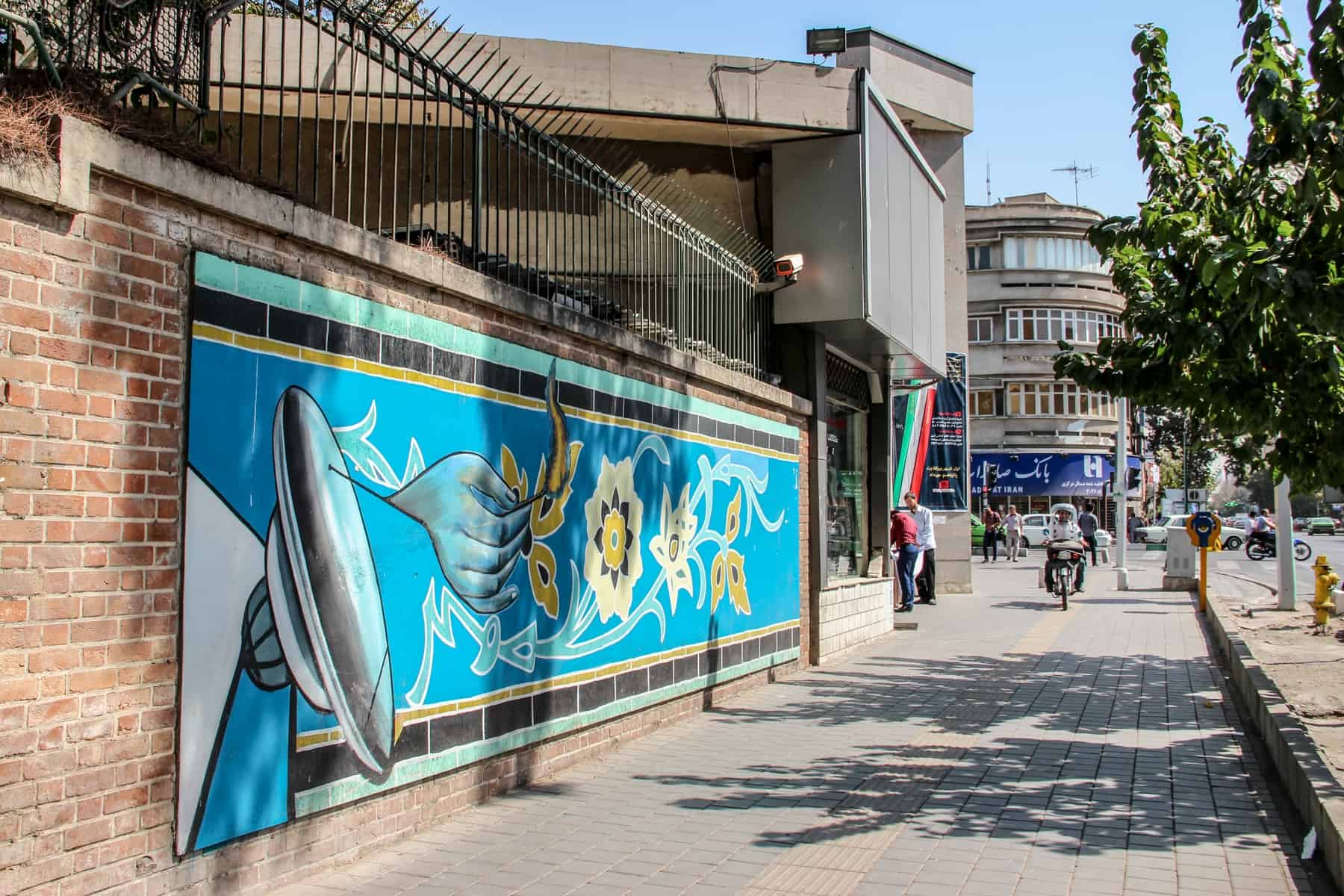
Check on any nationality restrictions before you visit Iran. It may mean having to join a tour and hire a guide.
While those booking up Iran holidays might choose a tour package for the fact that everything is taken care of on the ground and for ease of travel, I had no choice since I had a British passport.
There’s an overwhelming amount of Iran tour packages, and it can often be hard to know where to start. At the time, I travelled with G Adventures on a Discover Persia tour which operated through the revered Iranian agency AITO. I allowed myself free time to visit Tehran on either side of my trip, so I had a taste of both worlds, albeit on a small scale. Currently this trip is not running.
The upside to a tour, however nomadic and sporadic you usually are, is that these trips pack a real punch in getting you to many sites in 14 days. On the G Adventures Iran tour, I saw places I would not have been able to access easily on my own or with public transport. Plus, my local guide to Iran was the bundle of knowledge that a history and sociology geek like me needed for an ancient civilisation such as Persia. The downside of such holidays in Iran is a lack of free time and lazy resting for an itinerary that would normally, on my terms, take about three weeks, not two.
Being in a tour group when visiting Iran does not mean being chaperoned and watched 24-7. ven while on a small group tour, we were allowed time to ourselves in each destination.
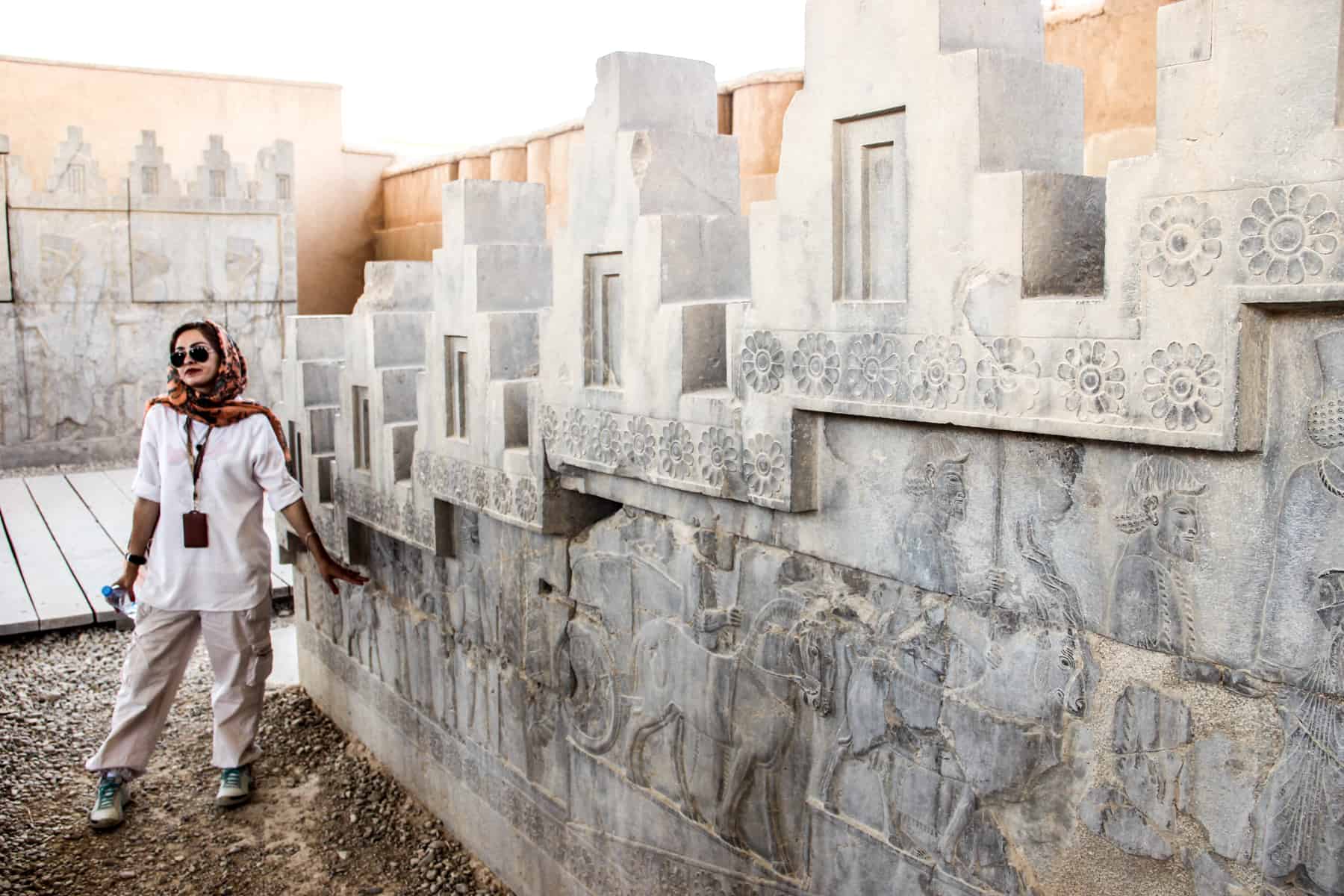
Choosing between and small group tour and a private guide – with a local who will show you all the historical places in Iran.
Generally, under the condition that you must have two people minimum, hiring a private tour guide in Iran is also an option. This is a viable option for those with visa restrictions who do not want to travel in slightly larger groups.
Come2Persia is a certified and reliable Iran travel agency run by a trusted Iranian friend of mine, Ali Reza Nokhostin, who I met and travelled with when in Georgia. He is both passionate about showing off his country and in changing perceptions of Iran. Specialising in incoming tours to Iran, Come2Persia also provides other travel services needed to complete the private tour package, including hotel bookings, visa application, transportation and access to various guides, not just Ali.
Note that while solo / independent travel is moderately easy in Iran (if of a free nationality), Iran is not that well-trodden on the independent travel path. There’s little to no hostels and guesthouses, and a dominance of big, expensive hotels (especially in Tehran) and even then it is rare to stumble upon a bunch of solo travellers to join.
However, solo travel in Iran is happening, and it is safe, it’s just a little more challenging than usual, which can, in itself, be pretty exhilarating.
Note that Couchsurfing in Iran is officially illegal, but it happens anyway. Nearly all independent travellers I have spoken to have mentioned that they have travelled here via this resource with your local hosts, of course, being the best guides. However, travellers looking to Couchsurf in Iran must be aware that they can not hold the Couchsurfing host responsible if anything goes wrong because there is no official ‘filter’ in place when it comes to the hosts listed online.
In a society where women are much more restricted than their male counterparts, to travel Iran as a solo female is a little harder and viewed with surprise/suspicion depending on where you go.
Also in Iran, since public displays of affection between males and females are not allowed, any harassment or inappropriate contact by an Iranian male to a female traveller would be frowned upon and draw attention.
Iran is one of the safest countries in the world based on tourists’ feedback. There have been many solo female travellers who have experienced Iranian hospitality and kindness.
However, it is vital to bear in mind that Iran is an Islamic country with traditional values and of course, some types of outfits would send the wrong message, especially in smaller and more conservative cities, such as Yazd, Kashan and Qom.
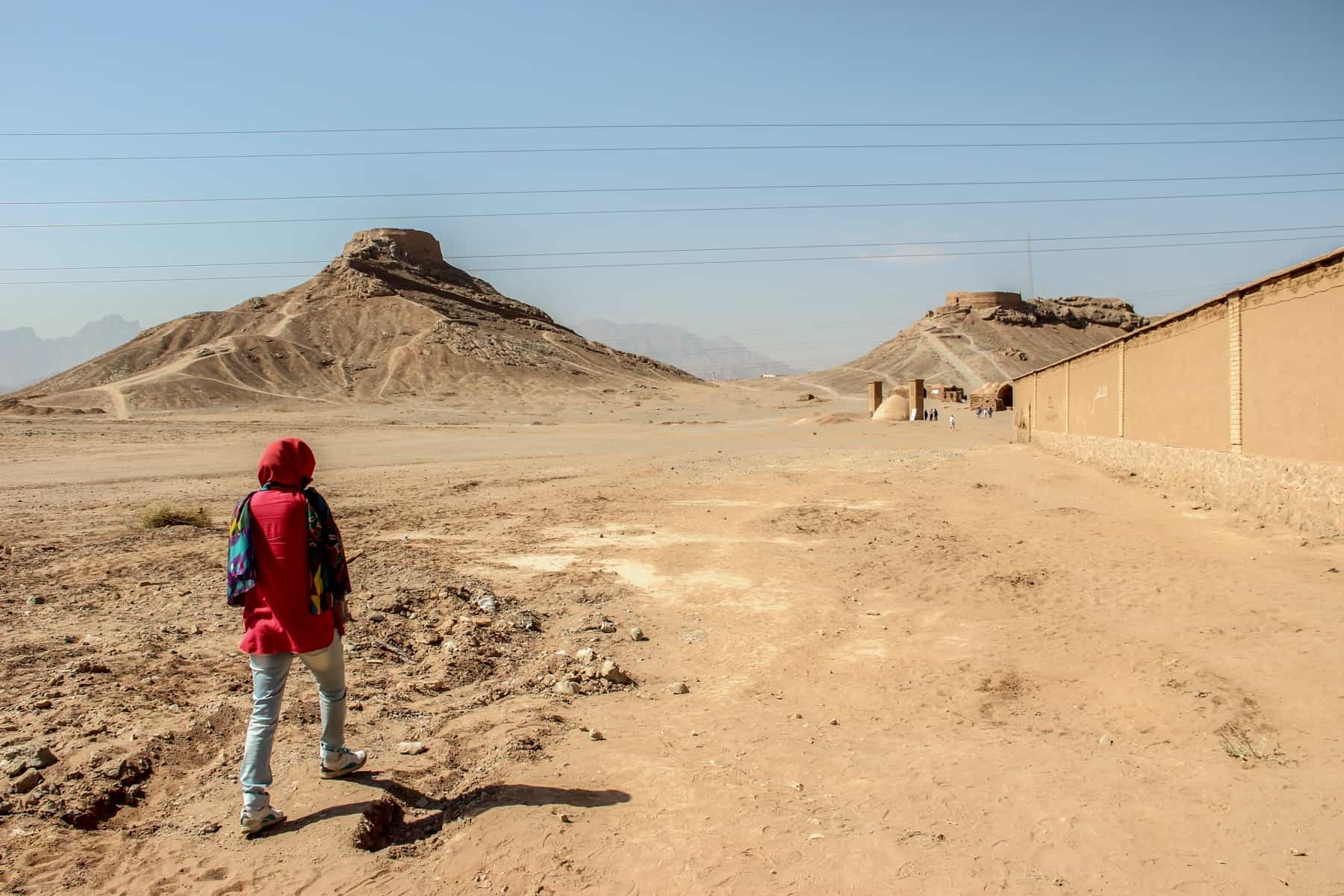
Solo female travel in Iran is safe, but with awareness of the conservative values of this Islamic country.
Iran is a four-season country, which means in different corners of the country, you can experience various climates at the same time. So, when is the best time to go to Iran, based on the different climates in the country? As a quick guide to Iran and its geographical mix, we can divide the country into three regions:
- From early March until late May
- From early September until late November
- There is one high season, from mid-April until mid-November
- Only one high season, from late November until late March
In between the high seasons from July to September is marked by high temperatures rendering travel on the classic route potentially uncomfortable.
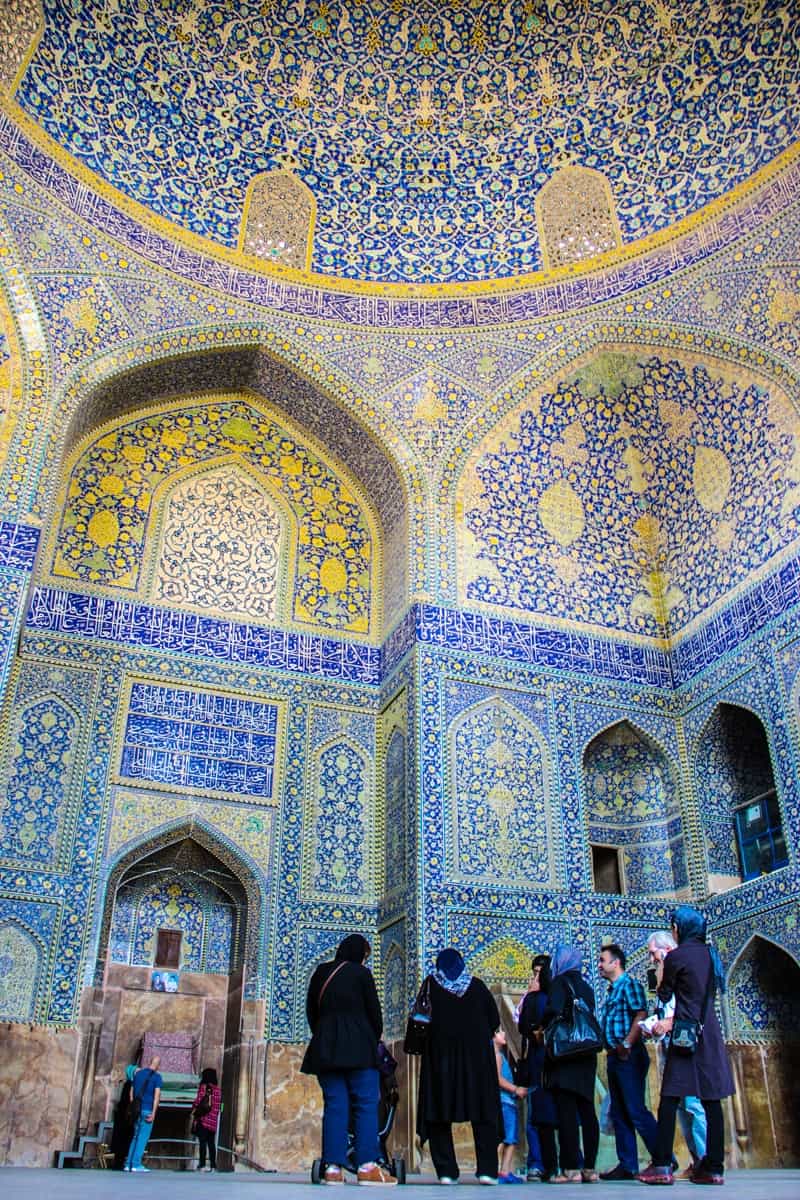
The stunning Sheikh Lotfollah Mosque is Isfahan is one of the must-see sites.
Iranians love to shout about the abundance of UNESCO World Heritage Sites. As my local friend stated, “It gives Iranians a lot of pride to possess such ancient lineage”.
Iran has 24 UNESCO World Heritage Sites – 22 cultural and two natural. Each of which is the result of years of investigation and presentation of evidence as to why they should be regarded as world heritage sites. It would take more than one trip to traverse them all.
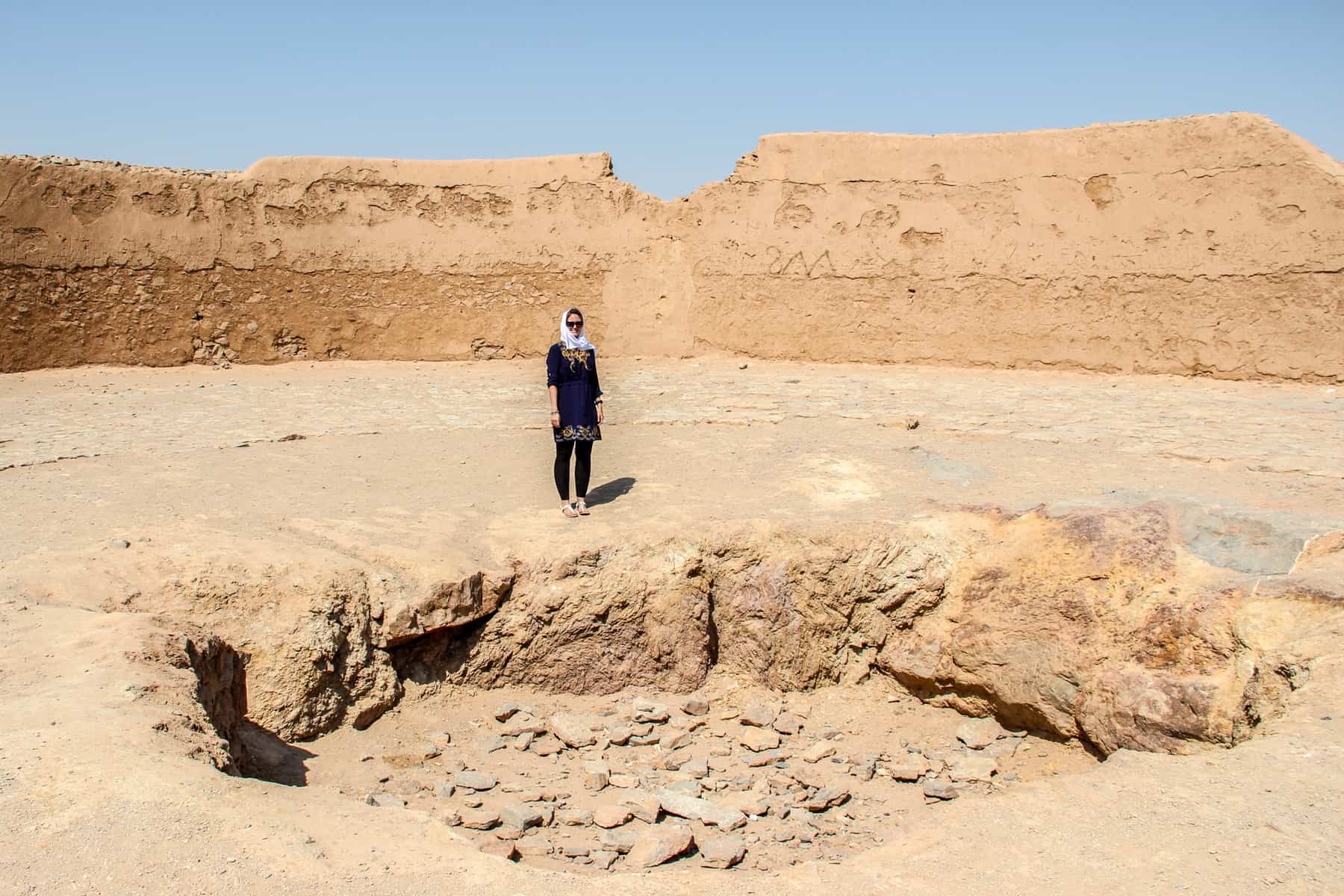
The Zoroastrian Towers of Silence in Yazd – one of the 24 UNESCO World Heritage Sites in Iran.
Dress Code in Iran – Headscarves and Hijabs
Iran does have a strict dress code, and this is one of the biggest concerns for female travellers to Iran. Most importantly – PACK A HEADSCARF IN YOUR HAND LUGGAGE. It’s called ‘Roosari’ in Farsi, and you MUST be wearing it the moment you exit the plane and are officially in Iran.
You must wear a headscarf the entire time you are in Iran (except when in your hotel room), as well as loose clothing that covers your body. But let’s get one thing straight – you don’t have to wear a burka or anything that completely hides you.
When you arrive, you will soon see that reality is far removed from the stereotype. Iranian women are super stylish and proud of their appearance – fashion being a means to stand out and make a statement.
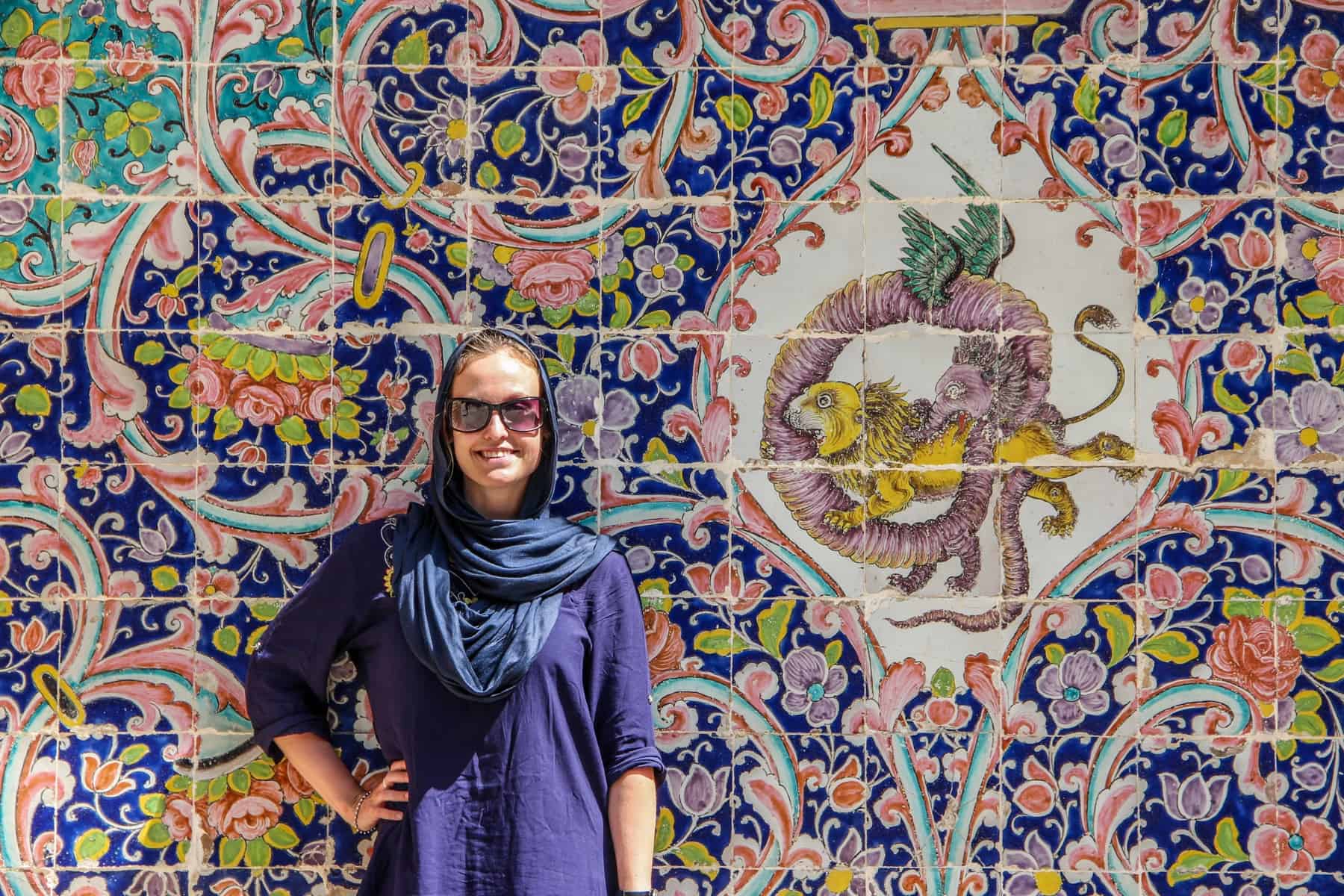
The dress code for women in Iran doesn’t have to be complicated.
The ‘Morality Police’ you hear of do exist in Iran but are not spending their time chasing down foreign visitors, so do not worry too much with that. If anything, you will get a polite mention. Visitors have a bit more flexibility when it comes to the rules.
- A headscarf is the most immediate essential item, and you can buy more when you are there) . If your headscarf falls, don’t worry – quickly put it back on again. You won’t be in trouble for this, but pay attention at all times. Wearing your hair in a high bun or ponytail helps keep the scarf in place. Many Iranian women wear it a little loose and halfway back on their head, since showing a little hair is granted.
- Tops must be loose-fitting, and three-quarter length sleeves are ok – a little more comfortable in the heat. The general rule of thumb is that the body should be covered and arms should not be bare.
- It is said that trousers must be baggy, but some local women wear tight, brightly coloured leggings. As long as your legs are covered down to the ankles, it is fine. For tourists, leggings worn with a long, loose-fitting top are acceptable. However, in the more conservative areas such as Isfahan, Mashad and Qum, respect the values and revert to looser fitting trousers.
- Colour of clothing. It’s a myth that you need to dress in dark colours or black tunics. Embrace fashion the ways the locals do and bring some colour into your Iran packing list!
- Open toes sandals are OK. Pack some sports shoes for longer day trips where you might be walking a lot (such as at the Persepolis). You’ll soon see how sports shoes are fashionable in Iran, especially in bright colours!
- Worried you do not have enough appropriate attire? Fear not, as soon as you arrive in Tehran or even Shiraz (if you fly into the city), hit the bazaars and the local markets . There’s plenty to be sought out. Other people on my trip stuck with two outfits and alternately hand-washed them every night.
- Strict dress codes do not apply in the same manner when travelling with children . Young boys can wear shorts and t-shirts and girls under ten are not required to wear a headscarf.
For men it’s more straightforward – you will be dressing much the same as you do in western countries, except no short shorts, no super short sleeves and no extreme tight-fitting clothing.
READ MORE: Iran Dress Code for Women (What to Wear in Iran)
Is Iran Safe? Is it Safe to Travel to Iran?
Iran’s image of being a terrorist-driven, American bashing, nuclear weapon holding, burka-clad society is something that has been highly driven mainly by western media. “Is Iran safe?” “Isn’t it dangerous in Iran?” are likely to be some of the first questions you encounter from others when you announce you are travelling here.
In short: Iran is a safe place to visit.
Since the election of the more moderate President, Hassan Rouhani in August 2013 and his re-election in 2017 , both international relations and internal rules have become less severe and slightly more open. It won’t take long before Iranians give you a warm welcome, ask where you are from or even invite you to dinner or tea.
It is a part of Iranian culture to go out of their way to help you, and it’s not uncommon to be given a phone number on a piece of paper or a business card in case you need to call upon someone.
The people of Iran are just as keen to show you they are the opposite of how they are portrayed, just as you should be teaching them that the western world doesn’t hate them.
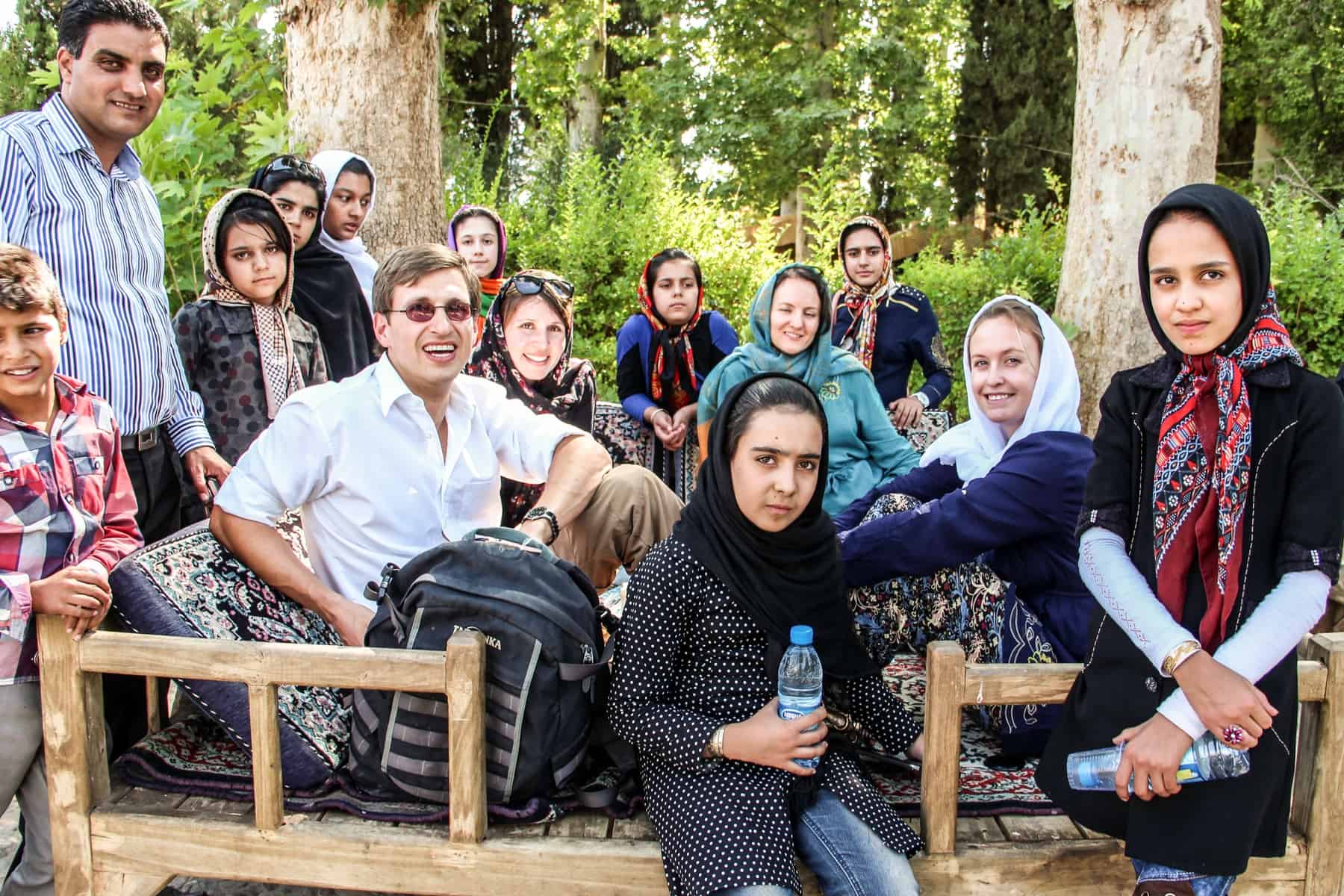
Is it safe to travel in Iran? Absoluely. Locals are very welcoming.
There’s never a right time for those who are worried, anxious or scared. Of course, you need to keep up to date with any significant political changes and your country’s diplomatic ties, but avoid listening to the hive of scaremongering out there and those who say don’t travel in Iran.
For example, in June 2018, there were protests about the economic situation in Iran, and these took place inside and around the Grand Bazaar in Tehran. It means being aware of any internal demonstrations and staying away from those areas, as you would in any country.
Iran remains as one of the most stable countries in the Middle East. While breaking the rules of Islamic society (including drinking alcohol, taking drugs and engaging in sexual activity with locals) can result in deportation, arrest or worse, general travel here is entirely safe.
Don’t assume you can break any rules in Iran, play the dumb tourist and get away with it. Iran is a Muslim country where Islamic law is strictly enforced.
An example of harsh punishment is with the case of the two Australians imprisoned in Iran for illegally flying a drone near a military installation, freed in October 2019, but as part of a political swap. It might seem that the punishment doesn’t fit the crime, but what is justified in your country can have harsher consequences elsewhere.
This is an Islamic State with a strict system, and if you can’t play by Iran rules, don’t go.
Given the location of Iran in the Middle East, the Muslim religion and some similarities in culture and language, the scaremongering of Iran can often revolve around the ‘it’s Arab’ misconception.
Iran is not an Arab country. Iranians are not Arabs. The language spoken is Persian (also known as Farsi) and not Arabic (although there are many languages spoken within Iran including Kurdish and forms of Turkish, Indo-European languages and Khuzi Arabic for example, due to the many ethnic groups that exist within the country).
Not only is the Arab misconception a source of contention generally, but Persians can take offence at these preconceived ideas.
Take US Dollars or Euros with you to Iran and change them up into Iranian Rial at the local exchange offices (not the dodgy guys on the street or at the hotels which have the lower government exchange rate). Before you know it, you have millions of Rials, and it all looks easy.
However, while ALL notes state ‘Rial’ there is another ‘currency’ or ‘super unit’ that is used – Toman – which is not listed on any note or coin.
Toman is used by locals and is one-tenth of the Rial total. 1 Toman = 10 Rial.
When I was first presented with a dinner bill of “37,000”, I was quietly happy that my food had cost the equivalent of $1.5, but this was, in fact, the price in Toman.
To convert to Rial, you simply add a zero – therefore my dinner was 370,000 Rial.
Lost? It takes a couple of days to get used to, but in the majority of cases, unless stated clearly, all prices are in Toman and not Rial. Hence, the basic equation anywhere in Iran is to add a zero onto printed prices (if ‘Rial’ is not listed), or ask market vendors and others which ‘currency’ they are operating in to save the confusion.
A big question is if you can use your credit or debit card in Iran. Sadly not, since there is no network in Iran for the use of international cards. It’s always been the best option to carry enough cash with you for your trip to convert to Iranian Rial on the ground.
However, there is now an Iranian prepaid debit card for tourists and temporary visitors called the Mah Card. Like most travel cards, you can instantly add funds to your card in your preferred or home currency, and it will convert it to Iranian Rial. It is more convenient than carrying cash, protects you from unauthorised purchases and is accepted country-wide.
To get 40% off the price of a Mah Card (Full price €19) enter BECKI at the checkout.
Public Transport in Iran – Options, Usage and Cost
When traveling in Iran, you have various options for public transport:
Intercity transport:
Private car
- Domestic flight
The Metro is available in several cities in Iran, mainly in Tehran; alongside Shiraz, Tabriz, Mashhad and Isfahan. It is the best option to get around in Tehran, and the stations are also easily accessible by taxi and buses. The ticket price for one trip is 1000 Tomans (approximately 25 cents). You can also buy a card to pay for the metro trips and even the buses in Tehran. The rush hours are mainly 7-9 a.m. and 5-7 p.m.
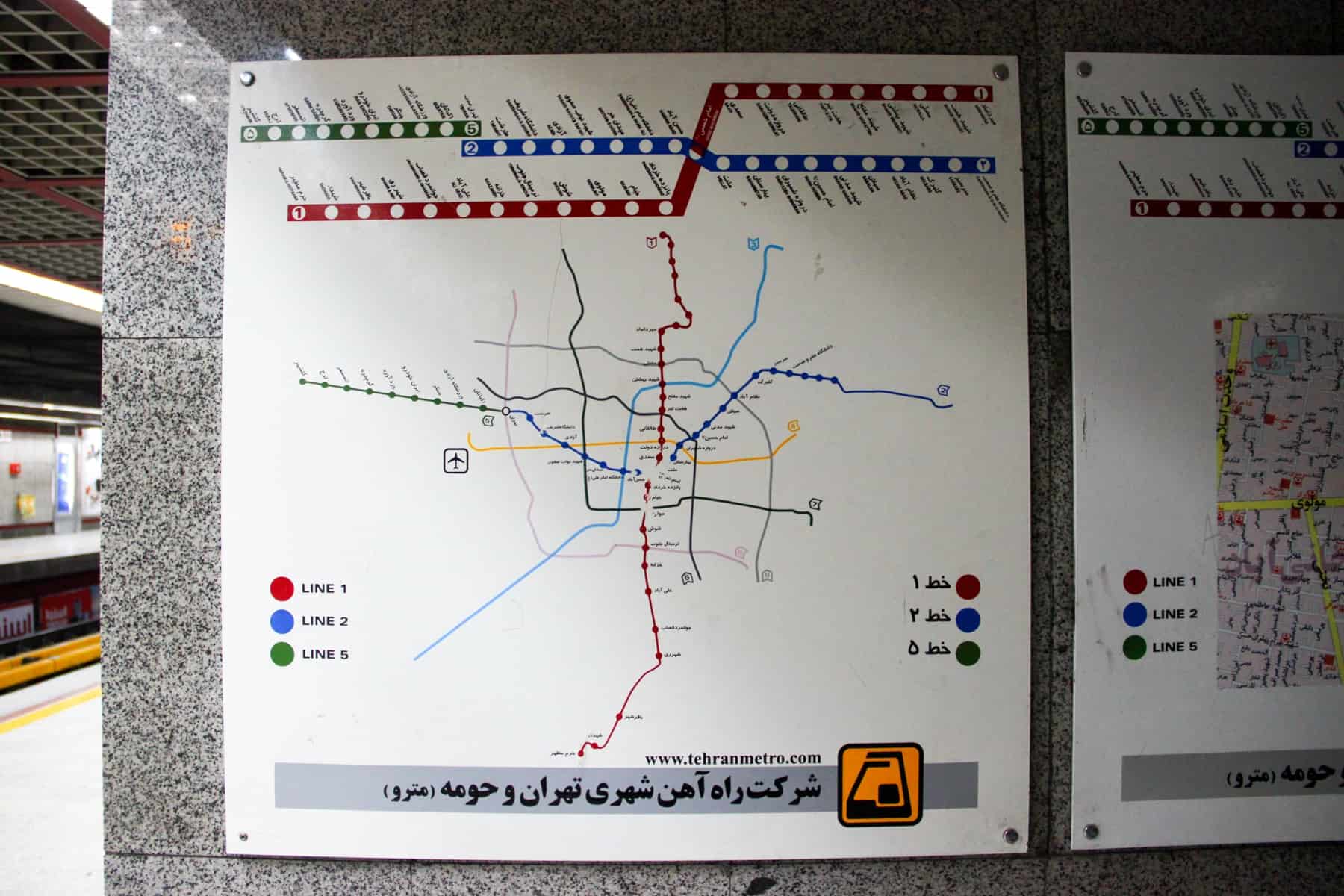
Tehran metro map and the three lines that cover the city.
You can find buses in every corner of the country. There are two main types of buses in big cities: regular and BRT. BRT buses are red, and because they have designated stations and paths, they are express buses. You can pay for the buses by your Metro card, and the fares would vary between 500 to 1000 Tomans (12 to 25 cents) per trip. You can find all the bus and BRT stations on Google Maps.
There are different types of taxis inside the cities:
- Shuttle/shared taxis (khatti): It is a way cheaper way to get around the cities. The two downsides are that they are for fixed destinations and you will have to wait for the taxi to be filled. The fares are also fixed, and you cannot negotiate.
- Private taxis (darbast): You can easily hail a taxi and say ‘darbast’. It means the driver will not pick any other passengers up and you must negotiate the price before getting on.
- Non-registered taxis (shakhsi): These are non-taxi drivers who you would easily spot from the yellow and green cabs. These are people who try to earn some money by giving people a ride. Again you must negotiate the price before getting on.
- Uber-like apps: Tap30 and Snapp are the two leading apps that you can easily use on your phone. Unfortunately, they’re not available on App Store and Google Play, but you can ask a local to help you with downloading them on your phone. Tap30 is available in many cities including Tehran, Karaj, Isfahan, Shiraz, Tabriz and Mashhad. Snapp is available in the same cities and also in Ahwaz and Qom.
- Bisim Taxi: You can also call the numbers 133, 1828 and 1833 in major cities in Iran to call a taxi wherever you are.
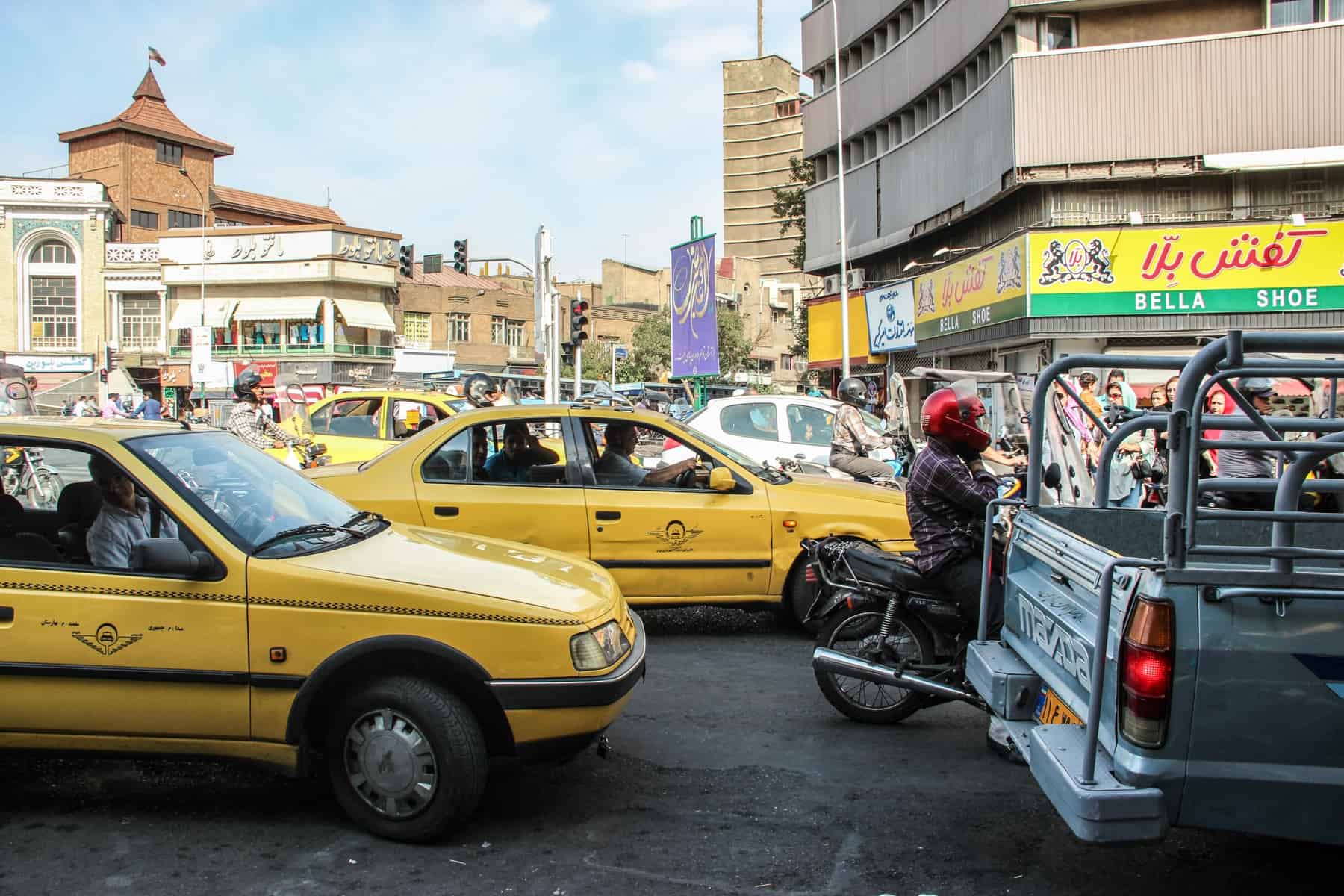
There are plenty of taxi options in Iran.
There are two types of buses between the cities in Iran: regular buses (44 people on board) and VIP buses (25 to 35 people on board). You have more legroom on VIP buses, and you can almost lie down on the seats. You can ask a receptionist at the front desk of the hotel, go to a local travel agency or go directly to the bus terminal to buy a bus ticket in Iran. The prices vary according to the type of bus and the distance. For example, the price for a VIP ticket from Tehran to Shiraz is around 70,000 Tomans ($16).
Using trains is the best and safest option to get around the cities in Iran. There are different types of trains: 4-bed, 6-bed and the so-called ‘bus’ trains. You can also ask if the train you are trying to take is an express train or a regular train. You can book trains through the hotels, local agencies or go directly to the train station. The price for a ticket from Tehran to Yazd, for example, is between 30,000 to 70,000 Tomans ($8 to $15).
You have two options to travel in Iran by a private car. You can hire a driver or a licensed driver-guide who can not only drive you from one city to another but show you the sites en route and give you all the information you need in English and other languages. You can find a driver-guide in Iran through TourHQ . You can either go to a taxi company or a local travel agency to hire a driver or a guide. Beware a killing machine in Iran named ‘Pride’ it’s a very low-quality car produced by Saipa company. It’s the worst car in Iran. Recommended cars in Iran are Peugeots and Samand by Iran Khodro Co.
Domestic flights
If you do not have much time on your hands and you want to visit the classic route (Tehran, Qom, Kashan, Isfahan, Yazd and Shiraz), it is recommended to take a domestic flight from Tehran to Shiraz. From there, you can continue your journey by other means of public transportation eventually back to Tehran. You can buy flight tickets from local travel agencies. The price of the flight ticket is approximately 180,000 Tomans ($40), and it takes around 80 minutes.
On the Metro: Generally, the cars are mixed gender, but if women need more privacy, they can get on the first and the last car on both sides.
On the Buses: In some buses, the women sit in the back and the men in front. Other times it is the opposite. However, a couple can sit together in the men’s section and not vice versa.
Different countries have different specifications, rules and warnings about travel to Iran – some way more dramatic than others. If you can, register or alert your foreign office about your whereabouts for safety and as a piece of mind measure. As a British citizen, with no embassy representation in Iran, this is more so a good idea.
Not that some travellers cannot secure travel insurance until they have alerted the relevant authorities of their travel plans. Hence, it is worth checking precisely who you need to inform before you depart, to be comprehensively covered.
Internet Access in Iran
Be prepared to take a forced ‘Digital Detox’ during your time in Iran. Internet in Iran is slow, all social media (except Instagram and What’s App) is blocked, and you usually are paying per hour for the privilege of a sluggish connection. While I sporadically got decent internet, which allowed my VPN to work, it was never superb. Want to look up sites in Iran? Super quick. Want to find some decent news in the outside world? Good luck.
Tell your family and friends that they may not hear from you that often, and be prepared to do without the connection, however hard it may be.
Irancell is the best phone operator in Iran which offers temporary SIM-cards designed for tourists. They offer a pre-paid 4G internet and credit balance, and when it is used up you can put in a new credit code sold at any supermarket all around Iran to increase your credit and buy internet packages.
You can only have only one VPN app on your phone, so you will need to test which one works best. For Android users, Hi VPN, Psiphon, Hotspot Shield are recommended, and for IOS users Psiphon, Free VPN, VPNProxyMaster and X-VPN are deemed to be the best VPN in Iran that work well at the moment.
Food in Iran (and Vegetarian Difficulties)
I had built up incredible visions of Persian cuisine in my mind before I got to Iran. I thought it would be everywhere – easily accessible and in abundance. Wrong.
Traditional Persian food is available, but you have to do some digging on where to go and find it. Try delicious vegetable and pomegranate stews, traditional Dizi (a lamb based strew where the broth is separated from the solids which are then mashed together and eaten separately) or Ash (a thick and tasty soup of lentils, beans, starch noodles, vegetables, fried mint, fried onion and yoghurt).
Other than that, you will realise that Iran’s streets are paved with fast food outlets, whose neon lights advertise the norm – kebabs, burgers and pizzas. Try and seek out the falafel places, since these are usually the best choice for a cheap and tasty fix.
Vegetarians have more of an issue. I travelled with a vegetarian and whether at a big buffet or a local teahouse or restaurant, what appeared to be the vegetarian option still had meat in it. It may mean living on aubergine/eggplant-based dishes, which are your safest bet, or begging for meat to be left out of your meal if not already pre-prepared.
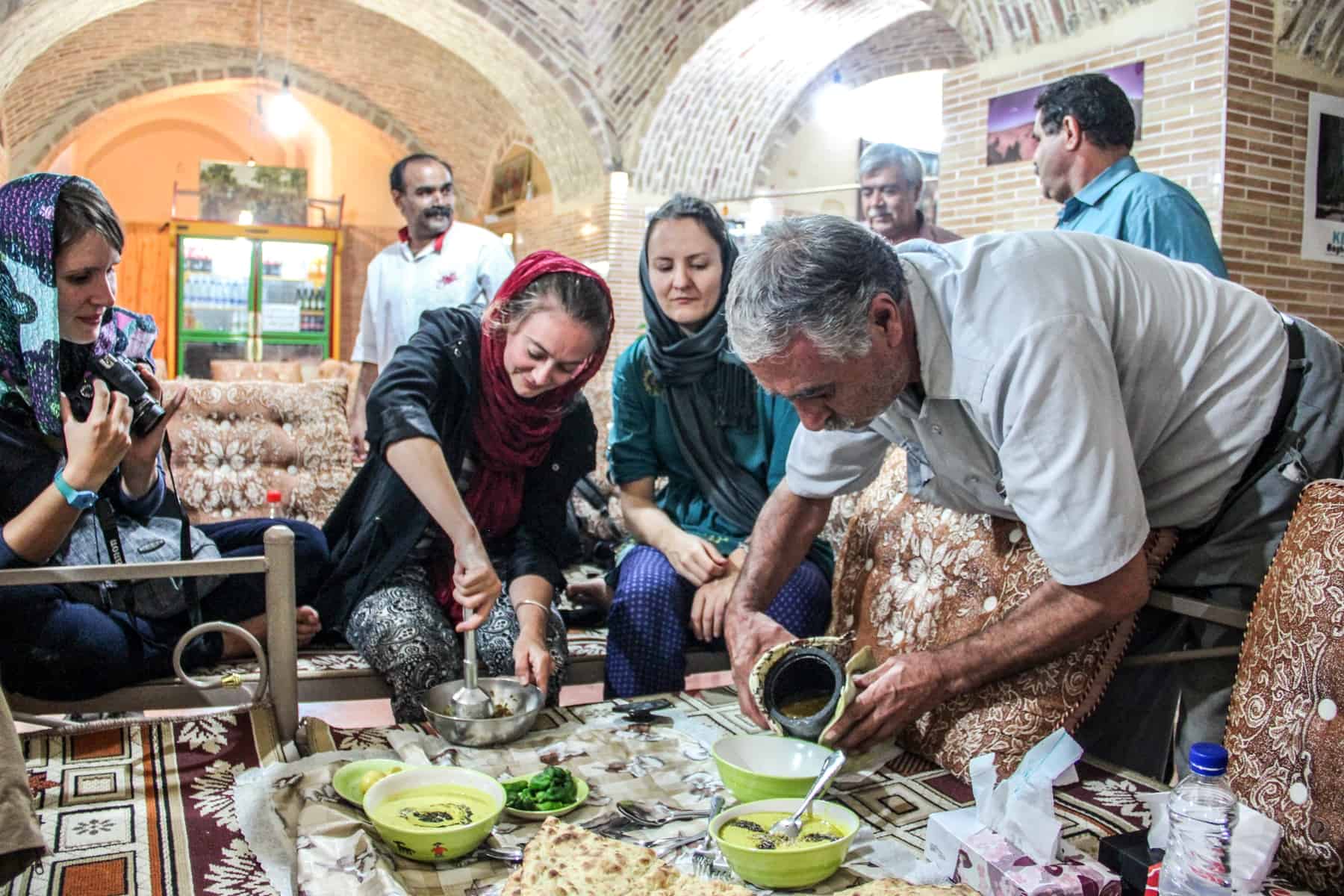
Food in Iran is better when locals show you real Persian cuisine.
There’s no alcohol in Iran. No bars, no clubs. Nothing. The best you get is non-alcoholic beer in a variety of fruity flavours like peach, lemon and strawberry which grace most menus.
There’s no set of different rules for travellers in Iran and those visiting. A local might be being kind in offering to find you the real deal at some underground gathering, but really, don’t take the chance. They might be able to waver the punishment; you won’t.
Like any country, it is crucial to know, understand and adhere to cultural and religious customs and rules that can often be very different from those at home. Here are the main rules for etiquette in Iran and interesting Iranian culture facts:
- One of the primary forms of social etiquette is TAROF, which is where Iranians usually insist on offering things to people and sometimes they do not mean it. However, you should not accept the first time.
- In Muharram month (the mourning month of Imam Hossein) people DO NOT usually wear bright colours (especially red) to respect the religious values.
- In Ramadan month , in which the majority of people keep fast during the day, it is disrespectful to eat and drink in public.
- In restaurants in Iran , it is incredibly unpleasant to see anyone clear their nose, especially loudly. In general, restaurant or not, it is also unusual to see somebody break wind.
- Shaking hands between men and women is a complicated topic. Generally speaking, it is not okay for men and women who are not related to shake hands. However, it is entirely relative. Usually, it is not advised for female tourists to extend their hand towards men, and it’s best to wait and see if the men do so first.
- The thumbs-up hand signal a derogatory sign in Iran, and it is best not to use it, especially in the presence of older people.
- When it comes to public displays of affection , you’ll see that affectionate touching, kissing, and shaking hands between men and women who are relatives are very normal. Iranian dating customs are more complex. You can kiss your significant other on the cheek, but french kissing strictly goes beyond the line. Holding hands is not something one would raise an eyebrow about at all, whereas hugging, on the other hand, would seem to be crossing the line a little. It is relative as to what extent the public display of affection is tolerated. For example, inside holy places and religious cities, it would not be easily tolerated.
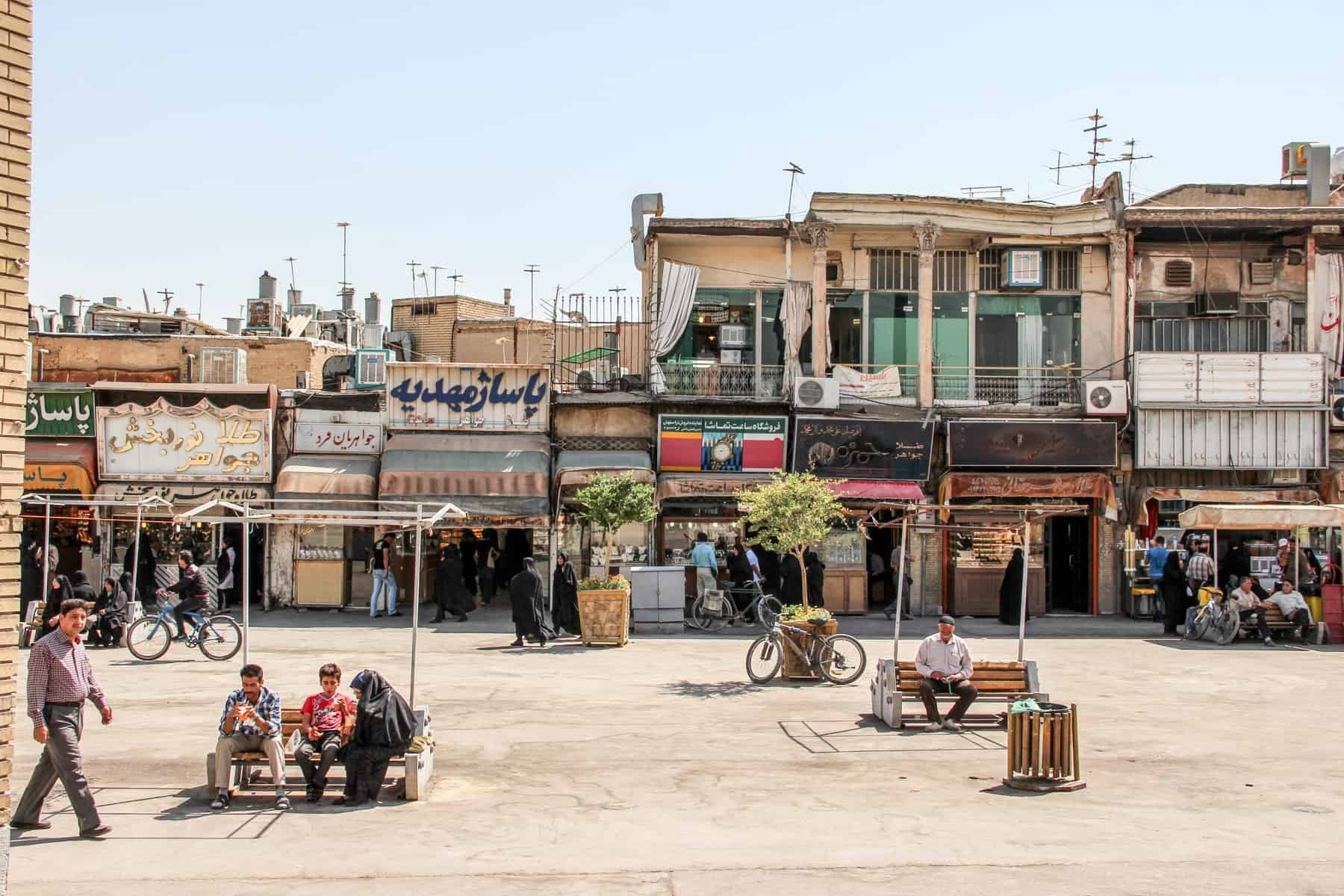
Wherever you are in Iran, it is important to adhere to cultural and religious customs and rules.
‘Persian Time’ is much like ‘Asian Time’ – things take much longer than you expect. When you travel Iran you’ll soon see that service is slower and the times you are given for things, like an arrival at a destination, are not always clear or roundabout correct, like this example:
Guide: “It takes four or five hours. So if we leave at 8 am, we will get there around 4 pm.”
Me: “But that’s eight hours, not four.”
Guide: “Yes, it takes about eight hours. We will stop at x, y and z on the way and arrive around 2 pm.”
In short, don’t rely on or worry about time, and pack a bit more patience than you would at home, especially when it comes to food, service and paying.
Ancient Persia isn’t an easily absorbed history lesson. While your guide (if you choose to have one or if you are a part of a tour group) will spout a level of information that will blow your mind, it is worth reading up on the history of Persia, as well as details on the lead-up to the Iranian Revolution in 1979. This will give a valuable understanding of the basic makeup of the country.
It will mean names like Zoroastrian, Cyrus the Great, the Achaemenid Empire, Reza Shah, Ayatollah Khomeini and Ayatollah Khamenei won’t be lost on you when you go to Iran.
Great books to read before you arrive include:
- Revolutionary Iran: A History of the Islamic Republic for a guide on the more recent history
Iran: What Everyone Needs to Know is by the same author, Michael Axworthy, and tries to explain how there’s more to Iran than its foreign relations, with part of the book also unravelling Iran’s economy, politics, culture and people.
Daughter of Persia: A Woman’s Journey from Her Father’s Harem Through the Islamic Revolution is about a woman who was born in Iran, left to study in the States and returned to a country in the grip of profound change.
- The Wind in My Hair: My Fight for Freedom in Modern Iran about a journalist in exile after being arrested for political activism
Best for when on the road:
- Easy reference for most of us came from the Lonely Planet Iran guide book . While it shouldn’t be your sole source of information, this particular Lonely Planet is a quick fix Iran travel guide, especially for historical hotspots. Having this paper guide was a handy resource for the entire trip, especially since quick access to the internet in Iran both at the hotels and while on the road is very limited.
Have you been to Iran? Are there any other pre-departure tips you would add? And if planning a trip there, and what difficulties are you facing, if any?
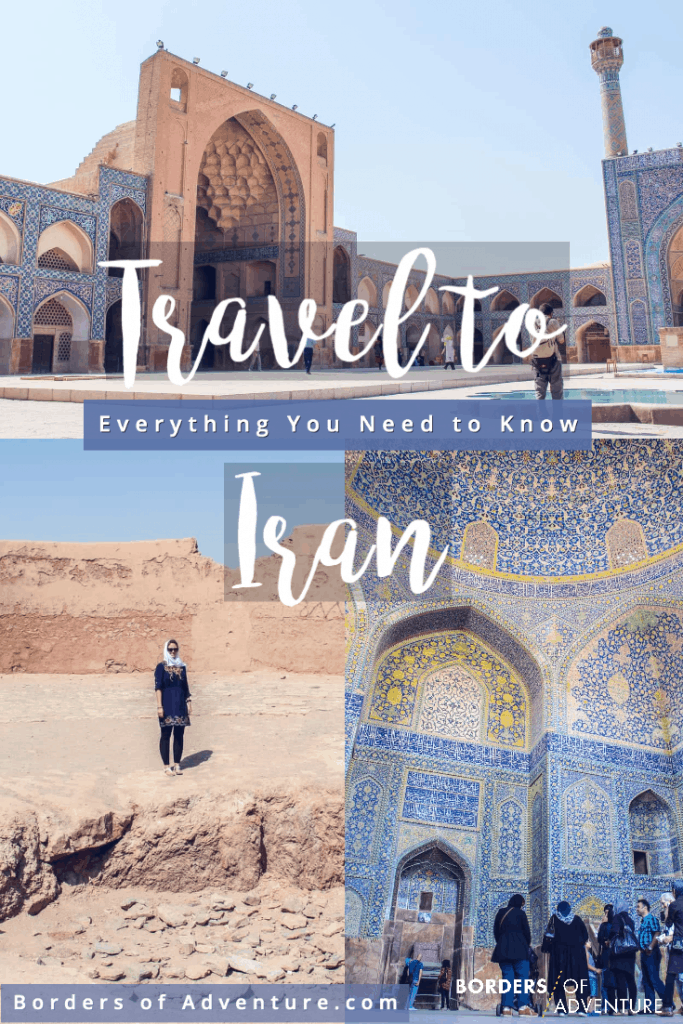
Any plagiarism of this Iran travel blog or any of its descriptions used on other sites and blogs without attribution is not information authorised by myself for use. Know your source.
About Becki
Becki Enright is a British Travel Press Award-winning writer whose work focuses on changing perceptions about misunderstood aspects of destinations. Her writing combines storytelling with insight into the social, historical, political and economic factors that shape the country or place in relation to tourism. Becki has appeared live on Sky News and CNN and has contributed to high profile media including National Geographic, Time.com, Guardian online, New York Times, Grazia and Buzzfeed.
Marcela says
19 April 2022 at 7:42 pm
Hi, is it possible to rent a car without a driver in Iran? Thanks, I loved your post!
28 April 2022 at 11:39 am
I think you can, yes! However, it isn’t something I know much about.
Hanieh says
28 March 2022 at 8:19 pm
Iran and Tehran are great🤩
7 August 2021 at 4:02 pm
Hello. I want to thank for this text. It is completely true about Iran and I as an Iranian approciate that describe Iran and Iranians truly. I really enjoy it. Most of Iranians think people of world consider us as a terrorist country while people of Iran differ from Republic Islamic Iran.
Miranda says
24 October 2019 at 8:53 am
I really like to travel to Iran, but I don’t know when is the best time to travel there, what is your recommendation?
24 October 2019 at 10:52 am
Hi Miranda. All the details are in the article. You can find an overview of the best time to visit Iran here: https://www.bordersofadventure.com/travel-to-iran-things-to-know/#When_is_the_Best_Time_to_Visit_Iran
- Article Archives
- Work with me
- Privacy Policy

You are using an outdated browser. Upgrade your browser today or install Google Chrome Frame to better experience this site.
Iran Traveler View
Travel health notices, vaccines and medicines, non-vaccine-preventable diseases, stay healthy and safe.
- Packing List
After Your Trip
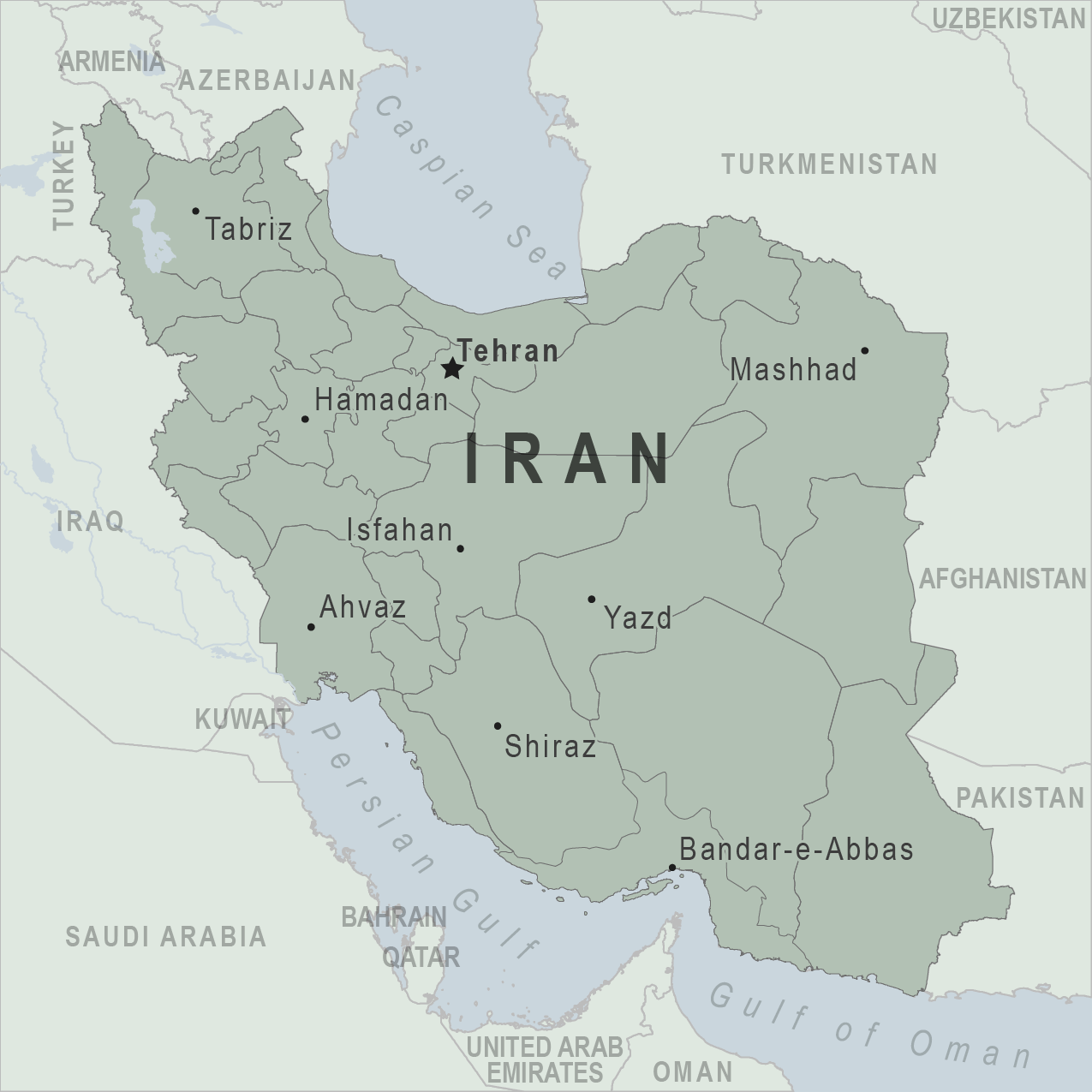
Be aware of current health issues in Iran. Learn how to protect yourself.
Level 1 Practice Usual Precautions
- Updated Global Dengue August 14, 2024 Dengue is a year-round risk in many parts of the world, with outbreaks commonly occurring every 2–5 years. Travelers to risk areas should prevent mosquito bites. Destination List: Afghanistan, and Austral Islands (Tubuai and Rurutu), and Bora-Bora), Brazil, Burkina Faso, Cape Verde, Colombia, Costa Rica, Cuba, Ecuador, including the Galápagos Islands, El Salvador, French Guiana (France), French Polynesia, including the island groups of Society Islands (Tahiti, Ghana, Guatemala, Guyana, Honduras, Iran, Laos, Mali, Marquesas Islands (Hiva Oa and Ua Huka), Mauritius, Mexico, Moorea, Panama, Samoa, Singapore, Sri Lanka, Sudan, Uruguay
⇧ Top
Check the vaccines and medicines list and visit your doctor at least a month before your trip to get vaccines or medicines you may need. If you or your doctor need help finding a location that provides certain vaccines or medicines, visit the Find a Clinic page.
- Avoid contaminated water
Leptospirosis
How most people get sick (most common modes of transmission)
- Touching urine or other body fluids from an animal infected with leptospirosis
- Swimming or wading in urine-contaminated fresh water, or contact with urine-contaminated mud
- Drinking water or eating food contaminated with animal urine
- Avoid contaminated water and soil
- Avoid floodwater
Clinical Guidance
Schistosomiasis
- Wading, swimming, bathing, or washing in contaminated freshwater streams, rivers, ponds, lakes, or untreated pools.
Avoid bug bites
Crimean-Congo Hemorrhagic fever
- Tick bite
- Touching the body fluids of a person or animal infected with CCHF
- Avoid Bug Bites
- Mosquito bite
Leishmaniasis
- Sand fly bite
Airborne & droplet
Avian/bird flu.
- Being around, touching, or working with infected poultry, such as visiting poultry farms or live-animal markets
- Avoid domestic and wild poultry
- Breathing in air or accidentally eating food contaminated with the urine, droppings, or saliva of infected rodents
- Bite from an infected rodent
- Less commonly, being around someone sick with hantavirus (only occurs with Andes virus)
- Avoid rodents and areas where they live
- Avoid sick people
Middle East Respiratory Syndrome (MERS)
- Scientists do not fully understand how the MERS virus spreads
- May spread from to others when an infected person coughs or sneezes
- May spread to people from camels.
Middle East Respiratory virus syndrome (MERS)
Tuberculosis (TB)
- Breathe in TB bacteria that is in the air from an infected and contagious person coughing, speaking, or singing.
Learn actions you can take to stay healthy and safe on your trip. Vaccines cannot protect you from many diseases in Iran, so your behaviors are important.
Eat and drink safely
Food and water standards around the world vary based on the destination. Standards may also differ within a country and risk may change depending on activity type (e.g., hiking versus business trip). You can learn more about safe food and drink choices when traveling by accessing the resources below.
- Choose Safe Food and Drinks When Traveling
- Water Treatment Options When Hiking, Camping or Traveling
- Global Water, Sanitation and Hygiene (WASH)
- Avoid Contaminated Water During Travel
You can also visit the Department of State Country Information Pages for additional information about food and water safety.
Prevent bug bites
Bugs (like mosquitoes, ticks, and fleas) can spread a number of diseases in Iran. Many of these diseases cannot be prevented with a vaccine or medicine. You can reduce your risk by taking steps to prevent bug bites.
What can I do to prevent bug bites?
- Cover exposed skin by wearing long-sleeved shirts, long pants, and hats.
- Use an appropriate insect repellent (see below).
- Use permethrin-treated clothing and gear (such as boots, pants, socks, and tents). Do not use permethrin directly on skin.
- Stay and sleep in air-conditioned or screened rooms.
- Use a bed net if the area where you are sleeping is exposed to the outdoors.
What type of insect repellent should I use?
- FOR PROTECTION AGAINST TICKS AND MOSQUITOES: Use a repellent that contains 20% or more DEET for protection that lasts up to several hours.
- Picaridin (also known as KBR 3023, Bayrepel, and icaridin)
- Oil of lemon eucalyptus (OLE) or para-menthane-diol (PMD)
- 2-undecanone
- Always use insect repellent as directed.
What should I do if I am bitten by bugs?
- Avoid scratching bug bites, and apply hydrocortisone cream or calamine lotion to reduce the itching.
- Check your entire body for ticks after outdoor activity. Be sure to remove ticks properly.
What can I do to avoid bed bugs?
Although bed bugs do not carry disease, they are an annoyance. See our information page about avoiding bug bites for some easy tips to avoid them. For more information on bed bugs, see Bed Bugs .
For more detailed information on avoiding bug bites, see Avoid Bug Bites .
Stay safe outdoors
If your travel plans in Iran include outdoor activities, take these steps to stay safe and healthy during your trip.
- Stay alert to changing weather conditions and adjust your plans if conditions become unsafe.
- Prepare for activities by wearing the right clothes and packing protective items, such as bug spray, sunscreen, and a basic first aid kit.
- Consider learning basic first aid and CPR before travel. Bring a travel health kit with items appropriate for your activities.
- If you are outside for many hours in heat, eat salty snacks and drink water to stay hydrated and replace salt lost through sweating.
- Protect yourself from UV radiation : use sunscreen with an SPF of at least 15, wear protective clothing, and seek shade during the hottest time of day (10 a.m.–4 p.m.).
- Be especially careful during summer months and at high elevation. Because sunlight reflects off snow, sand, and water, sun exposure may be increased during activities like skiing, swimming, and sailing.
- Very cold temperatures can be dangerous. Dress in layers and cover heads, hands, and feet properly if you are visiting a cold location.
Stay safe around water
- Swim only in designated swimming areas. Obey lifeguards and warning flags on beaches.
- Practice safe boating—follow all boating safety laws, do not drink alcohol if driving a boat, and always wear a life jacket.
- Do not dive into shallow water.
- Do not swim in freshwater in developing areas or where sanitation is poor.
- Avoid swallowing water when swimming. Untreated water can carry germs that make you sick.
- To prevent infections, wear shoes on beaches where there may be animal waste.
Schistosomiasis, a parasitic infection that can be spread in fresh water, is found in Iran. Avoid swimming in fresh, unchlorinated water, such as lakes, ponds, or rivers.
Keep away from animals
Most animals avoid people, but they may attack if they feel threatened, are protecting their young or territory, or if they are injured or ill. Animal bites and scratches can lead to serious diseases such as rabies.
Follow these tips to protect yourself:
- Do not touch or feed any animals you do not know.
- Do not allow animals to lick open wounds, and do not get animal saliva in your eyes or mouth.
- Avoid rodents and their urine and feces.
- Traveling pets should be supervised closely and not allowed to come in contact with local animals.
- If you wake in a room with a bat, seek medical care immediately. Bat bites may be hard to see.
All animals can pose a threat, but be extra careful around dogs, bats, monkeys, sea animals such as jellyfish, and snakes. If you are bitten or scratched by an animal, immediately:
- Wash the wound with soap and clean water.
- Go to a doctor right away.
- Tell your doctor about your injury when you get back to the United States.
Consider buying medical evacuation insurance. Rabies is a deadly disease that must be treated quickly, and treatment may not be available in some countries.
Reduce your exposure to germs
Follow these tips to avoid getting sick or spreading illness to others while traveling:
- Wash your hands often, especially before eating.
- If soap and water aren’t available, clean hands with hand sanitizer (containing at least 60% alcohol).
- Don’t touch your eyes, nose, or mouth. If you need to touch your face, make sure your hands are clean.
- Cover your mouth and nose with a tissue or your sleeve (not your hands) when coughing or sneezing.
- Try to avoid contact with people who are sick.
- If you are sick, stay home or in your hotel room, unless you need medical care.
Avoid sharing body fluids
Diseases can be spread through body fluids, such as saliva, blood, vomit, and semen.
Protect yourself:
- Use latex condoms correctly.
- Do not inject drugs.
- Limit alcohol consumption. People take more risks when intoxicated.
- Do not share needles or any devices that can break the skin. That includes needles for tattoos, piercings, and acupuncture.
- If you receive medical or dental care, make sure the equipment is disinfected or sanitized.
Know how to get medical care while traveling
Plan for how you will get health care during your trip, should the need arise:
- Carry a list of local doctors and hospitals at your destination.
- Review your health insurance plan to determine what medical services it would cover during your trip. Consider purchasing travel health and medical evacuation insurance.
- Carry a card that identifies, in the local language, your blood type, chronic conditions or serious allergies, and the generic names of any medications you take.
- Some prescription drugs may be illegal in other countries. Call Iran’s embassy to verify that all of your prescription(s) are legal to bring with you.
- Bring all the medicines (including over-the-counter medicines) you think you might need during your trip, including extra in case of travel delays. Ask your doctor to help you get prescriptions filled early if you need to.
Many foreign hospitals and clinics are accredited by the Joint Commission International. A list of accredited facilities is available at their website ( www.jointcommissioninternational.org ).
In some countries, medicine (prescription and over-the-counter) may be substandard or counterfeit. Bring the medicines you will need from the United States to avoid having to buy them at your destination.
Malaria is a risk in some parts of Iran. If you are going to a risk area, fill your malaria prescription before you leave, and take enough with you for the entire length of your trip. Follow your doctor’s instructions for taking the pills; some need to be started before you leave.
Select safe transportation
Motor vehicle crashes are the #1 killer of healthy US citizens in foreign countries.
In many places cars, buses, large trucks, rickshaws, bikes, people on foot, and even animals share the same lanes of traffic, increasing the risk for crashes.
Be smart when you are traveling on foot.
- Use sidewalks and marked crosswalks.
- Pay attention to the traffic around you, especially in crowded areas.
- Remember, people on foot do not always have the right of way in other countries.
Riding/Driving
Choose a safe vehicle.
- Choose official taxis or public transportation, such as trains and buses.
- Ride only in cars that have seatbelts.
- Avoid overcrowded, overloaded, top-heavy buses and minivans.
- Avoid riding on motorcycles or motorbikes, especially motorbike taxis. (Many crashes are caused by inexperienced motorbike drivers.)
- Choose newer vehicles—they may have more safety features, such as airbags, and be more reliable.
- Choose larger vehicles, which may provide more protection in crashes.
Think about the driver.
- Do not drive after drinking alcohol or ride with someone who has been drinking.
- Consider hiring a licensed, trained driver familiar with the area.
- Arrange payment before departing.
Follow basic safety tips.
- Wear a seatbelt at all times.
- Sit in the back seat of cars and taxis.
- When on motorbikes or bicycles, always wear a helmet. (Bring a helmet from home, if needed.)
- Avoid driving at night; street lighting in certain parts of Iran may be poor.
- Do not use a cell phone or text while driving (illegal in many countries).
- Travel during daylight hours only, especially in rural areas.
- If you choose to drive a vehicle in Iran, learn the local traffic laws and have the proper paperwork.
- Get any driving permits and insurance you may need. Get an International Driving Permit (IDP). Carry the IDP and a US-issued driver's license at all times.
- Check with your auto insurance policy's international coverage, and get more coverage if needed. Make sure you have liability insurance.
- Avoid using local, unscheduled aircraft.
- If possible, fly on larger planes (more than 30 seats); larger airplanes are more likely to have regular safety inspections.
- Try to schedule flights during daylight hours and in good weather.
Medical Evacuation Insurance
If you are seriously injured, emergency care may not be available or may not meet US standards. Trauma care centers are uncommon outside urban areas. Having medical evacuation insurance can be helpful for these reasons.
Helpful Resources
Road Safety Overseas (Information from the US Department of State): Includes tips on driving in other countries, International Driving Permits, auto insurance, and other resources.
The Association for International Road Travel has country-specific Road Travel Reports available for most countries for a minimal fee.
Maintain personal security
Use the same common sense traveling overseas that you would at home, and always stay alert and aware of your surroundings.
Before you leave
- Research your destination(s), including local laws, customs, and culture.
- Monitor travel advisories and alerts and read travel tips from the US Department of State.
- Enroll in the Smart Traveler Enrollment Program (STEP) .
- Leave a copy of your itinerary, contact information, credit cards, and passport with someone at home.
- Pack as light as possible, and leave at home any item you could not replace.
While at your destination(s)
- Carry contact information for the nearest US embassy or consulate .
- Carry a photocopy of your passport and entry stamp; leave the actual passport securely in your hotel.
- Follow all local laws and social customs.
- Do not wear expensive clothing or jewelry.
- Always keep hotel doors locked, and store valuables in secure areas.
- If possible, choose hotel rooms between the 2nd and 6th floors.
Healthy Travel Packing List
Use the Healthy Travel Packing List for Iran for a list of health-related items to consider packing for your trip. Talk to your doctor about which items are most important for you.
Why does CDC recommend packing these health-related items?
It’s best to be prepared to prevent and treat common illnesses and injuries. Some supplies and medicines may be difficult to find at your destination, may have different names, or may have different ingredients than what you normally use.
If you are not feeling well after your trip, you may need to see a doctor. If you need help finding a travel medicine specialist, see Find a Clinic . Be sure to tell your doctor about your travel, including where you went and what you did on your trip. Also tell your doctor if you were bitten or scratched by an animal while traveling.
For more information on what to do if you are sick after your trip, see Getting Sick after Travel .
Map Disclaimer - The boundaries and names shown and the designations used on maps do not imply the expression of any opinion whatsoever on the part of the Centers for Disease Control and Prevention concerning the legal status of any country, territory, city or area or of its authorities, or concerning the delimitation of its frontiers or boundaries. Approximate border lines for which there may not yet be full agreement are generally marked.
Other Destinations
If you need help finding travel information:
Message & data rates may apply. CDC Privacy Policy
File Formats Help:
- Adobe PDF file
- Microsoft PowerPoint file
- Microsoft Word file
- Microsoft Excel file
- Audio/Video file
- Apple Quicktime file
- RealPlayer file
- Zip Archive file
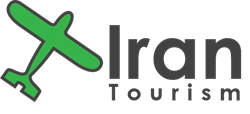
- Iran Information
- Travel Plans
A Complete Travel Guide to Tehran City

Tehran city
Tehran city is the capital city of Iran. It is among the fastest-growing destinations for tourists. When you plan to travel to Iran , it is hard to ignore visiting Tehran city and the whole Tehran tourism potentiality.
If you happen to travel to Iran, it should be noted that Tehran City is the most populous city in Iran and the second in the Middle East. Many of the oldest buildings in the city are not older than a century; therefore, in terms of historical background, it is a pretty young city compared to Isfahan city and Shiraz city .
Although Rey city is one of the ancient Persian cities in its south traces its origin to ancient times. The Northern parts of Tehran city are seats to more prosperous neighborhoods. Here is where you may find glitzy shops for famous Western brands.
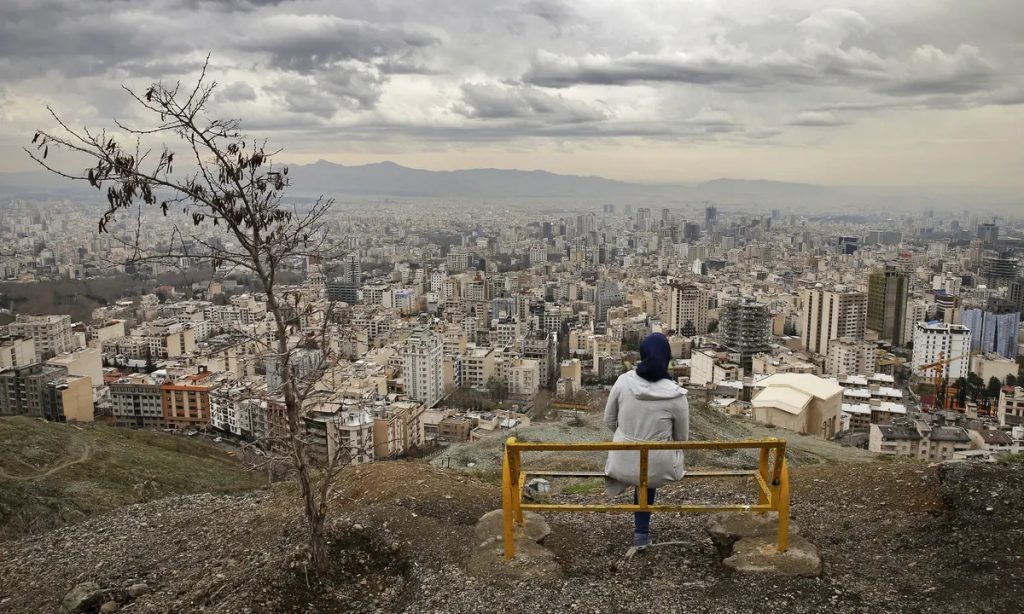
Tehran from above
Tehran is located to the south of the Alborz mountains; when you travel to Tehran, the northern parts of the city are closer to ski resorts and mountain climbing sights. Therefore, if you plan to travel to Iran, Tehran, to enjoy its nature, you would preferably find accommodation in the northern parts.
On the other hand, if you are traveling to Iran and your idea of Tehran tourism is to visit its historical attractions, the central and the southern parts are good for you. Generally, the more you move to the south, the poorer the neighborhoods become. The central part is its oldest, most densely crowded region.
How Do You Travel to Tehran?
Most people who travel to Iran initially arrive at Imam Khomeini Airport (IKA). You may travel to Tehran city from there, using either a taxi or the subway. The subway, however, runs for some hours and is not operational during others. Using internet ride-hailing apps in Iran, such as Snapp , is an affordable yet reliable option.
If you want to continue your travel to Iran by visiting other cities, three major bus terminals are available to get you to almost any region in Iran. Those three are the South, West, and Beyhaghi terminals.
Using the Tehran metro app, you should know that the Beyhaghi terminal is named Haghani. Additionally, you may use the Tehran BRT app to take advantage of Bus Rapid Transit (BRT) in Tehran. Traveling to Iran by plane to other Iranian destinations is possible via Mehrabad Airport . The airport is accessible through line 4 of the Tehran metro.
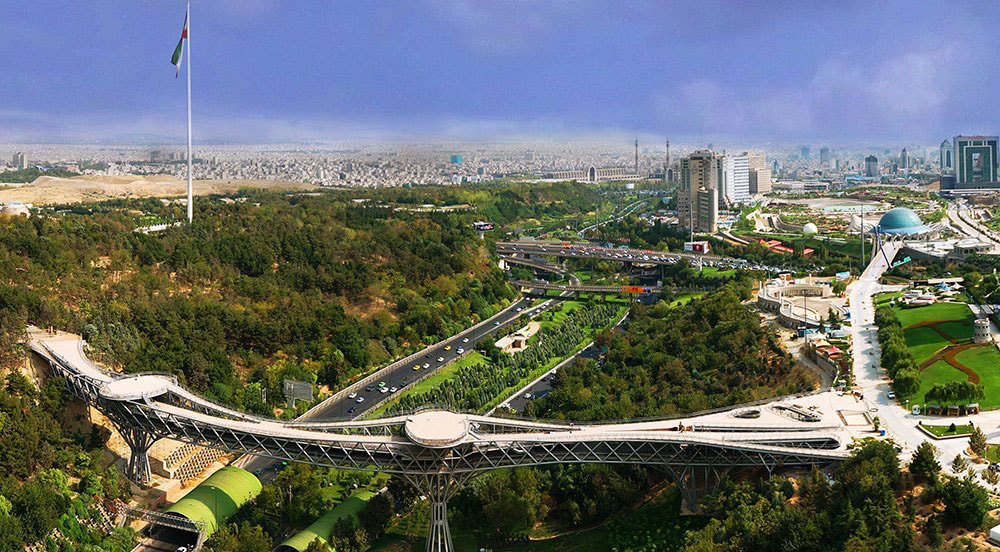
Tehran Tabiat Bridge
The two stations are Mehrabad Airport Payane 1&2 and Mehrabad Airport Payane 3&4 ( Payane means Terminal, and this word in Farsi is written پایانه .). Tehran railway station is within your reach by the subway and Bus Rapid Transit network in Iran (BRT network) if you travel by train.
The station is named “Rah Ahan” (i.e., railway) on BRT and metro maps. It is not usually hard to travel to Tehran from another Iranian city, as most of the cities in Iran do have buses and flights to Tehran city. However, not all the major cities are connected to the railway network.
Getting around in Tehran
The development of the Tehran highway network has been very rapid, more rapid than the development of public transport , such as the Tehran metro and buses. This has been unfavorable to pedestrians as many parts of Tehran city are hard to pass without one’s car.
When you travel to Tehran to get around Tehran city, you have quite a few options. If you choose public transportation, you should attain a ticket card, which works with buses and the subway. The electronic card may be purchased at any subway station and bus terminal across Tehran.
There are also shared taxis available; If you are familiar with ‘service’ taxis in Arabic countries, these are the same as those.
These shared taxis in Iran are cheaper than private taxis. However, the boards and tableau for these taxis are exclusively in Persian, so you will have difficulty using them if you do not know Persian or have someone to guide you. In another article, we have elaborated on some Persian expressions and catchphrases that might be helpful when getting a shared taxi.
There are also many different ride-hailing apps operational in Tehran city that you can use. Walking in the central neighborhoods is a big challenge, especially in the rush hours as the streets are crowded with cars, the pavements packed full of people, motorbikes, and even parked cars!
However, during your travel to Tehran, you do not want to miss exploring different neighborhoods on foot when you get the chance to do so. Many would advise you to walk Valiasr Street, the most extended city in Tehran, stretching across the city from its north to the south. Lastly, to better take advantage of BRT and the metro in Tehran, you may take advantage of some useful apps for visiting Iran .
Attractions of Tehran
The city was the capital city during the Qajar dynasty’s reign. Inheriting some of its current attractions like Golestan Palace , Bahrestan, and Ferdows Garden from that period.
If you are looking for older attractions in Tehran city, you have to head southwards to the ancient city of Rey and visit the Bahram Fire Temple and Tughrul Tower .
Since this city was the capital of Iran at the time of the nation’s transition to modernity, you may observe the traces of this change and its impact on the lives of Iranians in Tehran city better than anywhere else.
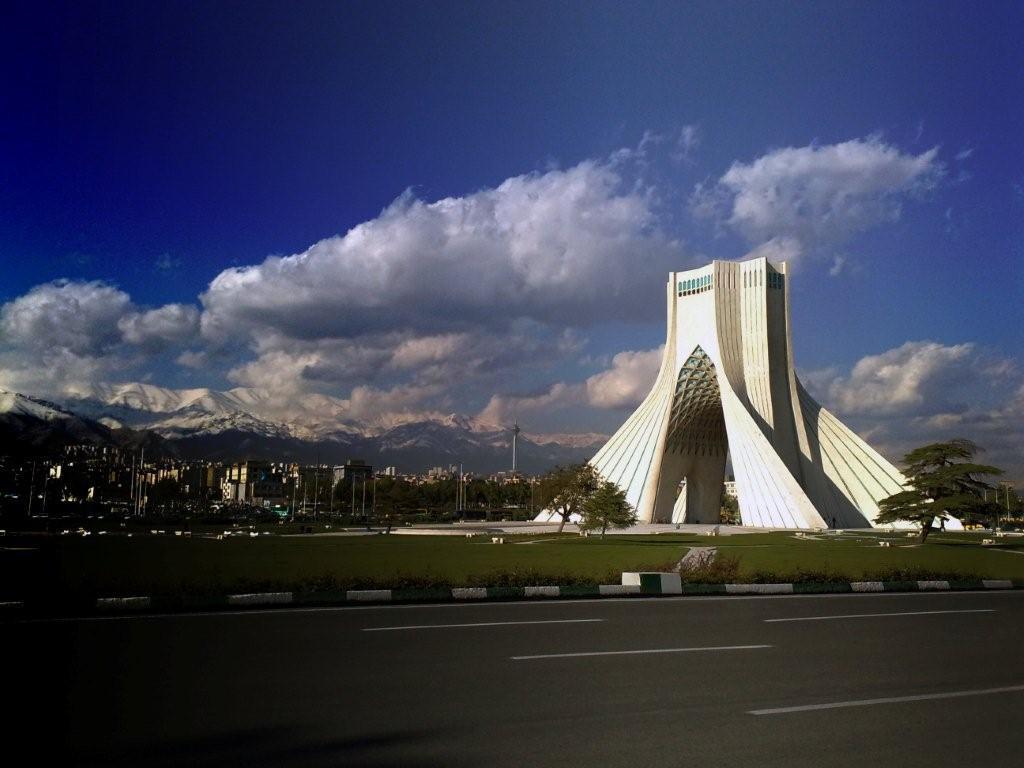
Azadi Tower in Tehran city
For that aim, we suggest visiting the National Garden. It was initially a field constructed in the Qajar period as a shooting range. Later, Reza Shah Pahlavi completed some of the governmental offices around it; many have been turned into museums.
The compound and its surrounding museums are undoubtedly good destinations and will take one full day of your trip, so plan to start your visit in the morning. You will miss a lot if you travel to Tehran and do not visit its traditional bazaars.
Tajrish traditional bazaar to the north and Tehran Grand Bazaar to the central south will surely be good destinations if you are fond of conventional Eastern bazaars.
Tochal Mountain and Ski Resort are located in the north of Tehran. A gondola lift connects Velenjak valley to the main ridge at 3740 meters. The good news is that Velenjak Valley is in an urban area, where you may park your car, get on the gondola lift, get off in Tochal Complex , and start skiing.
Along with the ski resort, Tochal Complex also features a hotel with a coffee shop, a restaurant, etc. The complex is open to the public in winter.
Iranian Dishes in Tehran
In Tehran city, there are increasingly more options available for food. When you travel to Iran, you will not regret trying different kebab varieties since you will not find many in other countries. You have many choices for eating kebabs, from the fancy Nayeb and Alborz restaurants to more affordable ones such as Moselem and Reza Loghme .
If you happen to visit the National Garden, keep in mind that the nearby Sie Tir Street hosts a perfect variety of food booths offering fast food and more traditional Iranian dishes, mainly for a very reasonable price.
Dizi is another Iranian food that may make your travel to Iran more delicious. Dizi restaurant in the Iranshahr neighborhood only serves Dizis, as its name suggests. Azari restaurant around Rah-Ahan Square also serves quality dizis. Iranian stews (aka. Khorsesh ) are the most loved Iranian dishes and are usually served with rice. The delicious category includes Khoresh Gheymeh, Khoresh Sabzi, and Khoresh Fesenjan.
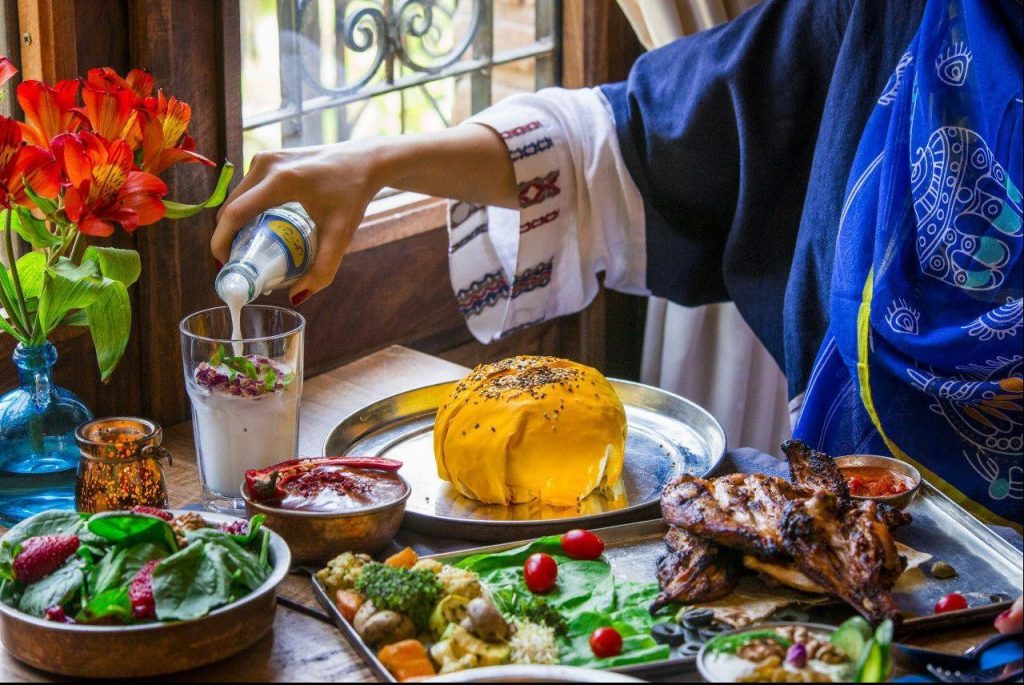
the best restaurant in Tehran
Although these dishes are very popular and many restaurants across Tehran serve them, we suggest you pay a visit to Ghanari Restaurant if you are looking for some of the most delicious ones. All the dishes mentioned so far include meat, so you might ask: How to survive as a vegetarian in Tehran?
Charmy’s Pasta and Ananda Vegan Restaurant are the answers.
In any condition, you may get help from the Foursquare website and its application, as countless restaurants in Tehran are listed there. Even Iranian users write their comments and reviews mainly in English.
Tehran Tourism on the rise
As many media outlets suggest, there has been an increase in the number of visitors who travel to Iran and Tehran. Many find their stay very enjoyable because of the hospitality Iranians offer them.
irantravels Travel to Iranian cities travel to tehran
Previous Best Hostel in Iran for Tourists
Next rapid transit in iran, related posts.
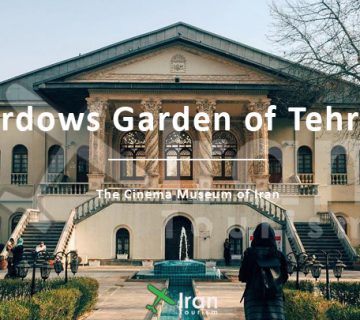
Ferdows Garden
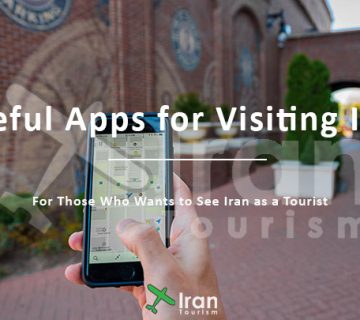
Useful Apps for Visiting Iran as a Tourists
Leave a reply cancel reply.
Your email address will not be published. Required fields are marked *
Save my name, email, and website in this browser for the next time I comment.
- (+98) 921-497-4273

- Your cart is empty
- Iran City Guide
Tehran Travel Guide
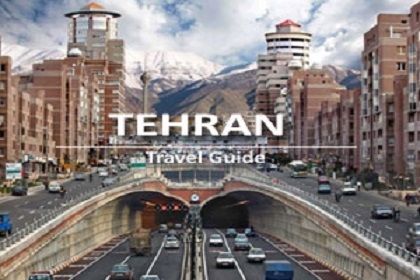
As a cosmopolitan city, with great museums, parks, restaurants and warm friendly people, Tehran has earned itself the rather unenviable reputation as a smog-filled, traffic-clogged and featureless sprawl of concrete bursting at the seams with 15 million residents. But meanwhile, this metropolis is a heaven for museum lovers and keen travelers. It’s the city of monuments, museums, palaces and interesting sights, so much that some of its major tourist spots may be hidden or lost in the hustle and bustle of its streets. But most of visitors do not know that how their Tehran visit can be interesting if one know the highlights and the Tehran Facts. It deserves at least a few days of your Iran itinerary.

History of Tehran
Back in ancient times, the village of Tehran was overshadowed by the city of Rey – the capitals of the Seljuk dynasty. In 1220 the Mongols invaded Rey as they swept across Persia, executing thousands in the process. Most who escaped fled to Tehran and the future capital’s first population explosion turned the village into a prosperous trading center.
In the mid-16th century Tehran’s natural landscape, lush gardens, clear rivers and good hunting areas brought it to the attention of the early Safavid king, Tahmasp I . Under his patronage, gardens were planted, some famous caravansaries were built and the town fortified by a wall with 114 towers. As Tehran continued to grow under later Safavid kings, European visitors wrote of the town’s many enchanting vineyards and gardens.
During Zand dynasty, Tehran was a little town that was significant from a strategic point of view. The first of the Qajar kings, Agha Mohammed Khan , chose Tehran as the country’s capital in 1778, and most of its growth started during the reign of a subsequent Qajar monarch, Fath-Ali Shah . The castle built by Agha Mohammed Khan was to contain the new majestic buildings. During reign of Nasser Al-Din Shah the city’s master sketch was prepared and modern streets were constructed. Later, huge central squares like Toopkhaneh square (now Imam Khomeini) and quite a few military buildings were built. Although Qajar dynasty was in a period of decline, Tehran soon took the shape of a modern city. The structure of large government buildings, new streets, urban service organizations, and academic and methodical centers were started, even as most of the old gates and buildings were destroyed and the city’s old architectural fabric replaced by a contemporary one.
Top places to see in Tehran
Tehran is a city of parks and possesses more than 800 of them, all well-kept. The city is nearly a mile high above the sea level and as a result is cooler than other cities in the middle east. Summer temperatures are around 32°C or about 90-95°F. The air tends to be very dry. A combination of factors make Tehran a pleasant place to visit: The dry climate which is constantly cool (at least in the evenings), the proximity of the mountains, the parks and gardens where flowers blossom all through the year, the alleys of trees in the avenues or even smaller streets, and even the water that runs down from the upper city along deep and wide gutters which look like small rivers during spring.
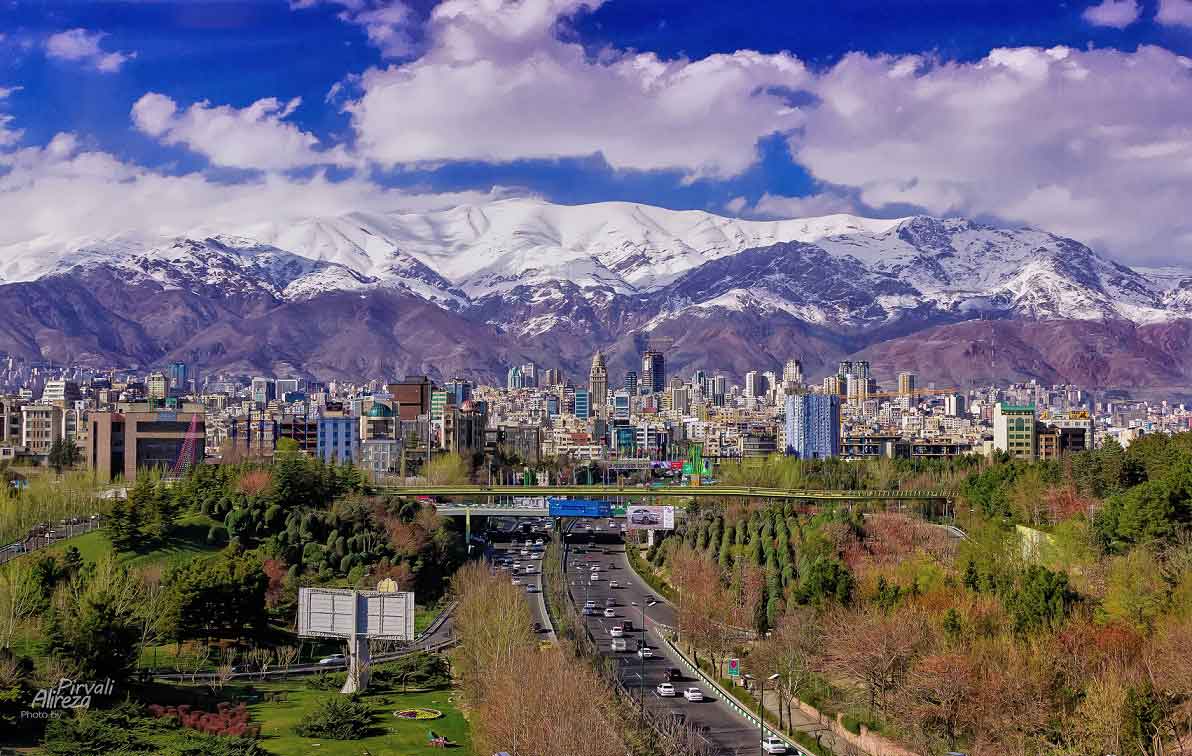
The Alborz mountain range on the north of Tehran, which hosts Mount Damavand -the highest peak in Iran- provides fantastic conditions for ski lovers in the winter. In winter, the mountain hotels and ski resorts at Shemshak, and Dizin are full several days a week. Some specialist skiers consider the snow value in northern Tehran to be one of the most excellent in the world. The main feature of Tehran tourist centers are its interesting museums such as Iran National Museum which is known as the first Iranian archaeological museum, divided into two sections based on different periods of Iranian history: Pre Islamic and Islamic periods, the Iran Carpet Museum comprises of two halls displaying some finest Persian carpets from different regions and Glassware Museum (ABGINEH) which is a beautiful Qajar building full of interesting objects. During your stay you can also enjoy visiting Tehran palaces such as the 410 hectares Sa’ad Abad Complex which was the residential palaces of Mohammad Reza Shah , his father and some members of the former Iranian royal family , Niavaran palace complex in north east Tehran and the famous Golestan palace dating back to Qajar era.
Guide to visit Tehran
Here is a list of Tehran must sees:
Golestan Palace
The Golestan Palace is a complex of palaces and buildings remaining from the historic citadel of Tehran, the residence of the Qajar dynasty and is considered one of the most beautiful and oldest buildings in Iran’s 200-year-old capital. The Golestan palace, originally dating back some 442 years, represents a unique and magnificent document of the Safavid , Qajar and Pahlavi era’s architecture and decorative arts, which peaked under Nasser al-Din Shah . This is the first example of a combination of European and Persian style, which later became one of the hallmarks of the Iranian art and architecture in the late 19th and early 20th centuries.
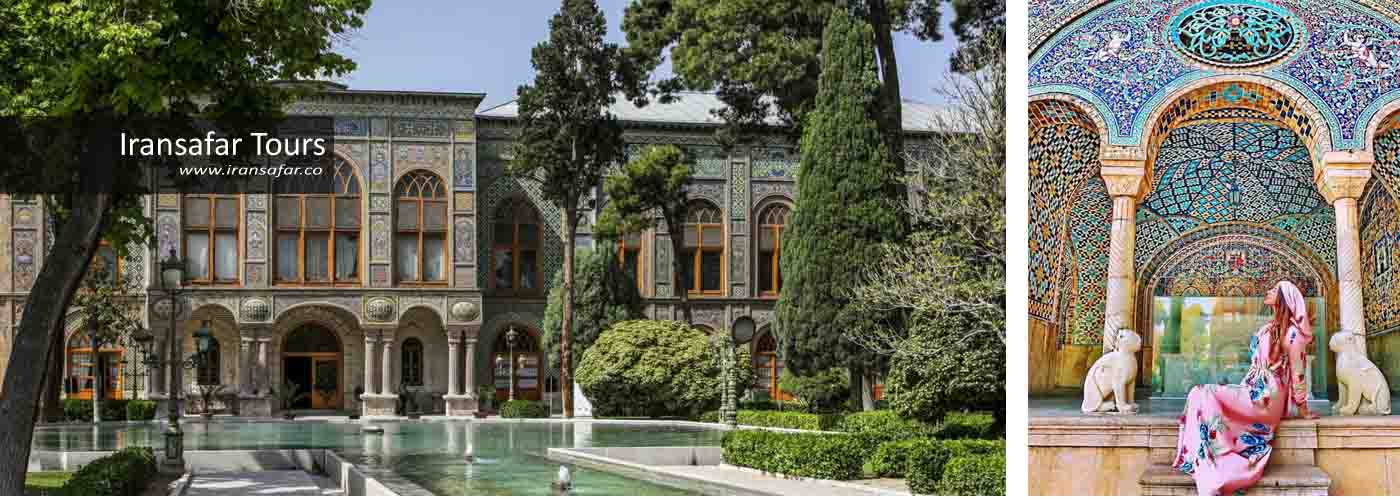
The glories of the Qajar Era are played out across this complex of palaces ornamented with mirrors, paintings, glazed tiles. Set around an elegant garden, there are several buildings with 17 different visitable sections including the Salam Hall , the spectacular Mirror Hall , Ivory Hall , Negar Khaneh (Iranian Painting Gallery), Antropology museum , Marble Throne terrace, Karim Khani Nook , Shams ol-Emareh edifice, Aks Khaneh (Qajar photography museum), Almas Hall , Abyaz Hall and Badgir Hall.
Please note: You need to buy separated tickets for the above sections at the gate.
Although there was an original Safavid Empire era small citadel on this site, Nasser al-Din Shah Qajar (r 1848–96), impressed by what he’d seen of European palaces, ordered to add new buildings to his Golestan (Palace of Flowers). Originally, Golestan complex was bigger than what you see today, but most government sections and the Harem were demolished due to urban projects under the Pahlavi dynasty .
Read – The ultimate guide to Golestan Palace
National Museum of Iran
Considered as the main museum of Tehran, Iran National Museum is the first choice for travelers who are interested in archeology and history. The visitors of the museum can follow up the whole history of Iran from the Paleolithic Era to the Qajar period (early 20 th century). Due to its location at the heart of Tehran, it is easy to include the museum to a day tour of Tehran.
The National Museum of Iran is the most important museum in the country in terms of preservation, display and research of Iranian archaeological collections. Currently, the National Museum exhibits about 300,000 objects that reflect the richness of Iranian culture and civilization, art, economic growth, and technological achievements.
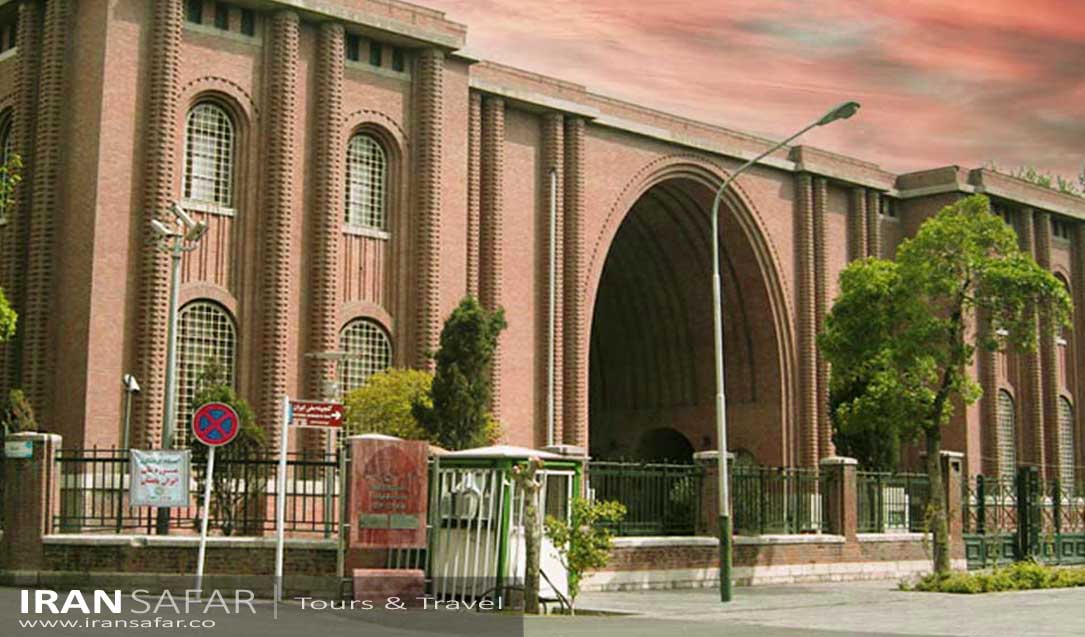
National Museum of Iran consists of two buildings, built one after each other. The construction of the main building began in 1935 under supervision of André Godard , French architect and archaeologist. It is decorated with red bricks in the form of a horizontal rectangle lying on the ground, consisting of three separate parts that are interconnected. The impressive arch-shaped entrance is an inspiration from Sassanian architecture. This old building exhibits the prehistoric and pre-Islamic objects and is called the Museum of Ancient Iran . On the other side of this old building, you will find a relatively new building that hosts the Museum of the Islamic Period . It is a three-story building with a ground floor dedicated to temporary exhibitions and a meeting hall. The first floor is dedicated to objects from the Timurid , Safavid and Qajar periods, and in the second floor you will see works from the early Islamic period, the Seljuks and the Ilkhanids .
Read – Full guide to the National Museum of Iran
Niavaran Palace Complex
Niavaran region is located in north Tehran, near the Alborz mountain range. In 19th century, it was chosen as a summer residence for Iranian kings during the Qajar era. In the past, the Niavaran complex in Tehran was much smaller than today and was located outside the city. Due to the proximity to the mountains and the excellent climate in this region, Fath Ali Shah – the second king of Qajars- ordered to build a garden and a mansion as his summer residence.
Years later, during the Pahlavi era -the last royal dynasty of Iran- Niavaran Palace was first chosen as a place to receive foreign guests, and then it became the residence of the king Mohamad Reza Pahlavi and his wife, Farah Diba , and their children.
Read – Full guide to Niavaran Palace Complex
Sa’adabad Palace Complex
The Saadabad palace complex (also Sa’ad Abad) is located in north Tehran. This site was originally the summer residence of the Qajar king Ahmad Shah in the 19th century and later was converted into the main residential complex of the Pahlavi family in 20th century. Saadabad complex was built in a large garden with a total area of about 300 hectares.
After the Islamic revolution, it was turned into a public museum. Saadabad garden with its tall trees, orchards and beautiful nature alone is a great attraction for visitors in different seasons of the year. In this article, we are going to introduce some of the most important parts of this complex to you.
Read – Full guide to Sa’ad Abad Palace Complex
Vali Asr Street
The most important street in Tehran and one of the most beautiful streets in the world, Vali Asr street is about 18 kilometers long and has been in the list of Tehran’s highlights in various periods of Tehran’s history. According to some documents from 19th century, north of Vali Asr Avenue was the promenade of the Qajar family and their summer palaces were located there. This street connects the northern and southern parts of Tehran. Railway Square is the starting point and Tajrish Square is the last destination of Valiasr Street. This street can be considered the center of Tehran’s art cafes
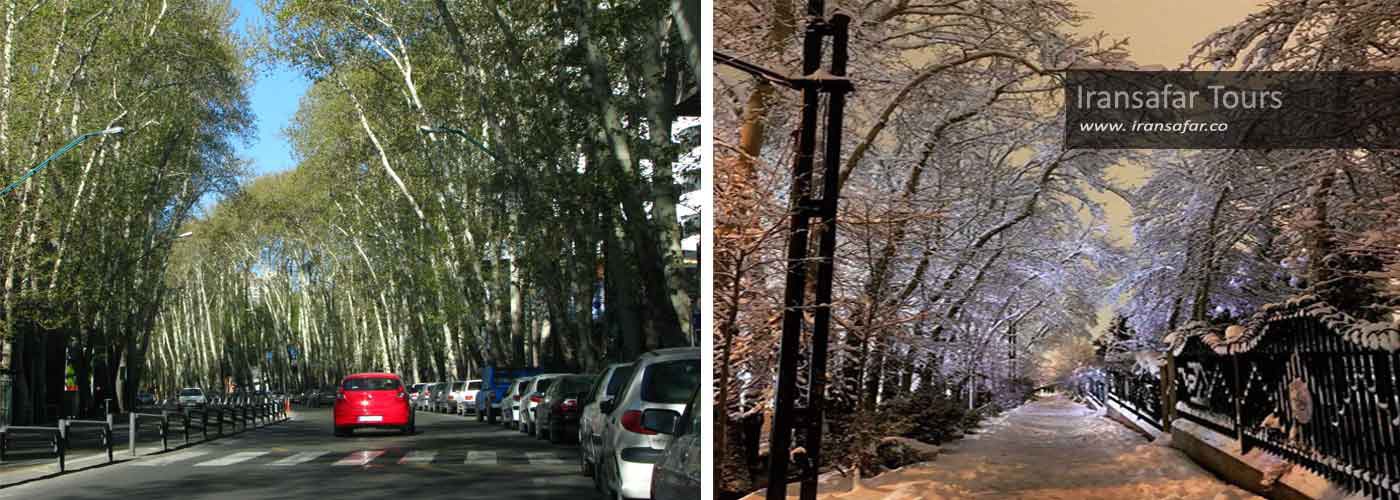
Enjoying the beauty of Valiasr Street is not limited to walking on Valiasr Street under its tall and old plane trees. There are some popular and important public parks on this street which are worth a visit. Mellat Park is the largest on Valiasr Street. This old park is one of the most important sights of Tehran at the intersection of Nayyeh and Valiasr highways. The park is decorated with urban elements and various sculptures; therefore it is perfect for photography, especially in the fall. Melat Cinema Complex is also located in this park.
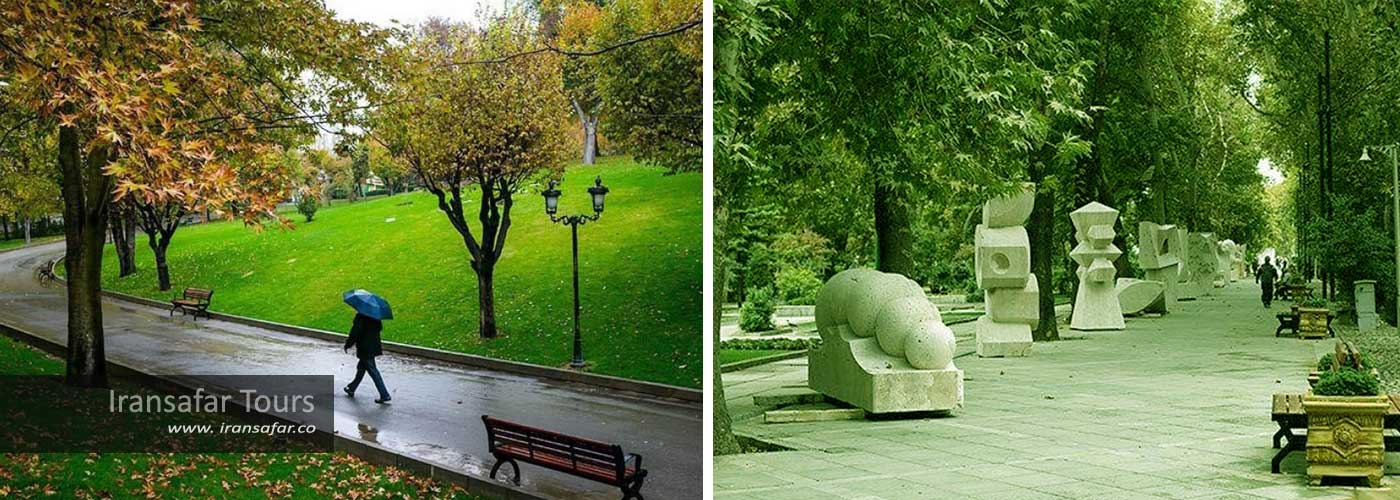
Cinema Museum of Iran (Ferdows Garden)
At Valiasr Ave and not far from Tajrish Square, there is an old and beautiful garden at the end of which is a historic mansion. Ferdows Garden is one of Tehran’s most famous gardens and today it has been transformed into a cinema museum with its mansion and one of the most spectacular places in Tehran. Don’t miss this autumn walk!
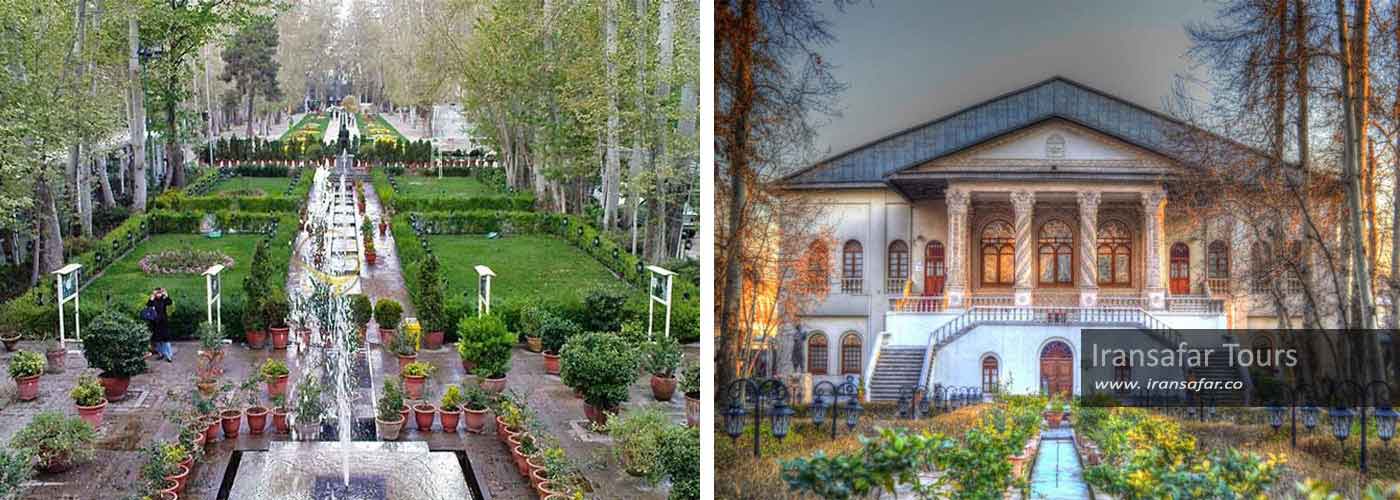
Tajrish Baazar
Tajrish Traditional Market , on one side to Tajrish Square, on the other side to shrine of Imamzadeh Saleh and the surrounding streets, has been one of North Tehran’s oldest shopping centers and still retains its old atmosphere. Although the construction of a modern market in new style alongside the completely traditional form of the market has influenced it, the old and famous market shops have not lost their identity. The old roofed Bazaar of Tajrish is a small example of Tehran Grand Bazaar.
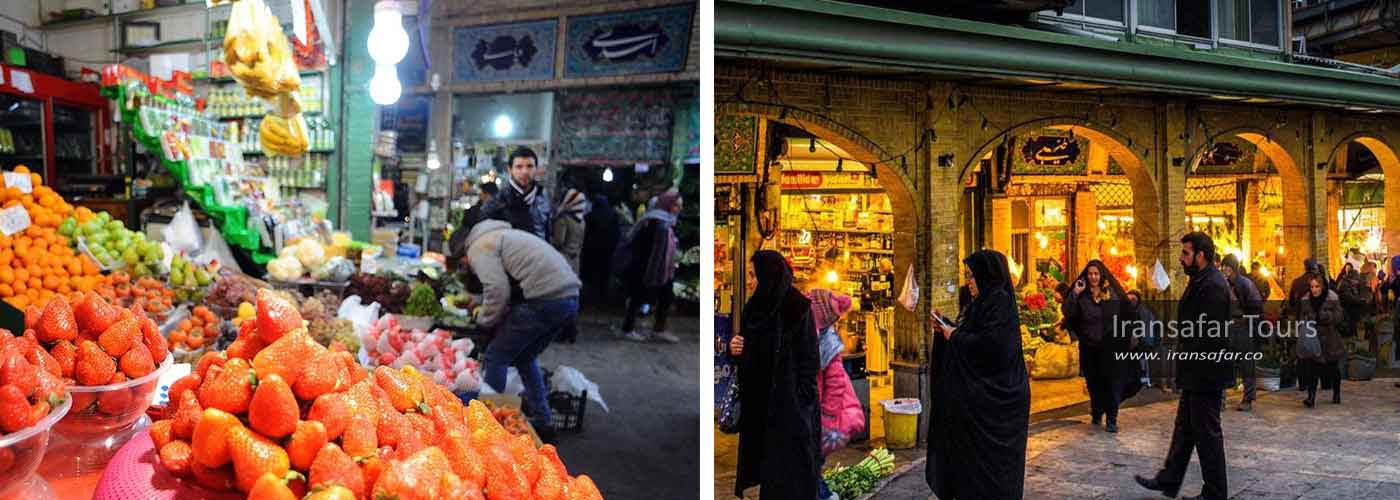
In the Tajrish market, which consists of small “Souks”, there is an indoor fruit and vegetable section, which is a very attractive and beautiful place. Of course, this square is originally the location of Tajrish “Mourning Square” which is used in occasion of Muharram Rituals and after tenth Muharram is leased to the fruit market. The Tajrish market, like other traditional markets, has a mosque and a Hussainiyah.
Tajrish Bazaar History
There is a lot of speculation about the history and construction date of this market. According to some sources, the date of construction goes back to 70 years ago. However, the market’s old businessmen believe that Tajrish Bazaar is much older and about 150 years old. Of course, some of the structures that exist in this place are about 200 years old such as Tajrish Tekyeh, which is said to have existed there for 220 years.
Tajrish Bazaar was quite open at the beginning of its formation. This caused trouble for shopkeepers and shoppers in the fall and winter seasons, so in 1973 the corridors got covered with wood and tin plates and replaced over time with a monolithic iron roof. A few years later, the market obtained its new magnificent appearance with the renovation performed by Cultural Heritage and Tourism Organization.
Tajrish Bazaar (Tehran) opening hours
Everyday from 09:00 AM to 08:00 PM
Read – Best Bazaars in Iran
Azadi Tower
Azadi square is one of the largest squares of Tehran where the Azadi Tower with forty-eight meters height is standing in the middle as the symbol of Tehran. The Azadi Tower (meaning freedom) formerly known as “Shahyad” was built as a symbol for the capital during the reign of Mohammad Reza Shah Pahlavi.
The Azadi Cultural Complex, consisting of several sections, is located on the lower floor of the Tower and includes a museum, library, audiovisual unit, exhibition hall, meeting hall, concert & conference hall.
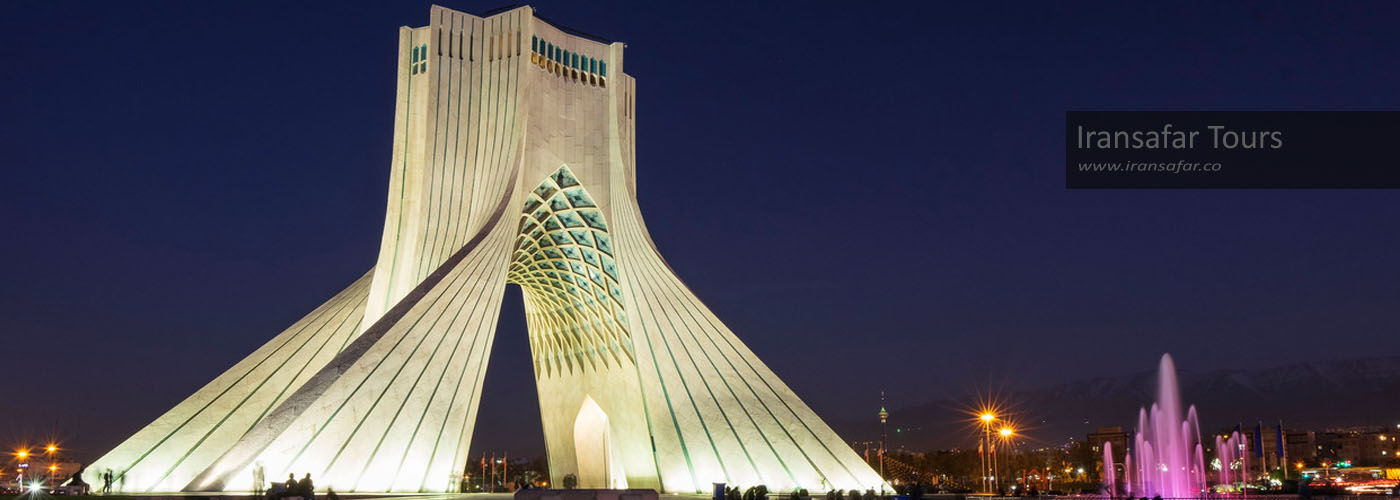
History of Azadi Tower
Azadi Tower was built in 1970 by Iranian architect Hussain Amanat , who is now a Canadian citizen. At that time, Amanat was a 26 year old student on a mission to design a square in the capital to mark “the symbol of modern Iran” and “the Gateway of the great civilization”
Earlier, In 1966, an architectural design that could symbolize Iran was put on the competition among Iranian architects, and eventually Mr. Amanat’s design was selected by the University of Tehran to be constructed. Operation of Azadi Tower started in November 1969, and ended in September 1970 and was inaugurated on January 5th, under the name of Shahyad Tower.
On the opening day, the Shah and his wife were present at Shahyad Square, and the Cyrus Cylinder, the world’s first human rights charter, was unveiled for the first time. This cuneiform tablet was inscribed about 2550 years ago by Cyrus and is now kept at the British Museum in London.
The total area of the square is about 78,000 square meters and the tower is built in shape of a gate which connects ancient Persia to Modern Iran.
“This is based on the past of Iranian history,” says Hussein Amanat, architect of Azadi Tower. “I wanted to show the ones coming from abroad or even the Iranian people that where and what culture this work belongs to.”
Read: Azadi Tower – Theran’s Iconic Landmark
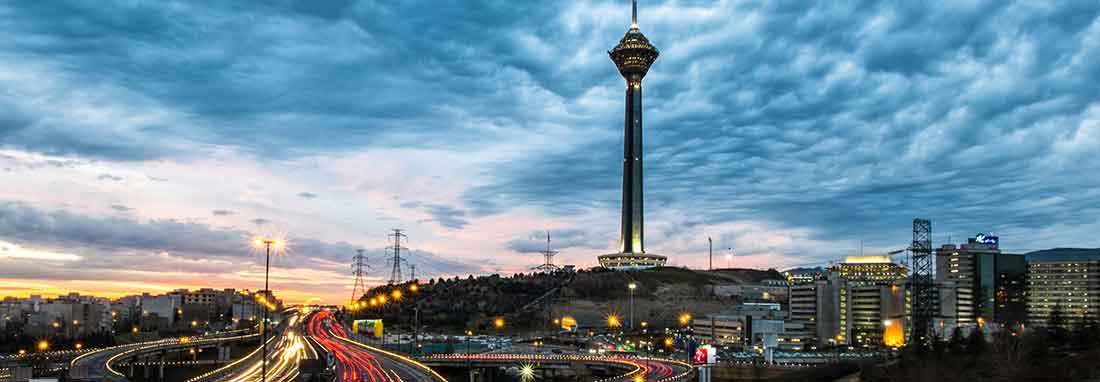
Milad Tower
Milad Tower is a multipurpose telecommunication tower located in northwest of Tehran, on top of a hill of approximately 14 hectares in the south of Shahrak-e Gharb district. With 435 meters height (315 meters high for concrete shaft and 120 meters high for tower antenna), Milad Tower is the tallest tower in Iran, and the sixth tallest telecommunication tower in the world. With 13,000 meters of built up area, Milad is the first of all world’s telecommunication towers in terms of grandeur of tower’s 12 storey top structure. Due to its great height and different appearance, this structure is visible almost everywhere in Tehran and is therefore one of the symbols of the Iranian capital.
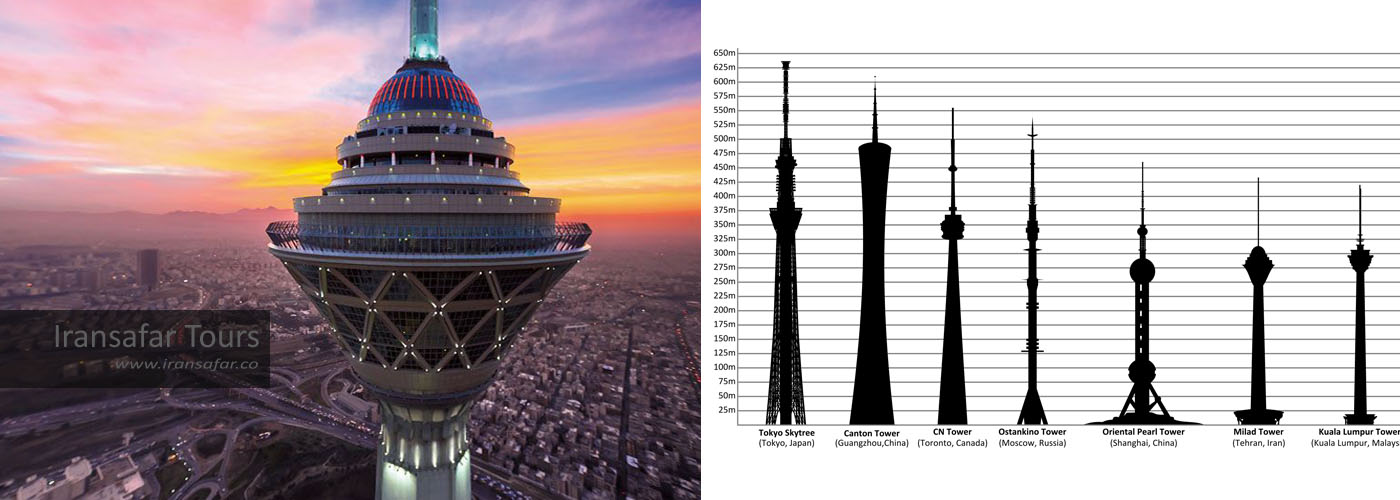
✔ What to do at Milad Tower?
According to the global statistics, Milad tower is the sixth-tallest of its kind and the 24th tallest freestanding structure in the world. Entrance tickets are cheap by international standards, and the elevator is rather exciting as you can see the view with the glass panels surrounding you.
Open Observation Deck
On the upper open observation deck, depending on how clean is the air, you can often see for miles around, making it a perfect spot for view photographers. The megacity of Tehran is breathtaking from the open observation deck.
The Waxwork Museum
Celebrity museum of Iran is located on the fifth floor of the Top building, at a height of 271 meters. This beautiful Madam Tussauds-like museum is a collection of statues of Iranian celebrities made by Dr. Alireza Khaghani. This museum is the first museum where the statues of Iran’s famous celebrities are exhibited.
Milad Tower Revolving Restaurant
This restaurant is the most fascinating part of the restaurant tour in Milad Tower. The restaurant is 276 meters high and has two moving and fixed sections. The revolving part rotates 360 degrees every hour. A variety of Iranian and international cuisine can be enjoyed at this unique Milad Tower buffet restaurant. Watching the sunset and eat with friends here will easily make one of your most memorable nights.
Milad Tower Dolphinarium
There is only one place in Tehran where you can see dolphins. The Milad Tower Dolphinarium is the only dolphinarium in the Middle East. With a total area of 3200 M2 Milad Dolphinarium has a capacity of 1200 spectators. Ocean simulation technology has provided life for dolphins and sea lions to delight you in performing beautiful acrobatic moves.
Iran Museum of Contemporary Art
Tehran’s Museum of Contemporary Art is one of Iran’s most famous art museums, which houses the largest treasures of modern art outside Europe and North America. The museum owns one of the five major collections of modern art in the world and consists of 9 galleries: 3 permanent Exhibitions containing more than 4,000 works by Iranian and world artists museum treasury, and 7 galleries dedicated to temporary and seasonal exhibitions. The Museum of Contemporary Art is one of the sights in Tehran that art lovers occasionally have to make their way to. Just remember this museum is not open on weekends and make sure it is open before leaving.
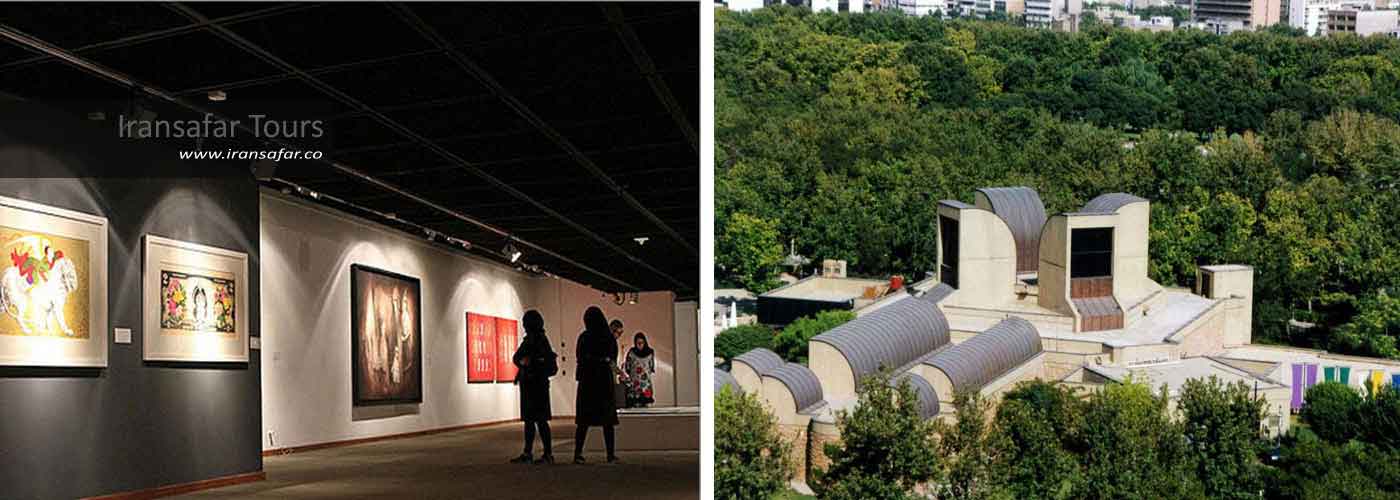
Tehran Grand Bazaar
Tehran Bazaar is one of the oldest, largest and at the same time, the most vibrant Tehran public places, always packed by locals and tourists. The primary construction of the market is from 17th century but the present structure is mostly dating back to 19th century – Qajar Era. The old parts of Tehran Grand Bazaar are constructed with ceilings in the form of vault and domes and enjoy a unique and sophisticated architecture. winding corridors, arches and traditional vents are the architectural beauties of Tehran Bazaar. But this beauty and complexity didn’t exist at the beginning of the market. Over time, the market expanded; for example, parts of it got roofed due to the summer heat. These developments also took place in service areas, with cafes, tea houses, Bastani sport Zurkhanehs , baths, mosques, etc. In each department, new corridors were created that were particularly for the sale of special goods, each of which was a big market itself. The Tehran Bazaar complex is still regarded as one of the most active economic hubs in Tehran. If you want a cheap and affordable purchase, do not forget about the Tehran market. Just remember the market is not open on holidays.
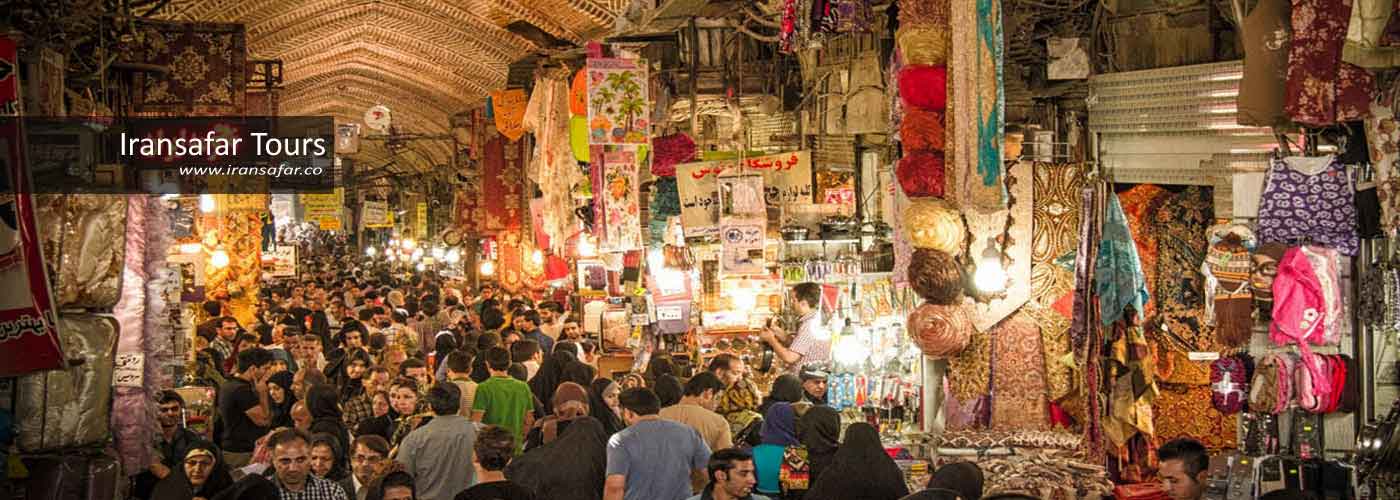
Golestan Palace: A UNESCO World Heritage Site, Golestan Palace is a stunning complex that showcases the rich history and architecture of Iran. It features beautiful gardens, royal buildings, and intricate tilework.
Grand Bazaar: Tehran’s Grand Bazaar is one of the largest and oldest covered markets in the world. Here, you can wander through a labyrinth of shops selling spices, textiles, carpets, handicrafts, and more. It’s a vibrant place to experience the local culture and indulge in some shopping.
Click on the map to enlarge
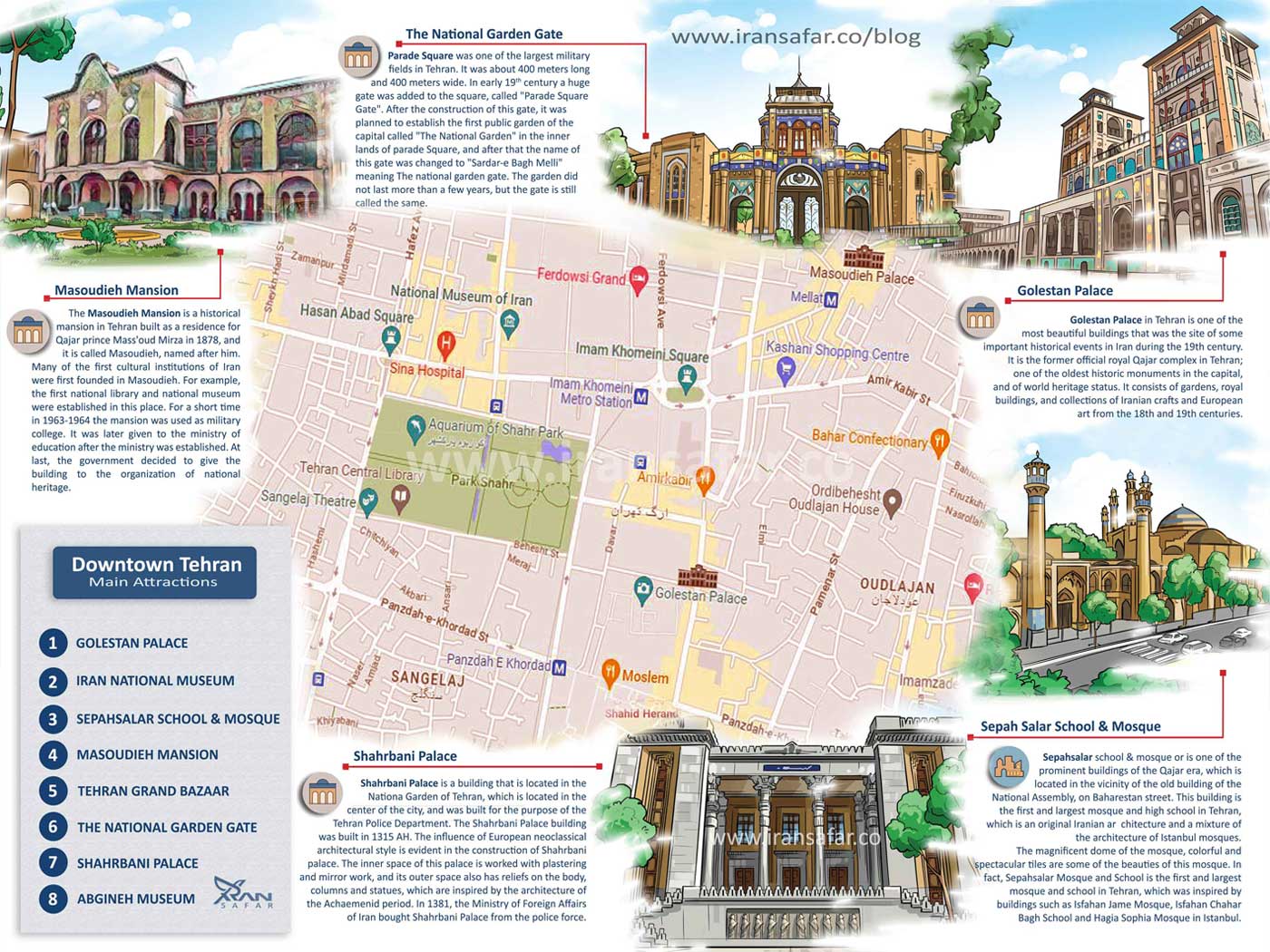
National Jewelry Museum of Iran
The current treasury of the National Iranian jewelry Museum or Iran Crown Jewels is one of the most fascinating places in the world! The museum displays royal jewels from the Safavid , Afshar , Qajar , and Pahlavi periods; famous jewelry such as the Diamond of “Darya-i-Nur” , the Nadir’s Jegheh , the Crown of Farah Pahlavi , “ Kiani Crown ” of Qajar kings. , “Jewel Globe”, “ Peacock Throne “, “ Naderi Throne ” and thousands of objects are waiting for you in this museum. These were collected during the Qajar period and were originally kept in the treasury of Golestan palace – part of it was mounted on crowns, thrones and other decorative objects of the palace. With the reign of Reza Shah Pahlavi, the royal jewels were moved to the basement of the Marble Palace in the year 1937, and after the National Bank building was completed, most of them were transferred to the National Bank Museum and today they are in the possession of the Central Bank of the Islamic Republic of Iran. This treasury makes up 70 percent of the country’s currency support. A new central bank treasury is under construction in the hills of Abbasabad, Tehran.
Read – Exclusive guide to Iran National Jewels museum
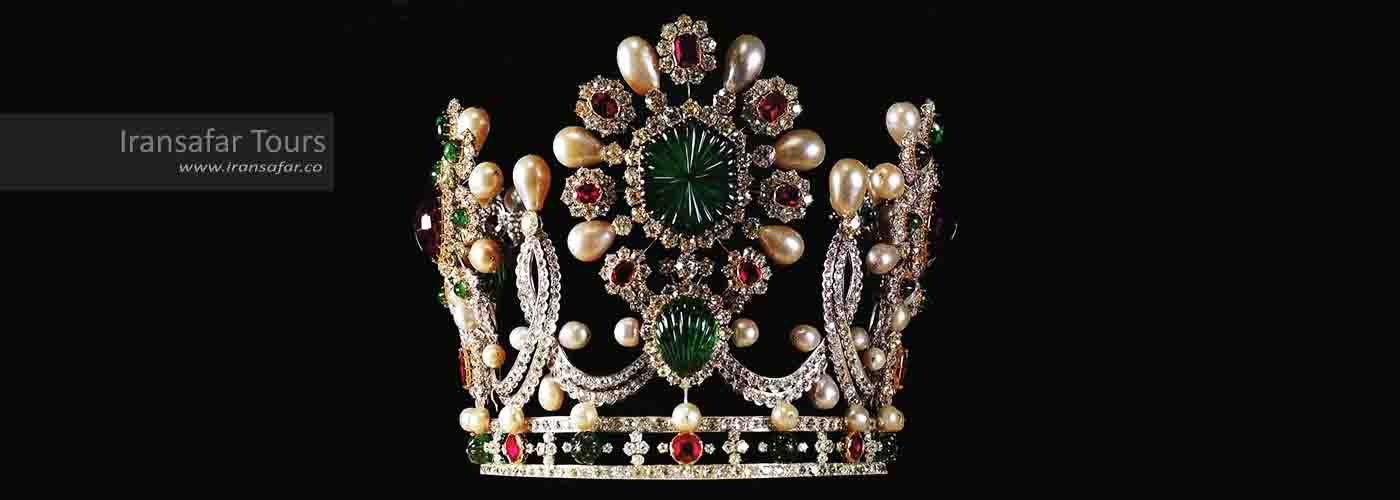
Iranian Crown Jewels Value
There is much to be said about this extraordinary collection, but one question cannot be answered definitively: How much is the value? No one knows the answer to this question, because it contains gems that have no equal in the world. Iran’s national jewelry collection is artistic, historical, and unique in a situation that even the world’s most elite experts and evaluators have not been able to calculate real or approximate value.
The old village of Darband in north Tehran is one of the most spectacular places in the city. Due to its cool summers, Darband is one of the most visited attractions in Tehran. The Darband River runs through this village which is the beginning of the climbing route to the Tochal Mountains overlooking the city of Tehran. For those who are not interested in hiking, a chair lift is intended. The beginning of the route is full of small cafes and restaurants. These restaurants have a great reputation and are usually always busy, especially at night. If you are looking for an opportunity to escape the bustle and pollution of Tehran and relax in the heart of nature on traditional benches in a restaurant, Darband is a good choice.
✔ How to get to Darband
The closest metro station to Darband is Tajrish Station. You have to get a taxi from the station to Darband.
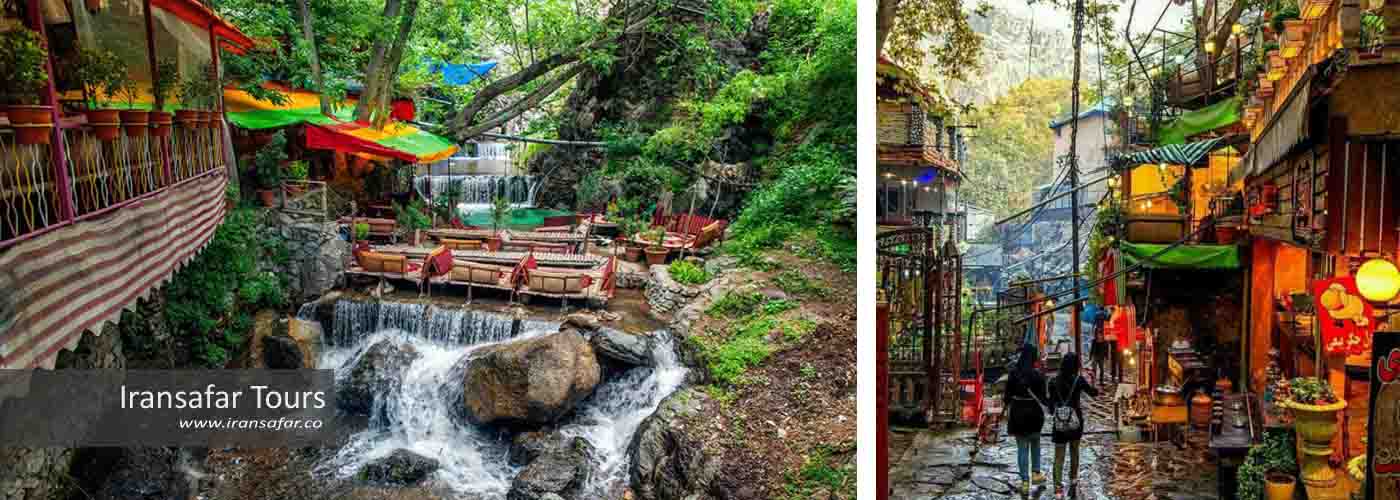
Tehran Fast Facts
- Tehran is the political and economic center and the capital of Iran
- Tehran is situated 112 km south of the Caspian Sea and on the foot of Alborz mountain range
- As of the latest statistics of 2016, the population of Tehran (Main Zone) is about 9 million
- The population in the larger metropolitan area of Tehran is about 15 million people
- It is the most populous city in Western Asia
- It is the 24th largest metropolitan area in the world and the 2nd largest metropolitan area in the Middle East (after Cairo)
- The city covers a total area of 730 Km2 – 27th largest city in the world.
- The average altitude is 1189 m above the sea level
Where to stay in Tehran
Tehran has many good hotels, but for many travelers, hotels located in the center of Tehran are more ideal, because they are close to most places of interest. Most of these hotels are also reasonably priced hotels in Tehran and offer guests facilities commensurate with their services. Here is a list of best hotels in Tehran
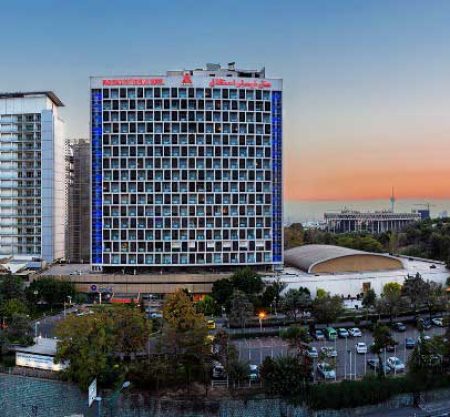
Parsian Esteghlal Hotel
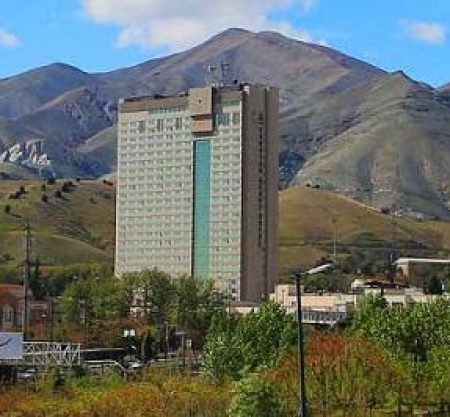
Parsian Azadi Hotel
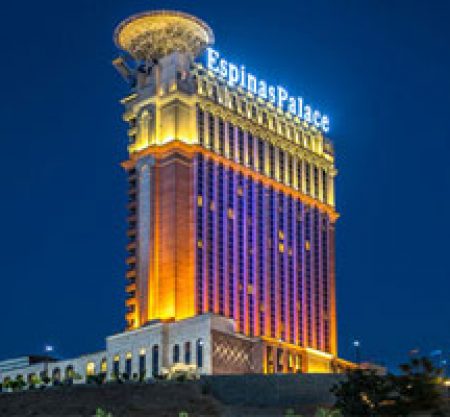
Espinas Palace Hotel
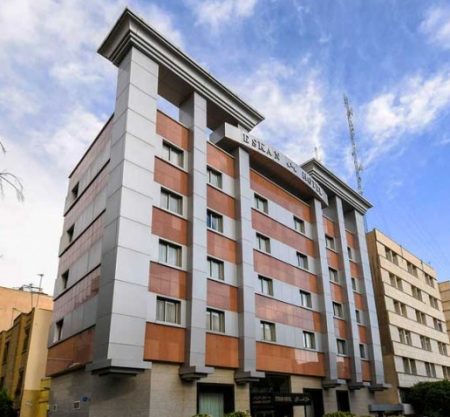
Eskan Forsat Hotel

Iransafar Tours
Comment (0), leave a comment cancel reply.
Your email address will not be published. Required fields are marked *
Select User Type
Enter the e-mail address associated with the account. We'll e-mail a link to reset your password.
- Iran Cultural Tours
- Iran Budget Tours
- Iran Luxury Tours
- Damavand Tours
- Iran Trekking Tours
- Iran Desert Tours
- Iran Festival Tours
- Iran Women Only Tours
- Tailor Made
- TripAdvisor

Tehran Travel Guide
Time to read: , last updated: , general facts .
Tehran, the city that never sleeps, is the energetic, electric capital of Iran. Sitting at the foot of the towering snow-capped Alborz Mountains, Tehran is the nation’s most dynamic and liberal city. It has a bustling population of 13 million and growing. Tehran is included nearly on all Iran travel itineraries and deserves about two or three days in your plans. There are a plethora of things to do in Tehran that you wouldn’t want to miss. And that is precisely why there are so many Tehran travel guides on the internet.
Many visitors have expressed that Tehran is similar to European capitals, young and lively. Just like other big capitals all around the world, Tehran is a mish-mash of everything; and it’s beautiful. People are diverse, different, and even weird at times. Young boys and girls hang out in popular spots of the city, like Tehran’s Bam (roof). Tehran is the epitome of modern and secular Iran.
Population in Tehran:
Here you can find the most diverse population in the whole country. Since Tehran is the administrative center, as well as the most prominent job market in Iran, a large number of people from all over the country have moved to Tehran. So, you can easily find various ethnic minorities of Iran: Turks, Kurds, Baluchis, Turkmen, Lurs, and Arabs. Young people from all over the country migrated to Tehran in search of jobs, so it has become very diverse. About 60 percent of the population are migrants. Crazy, huh?
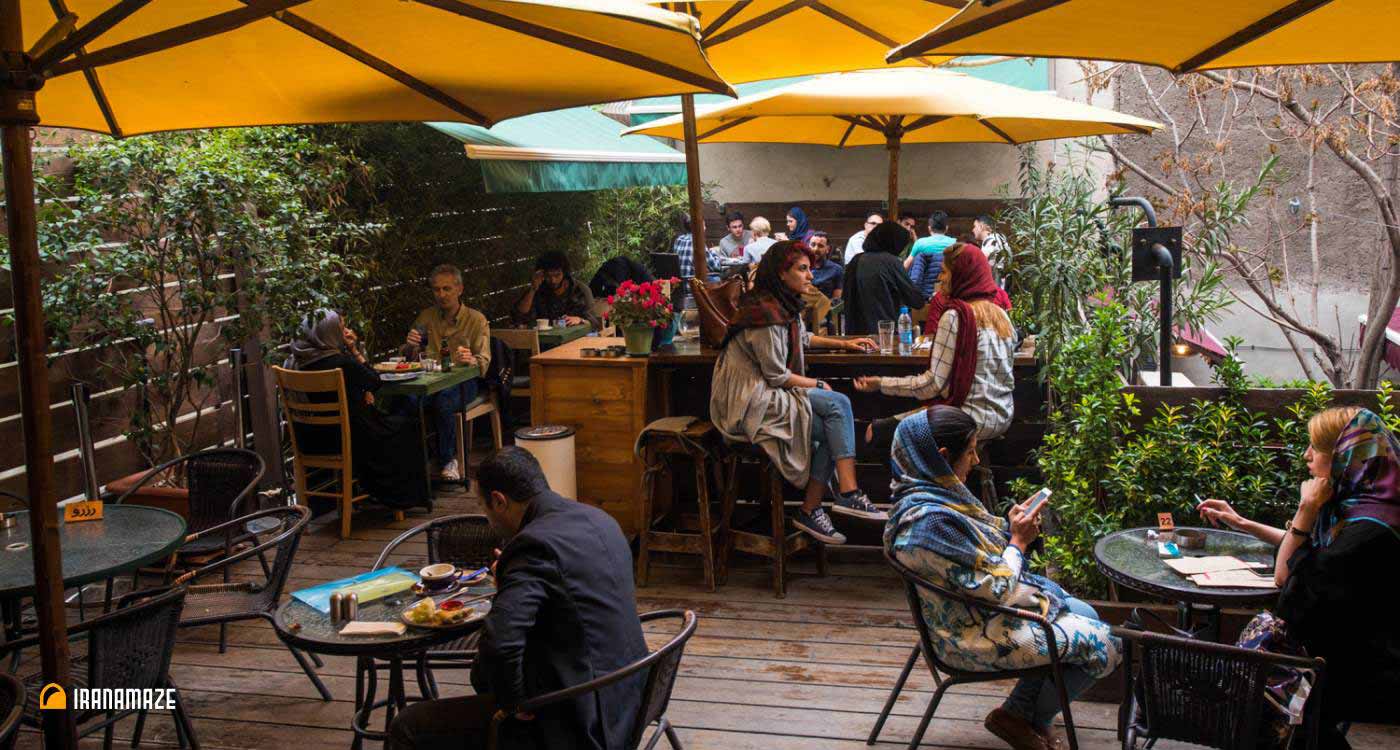
With 13 million people during the day and 8.5 million during the night, the capital embraces commuters and workers mostly from Karaj but also other parts of Iran as well. Tehran, like a god-mother, accepts everybody. Different types of people live harmoniously alongside each other: the religious and the secular, the young and the old, the conservative, and the hippie.
When I decided to go to Tehran in a business trip, I was not comfortable because of the negative publicity about that country. To my surprise, I had the most successful business trip ever. Moreover, I enjoyed my stay in Tehran to the most.
Tehran is a modern city…as it is the capital… so a lot of traffic jams same as New York, Dubai, Tokyo…but the road network is excellent…. a lot of remarkable buildings, parks, and tourist attractions. The beautiful nature of the city with the mountains topped with the snow make you think of getting skiing lessons…. five stars hotels and exquisite classy traditional, Indian and European restaurants.
– Nahla62, from Egypt, on TripAdvisor
Since Tehran is a large city and located at the foothills of the Alborz Mountains, the weather can be different in various parts of the city. There are about 600 meters of difference in altitude between the northern and southern neighborhoods, 30 km away from each other.
Similar to many other parts of Iran, Tehran has a generally dry climate. However, it does enjoy four distinct seasons throughout the year. Summer is its most extended season. Springs and autumns are fair and delightful, while during winter, it gets chilly, and at times, frosty.
What is crazy about Tehran’s weather is that, because it’s a vast city, there can be different weather at the same time in Tehran. You may be walking in Tehran’s roof (Bam), and it may be snowy. But take the BRT (the Bus Rapid Transit) and go 20 km south, you might see that it’s perfectly sunny out.
When to visit Tehran
Forget what your Tehran travel guide says! Best time to visit Tehran? Easy! Any time of the year you travel to Tehran, it has something to offer. However, climate-wise, summers a tad hot and winters a tad cold. Springs and autumns, on the other hand, are lovely here in Tehran.
History of Tehran:
If you had a time machine and went back 300 hundred years in Valiasr street, you will find a small agricultural village. No sign of skyscrapers, modern buildings, or high-tech companies. You may come across a few villagers tending to their lands and animals. Even in the early 19th century, the then-capital Tehran had no more than 80,000 habitants.
Tehran first became the capital of Iran in 1786. A Qajar king chose the then-humble Tehran as the city to hold his throne. It has been the political center of Iran ever since. Tehran, a big name today, follows even more prominent names in history, as the capital of Persia. Ecbatana, Persepolis, Susa, Isfahan, Tabriz, and Qazvin, to name a few. Now, Tehran resembles a young and hopeful persona, bearing the weight of a 2500-year-old civilization of Cyrus the Great, trying to be as grand as them.
Heart of the city: Valiasr Street
The leading Tehran attraction center (which can be considered not “the heart of the city,” but rather its vein) is Valiasr St. It covers 18 KMs of Tehran and is the longest street in the Middle East. If you wanted to explore the whole street, you must start at the railway station in the south of Tehran and finish at Tajrish square in the north. Merits of this street are usually missed on most Tehran travel guides. But don’t forget to put Valiasr in your Tehran day plans.
In a way, Valiasr embodies Tehran. Railway station at the beginning of Valiasr filled with passengers and visitors from all over Iran starts this street. You must then continue to Imam Khomeini street, which is close to Tehran’s famous bazaar. Here, you can see the traditional side of this modern capital. Golestan Palace and the different unique places to visit in Tehran bazaar show authentic traditionality amid all these modernities of Tehran. Heading north, you will come across Enghelab street in downtown. Now, here we find the young soul of Tehran. Since Enghelab and the neighboring streets are filled with universities (such as the prestigious University of Tehran), many young students from all over the country live and spend their time here. Art, engineering, literature, architecture, management, physics, philosophy (and many more) students take out to the streets in the evenings after their classes. They find each other in cafes, cinemas, and bookstores to spend time together. Enghelab truly is the young soul of Tehran.
However, when you go further north, you reach Vanak Square. Here is the center for offices and companies. Tehran’s more business and administrative side shows up. At the northern end of Valiasr, we reach Tajrish Square. Crowds of people are in Tajrish almost any time of the day and even night. They’re busy shopping, eating, and sitting at cafes, hanging out. The neighborhood for more affluent parts of Tehran, Tajrish, also has a traditional bazaar as well as a religious shrine.
Valiasr, beautifully, covers most aspects of the Tehrani lifestyle and the different economic and social classes. The whole 18 kilometers of Valiasr is the best Tehran travel guide you can find.
I have just returned from Tehran and cannot wait to go back in March next year. Iran is a very beautiful country the people are lovely and the food is to die for. In Tehran you have so much to do there’s beautiful Damavand mountain which has restaurants that are very cheap to eat from as Iran is very family orientated you will find many families eating and walking in the mountains Tehran has the most amazing parks were again families will go in the evening and have picnics. Tehran is also very good for shopping and you must go to the bazar in down town Tehran
– June64, from the UK, on TripAdvisor
When you walk in Tehran’s street, you might be surprised at the abundance of different types of companies and businesses. And it is true. Tehran is the economic center of Iran. It is, by far, the most significant and largest job market in the country. All sorts of businesses have thrived in this colossal capital: high-tech start-ups, traditional bazaars, international companies, freelancers, and many more. Most of the successful Iranian start-ups have come out of Tehran’s business atmosphere.
If you live in Tehran, as a foreigner, you probably will be confused at the end of your first year, for example. Tehran’s culture cannot be defined so easily. Your Tehran travel guide might miss out on many essential things. And this is because of Tehran’s diversity.
Tehran is Iran’s most secular and liberal city, with a booming young population whose lifestyles might remind you of the lifestyles of the citizens of a European city. Tehran might be a unique city throughout Iran, in this sense. Hijab is taken less seriously than the rest of the country, and few percents of the population wear Chador, Iran’s most traditional and religion piece of clothing for women.
Real-Life Fact
The hijab law is compulsory in all over Iran. That’s a fact. All women, Muslim or not, are required to wear loose-fitting clothes and headscarves in public. Ok, but is that all? Nope. Some cities are more religious than others. For example, you might see more women wearing the chador in places like Yazd or Kashan. But in Tehran, things are a bit more liberal. As a female, you have more freedom in choosing what to wear, how to wear it, and how short/tight/etc. is should be.
Its people are known for:
Tehranis love to enjoy their lives. Streets of Tehran on the weekends are quiet since the majority of the people either stay at home for a private party or hit the Chalous road to go to the north. Locally called “shomal,” the northern parts of Iran are Tehrani’s gateway to a pleasurable weekend. Tehranis also know how to have a good time inside the city as well. During off days, families, young couples or groups of friends head to the capital’s parks like Mellat, Chitgar, or Saee to have a picnic and enjoy each other’s company. In general, the vigorous young population of Tehran is super friendly, open-minded, and want to have a good time.
What you might not find in your typical Tehran travel guides is that Tehranis are also known for being more politically active than the rest of the country. With so many political groups as well as vibrant student communities, Tehran is usually at the frontline political events in the country.
Art and architecture:
Let’s put aside the plethora of ancient archeological sites all over Iran, as well as Tehran, for a moment. And now, let’s talk about the modern and contemporary art scene in Iran. Although Iran is typically known as the center of traditional Persian art, the country has become a contender in the international contemporary art scene. Art galleries and museums pop up all over the city and attract many interested locals. Tehran Museum of Contemporary Art in Iran’s most extensive gallery and is home to some big names in art. Picasso, Van Gogh, Monet, Pollock, and many more artists have some work displayed in the museum.
The heart of modern art in Iran, Tehran, is a great place to explore art and architecture. Whether it’s Qajar and Pahlavi palaces (like Golestan or Sa’ad Abad) or the weekend art galleries spread all over the city, or grand Tehran Symphony Orchestra, the Iranian capital has a lot to offer to those who seek to see Persian art and architecture.
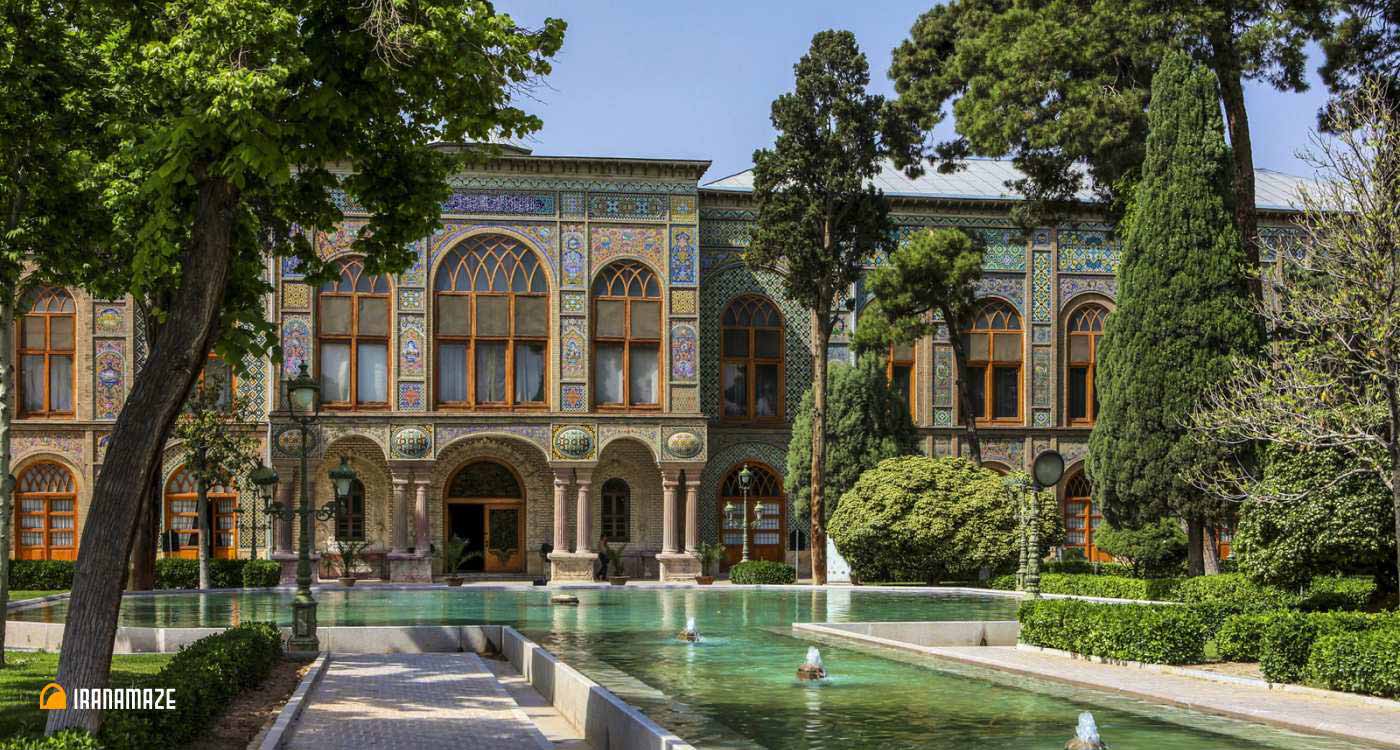
What is interesting about Tehran is the fact that if you’re an aspiring artist and want to make a name for yourself, you do have the chance! You can go on and open your own art gallery show! With the most prominent artist community in the country, Tehran offers a lot of opportunities young and aspiring artists

Atmosphere:
When you enter the city from the west Terminal – that’s where the immigrants came in – the first thing that catches your eye is the epic Azadi tower. White with marble, Azadi shows off an austere atmosphere, standing not too high and neither too low, with real dignity. It emits an aura of welcomeness to all. And it is true. Tehran is a city that accepts everybody. And we mean everybody. And that is precisely why Tehran’s atmosphere is not so simple to define; It really is a gigantic city. There is a myriad of things to do in Tehran.
What differs Tehran from the rest of the country is the ever-growing sense of individualism in the capital. All sorts of people live in Tehran, harmoniously alongside each other. Hippies drink café at Tajrish square, Islamists say their Friday prayers in the University of Tehran while, maybe a hundred meters away on a bench, a philosophy student reads Nietzsche’s famous statement: “God is Dead.”
Because of Tehran’s extreme diversity, there are many different groups alive and active in the capital. The art scene is big: theater, film, painting, music, and many more activities for anyone interested. There is also an intellectual community with a strong voice on popular culture and the political frontlines in Tehran. As well as many other groups such as the religious, the students, and last but not least, the average man who is working his 9- 5 job to provide for his family, and loves growing old in Tehran.
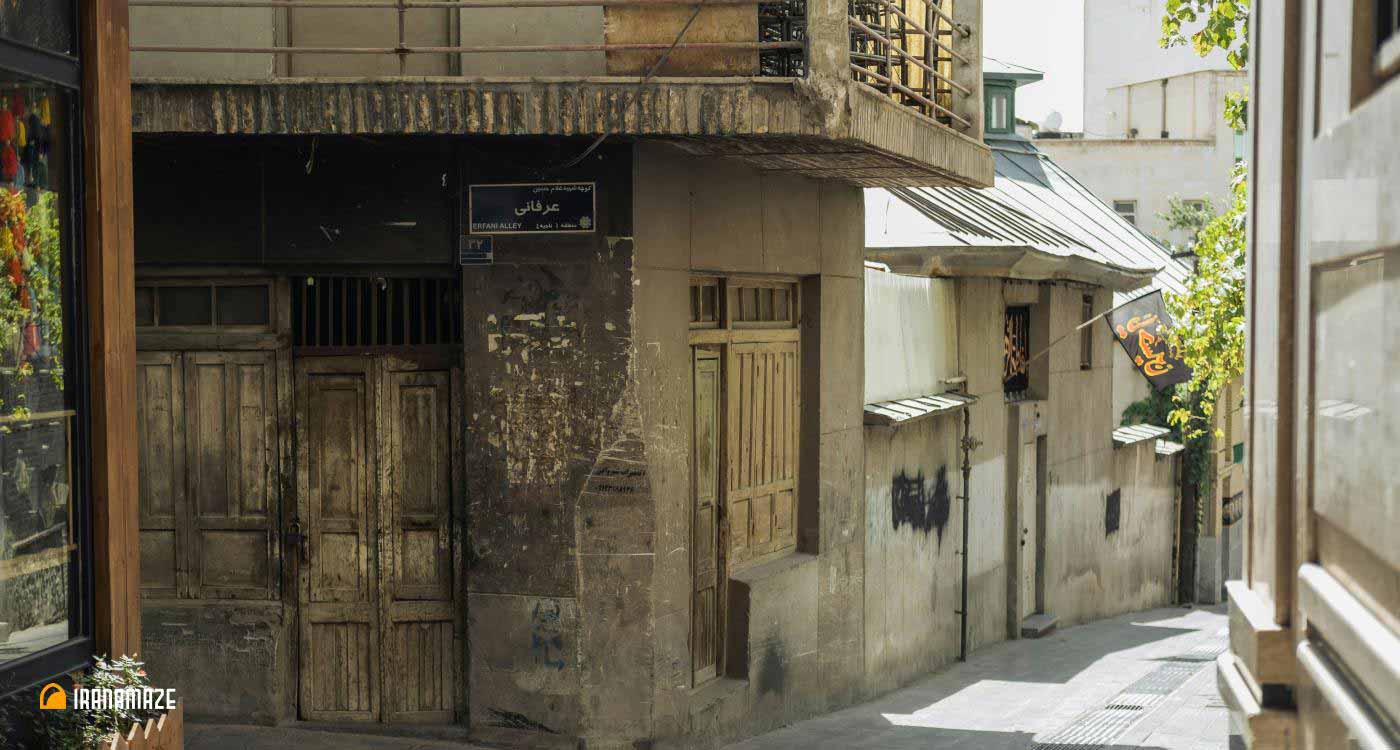
Tehrani Foods:
Tehran is home to some of the best restaurants in Iran , local and international. Whether it’s the traditional Kebab or a dish at a Lebanese restaurant, Tehran will cater to all needs. You can live in Tehran for one week, and not eat one same dish twice during that time. The diversity is absurd. The immigrants’ cuisine and the culture they bring to Tehran adds to this as well. People go out during the weekends to eat out at different restaurants in Tehran. Even though there’s no McDonalds in Iran, but still some of the best fast-food chains in the Middle East are in Tehran.
Hospitality:
Walking down a street, Tehranis will probably approach you to strike a conversation, have a cup of coffee, and even invite you to their homes for lunch or dinner. This is Iranian culture at its finest. And the good thing is that young people know English pretty well and are interested in European and western culture. Feel free to enjoy Iranian hospitality while in Tehran.
Festivals of Tehran:
Generally, holidays and celebrations tend to center around the Islamic and the Persian calendar. ChaharShanbe Suri , Yalda , Nowruz , Ashura, to name a few. And they are all respectfully held in Tehran. But what Tehran offers that the other cities of Iran can’t, is its various international festivals. From Tehran International Puppet Theater held every two years, or the International Fajr Film festival, to the Theater and Music festivals, Tehran has an abundance of fairs.
Every year, at specific times, there are national and local fairs held in Tehran as well. Different ethnicities from various parts of the country come to Tehran to showcase their culture, their handicrafts, and their art. These kind of fairs are so big – because Iran is so big – that to fully explore them, you must set aside a whole day in your Tehran day plans.
Do you want snow-capped mountains? Head to the north and to explore Alborz and Tochal mountain ranges! Wondering what some things to do in Tehran are? Want safari and desert exploration? Head south, and you will reach Kavir National Park to see the best of deserts in the world. Do you wish to trail on lush green hills of Iran? No problem, take the famous Chalous road to reach Shomal and travel in the Hyrcanian forests. Care for a climb on the highest volcano in Asia? Damavand mountain is only a two-hour drive. Tehran, indeed, is the city for everybody. You just have to decide for yourself: what to see in Tehran.
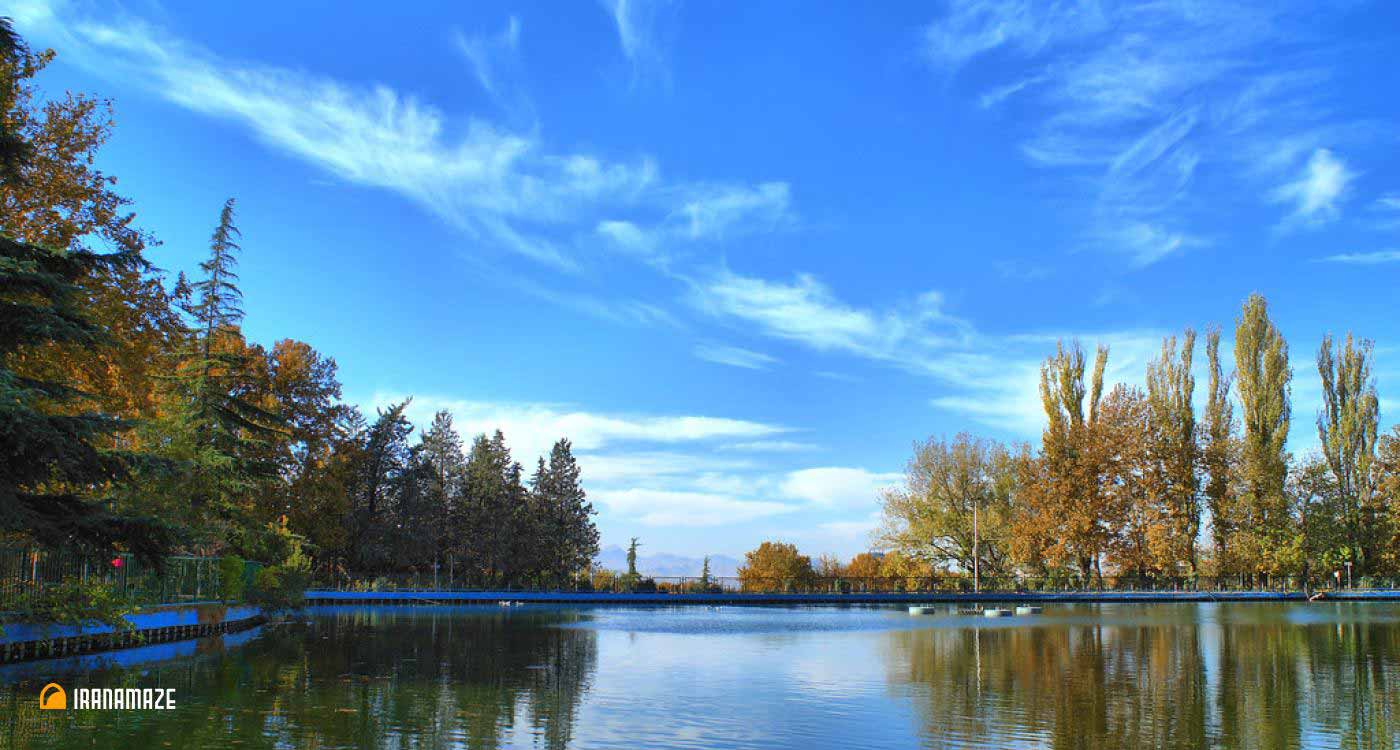
In Tehran and bored? Impossible! Get out there, and there are a millions of things to do in Tehran, waiting for you! Whatever your wish may be, in Tehran, it can come true! Want to have an exciting dinner with your loved one at an exotic place? Try Milad Tower’s rotating restaurant at 400-meters-and-some height, overlooking all of the capital. Want to get a touch of Iranian art firsthand? Visit Honarmandan (Artists) park in central Tehran to explore modern art galleries as well as meeting the artists’ community, which is one of Tehran’s Attractions. Or you don’t want to have these so-called exciting activities, but you rather enjoy a peaceful and serene afternoon? Well, then head to Mellat Park and experience its green and calm atmosphere while mulling over your life and past decisions.
You may have already read this in your Iran or Tehran travel guides: that unlike western culture, nightlife in Iran is not intertwined with alcohol. But that doesn’t mean Iranians can’t have fun. Compared to other cities in Iran, Tehran has more vigorous nightlife . There are shopping malls like Palladium in the north of the town as well as urban parks such as Mellat, where you can spend your night with your loved one or the lovely locals. Tehran’s roof (called Baam in Farsi) at the foot of the Tochal Mount offers a great view of Tehran. Many young people head to Baam in the evenings to enjoy eating out with a fantastic view of the glittering Tehran.
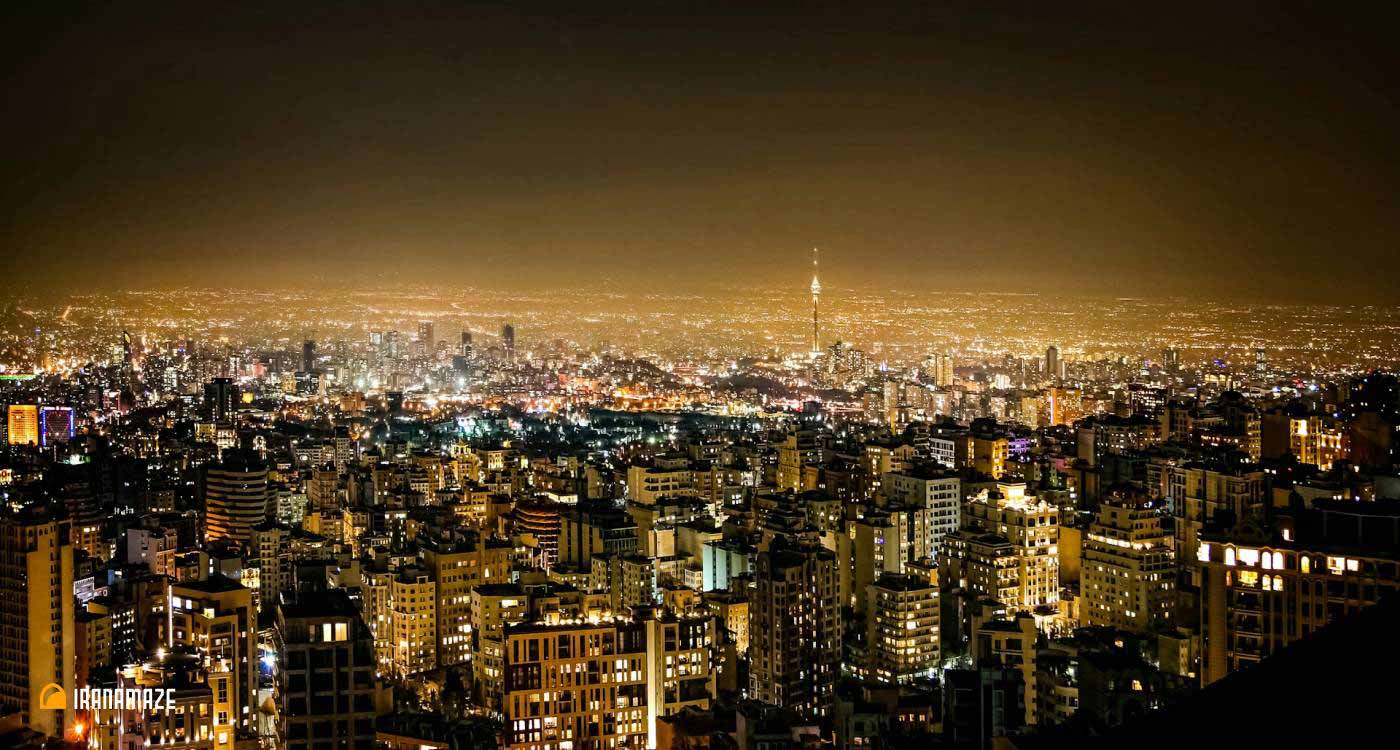
Tehran is a city for beautiful cafes. Spread all over the capital, small and quaint cafes provide shelter for the young, the in-love, and the different. Cafes are one of Tehran’s attractions. Students linger on cafes in Enghelab square, where they can spend hours together.
Usually, Tehrani is going out until late in the evening. You may run into traffic even at 10 o’clock at night since there are so many people out. You can enjoy the myriad of things to do in Tehran during the night. Cinemas are open, restaurants offer a variety of delicious foods, and big shopping malls provide so many opportunities to hang out with your loved ones.
These are not enough for you? Want to see more of Tehran attractions later at midnight? Well, then head Paknezhad street, in the north-western part of Tehran. Caravans of street food and street cafes stand at the side of the street, serving to the sleepless and the night owl of Tehran. Even if you’re a morning person, this can be one of your Tehran sightseeing plans!
Main areas for eating, shopping, hanging out:
Of course, there are so many places to eat out, shop, and hang out in gigantic Tehran. Palladium, Mega Mall, Saee Park at Valiasr street to name just a few of Tehran attractions. Care for a traditional lunch? Head to the bazaar in central Tehran and enjoy a Persian dish. Want to enjoy the ever-famous Kebab? Just visit Sattarkhan street and choose from the myriad of options. Want to have coffee with pastry? Head to Enghelab to have a plethora of cafés, available to you.
But at the end of the day, the best option is to ask the locals for each region. They always know better than your Tehran travel guide!
How to find a partner in Tehran? Well, there are many ways: some more creative than others. In the evenings, when the sun is going down, some young people get into their cars and start driving around, in some specific streets like Andarzgoo and Iranzamin, to find someone they like, in another car. So, for example, a group of three men finds another group of three girls in another car. Now, all the love story begins. In Farsi, this activity is called dowr-dowr; literally, it means turn-turn. So, they turn and turn and turn in the streets of Tehran, hoping to find another suitable car. Maybe, this is what causes traffic in Tehran! Who knows!
Transportation
How to reach Tehran? Here’s the center of all forms of transportation in Iran.
Tehran’s two major airports, Imam Khomeini (IKA) and Mehrabad, are responsible for international and domestic flights, respectively. Tehran connects to the world through IKA. Abu Dhabi, Athens, Zurich, Frankfurt, Vienna, Kyiv, Kuala Lumpur, and Rome are just some of the cities to which Tehran is connected. Passengers also fly to Istanbul, on a daily basis. Mehrabad airport also unites Tehran with the rest of the homeland. Nearly all major cities throughout the country enjoy daily flights from and to Tehran.
Heart of Iran’s extended railway system is Tehran’s Rah Ahan Station in the south of the capital. It connects Tehran to Tabriz in the northwest, Khuzestan in the southwest, Bandar Abbas in the south, Zahedan in the southeast, and Mashhad in the northwest. Practically all Iran, right?
Tehran, the heart of Iran, welcomes everyone from all sides of Iran. The South and the West Terminals are two of the major ones, granting access to all. The North and the East terminals are also available for those who are heading that way. Now, the more down-to-earth way to get around in Iran, and to reach Tehran, is using its extensive bus system. Nearly all cities in Iran, whether major or not, connect to Tehran via some route.
How to get around in Tehran:
Senior Tehrani citizens have become comfortable with Tehran’s extensive transportation system. Tehran’s efficient and comprehensive metro system, its Bus Rapid Transit (BRT), local buses, shared taxis, and online taxi apps like Snapp, Tap30, and Maxim are just some of the way Tehranis get around in the city. Uber or Lyft may not work in Tehran, but don’t worry. Local taxi start-ups have got you covered.
However, Tehran’s streets and highway are usually congested. Tehranis sometimes stay in traffic for up to one hour. But wait! There’s a solution for the more adventurous! Motorbikes are kings during congestion. Need to get to the city center but don’t want to wait out the traffic? No problem! Get yourself a bike ride, and you’ll fly in Tehran – heading north to south!
You can also rent a bicycle from an amazing bike-renting start-up called Bdood (meaning “without smoke” in Farsi) in all over the capital.
One of Tehran’s most iconic traffic congestions happens on Hemmat highway, on the evening of every weekday. Hemmat is the major highway that connects Tehran to Karaj, a neighboring commuter city, located west of the capital. Now, each evening, when Karaj residents want to go back to their homes, they have to take the Hemmat highway. And that’s when crazy traffic creates. However, consider taking the high from west to east (from Karaj to Tehran); it’s nearly empty since few people take leave from Karaj to Tehran in the evenings.
Top places to visit in Tehran
1- palaces (golestan, sa’ad abad, and niavaran complexes).
Being the capital for monarchies before the revolution, names Qajar and Pahlavi, Tehran has a myriad of worth-the-visit palaces. Whether it’s is the UNESCO-registered Golestan Palace where Reza Shah, self-coroneted himself in a Napoleonian style or the fairer and greener mansions like Saad Abad and Niavaran Complexes, these Tehran attractions will take you back in history. And live the lives of Tehranis before the Islamic revolution.
2- Parks (Mellat, Ab o Atash, Chitgar, Saee)
Imagine you’re a Tehrani young person, and you’ve recently met a lovely potential partner. You want to take them on a date, right? Tehran’s parks, like Mellat, Ab o Atash (literally meaning Water and Fire), and Saee, offer some of the best places for dating couples. Green scenery, beautiful flower work, and the pleasant romantic atmosphere of these parks add to the romanticism of Tehran’s afternoons. Put parks in your Tehran day plans and Tehran sightseeing, and you won’t regret it!
The architect and design is absolutely amazing. You see the beautiful Tehran. I was there around 6 pm, so saw the daylight and nigh time few, and it was spectacular.
– Sasamph, from California, on TripAdvisor
3- Shopping malls (Palladium, Iran mall, Mega Mall)
Huge and modern shopping malls abound in the northern part of Tehran. These Tehran attractions, like Palladium in Velenjak, Iran Mall and Mega Mall provide suitable places to visit in Tehran for the upper-class to buy their favorite western brand or enjoy an exotic foreign meal with their families in their food court.
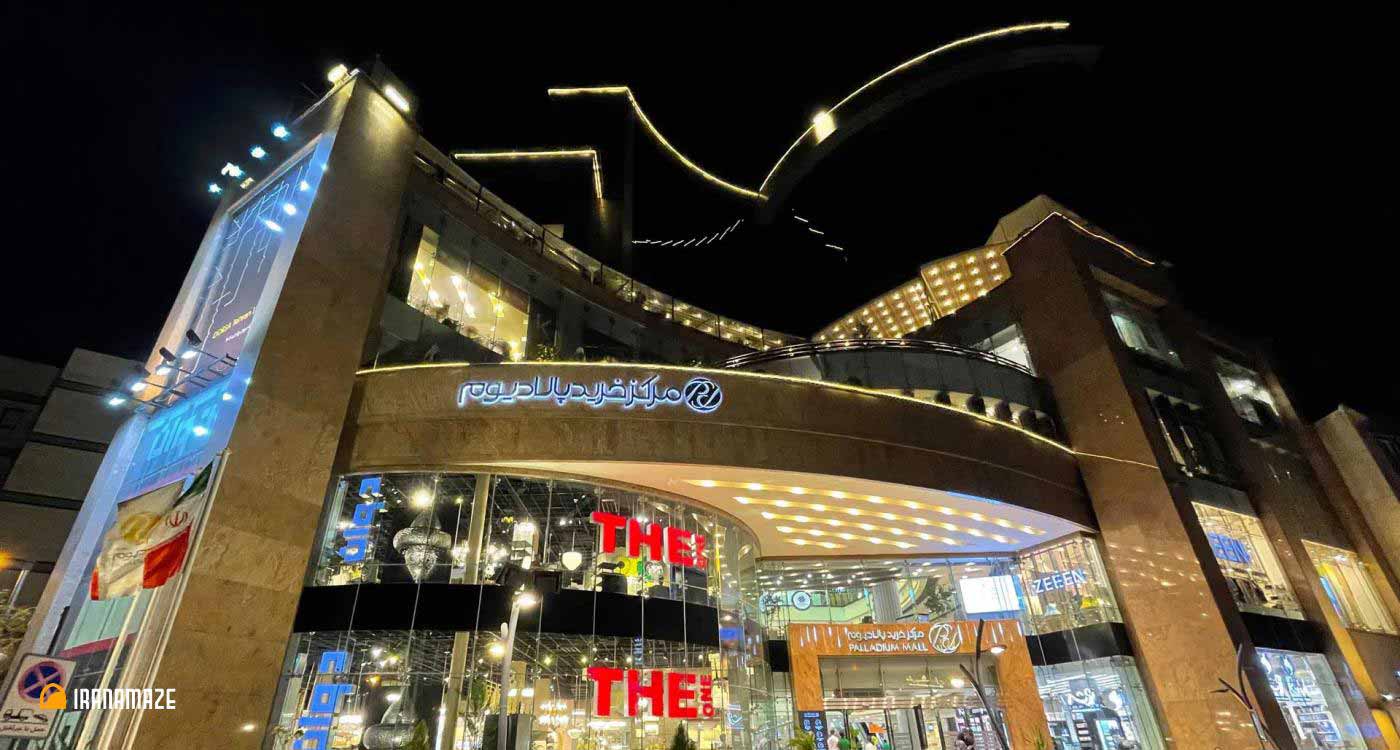
4- Towers (Milad and Azadi towers)
Confused about what to see in Tehran? Imagine standing on Milad Tower, west of the capital, 435 meters high in the sky, in an evening. One will think of how enormous and never-ending Tehran is. Lights flickering from all sides humbly remind you of How Iran’s heartbeat looks like. But hey, let’s get down from that gigantic tower and go to the more down-to-earth Azadi tower. Now, the symbol of Tehran stands dignified and forgiving, close to the west bus terminal. It is so inspiring to watch.

5- Bazaar (Tajrish and main bazaar)
Bazaars are Tehran’s inner cities. Believe it or not, Tehran’s grand bazaar is 10 km long. With so many corridors and a couple of entrances, the southern bazaar in the more traditional parts of Tehran is a city within a city. Walking in the bazaar is a beautiful experience: the ceiling beautifully lets in a ray of sun, barely touching your skin, while the smell of spices from all parts of the world, take you to foreign lands. Tajrish bazaar, however, is a bit different from your typical bazaar all around Iran. Bazaars are usually the heart of a traditional part of town, while Tajrish bazaar is located in the north of the city, where the more affluent families of Tehran live. Usually part of Tehran sightseeing plans, Tajrish Bazaar is a great place to spend an evening while also visiting the neighboring holy shrine, when the devoted come to pray.
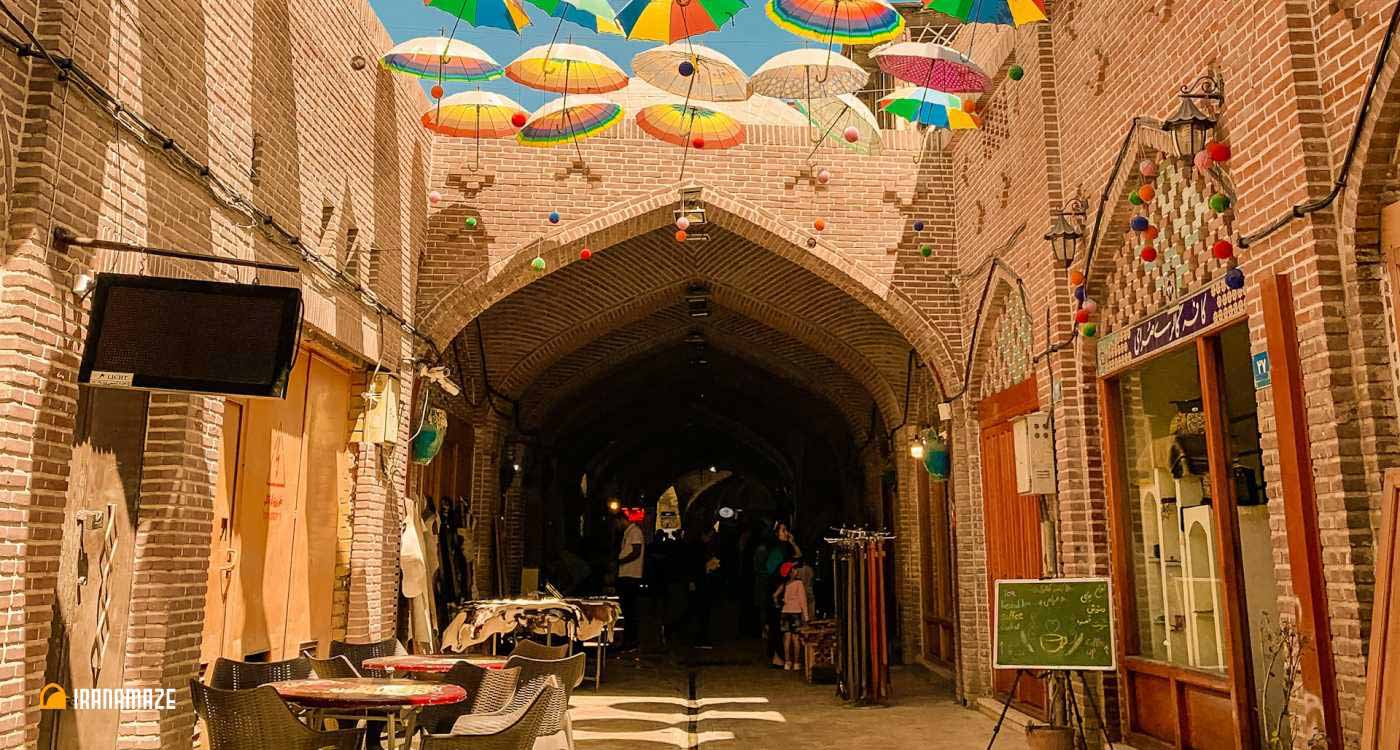
6- Museums (National, Jewelry, and Contemporary Art Museums)
What Tehran doesn’t lack is museums. Here’s the capital of Persia, bearing the weight of world-conquering dynasties. The pre-Islamic part of Iran’s National Museum, located in 30 Tir street, showcases some of Iran’s most identifiable artifacts. In the same street, you can find a myriad of other museums as well.
But one of the best museums in Tehran is its Jewelry museum, located within the Central Bank of Iran in Ferdowsi Street. Open only in limited hours because of security issues; Jewelry museum houses Qajar and Pahlavi precious gems.
However, if watching valuable metals doesn’t interest you, and you want to see more ‘real’ art, then don’t worry, Tehran has got you covered! There are a plethora of artistic things to do in Tehran! Head to Park Laleh, and visit Tehran’s museums of Contemporary Art. Gorgeous both from outside and inside, TMoCA is a lovely modern change in the more traditional Iran. Brought in by Queen Farah Diba before the revolution, a collection of precious artworks from contemporary artists such as Picasso, Monet, and Pollock are in its basement.

7- Mountains (Damavand and Tochal)
Towering mountains surround Tehran. Many travelers from all over the world visit Tehran to climb the highest, potentially active volcano in Asia and the highest peak in the Middle East, Damavand. It is only 30 kilometers away from Tehran, and on a clear day, it is even visible from the Azadi tower. But the more accessible mountain range, that doesn’t need a ride out of town is the Tochal mountains, north of the capital. Towering at 4000 meters and more, Tochal mount stands over Tehran, majestic and grand, inviting climbers and nature-lovers alike. You can never run out of things to do in Tehran.
Good To Know

Iran Tourist Visa Application + Fees
We gathered the latest update for getting Iran E-visa. It includes necessary information about Iran visa application form online for getting a visa in advance.

Iran Currency: Everything You Need to Know About Persian Rials
One of the most important questions tourists ask when they decide to travel to Iran.

Top 10 Iranian Customs and Etiquette Rules You Need to Know
Are you a responsible traveler who would like to respect community values on your trips? We’ll give you all the information you’ll need about Iran etiquettes and customs.

How Many Days To Spend In Iran For The First Time Visitors?
How many days should I stay? When is the best time to visit Iran? What are the must-visit attractions in Iran? These are the questions that come to the tourists’ minds before traveling Iran for the first time.
Tour Packages You May Like
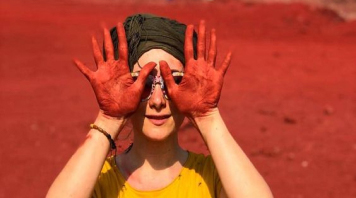
- Booked 43 Times
21-Day Cultural Tour of Iran
Touch the Diversity
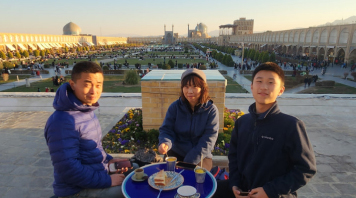
- Booked 186 Times
14-Day Cultural Tour of Iran
Mysterious Persian Odyssey
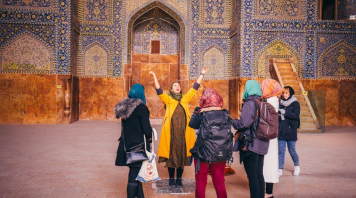
- Booked 133 Times
7-Day Cultural Tour of Iran
A Week to Remember
Flight search
- Adults Remove adult 1 Add adult
- Children Aged 2-11 Aged 2 to 11 Remove child 0 Add child
- Infants In seat Remove infant in seat 0 Add infant in seat
- Infants On lap Remove infant on lap 0 Add infant on lap
- Premium economy
Cheap flights to Tehran
Good to know, popular airports near tehran.
- (IKIA) Imam Khomeini International Airport (IKA) Tehran 46 min 37 km
When to visit
About tehran, frequently asked questions about flying to tehran, search more flights, more places to fly.
(+98) 935 -122 0038
Travel guide of tehran, capital of iran.
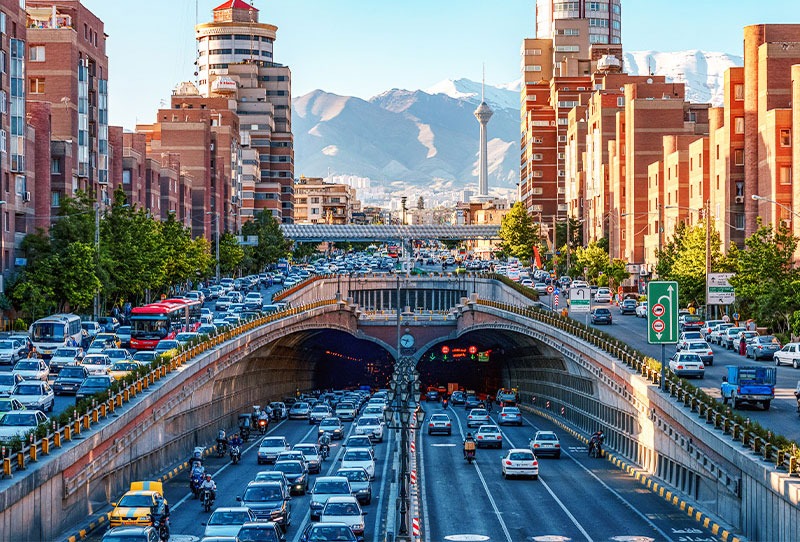
Table of Contents
Welcome to Tehran Travel Guide 2024! Explore Tehran, the vibrant capital of Iran, where history, culture, and modernity converge in a captivating blend. Nestled between majestic mountains and vast desert regions on the southern slopes of Alborz, Tehran boasts a unique setting at an elevation of 1190 meters. Once a humble village, it emerged into prominence, particularly during the Qajarid era. The towering Tochal peak influences the inviting climate, standing tall at 3950 meters. Join us on a journey through Tehran’s rich past and present, uncovering architectural wonders and diverse attractions that continually captivate visitors worldwide.
Let’s explore the vibrant story of Iran’s capital: Tehran.
During King Nasseraddin’s era, Tehran experienced a golden age of architectural brilliance, giving rise to awe-inspiring structures that still captivate us today. From the enchanting Golestan Garden with its splendid palaces to the graceful Sahib Qaraniyeh, the lavish Ferdwos, the regal Shams-ol Emareh Edifice, and the bustling Marvi Bazaars, each stood as a testament to the city’s magnificence. Old houses were replaced by new apartments, embracing urbanization. This not only changed the buildings but also how life works in Tehran.
Today, Tehran is a dynamic hub, Iran’s largest city divided into 22 sections. Globally, it’s 125th in size and 28th in population. Known for politics, economics, culture, and geography, Tehran attracts various pursuits.
Tehran has been a key hub of economic, human, and social capital for two centuries in Iran. Since the Constitutional Revolution, the city has experienced remarkable growth, making it stand out in the Middle East. Tehran’s Bazaars, located along 15 Khordad Avenue, are vibrant historical landmarks hosting treasures like the Imam Mosque and the Friday Mosque. The towering Azadi Tower, blending pre-Islamic and post-Islamic architectural elements, serves as a symbol of urban identity. Meanwhile, attractions like Imamzadeh Dawood, Niyavaran Palace-Museum, Darabad’s Wildlife and Natural Museum, and the delightful Eram Park continue to attract visitors.
Tehran Travel Guide : Climate

Tehran boasts over 800 well-maintained parks, making it a city of greenery. Situated nearly a mile above sea level, it enjoys a cooler climate compared to other Middle Eastern cities. Several factors contribute to Tehran’s appeal: the consistently cool and dry climate, the proximity of mountains, blooming flowers in parks and gardens year-round, tree-lined avenues and streets, and water flowing down from the upper city through deep gutters resembling small rivers in spring.
Tehran has a semi-arid climate with four distinct seasons, making it a year-round destination depending on your preferences.
Summers are hot and dry, with daytime temperatures between 30°C (86°F) and 40°C (104°F). Nights are somewhat cooler but still warm. Autumn offers mild and pleasant weather, perfect for outdoor activities, with daytime temperatures ranging from 15°C (59°F) to 25°C (77°F).
Winters are cold, especially at night, with occasional snowfall and temperatures dropping below freezing. This season attracts skiers to nearby mountain resorts.
Spring is the best time to visit, featuring mild temperatures, blooming flowers, and ample sunshine. Daytime temperatures vary from 10°C (50°F) to 20°C (68°F).
Tehran Travel Guide: Transportation

Navigating Tehran’s traffic can be challenging, but taxis are a reliable option, although a bit more expensive than in other parts of the country.
You can also use the extensive local bus network to reach almost any destination, provided you understand the routes and Persian line numbers.
The standout transportation option in Tehran is the recently built metro system.
Tehran Bus Services

Tehran’s Bus Rapid Transit (BRT) system is a reliable and popular mode of transportation in Iran. Women often prefer buses, considering them safer than taxis. While buses operate throughout the city, specific timetables and routes may not be readily available.
Bus stops, especially along Vali Asr Street, are well-marked and plentiful. If needed, you can ask a passerby for the nearest stop.
Daytime bus services are frequent, but they become more sporadic in the evenings (some buses stop running after 21:30) and on Fridays.
Make sure to purchase a ticket either at the kiosk or directly from the driver, paying at the end of your journey.
Female travelers may be required to exit the bus and approach the driver at the front to pay for the ticket
Tehran BRT Bus System

The Tehran Bus Rapid Transit (BRT) system, established in 2008, serves Tehran with a network spanning over 150 kilometers, catering to 1.8 million daily passengers.
With ten lines currently in operation and plans for expansion, the total length is expected to reach 300 kilometers. As of 2023, the fare for regular and express buses starts at 1,800 Iranian Rials (IRR) for the initial 2.5 kilometers, with an additional charge of 400 IRR for every extra 2.5 kilometers.
For convenience, BRT tickets are available as prepaid, rechargeable cards integrated with the Tehran Metro system. To obtain these electronic, credit-based tickets, you can visit the ticket sales booths at metro stations.
Recharging your BRT ticket is a straightforward process. While the booths may experience crowds, it’s advisable to use the machines within metro stations for a quicker experience. These machines accept bank credit cards for easy reloading. Additionally, you’ll find machines at the entrances of BRT stations for ticket recharging.
Tehran Metro services

Tehran’s metro, launched in 2000, has five lines connecting different parts of the city. A one-way trip costs 3,500 rials, and a return journey costs 5,500 rials, regardless of the distance.
For budget-friendly travel, consider using integrated travel passes, similar to London’s Oyster card. Get a card, load it with funds, and swipe in and out at station barriers for convenient regular train use.
Avoid rush hours (06:00-09:00 and 13:00-17:00). The carriages are gender-segregated, and signs are in Persian and English for a safe and efficient journey.
Though not as frequent as European metros, Tehran’s metro carriages are clean, and you can buy snacks from vendors along the way.
Check out and download the Tehran Metro map PDF for reference.
Tehran Taxi services

Getting around Tehran by taxi is simple and affordable. A shared taxi (savari) typically costs between 250,000 to 1,000,000 rials, while a private hire (darbast) can go up to 1,800,000 rials, depending on your destination.
Keep in mind that Tehran isn’t very pedestrian-friendly, so opting for a short Savari ride along Valiasr Street can save you a lot of energy.
Exploring Tehran with Rideshare Apps
For a cost-effective option, travelers are advised to use rideshare apps like SNAPP or TAP30, as they are often cheaper than regular taxis.
Getting Familiar with Tehran’s Airports
Tehran has two airports – Imam Khomeini International Airport , mainly for international flights, and Mehrabad Airpor t, typically used for domestic travel.
Imam Khomeini International Airport (IKA)

Getting to and from Tehran’s Imam Khomeini International Airport (IKA) can vary in duration based on transportation mode, traffic, and specific departure locations in Tehran.
Here are estimated travel times from IKA airport to some important places :
IKA to Azadi Stadium (West Tehran)
By car: 45 minutes to 1 hour (longer during peak traffic).
By public transport: No direct line; involves metro and shuttle or taxi (1.5 to 2 hours).
IKA to Tehran City Theater (Central Tehran)
By road: 1 to 1.5 hours, subject to traffic conditions.
By public transport: No direct line; involves metro and other transport (1.5 to 2 hours).
IKA to Lavizan Forest Park (North Tehran)
By car: 1 to 1.5 hours.
By public transport: Involves multiple modes, taking around 2 hours or more.
IKA to Milad Tower (North-central Tehran)
IKA to Espinas Palace Hotel (Northwest Tehran)
IKA to Parsian Esteghlal Hotel (North Tehran)
By public transport: No direct line; involves metro and transfer (1.5 to 2 hours).
IKA to Ferdowsi Hotel (Central Tehran)
By car: 1 to 1.5 hours (traffic dependent).
IKA to Qom City Center
By car: 1.5 to 2 hours (about 125 km south of Tehran).
By public transport: No direct route; bus or train to Tehran, then transfer (3 hours or more).
Mehrabad International Airport

Mehrabad International Airport, operational since 1938, once served as Tehran’s main airport for both domestic and international flights. While its international role has diminished with the rise of Imam Khomeini International Airport, Mehrabad remains a vital hub for domestic travel within Iran.
For travelers arriving from abroad or journeying within the country, both airports provide essential services and amenities.
Distance and Travel Time from Mehrabad Airport to Tehran City Center :
Distance: Approximately 10 to 12 kilometers, depending on the specific city center destination.
By Car : About 20-30 minutes.
By Public Transport :
Metro Station: Mehrabad Airport Station on Line 4 of Tehran’s metro system connects the airport to the city center.
Travel Time: Using the metro, it takes around 30-40 minutes to reach the city center. However, considering the potential waiting times for the next train, the total journey could be a bit longer.
Tehran Train Station:

established in 1927, serves as a central transportation hub easily accessible by metro and bus. It connects Tehran to various major cities, including Mashhad, Ahvaz, Tabriz, and Bandar Abbas. With proximity to Mehrabad Airport (13 km) and Imam Khomeini International Airport (45 km), the station offers convenient transitions between air and rail travel. Purchase your Iran train tickets effortlessly through the OrientTrips website, ensuring a smooth and efficient travel experience, whether exploring the city or venturing across Iran.
Tehran Travel Guide: Bus Terminals
- Azadi Terminal (West Tehran)
Azadi Terminal, inaugurated in 1996, stands as one of Tehran’s largest and busiest terminals. The second floor accommodates administrative offices, while the first floor is the ticketing hub for destinations like Ilam, Rasht, Kermanshah, Ardebil, Saveh, Shiraz, Mashhad, Sanandaj, Yazd, and international locations such as Istanbul, Batumi, Tbilisi, and Ankara.
Location: [Azadi Terminal on Google Maps]
- Tehranpars Terminal (East Tehran)
Established in 1981, Tehranpars Terminal is a prominent transportation hub in Tehran. Serving as a departure and arrival point, it facilitates travel to cities like Mashhad, Gorgan, Isfahan, Qom, Babol, Arak, Semnan, Amol, and more.
Location: [Tehranpars Terminal on Google Maps]
- Khazaneh Terminal (South Tehran)
Khazaneh Terminal, operational since 1974, is the oldest among Tehran’s terminals. It serves passengers traveling from southern cities, including Bushehr, Abadan, Isfahan, Khorramabad, Dezful, Shiraz, Shushtar, Hamedan, Yasuj, Shahroud, Asaluyeh, Arak, Semnan, Ardebil, Andimeshk, Ahvaz. It also offers routes to Turkey and Syria.
Location: Khazaneh Terminal on Google Maps
- Beyhaghi Terminal (Argentin Square)
Beyhaghi Terminal, inaugurated in 1991 at Argentin Square, provides bus tickets to cities like Rasht, Shahr-e Kord, Hamedan, Yazd, Chalus, Shabestar, Urmia, Ahvaz, among others, facilitating travel to these destinations.
Location: Beyhaghi Terminal on Google Maps
- Poonak Terminal
Poonak Terminal, located in the Poonak neighborhood, is the last on our list. With various travel agencies housed here, it’s a convenient choice for those planning trips to northern Iran. The terminal offers a waiting area where you can relax while awaiting your journey.
Location: Poonak Terminal on Google Maps
These five terminals play a crucial role in connecting travelers to Iran’s diverse regions. Whether you’re after the historic charm of Isfahan, the lush greenery of Gilan, or the ancient wonders of Shiraz, these terminals will set you on your way.
For more information about traveling in Tehran and throughout Iran, explore our tours of Iran website for the latest updates and travel tips.
Tehran Travel Guide: How to get to Tehran
Tehran, the vibrant capital of Iran, offers diverse experiences for travelers, but navigating its size and traffic can be a challenge. This guide provides travel tips for a hassle-free journey.
Traveling to Tehran by Air
Flying is a quick and convenient option to reach Tehran, served by Imam Khomeini International Airport and Mehrabad Airport. However, if you’re closer or in neighboring provinces, alternative transportation may be more cost-effective.
Approximate durations of flights to Tehran from various cities:
Tabriz to Tehran: Approx. 1 hour
Isfahan to Tehran: Approx. 1 hour
Shiraz to Tehran: Approx. 1 hour and 30 minutes
Mashhad to Tehran: Approx. 1 hour and 30 minutes
Bandar Abbas to Tehran: Approx. 1 hour and 45 minutes
Traveling to Tehran by Train
Train travel offers an enjoyable journey to Tehran, with the central Tehran Railway Station serving as a hub.
Approximated train journey durations to Tehran from diverse cities:
Isfahan to Tehran: Approx. 8 to 9 hours
Mashhad to Tehran: Approx. 10 to 12 hours
Tabriz to Tehran: Approx. 12 hours
Shiraz to Tehran: Approx. 15 to 16 hours
Bandar Abbas to Tehran: Approx. 18 to 20 hours
Journeying to Tehran via Bus
For a budget-friendly option, consider traveling to Tehran by bus, with several major terminals connecting to destinations across Iran.
Estimated bus travel times to Tehran from different cities:
Isfahan to Tehran: Approx. 4 hours and 50 minutes to 5 hours
Tabriz to Tehran: Approx. 7 to 8 hours
Shiraz to Tehran: Approx. 10 to 11 hours
Mashhad to Tehran: Approx. 11 to 12 hours
Bandar Abbas to Tehran: Approx. 14 to 15 hours
Traveling to Tehran via Personal Vehicle
For flexibility, many choose to drive to Tehran, allowing exploration at their own pace.
Estimated travel times by personal vehicle to Tehran from different cities:
Note: These times are approximate and may vary based on factors like road conditions and traffic. Tehran offers diverse experiences for travelers eager to explore its vibrant culture and history.
Tehran Travel Guide: Explore Tehran’s Highlights
For those looking to uncover Tehran’s gems, here’s a guide to its must-see attractions.
Golestan Palace:

Built in the late 1700s during the Qajar Dynasty, Golestan Palace stands as a luxurious World Heritage Site. The focal point is a meticulously landscaped garden with serene pools. The structures you see today mostly originate from the 19th century, showcasing a captivating fusion of traditional Persian architecture with Western and Russian influences. These palace buildings, among Tehran’s oldest, are hailed as masterpieces of the Qajar era.
National Museum of Iran:

Discover a rich history at the National Museum of Iran, home to an extensive collection featuring ceramics, stone figures, and carvings dating as far back as the 5th millennium BC. These artifacts, excavated from sites like Persepolis, Shush, Ray, and Turang Tappé, add an extra layer of fascination, especially if you’ve explored these archaeological wonders firsthand. Azadi Tower:

A timeless symbol of Tehran, the Azadi Tower was erected to mark the 2,500th anniversary of the Persian Empire, blending Sassanid and Islamic architecture. Whether you’re a history buff, art enthusiast, or culture seeker, Tehran offers something for everyone.
Quick Facts About Azadi Tower:
Height: About 50 meters (164 feet) Architectural Competition: Chosen from 700 designs, Hossein Amanat’s winning design fuses traditional Persian and modern architecture. Cultural Fusion: Reflects both traditional Iranian styles and 1960s-70s modern techniques, symbolizing Iran’s rich history and modern aspirations. Inside the Arch: The hollow arch allows visitors to ascend for a panoramic view of Tehran. Tower Dimensions: The base covers about 45,000 square feet, with the main vault reaching a height of approximately 36 meters. Monumental Occasion: Inaugurated in October 1971 for the 2,500th anniversary of the Persian Empire, attracting global dignitaries. Cultural Reference: Featured in films, documentaries, and literature, emphasizing its cultural and symbolic significance. Place of Gathering: The square surrounding Azadi Tower has hosted various events, from celebrations to protests, shaping Iran’s socio-political landscape.
Tehran Grand Bazaar:

Indulge in the vibrant atmosphere of Tehran’s Grand Bazaar. From spices to carpets, it’s a treasure trove for shopping enthusiasts.
Tabiat Bridge: Where Nature Meets Design

the Nature Bridge lives up to its name with a unique steel-tree design. Surrounded by charming parks on either side, this bridge provides panoramic views, inviting restaurants, cozy tea houses, and even an ice cream parlor. It’s an ideal spot for a relaxed stroll and a bit of people-watching. Niavaran Palace Complex: Niavaran Palace showcases Persian architecture and served as the residence of the last Shah. Wander through its opulent halls and scenic gardens.
Sa’dabad Complex:

Once the venue for the Pahlavi Dynasty’s coronations and weddings, Saadabad Palace witnessed historical moments, including the last Shah’s departure during the 1979 Islamic Revolution. Transformed into a museum, it showcases a diverse collection of period furniture, decor, and personal belongings that once belonged to the last Shah.
Tajrish Bazaar:
Experience local life at Tajrish Bazaar. Stroll through its narrow alleys, savor local treats, and shop for authentic souvenirs.
Milad Tower:

Known as Tehran Tower, Milad Tower is the sixth-tallest tower globally and the 17th-tallest freestanding structure. Its soaring height of 435 meters (1,427 ft) and modern design make it a captivating feature in Tehran’s skyline.
Quick Facts About Milad Tower:
Height: 435 meters (1,427 ft) Completion Date: 2007 Location: Between the Shahrak-e Gharb and Gisha districts of Tehran Function: Multipurpose – Observation, Telecommunication, Restaurant, Museum, and more.
For a nature escape, head to Darband. A picturesque hiking trail with charming teahouses awaits, offering a refreshing break from the city.
This guide ensures you make the most of your visit, capturing Tehran’s cultural, historical, and natural wonders.
Tehran Travel Guide: Unmissable Activities
Tehran, Iran’s vibrant capital, invites travelers to a variety of exciting activities and attractions. Whether you’re into thrilling ski adventures or exploring historical bazaars, Tehran has something for everyone:
1. Tochal Ski Resort

Location: Tochal Peak Nestled on Tochal Peak, Tochal Ski Resort promises an exhilarating skiing experience. Despite historical events limiting its size, the active ski piste on the peak provides fantastic skiing opportunities. Recognized as an ‘International Ski Resort,’ it hosts various international snowboarding competitions.
2.Darbandsar Ski Resort

Situated in Darbandsar Village, approximately 60 kilometers northeast of Tehran.
Founded by retired professional skiers in 1982, Darbandsar Ski Resort is a private company-run destination. Located in the serene Darbandsar village, it offers a peaceful environment for skiing away from the city’s hustle and bustle.
3. Dizin Ski Resort

Location: North of Tehran As Iran’s most significant ski destination, Dizin Ski Resort holds the distinction of being the first in the country recognized by FIS as an International Ski Resort. Whether you’re a seasoned skier or a beginner, Dizin provides excellent slopes and stunning views.
4. Shemshak Ski Resort

Position: Shemshak Village, situated 57 kilometers northeast of Tehran.
Situated in Shemshak village, this resort offers a unique blend of adventure and relaxation. With two hotels, four restaurants, and altitudes ranging from 2550 m to 3050 m, Shemshak caters to both athletes and nature lovers.
5. Location: Darakeh

For a nature break, the Darakeh Mountain Route offers a scenic hiking trail alongside a stream, surrounded by open-air restaurants. To reach Darakeh, contemplate utilizing a taxi or minibus departing from Tajrish Square. Perfect for outdoor enthusiasts looking to escape the city.
Tehran Travel Guide: accommodation
If you’re in search of a comfortable stay in Tehran, we’ve curated a list of top accommodation options for you. Easily explore and book through the OrientTrips website, receiving your hotel voucher instantly. Here are some top choices:
Top 5-Star Hotels In Tehran:
Espinas Palace Hotel
Address: No. 33, 56th Alley, Alvand Street, Tehran, Iran. Highlights: Luxury and elegance, panoramic views, indoor pool, spa, fine dining.
Parsian Azadi Hotel
Location: Evin Intersection, Chamran Highway, Tehran, Iran Highlights: Traditional Iranian hospitality, modern luxury, proximity to the Exhibition Center, and diverse gastronomic experience.
Tehran Homa Hotel
Location: No. 51, Shahid Khodami St, Tehran, Iran Highlights: Serene atmosphere, excellent service, outdoor swimming pool, sauna, fine dining.
Remis Airport Hotel Tehran
Location: Opposite Terminal 1, IKIA, Tehran, Iran Highlights: Conveniently located, modern design, fitness center, diverse culinary offerings.
Esteghlal Hotel
Location: Crossroad of Chamran Highway & Valiasr St, Tehran, Iran Highlights: Oldest and most famous luxury hotel, near business districts, various restaurants, fitness center, spa.
Parsian Englebal Hotel
Location: 32 Baharestan Square, Tehran, Iran Highlights: Modern and traditional design, elegant ambiance, swimming pool, sauna, Persian cuisine.
Wisteria Hotel
Location: Darband Street, Tehran, Iran Highlights: Unique luxury hotel, northern Tehran, stunning views, spa treatments, indoor swimming pool, fine dining.
Top 4-Star Hotels in Tehran:
Ferdowsi International Grand Hotel
Location: No.24, Kooshk Mesri St., Ferdowsi Ave., Tehran, Iran Highlights: Central location, easy access to shopping centers, swimming pool, gym, diverse dining options.
Howeyzeh Hotel
Location: Nejatollahi St, Tehran, Iran Highlights: Central and affordable, fitness center, free WiFi, in-house restaurants with Iranian and international cuisines.
Tehran Grand Hotel
Location: Valiasr Square, Tehran, Iran Highlights: Well-equipped 4-star, modern amenities, near the business district, business center, gym, and various restaurants.
Niloo Hotel
Location: Ostad Nejatollahi St, Tehran, Iran Highlights: Quiet neighborhood, cozy ambiance, fitness center, café, in-house restaurant serving Persian cuisine.
Parsian Kowsar Hotel
Location: Valiasr St, Tehran, Iran Highlights: Blend of Iranian hospitality and modern amenities, near Valiasr Street, comfortable rooms, diverse dining options.
How useful was this post?
Click on a star to rate it!
Average rating 5 / 5. Vote count: 2
No votes so far! Be the first to rate this post.
About the Author
Mohammad Hesani
A professional tour guide from Yazd, a world heritage site famed for its architecture. With a master's in Tourism Marketing, he has diverse experience in hotels, teaching, and travel agencies. Since 2016, Mo has dedicated himself to guiding tours, driven by his passion for history and culture. He loves meeting people and sharing his country's rich heritage
One thought on “ TRAVEL GUIDE OF TEHRAN, CAPITAL OF IRAN ”
Leave a reply cancel reply.
Your email address will not be published. Required fields are marked *
Our EXPERTS

Sori Hasanzadeh
Recent posts.
- Ghasabeh Qanat
- Parau Cave: The Everest of Caves in Iran
- Explore the Ganjali Khan Complex in Kerman
- PROPHET ZOROASTER & ZOROASTRIANISM IN IRAN
- Top 20 Persian cuisines
Related posts

Sa’d Abad Historical Complex

Things to Know Before Traveling to Iran
Why travel to iran.

Iran Travel and Tours from Australia [2024]
Explore beautiful villages in iran.

Travel Insurance for Iran Ultimate Guide
We use essential cookies to make our site work. With your consent, we may also use non-essential cookies to improve user experience and analyze website traffic. By clicking “Accept,” you agree to our website’s cookie use as described in our Cookie Policy .”In addition, you can change or withdraw your consent at any time by clicking “Cookie Settings” under the Article 3.2 of “Cookie Policy”.
Iran wants Israelis to worry that Hezbollah has a rare and powerful EMP weapon
- Iranian operatives recently claimed they given Hezbollah militants an EMP weapon.
- A powerful EMP, as Iran claims, could damage Israel's communications and power grid.
- "It is reasonable to assume that Iran has looked at these types of weapons," a retired general said.

Amid the tit-for-tat shelling and threat-trading across the Israel-Lebanon border, one recently leveled menace stands out — that Hezbollah has a weapon capable of knocking out Israel's electrical grid.
Reports have circulated among Arab media that Iran has given the Lebanese militant group it arms and trains a category of weapons that could damage much more than military bases, a type of weapon known as an electromagnetic pulse weapon or EMP. It could be real, or a bluff to get nuclear-armed Israel to think twice.
Sources in the Quds Force — a part of Iran's Islamic Revolutionary Guard Corps — allegedly told Kuwaiti newspaper Al-Jarida that "the Lebanese party now possesses bombs and missiles carrying explosive 'electromagnetic' warheads."
The source said that "the bombs delivered to the party [Hezbollah] could be launched from fixed launchers, and some of them could be carried by drones to reach any point deep inside Israel." These weapons "could destroy all communications systems, including the electrical infrastructure, and thus halt all electronic systems that Israel relies on to coordinate its radars, aircraft, and forces in general."
Nor would Israel's allies be immune should Israel attack Lebanon. The Americans, British and "and everyone who might try to cover up Israel's inability" would be targeted. The story was quickly picked up by Israeli media .
Assessing the credibility of the Iranian EMP threat is difficult. If oil is Iran's top export, then its number two export is bluster to the world about supposedly cutting-edge military capabilities, including a "stealth fighter" unveiled in both 2013 and 2017 that was likely neither stealthy nor flyable. One reason for the posturing is to conceal the fact that Iran's conventional military equipment, such as jets, tanks and anti-aircraft missiles, are decrepit Cold War-era systems that would be hopelessly overmatched by US, Israeli and European weapons.
Related stories
However, Iran has spent years investing in the development of nuclear weapons (whether research has stopped as Iran claims, or continues as Israel and some Americans claim, is a matter of contentious debate). It has demonstrated genuine capabilities in developing a variety of ballistic missiles and drones, with Tehran exporting its Shahed-136 attack drone to Russia. All of which suggests that Iran has the means to hit Israel and Europe, but it doesn't tell us whether the EMP warheads themselves exist.
Or, what kind of EMP weapons they would be. When electromagnetic pulse weapons are mentioned in the news, or in apocalyptic movies and novels, they tend to be of the nuclear kind, generated either as a byproduct of nuclear weapons aimed at targets such as cities, or deliberately detonating nuclear weapons in space to generate EMP effects. Either way, the result would be the total disruption of the modern lifestyle as the spreading pulse fries circuits in the electrical grid, damages communications and other satellites, and disrupts global cell phone and GPS service.
However, there are also non-nuclear EMP weapons (NNEMP), devices that can be carried in a suitcase or a missile's warhead, and that use explosives or high-power microwave emitters to generate a destructive pulse is similar that of a nuclear weapon, "except less energetic and of much shorter radius," explained the US government's EMP Task Force on National and Homeland Security in a 2021 report .
"NNEMP weapons can be built relatively inexpensively using commercially available parts and design information available on the internet. EMP simulators that can be carried and operated by one man, and used as an NNEMP weapon, are available commercially." Nuclear EMP pulses can travel hundreds of miles depending on their altitude of detonation, while NNEMP devices only have ranges of about 5 miles.
Iran does have a nuclear program, and probably could build a nuclear EMP weapon if it wanted to. The 2015 nuclear deal Iran's nuclear weapons program in return for lifted sanctions. But the Trump administration withdrew from the agreement amid fears that the Joint Comprehensive Plan of Action agreement failed to address other issues, such as Iranian ballistic missiles and support for terrorism, and that Iran could have still covertly develop nuclear weapons. Since then, Iran has periodically enriched its uranium stockpile, a necessary step in building nuclear weapons.
However, an Iranian nuclear device — whether intended solely for EMP effects or not — could trigger a host of consequences, especially by inducing Israel to make good on its threat to launch a strike against Iranian nuclear facilities (and with American forces joining in, Jerusalem hopes). But a non-nuclear EMP weapon might enable Iran to sidestep any red lines.
"I think it is reasonable to assume that Iran has looked at these types of weapons, either through their own proliferation efforts or through their growing linkages and relationships with Russia, China and North Korea," retired Gen. Joseph Votel, former head of US Central Command, told Business Insider.
"I do believe they would look at EMP as a weapon that could be employed in 'gray zone' activities below the level of open conflict," said Votel, now a senior fellow at the Middle East Institute, a Washington-based think tank. "Especially if it could be employed with more targeted results, like knocking out electronics in a specific geographic area."
But this raises another question: would Iran give EMP weapons to Hezbollah , its most important proxy? "Of all members of the so-called Axis of Resistance, Hezbollah would be a likely candidate to receive these types of weapons," Votel said. "But I have not seen any evidence that this is the case. Like most special capabilities, there is a level of training and sophistication that must accompany its deployment."
Given the small size of Israel — about the size of New Jersey — it wouldn't take that many EMP devices to cause serious harm. At the least, a few non-nuclear EMP bombs over Northern Israel would hamper Israeli military and civil communications and facilitate a surprise Hezbollah attack. A large-scale attack, by contrast, could trigger enough outages to dent Israel's half-trillion-dollar annual economy.
But this would also run the risk that Israel would treat it as an attack by weapons of mass destruction, similar to a nuclear or chemical weapons strike. Israel is believed to have almost 100 nuclear weapons, and Hezbollah EMP weapons could be viewed as a WMD strike by Iran, which already launched hundreds of missiles and drones at Israel in an April 2024 attack. It's also possible that Israel would reply in kind with its own EMP strikes that blackout southern Lebanon or even Beirut.
The common denominator of Iranian security policy is to use proxies like Hezbollah to expand Iran's influence and undermine its enemies, but without triggering an attack on the Iranian homeland. Giving EMP weapons to Hezbollah would risk the possibility that Israel and other nations would hold Iran responsible.
Michael Peck is a defense writer whose work has appeared in Forbes, Defense News, Foreign Policy magazine, and other publications. He holds an MA in political science from Rutgers Univ. Follow him on Twitter and LinkedIn .
Watch: How the Iranian-backed Houthi militia compares to the US-led task force in the Red Sea
- Main content

COMMENTS
From the ancient Persian Empire to the Zoroastrians temples, the countless mosques, and even the modern cities like Tehran, there is so much to see that one visit will not be enough. After traveling to Iran on Intrepid Travel's 14-day Iran Adventure trip, I shared my experience with many of my friends. Most of them replied with a similar ...
Iran Travel Advisory
Tehran, Iran Telephone: (98) (21) 2254-2178 and (98) (21) 2256-5273 Emergency Telephone: (41) (58) 465-3333 Fax: (98) (21) 2258-0432 Email: [email protected] ... U.S. citizens who travel to Iran despite the Travel Advisory should exercise caution throughout the country, but especially in the southeastern region where foreigners have been ...
There's a lot of Customs to Follow. You Need a Visa for Iran. You Need to Dress Appropriately. Females. Males. Have a Head Scarf in Your Carry-On Luggage Before Arrival. Bring a Phrase Book or Have Google Translate on Your Phone. Bring a Lot Of Cash. The Currency Has Two Names.
If you choose to travel to Iran against FCDO advice, research your destinations and get appropriate travel insurance. Insurance should cover your itinerary, planned activities and expenses in an ...
Iran Travel Advice & Safety
Travel advice and advisories for Iran
Middle East. Hugging the lower slopes of the magnificent, snowcapped Alborz Mountains, Tehran is Iran's most secular and liberal city. Spend time here - as you should - and you'll soon realise that the city is so much more than a chaotic jumble of concrete and crazy traffic blanketed by a miasma of air pollution. This is the nation's ...
The most economical way to travel to Tehran is using a bus. You can get to Tehran from anywhere in Iran on a bus. However, although riding a train is the safest option, many passengers choose the bus because it is faster, and there are plenty of VIP buses from different parts of Iran to Tehran.
Iran | Travel Advice | Department Of Foreign Affairs
Check out my Iran itinerary for 1-4 weeks. Tehran Travel Guide Table Of Contents. A Two Day Tehran Itinerary. Day 1: Palaces, Mosques & Bazaars. Day 2: Revolution, Propaganda & History. Where To Stay In Tehran. Getting Around In Tehran. Getting In & Out of Tehran.
All Iranian nationals must enter and leave Iran using an Iranian passport. If you want to travel to the UK from Iran, you may also need to prove to the Iranian authorities that you have the right ...
Tehran Travel Guide: best tourist attractions, Tehran day tours, travel tips for transportation, food and safety, including my personal experiences. Traveling to Tehran was always something I dreamed about. Iran is like nowhere else on the planet. And I would say the same about Tehran. It's a city like no other city in the world.
Explore Tehran, the heart of Iran, through our detailed Tehran Travel Guide. This city, a fascinating amalgamation of modern advancements and rich historical tapestries, showcases everything from soaring skyscrapers to ancient palaces. Dive into Tehran's cultural depth, savor the flavors of Persian cuisine, and wander the lively bazaars.
You can book trains through the hotels, local agencies or go directly to the train station. The price for a ticket from Tehran to Yazd, for example, is between 30,000 to 70,000 Tomans ($8 to $15). Private car. You have two options to travel in Iran by a private car.
All international travelers should be fully vaccinated against measles with the measles-mumps-rubella (MMR) vaccine, including an early dose for infants 6-11 months, according to CDC's measles vaccination recommendations for international travel. Dogs infected with rabies are commonly found in Iran.
Tehran city is the capital city of Iran. It is among the fastest-growing destinations for tourists. When you plan to travel to Iran, it is hard to ignore visiting Tehran city and the whole Tehran tourism potentiality.. If you happen to travel to Iran, it should be noted that Tehran City is the most populous city in Iran and the second in the Middle East.
It's important to know that food is subsidized in Iran and prices are "locked.". So, no matter where you go, a Coca-Cola will cost from 15,000 to 30,000 rials ($0.15 to $0.30), food will be between 100,000 to 500,000 rials ($1.00 to $5.00), water will be roughly 20,000 Rials (about $0.20).
IRANSAFAR TOURS is an Iranian tour operator and travel agency with 25 years of experience with tourism in Iran. We offer a wide range of travel service to those who wish to travel to Iran: Iran visa, Iran tours, accommodation in Iran, Flights, train, Bus, Travel insurance, Guides, Driver guides, etc. if you are planning to travel to Iran, join our experienced team to visit the most popular ...
Tehran's culture cannot be defined so easily. Your Tehran travel guide might miss out on many essential things. And this is because of Tehran's diversity. Religion. Tehran is Iran's most secular and liberal city, with a booming young population whose lifestyles might remind you of the lifestyles of the citizens of a European city.
If you are planning to visit Iran, consider these key points: Visa Requirements: US citizens must obtain a visa through an Iranian tour operator.; Currency: Due to US trade restrictions, international credit and debit cards do not work in Iran. Travelers should use cash or local financial options like the OrientTrips Tourist Card.; Tour Guide Requirement: A tour guide is mandatory for US ...
1 stop. from $618. Tehran.$623 per passenger.Departing Sun, Nov 10, returning Sun, Nov 17.Round-trip flight with Fly Play and Pegasus Airlines.Outbound indirect flight with Fly Play, departing from Baltimore Washington International on Sun, Nov 10, arriving in Imam Khomeini International.Inbound indirect flight with Pegasus Airlines, departing ...
Use Google Flights to find cheap departing flights to Tehran and to track prices for specific travel dates for your next getaway.
For a budget-friendly option, consider traveling to Tehran by bus, with several major terminals connecting to destinations across Iran. Estimated bus travel times to Tehran from different cities: Isfahan to Tehran: Approx. 4 hours and 50 minutes to 5 hours. Tabriz to Tehran: Approx. 7 to 8 hours.
It has demonstrated genuine capabilities in developing a variety of ballistic missiles and drones, with Tehran exporting its Shahed-136 attack drone to Russia. All of which suggests that Iran has ...
Iran has delivered ballistic missiles to Russia, the Wall Street Journal reported on Sept. 6, a move the U.S. has described as a "dramatic escalation" in Tehran's support for Moscow's full-scale war against Ukraine. The White House said it was "alarmed" by reports of the transfer, but what the